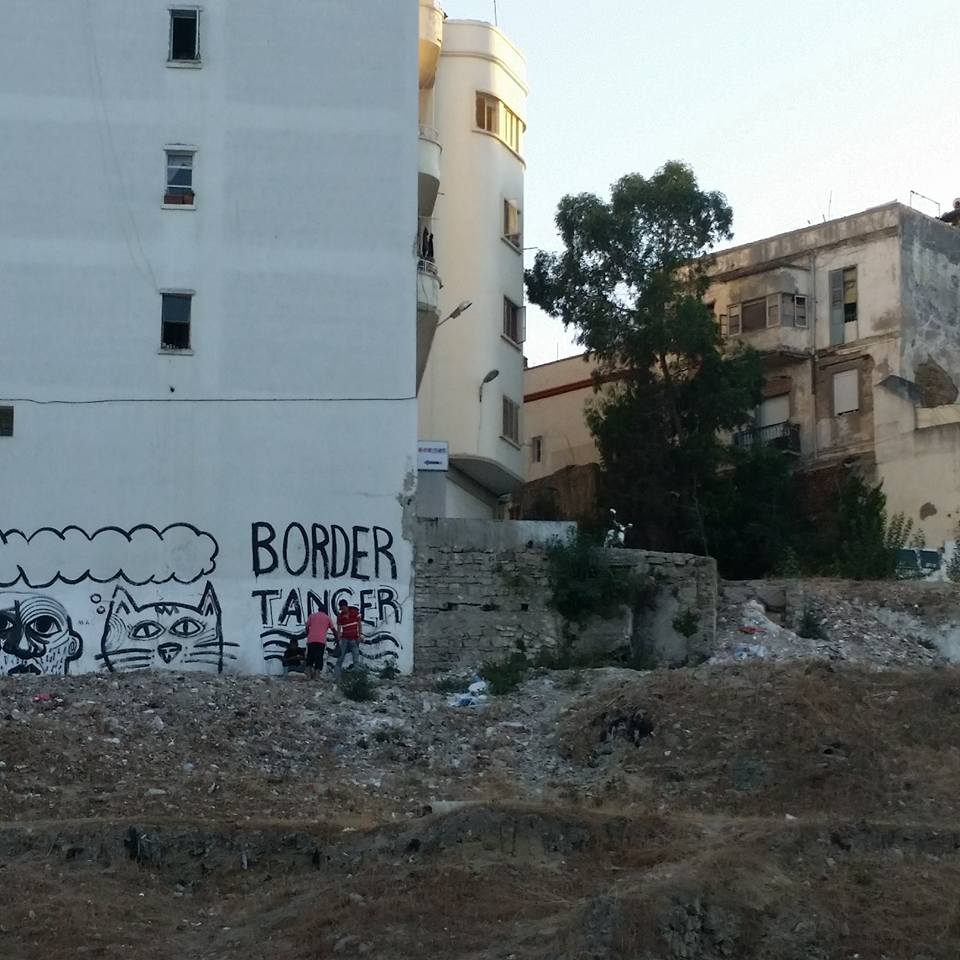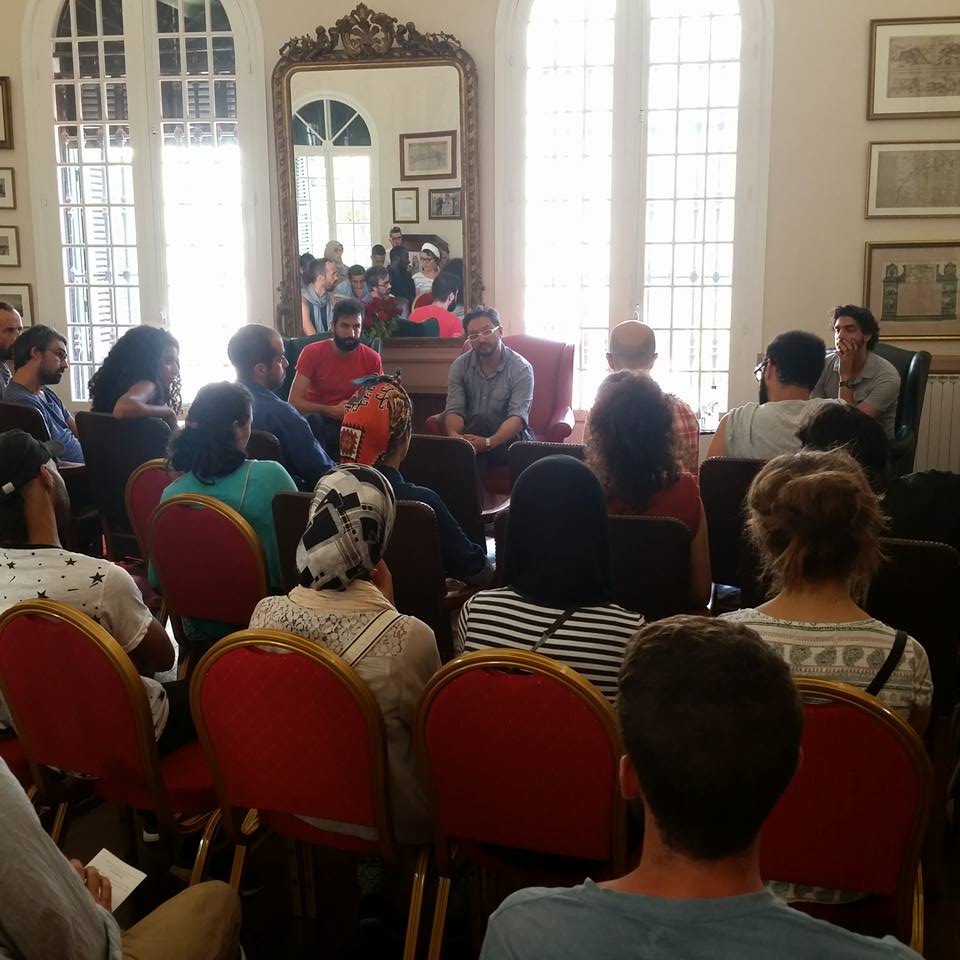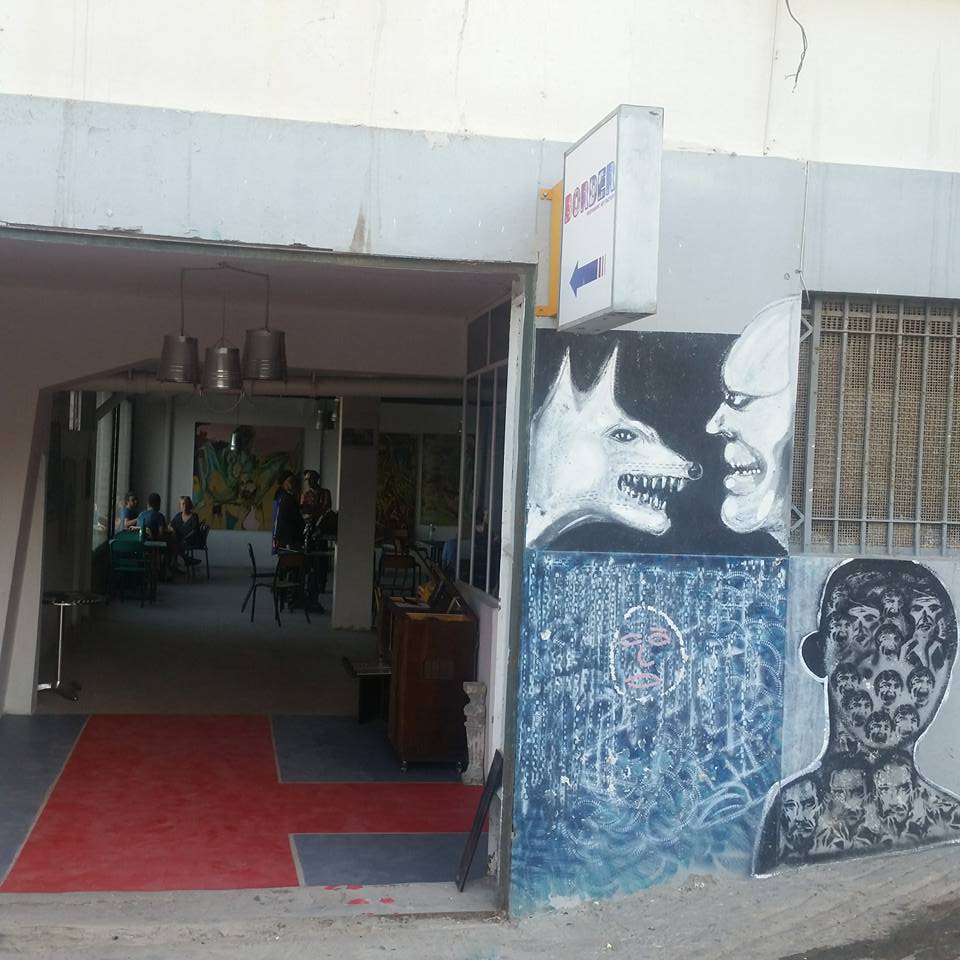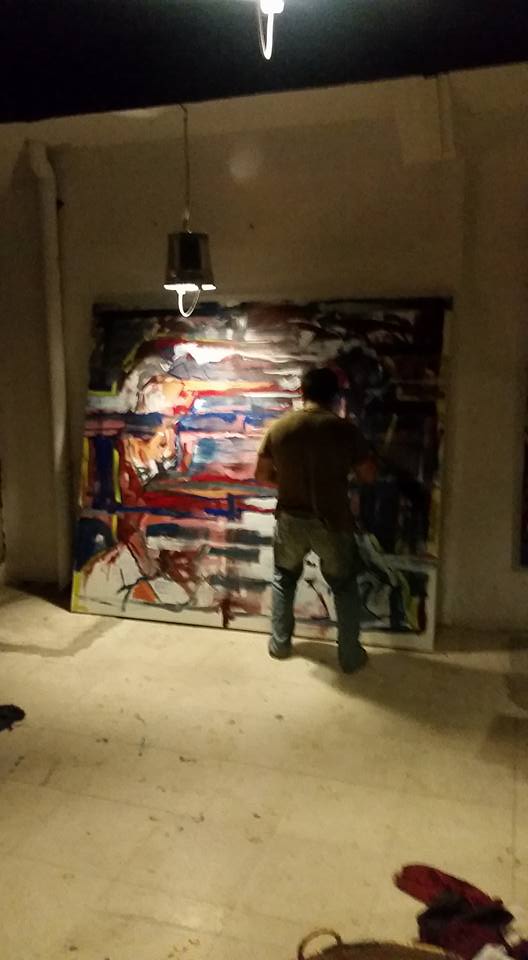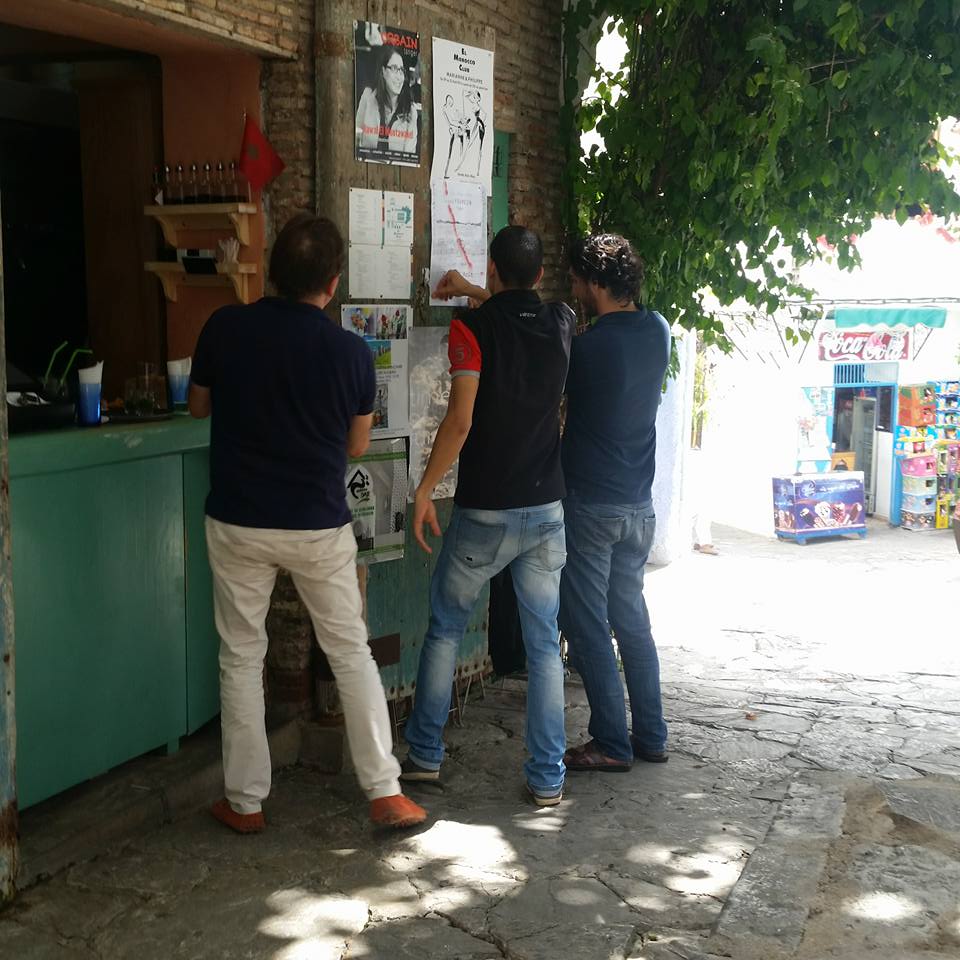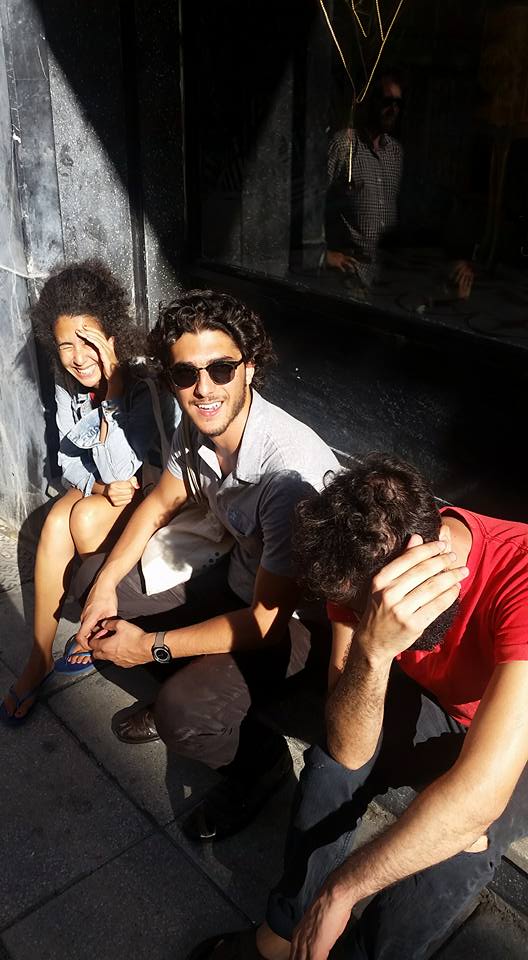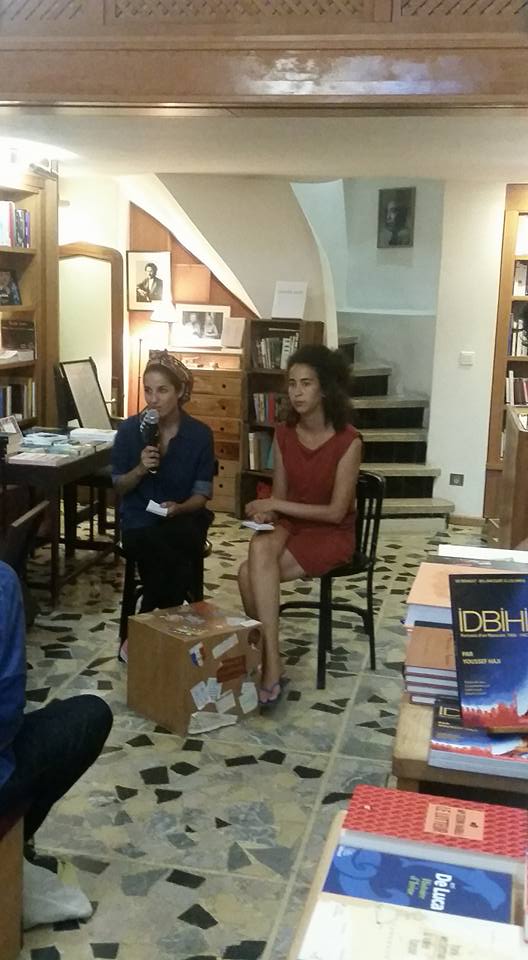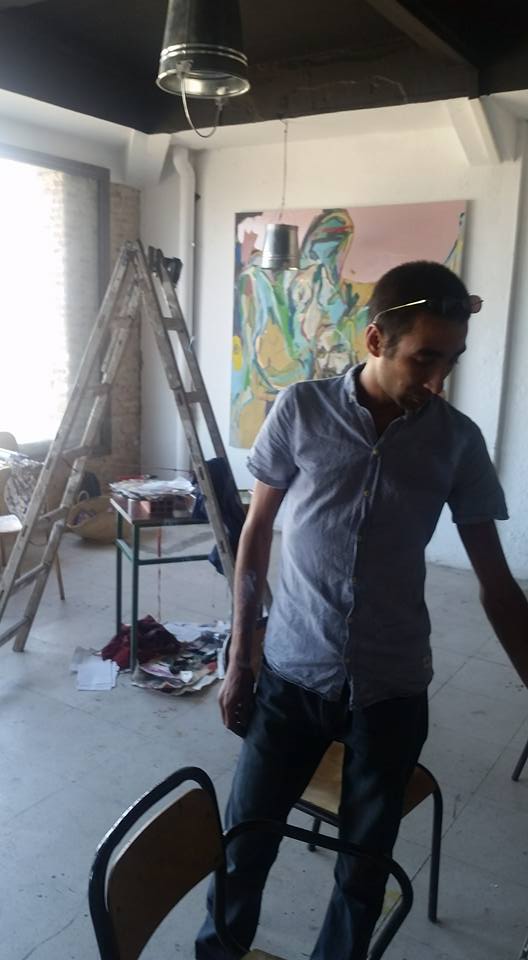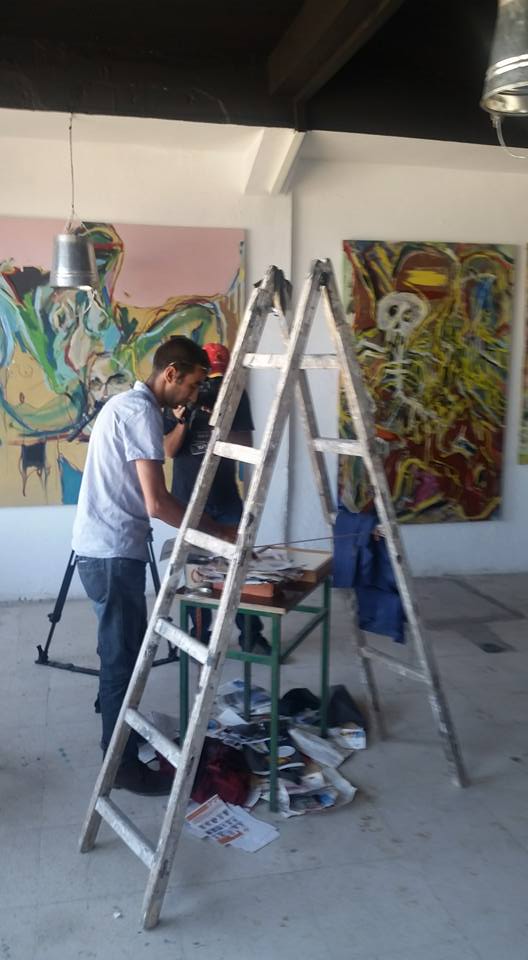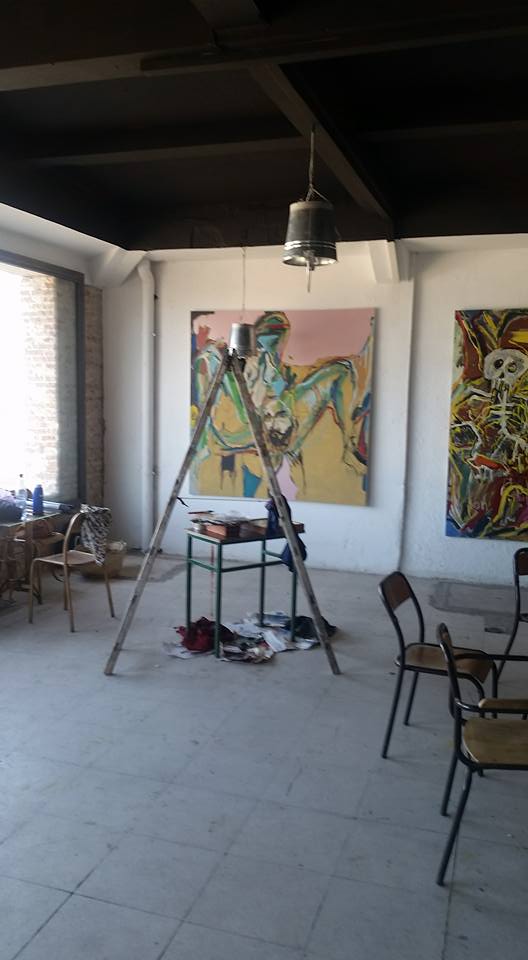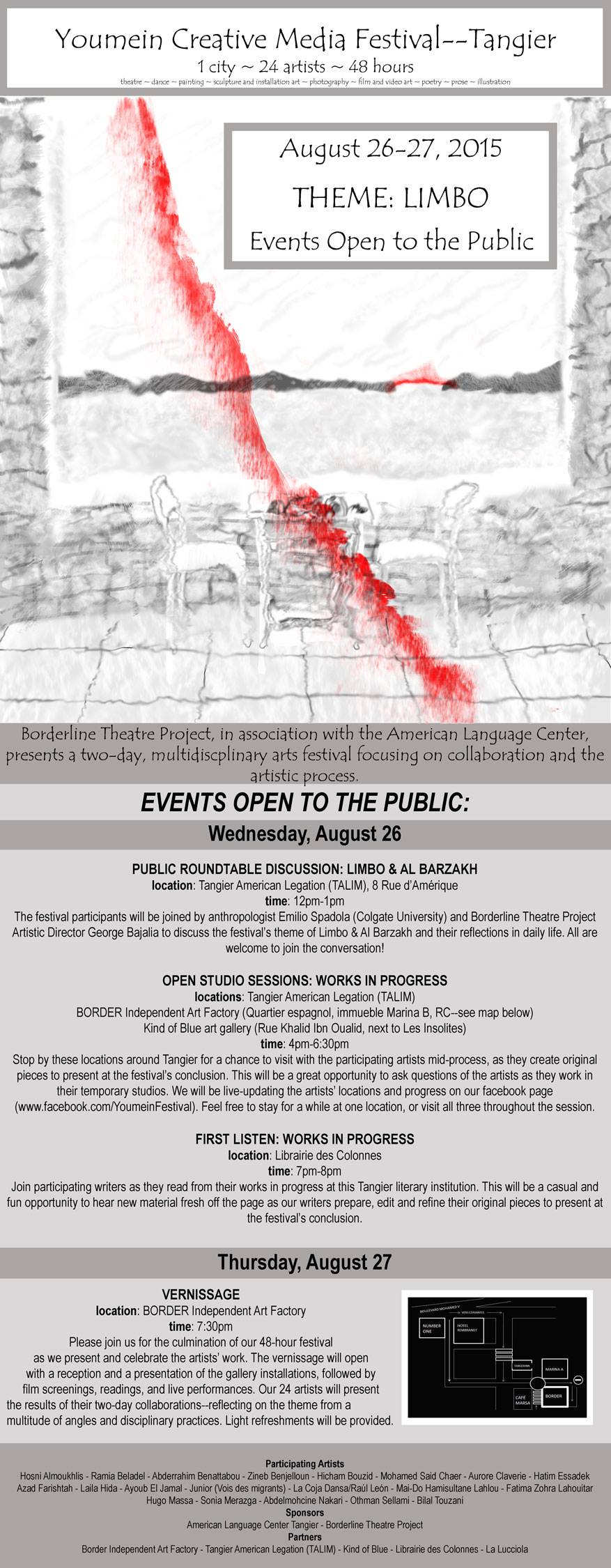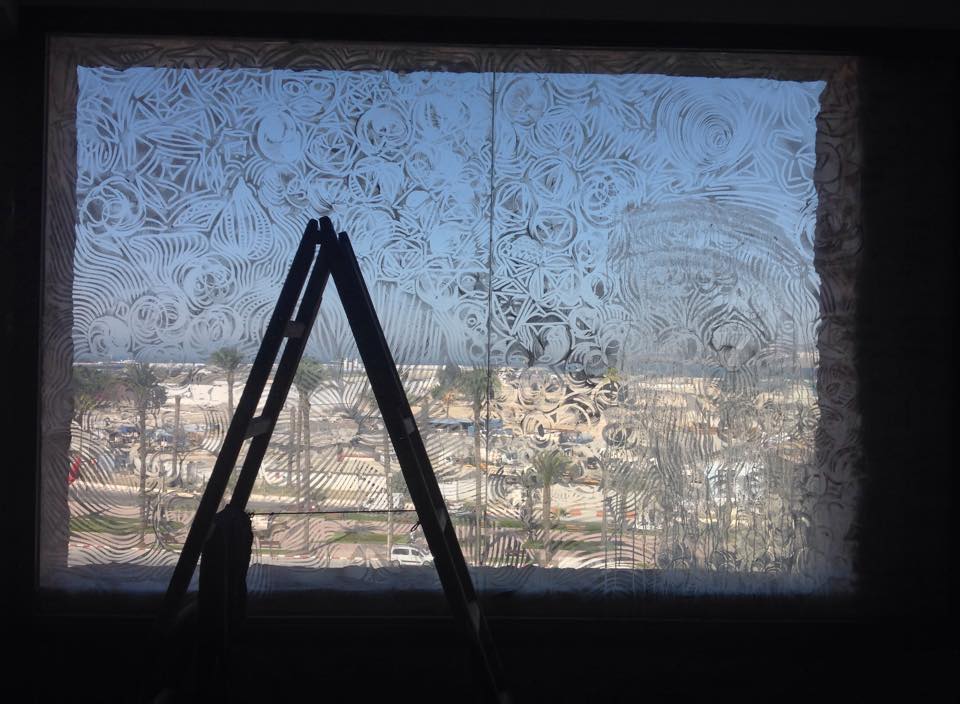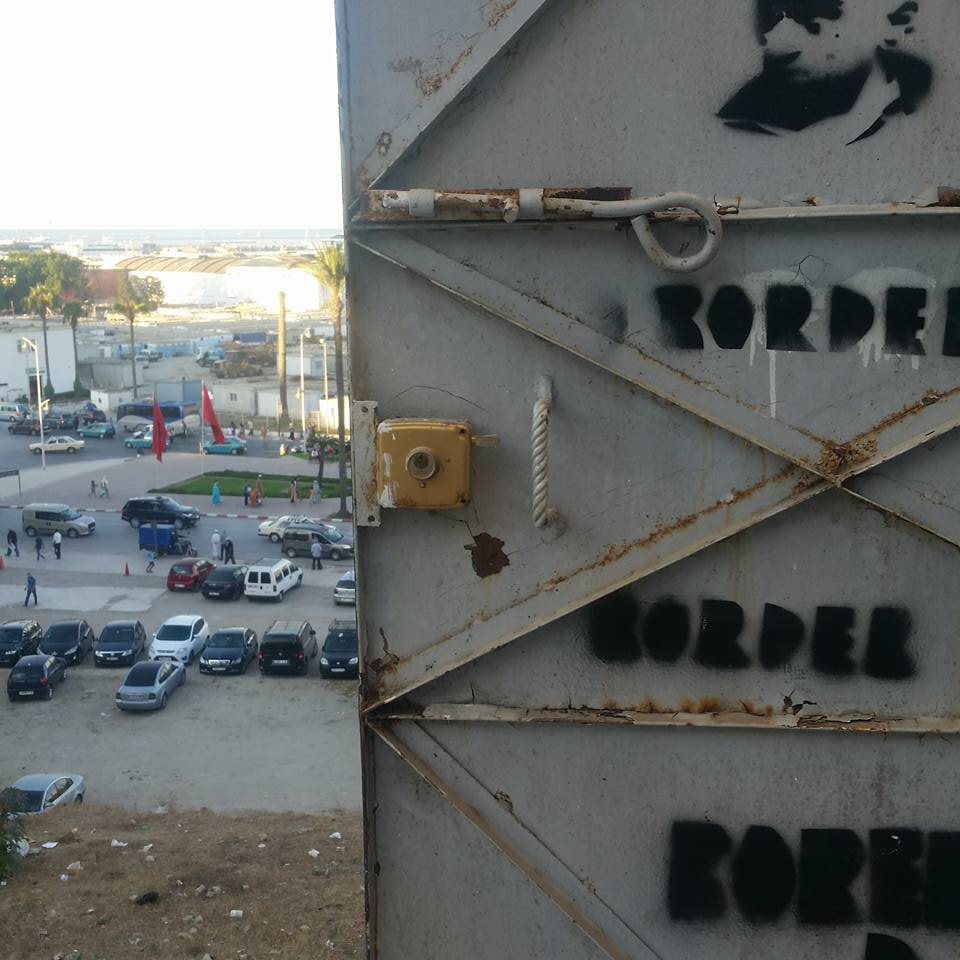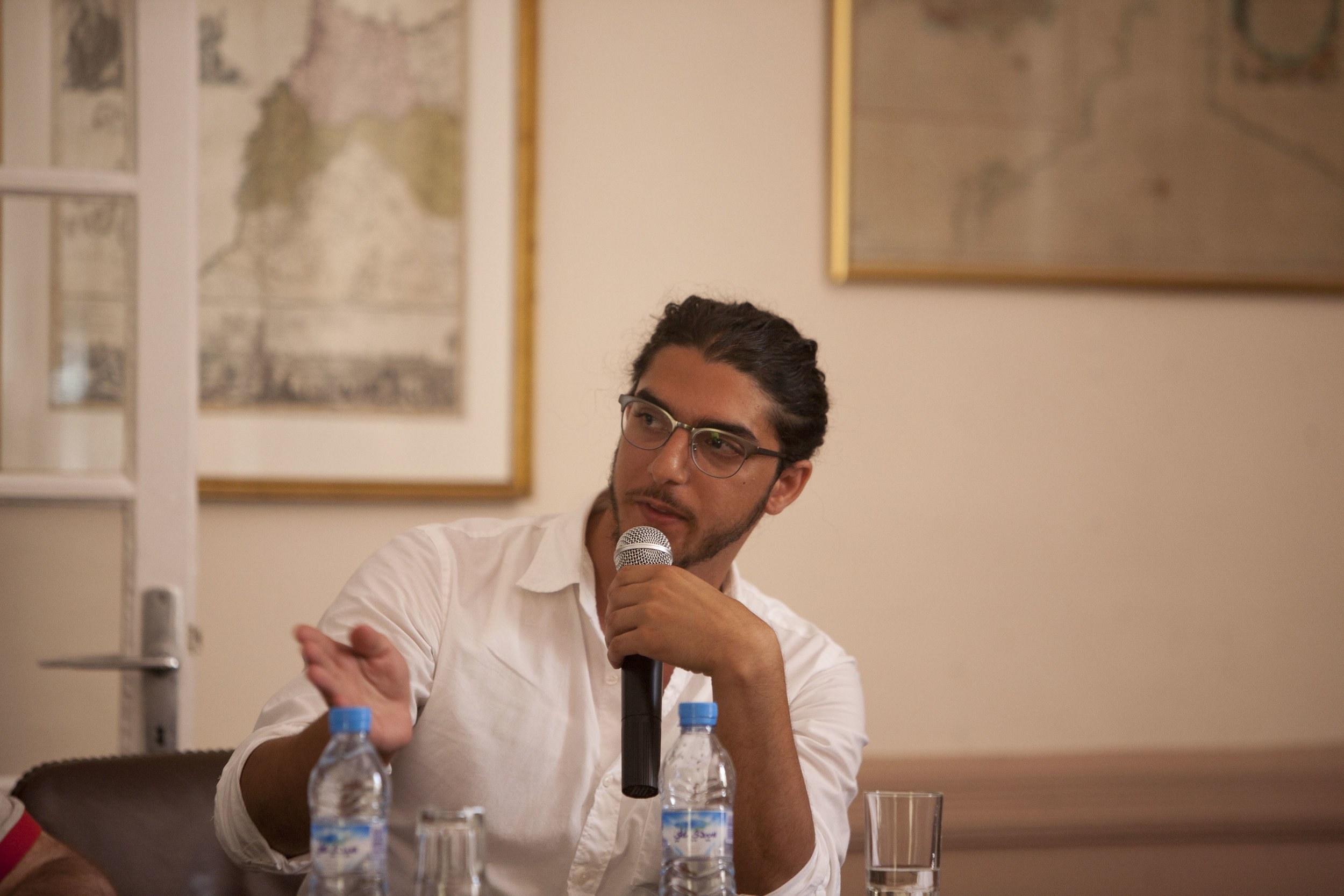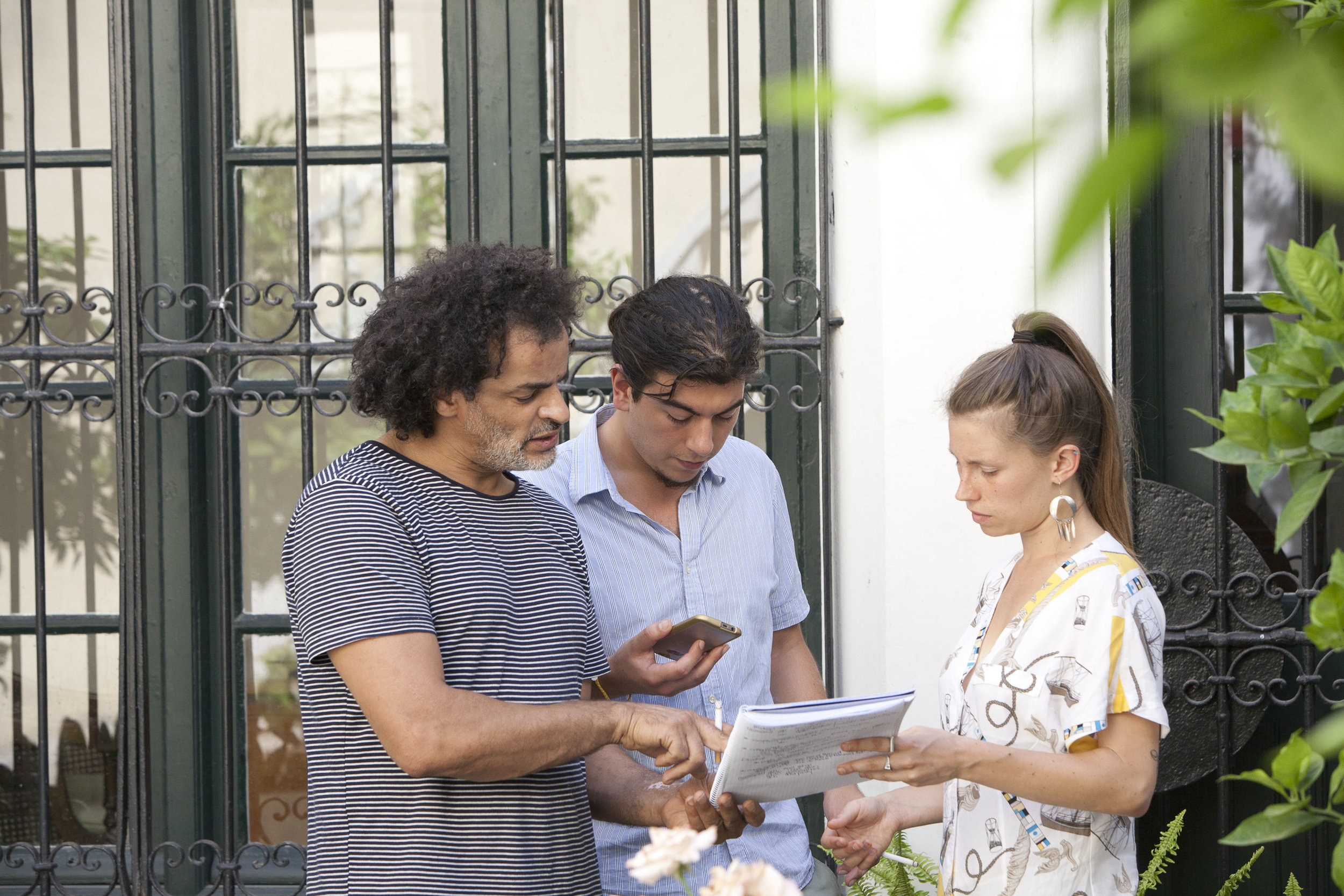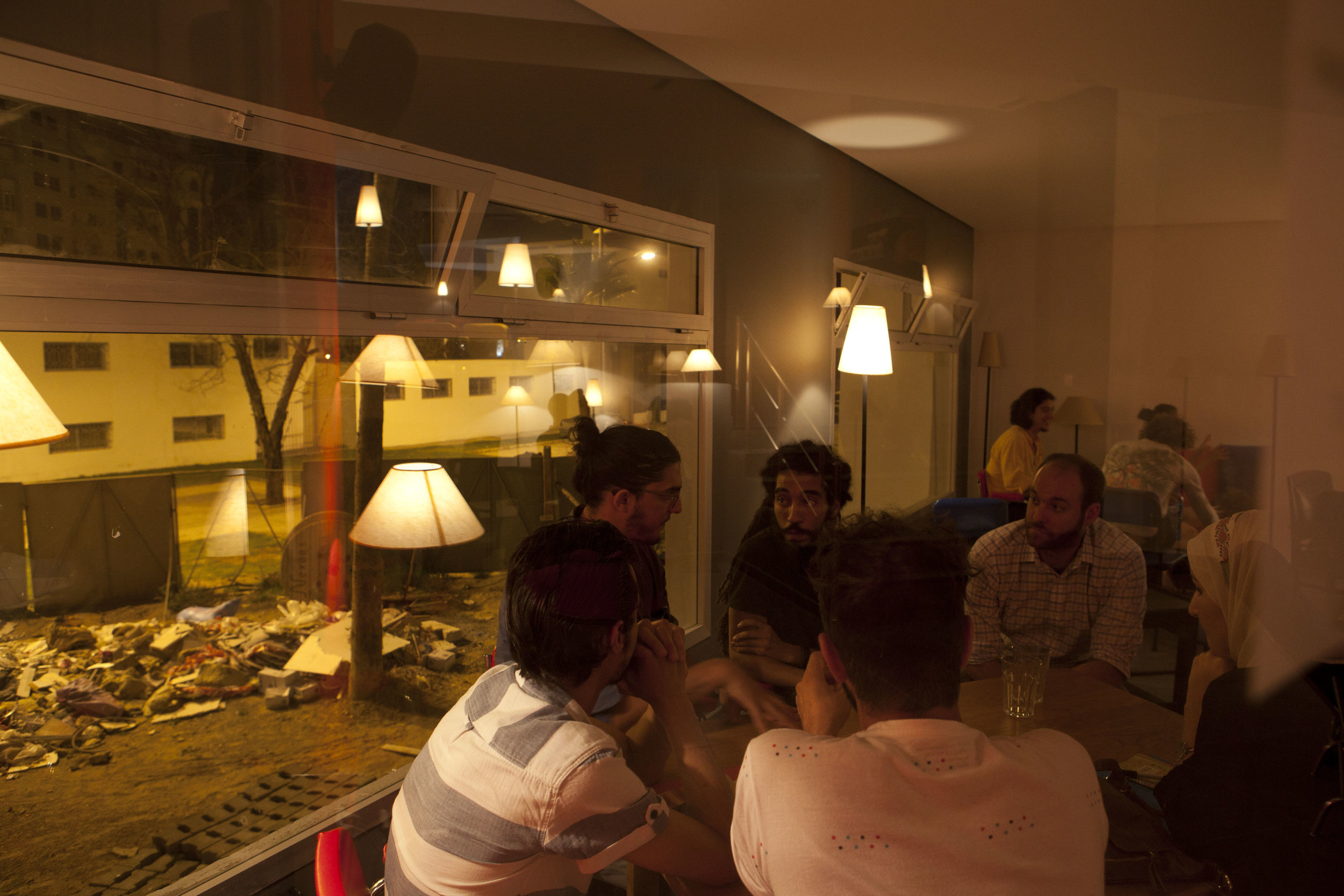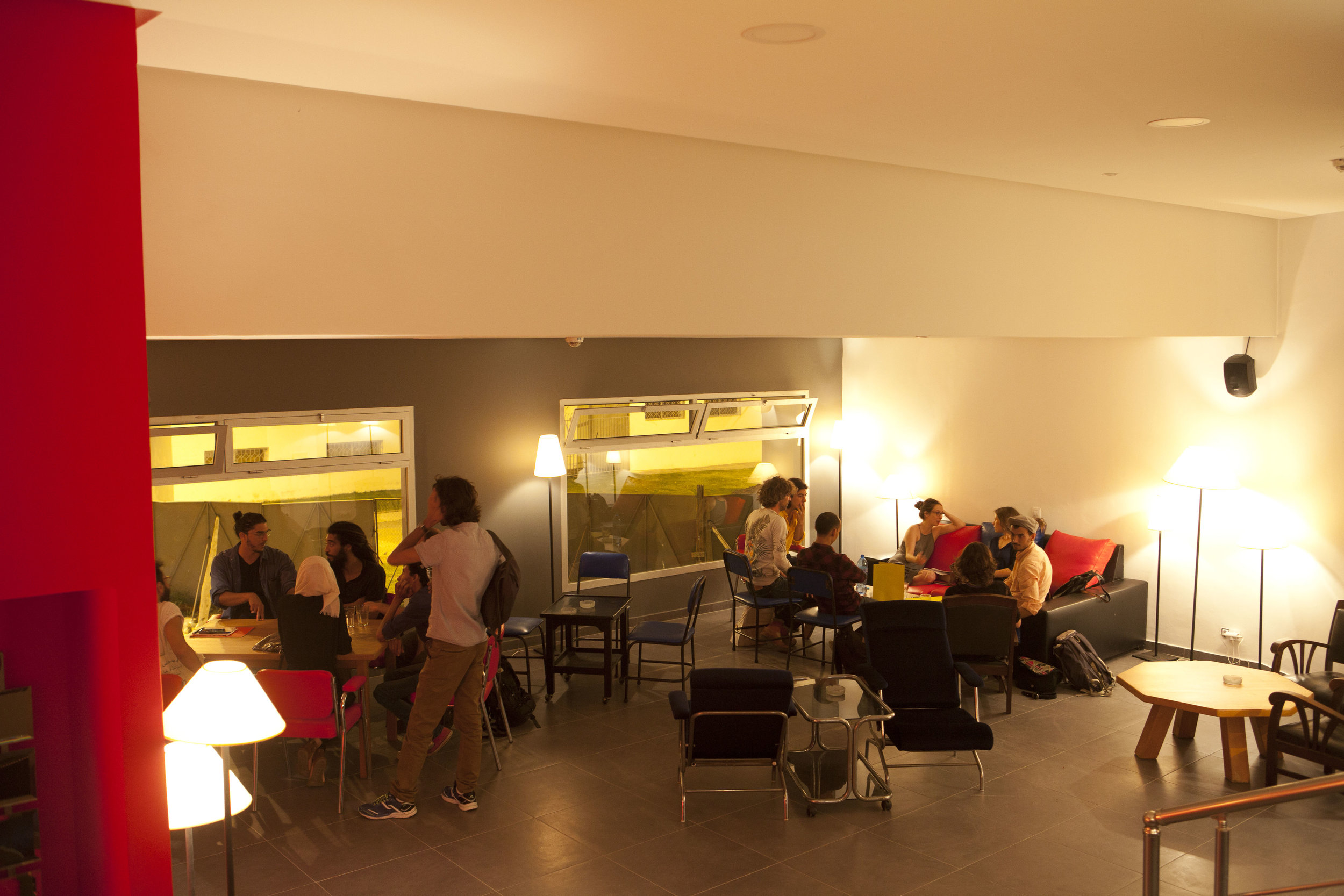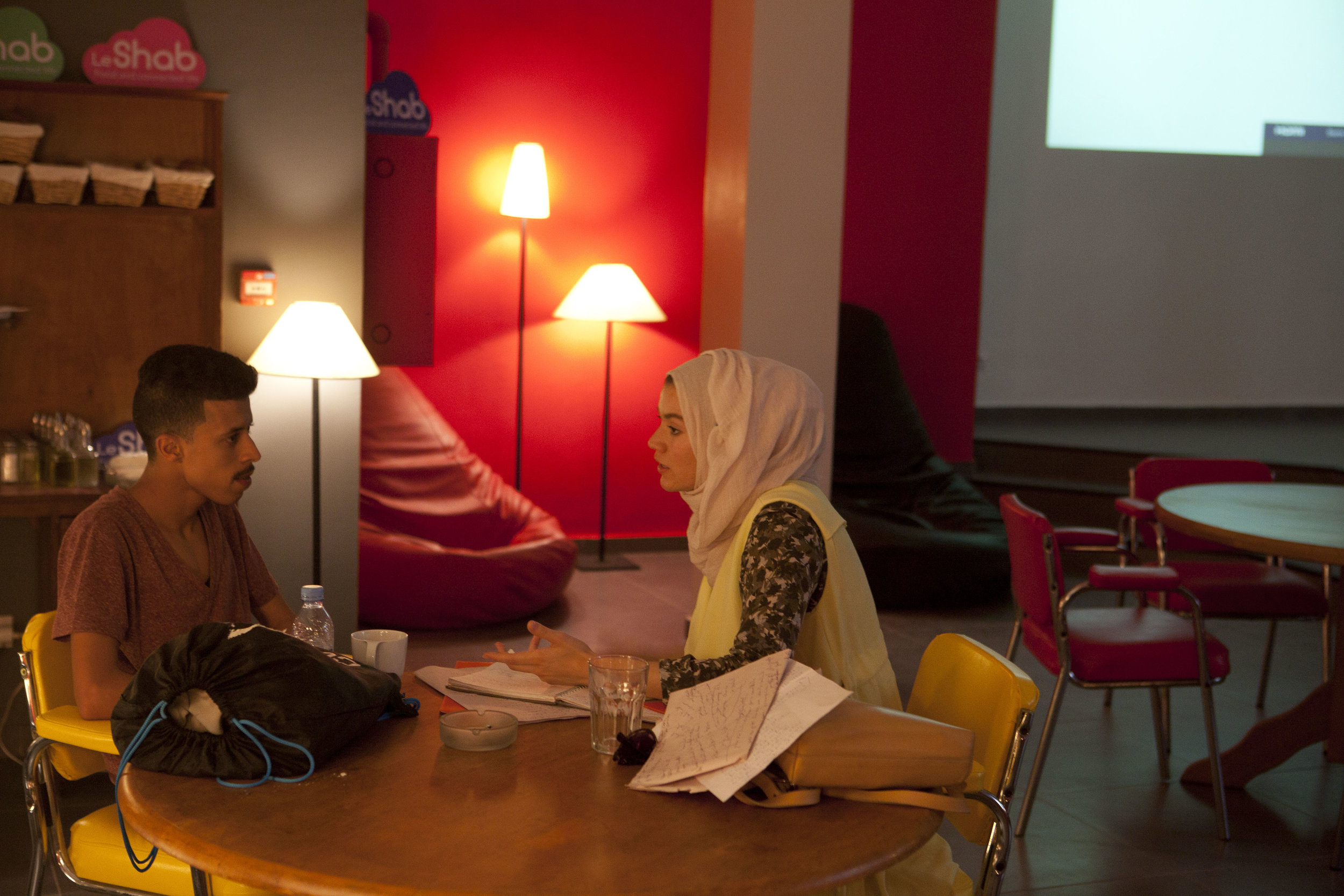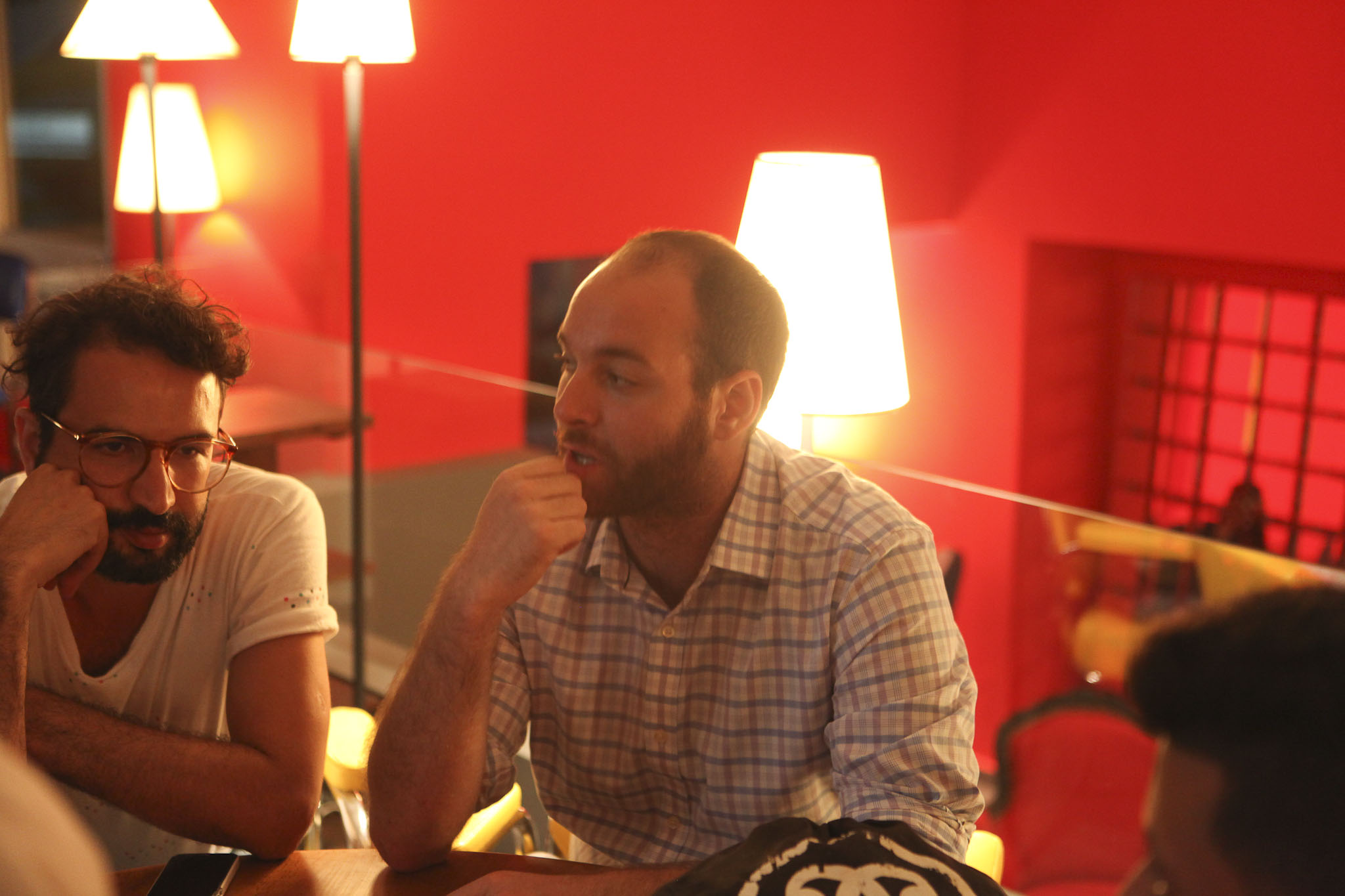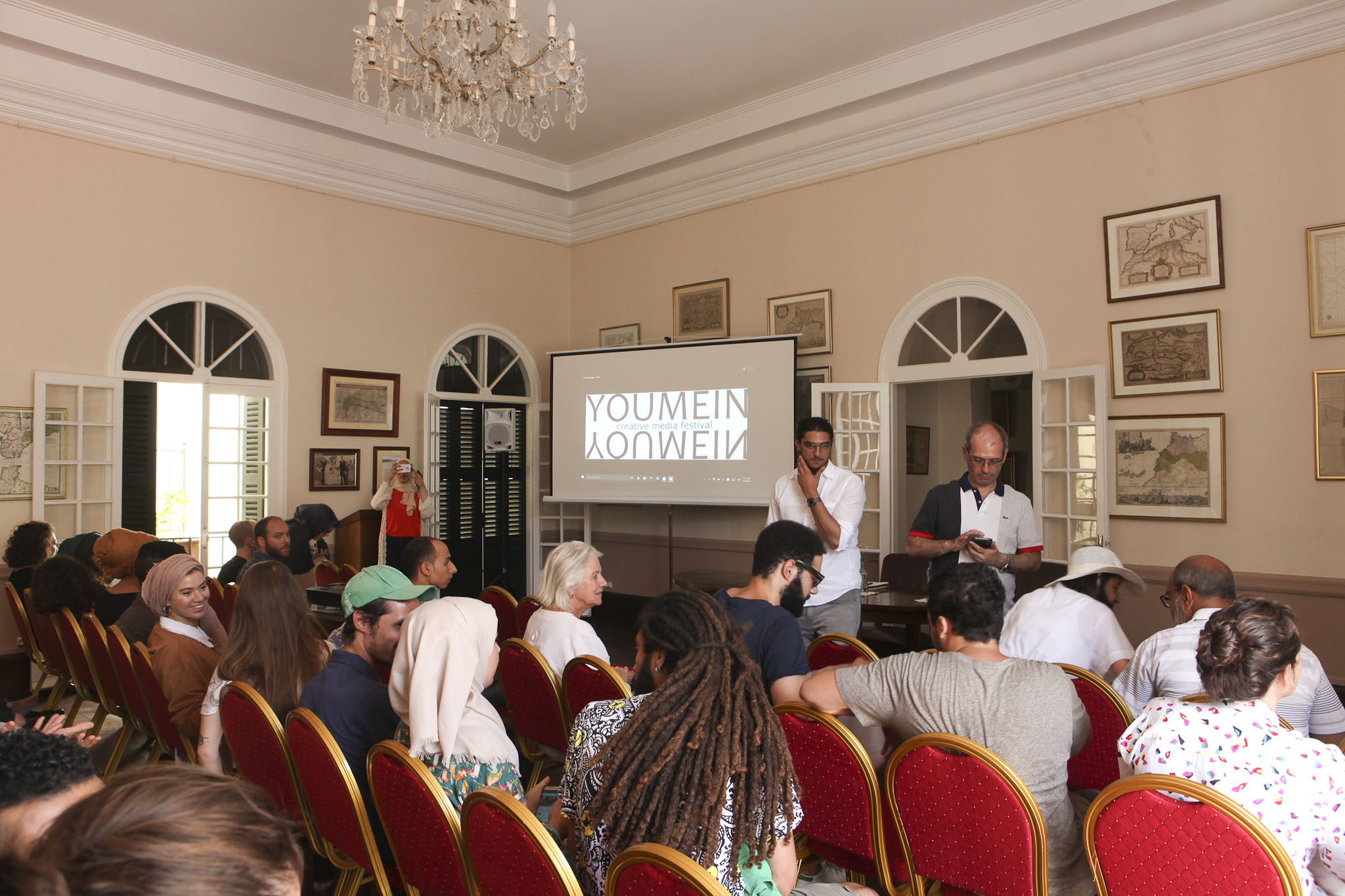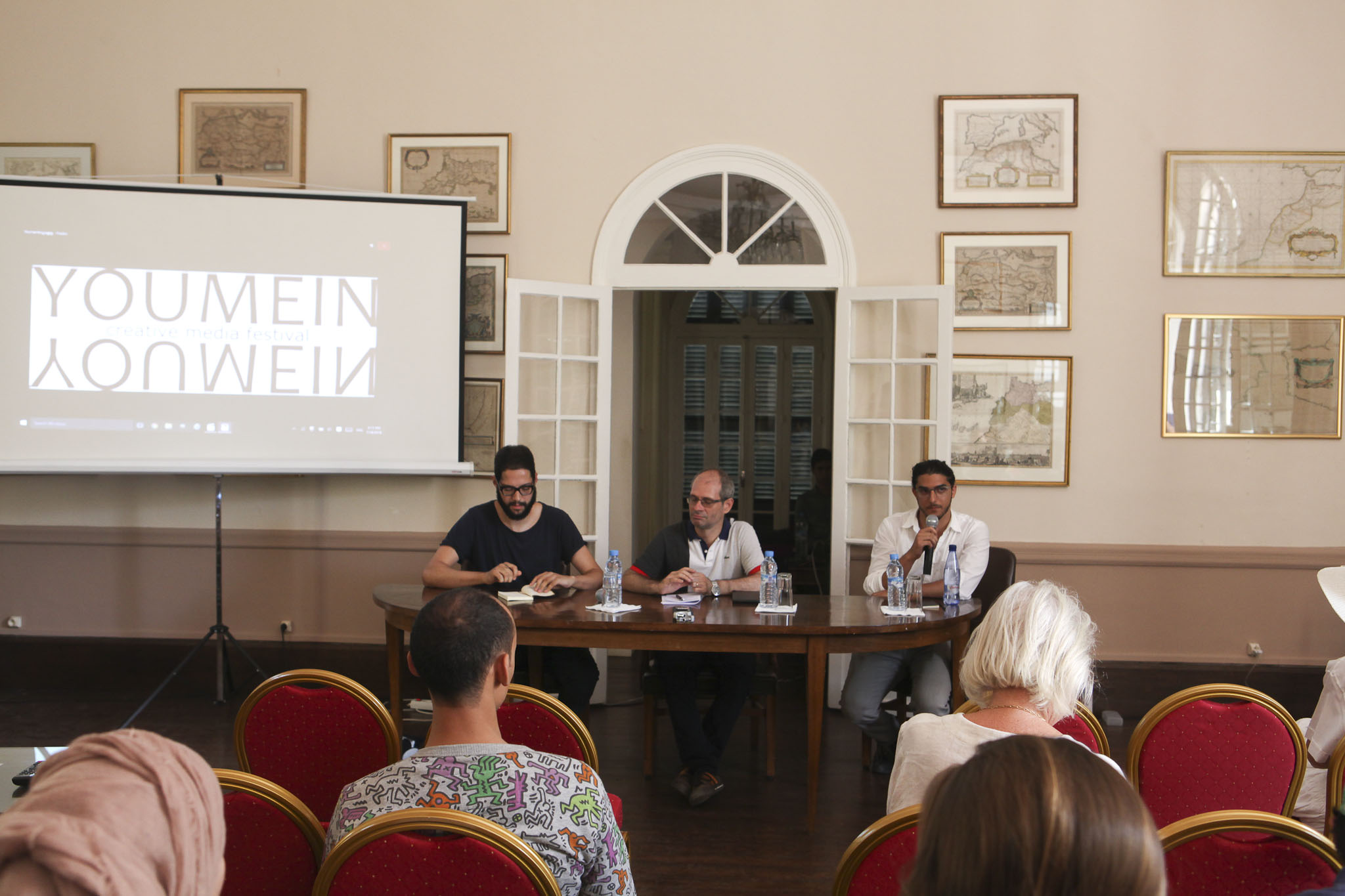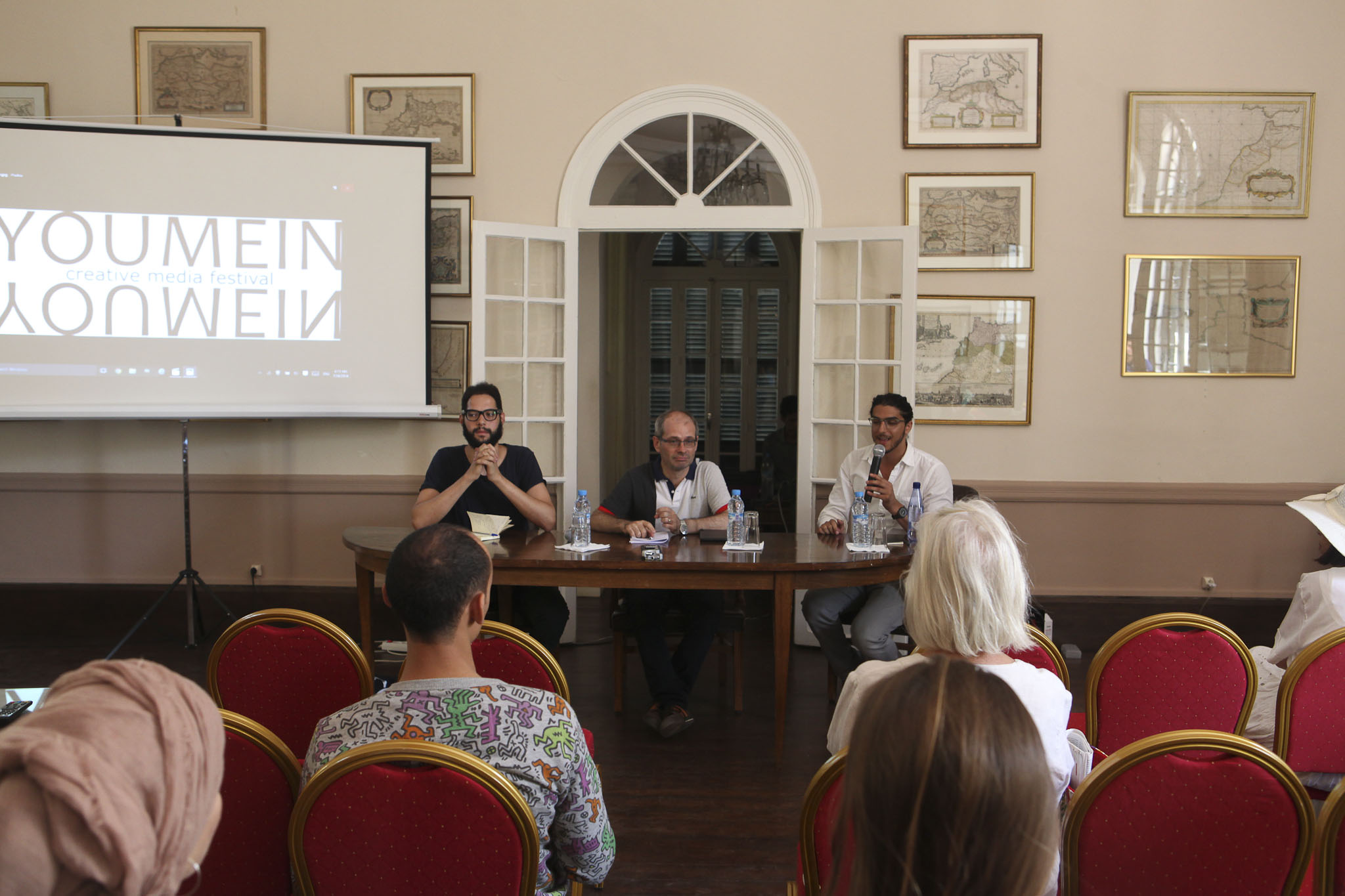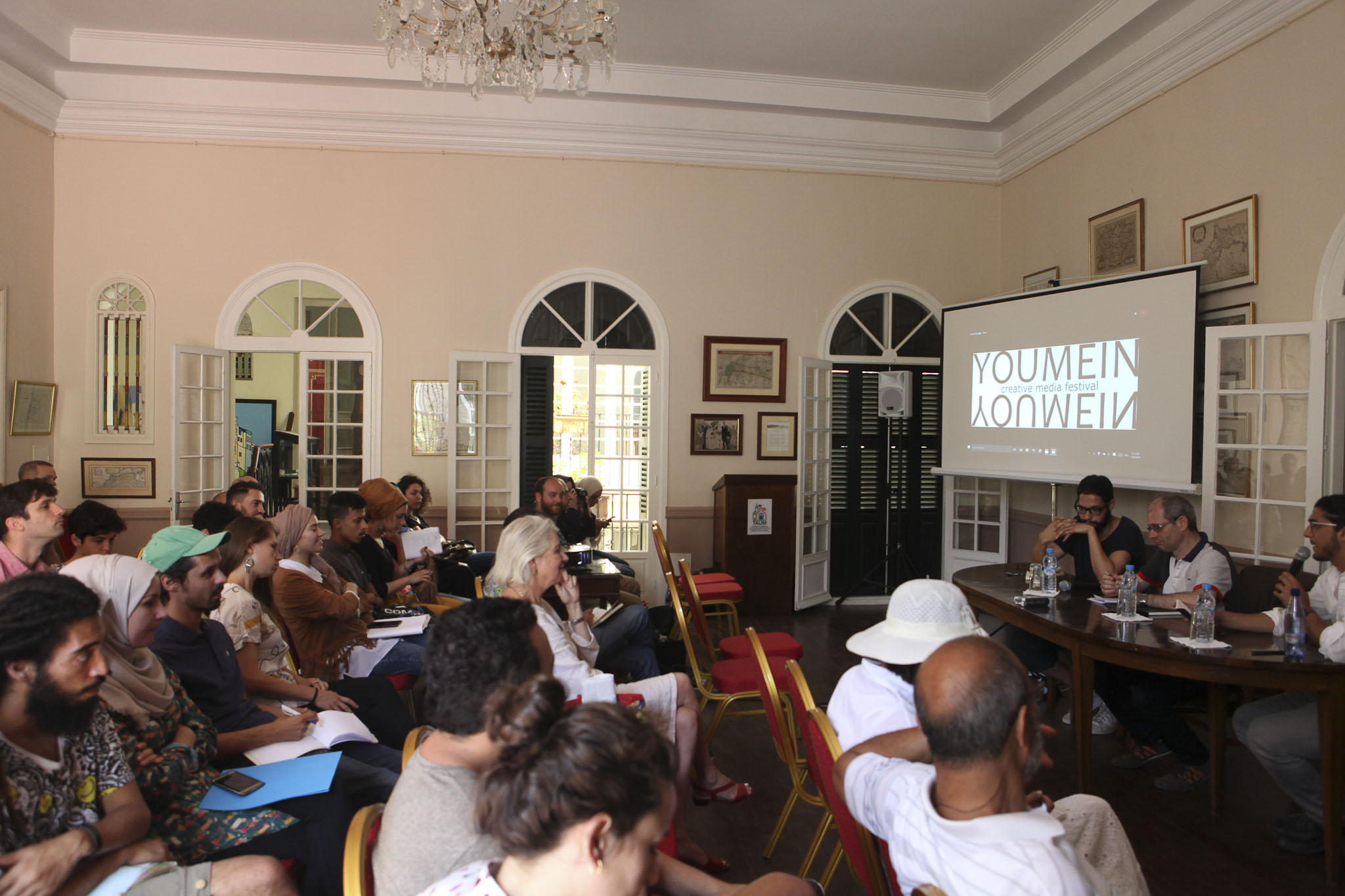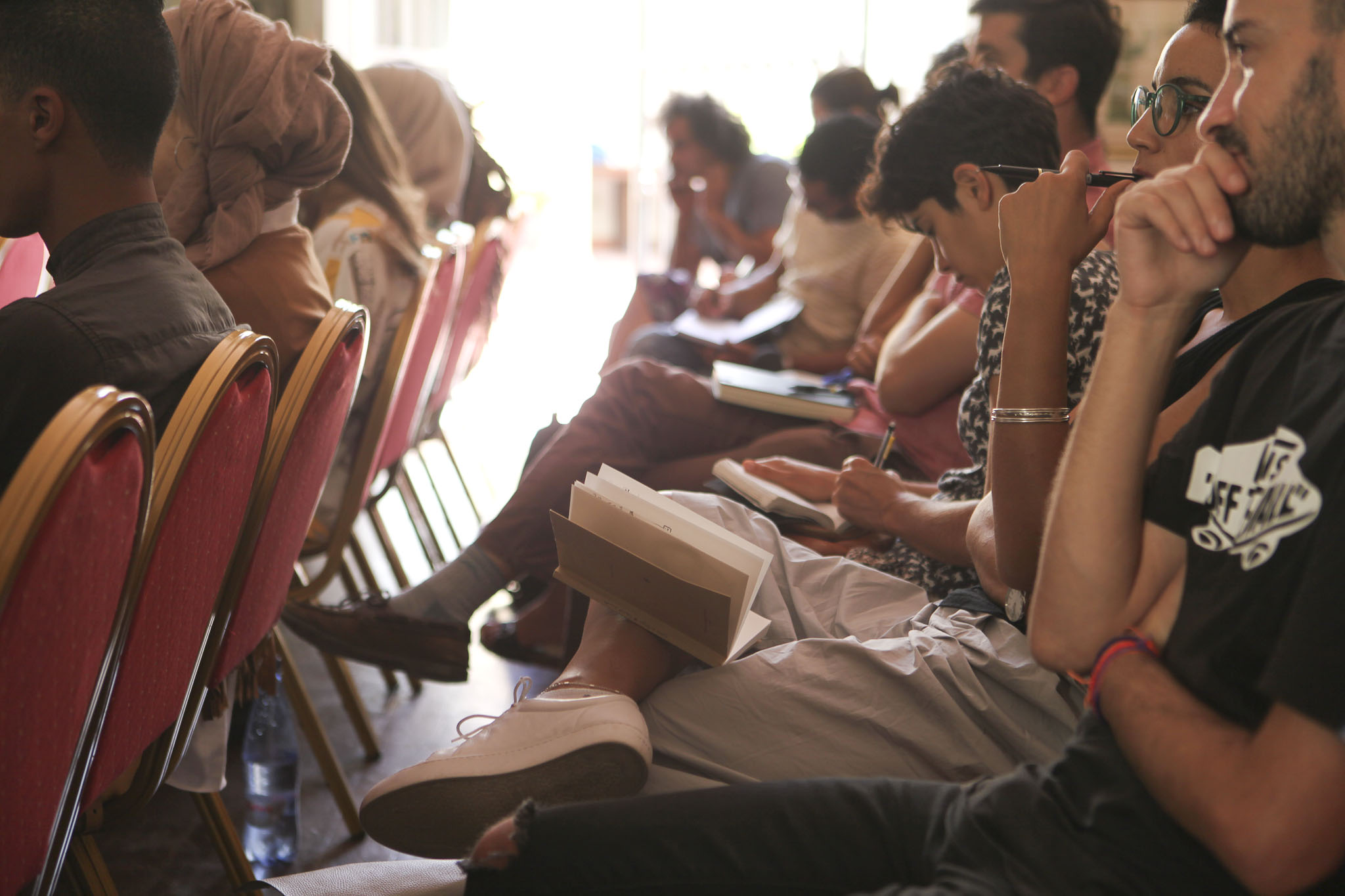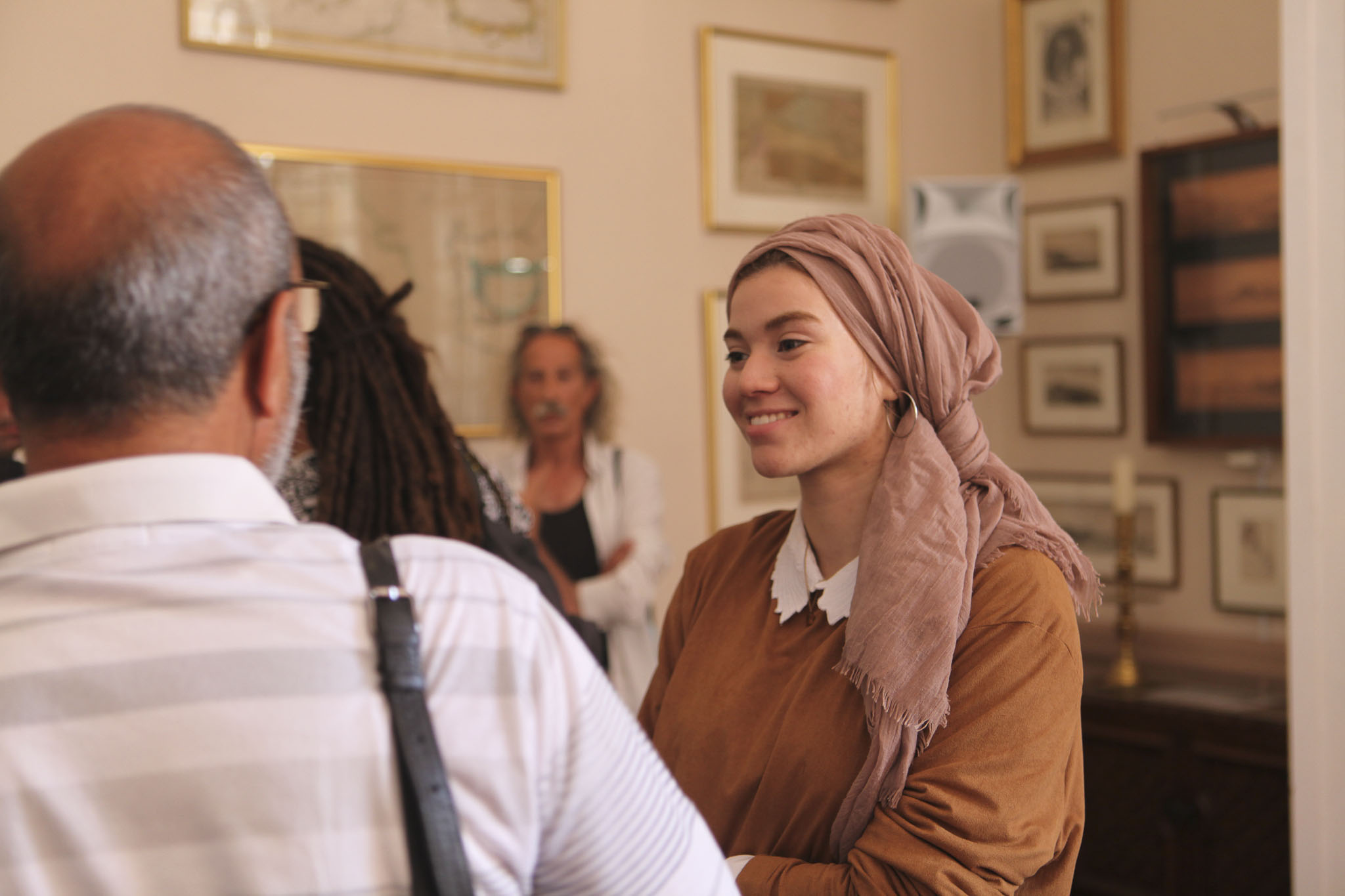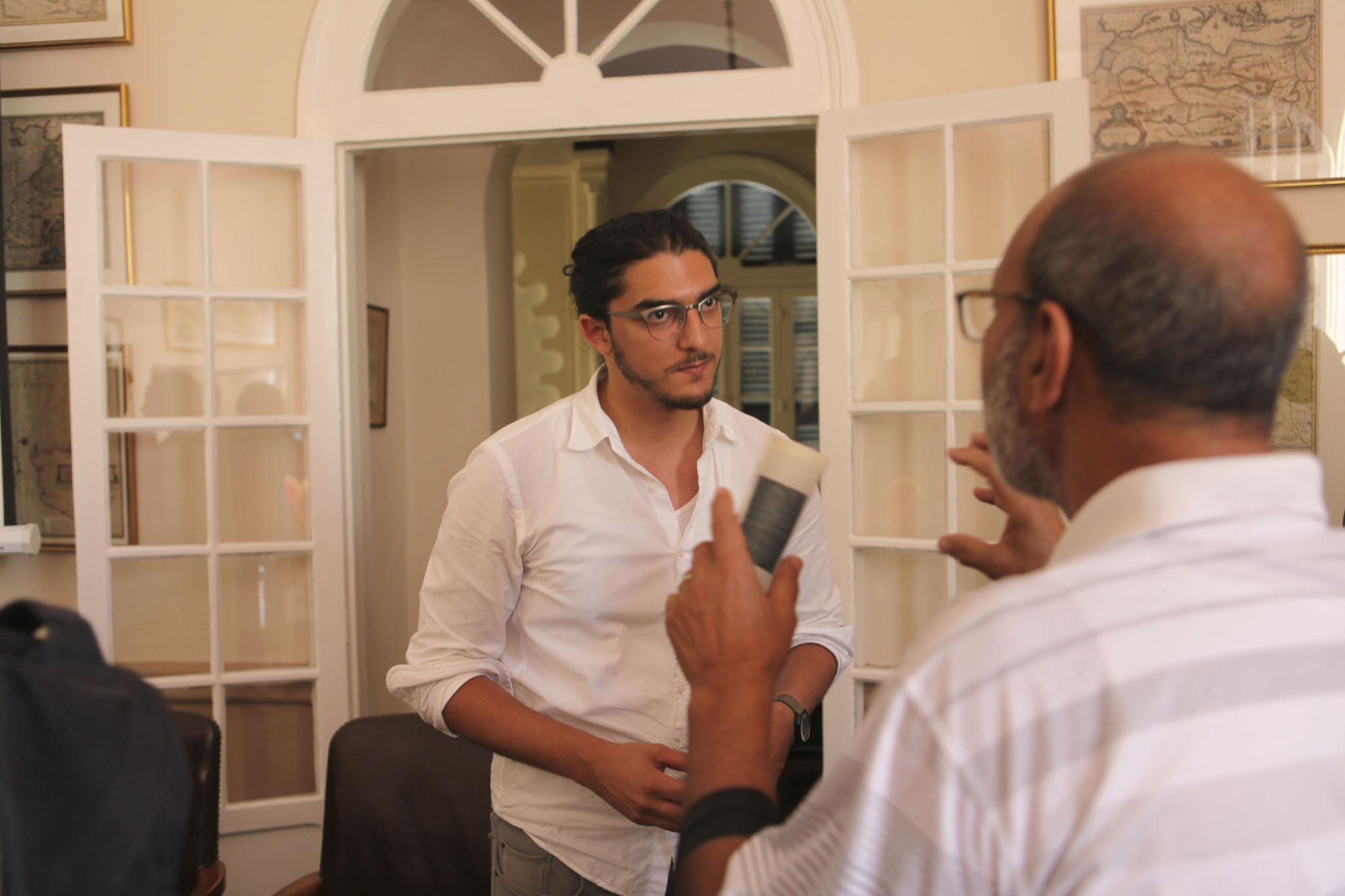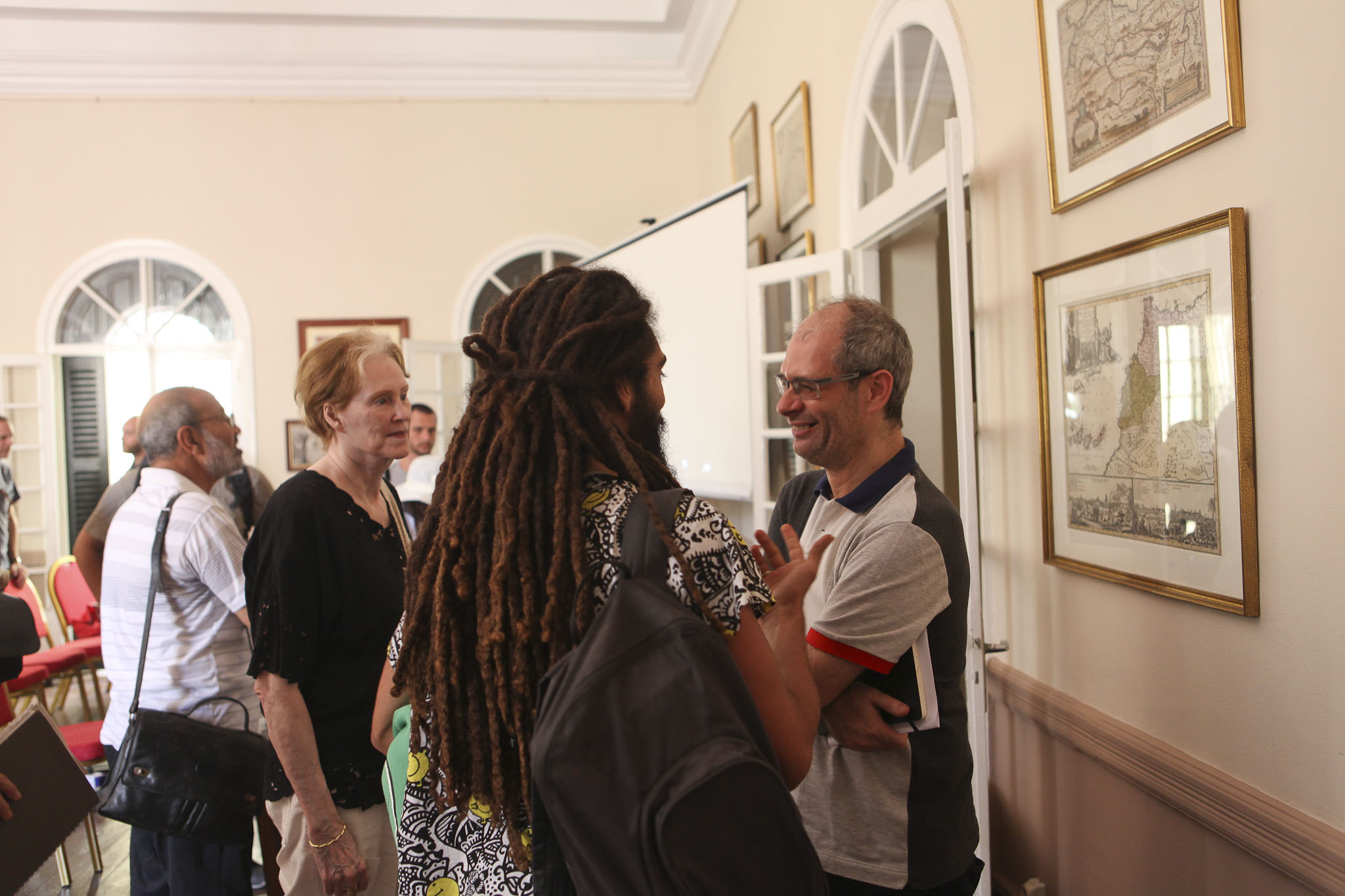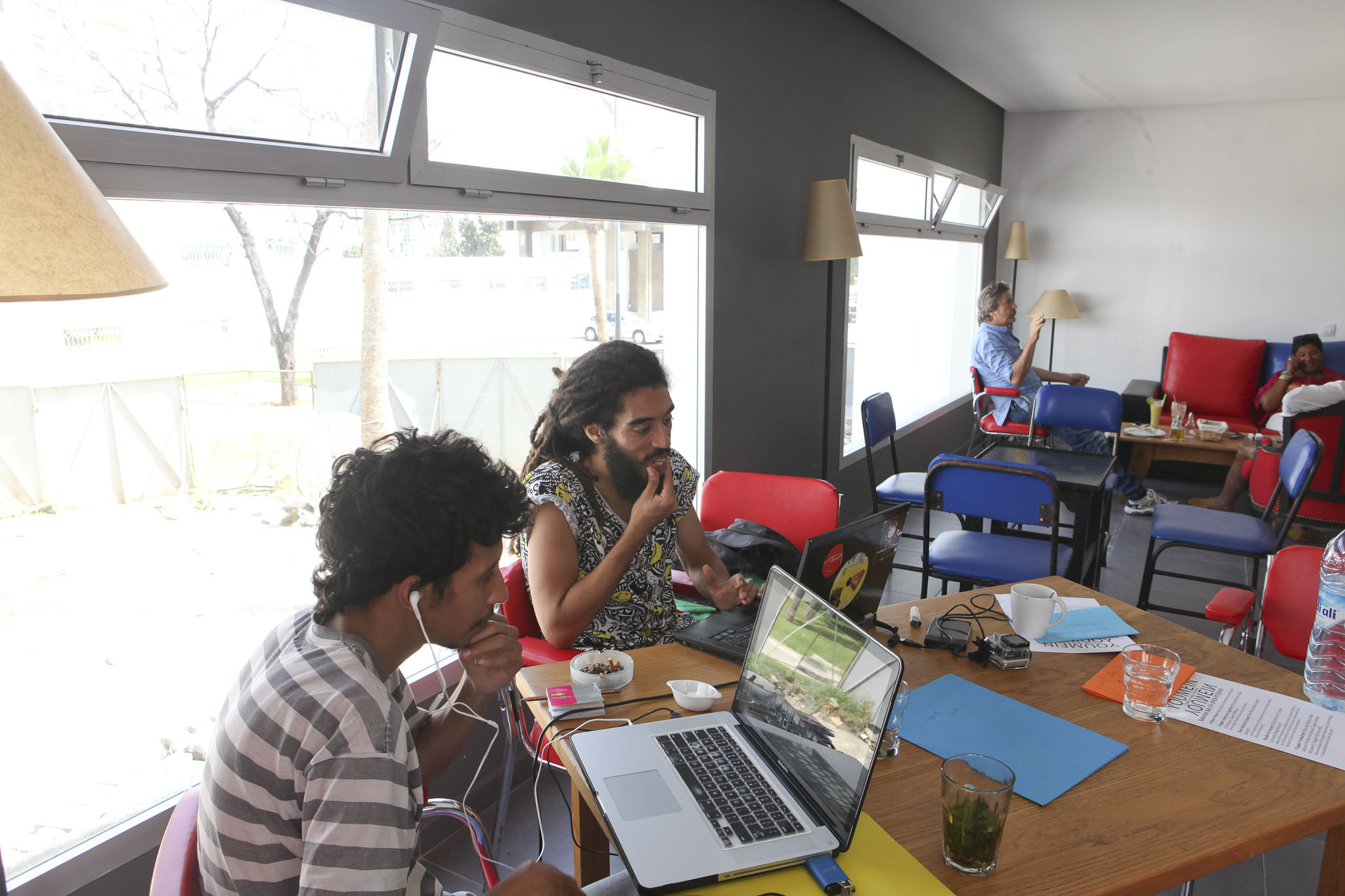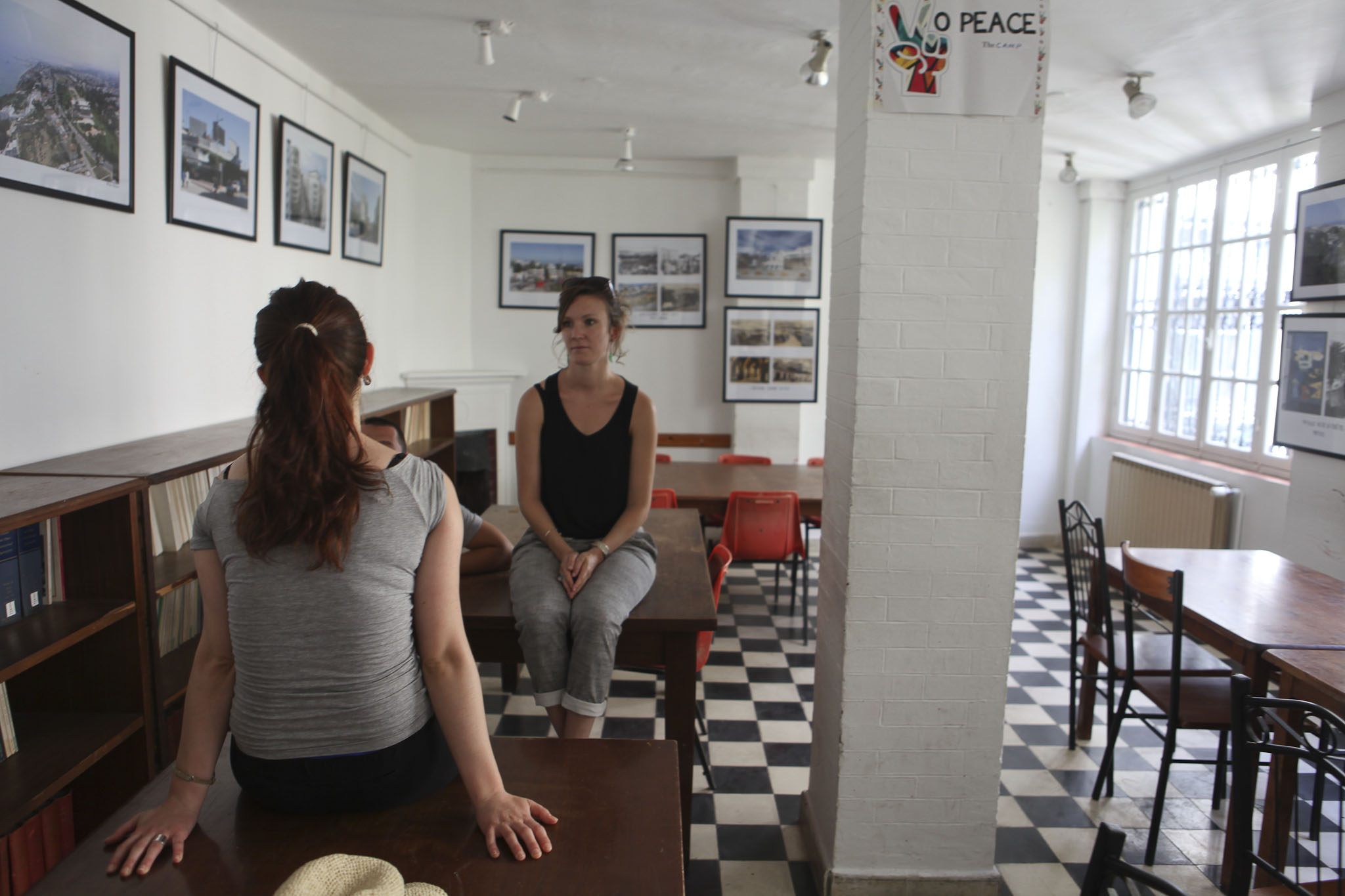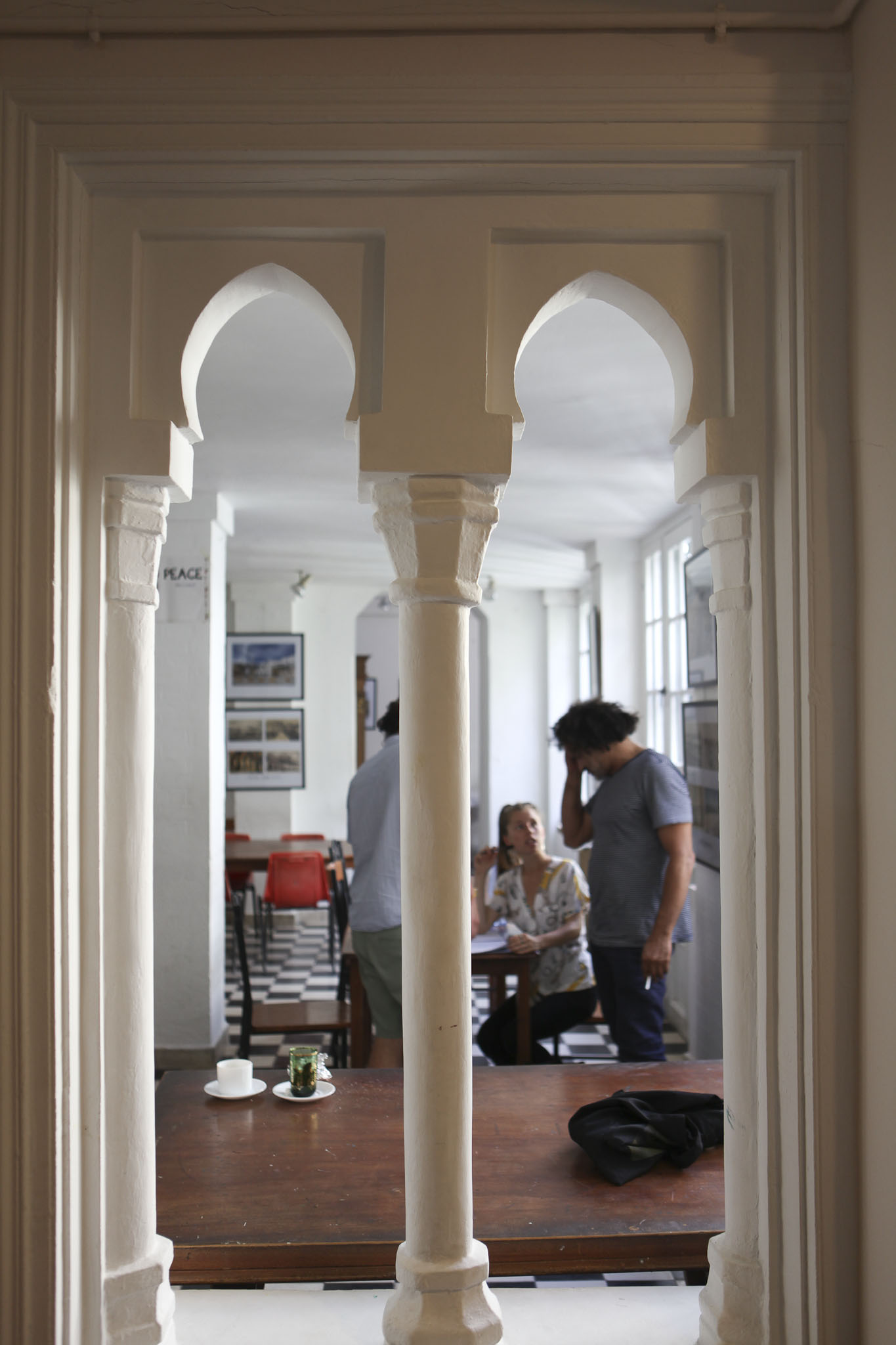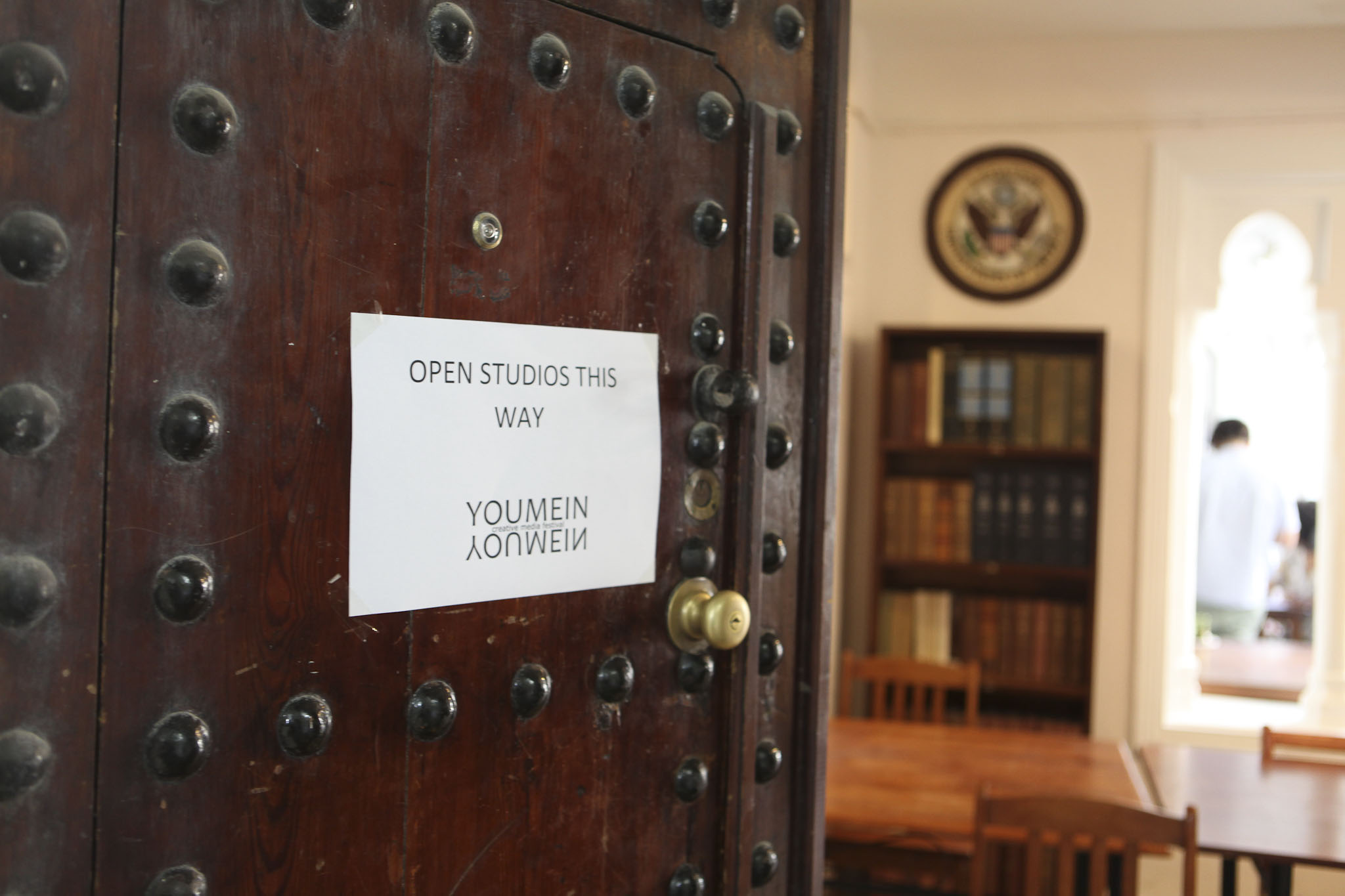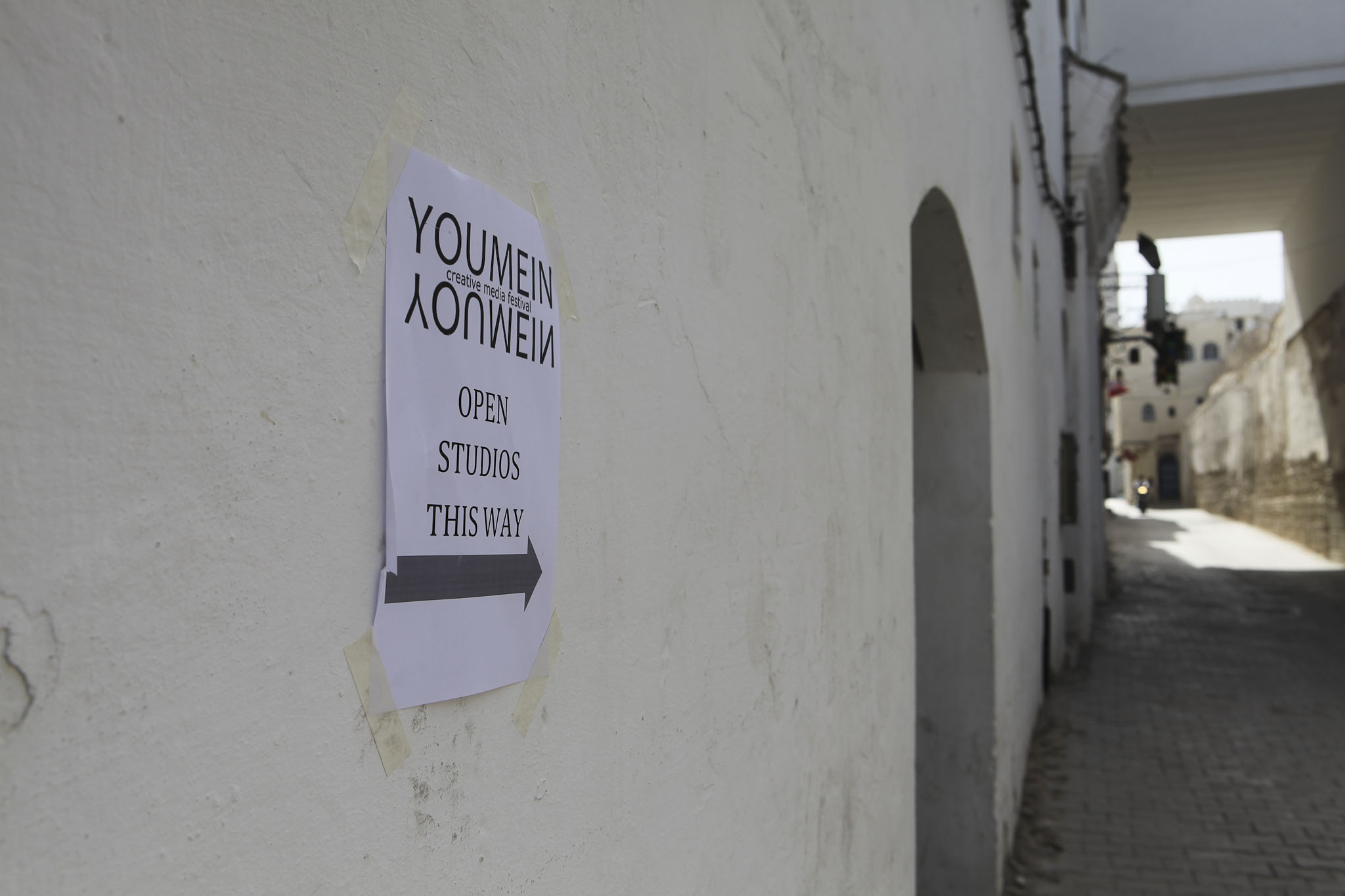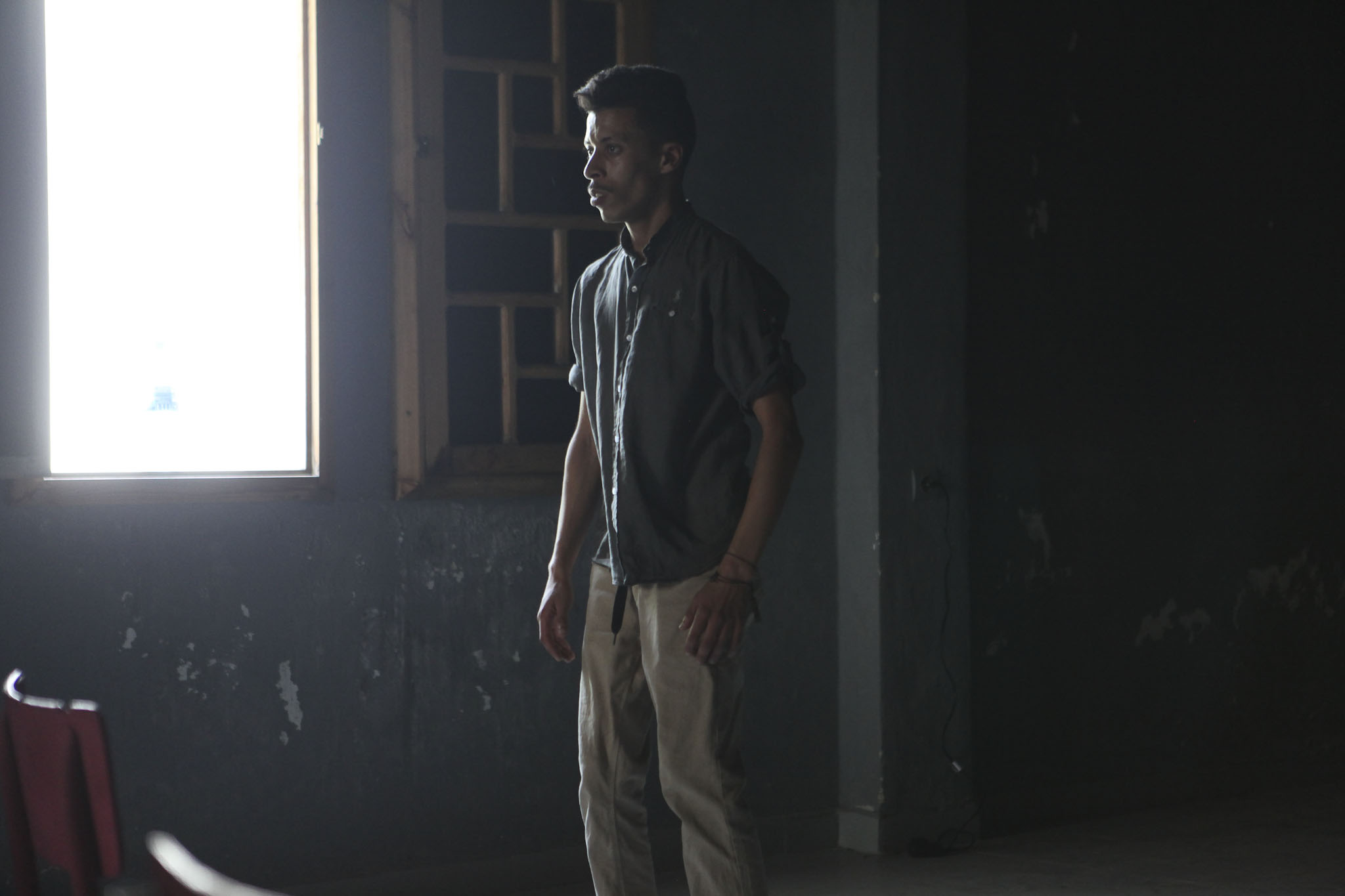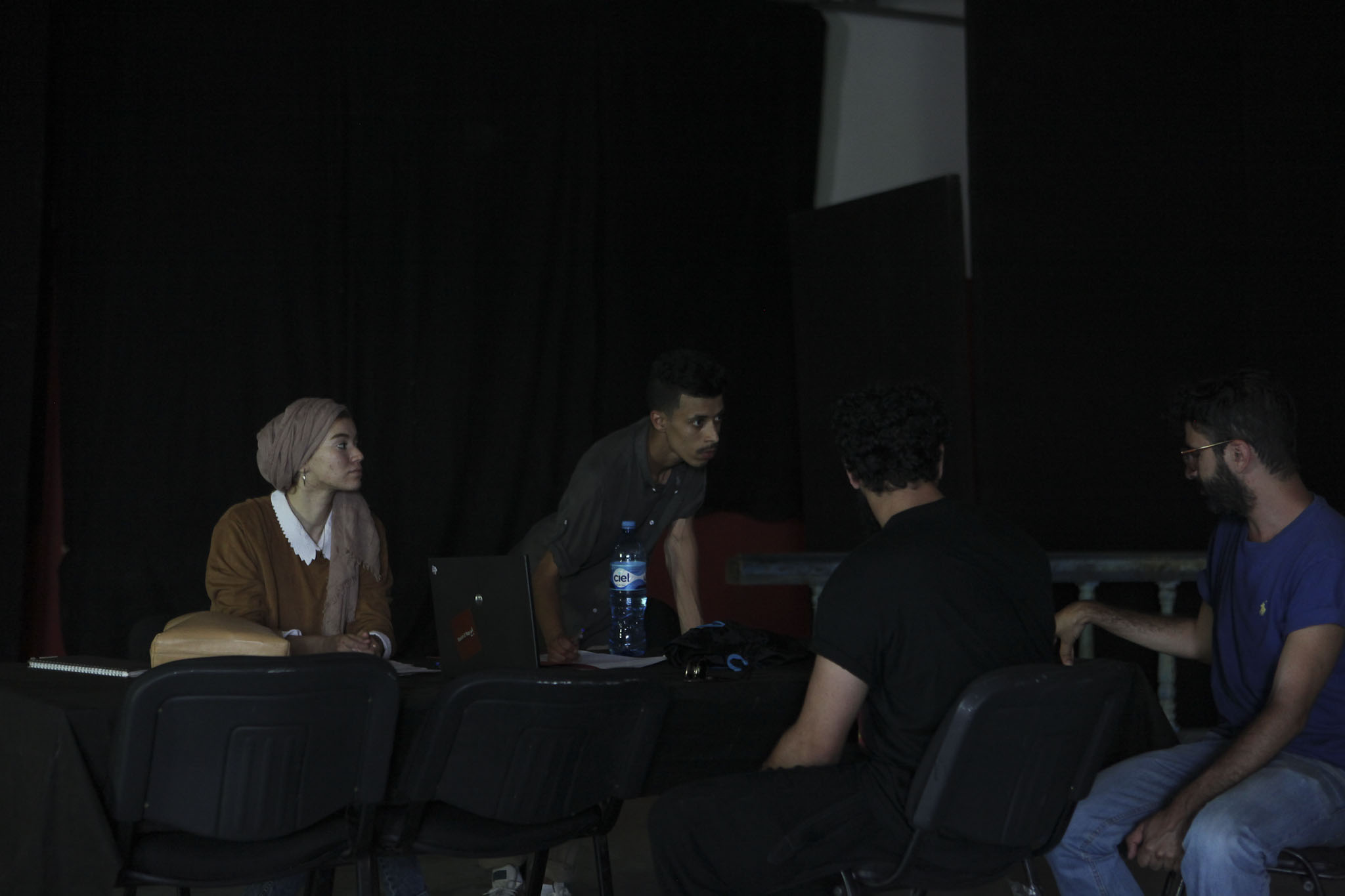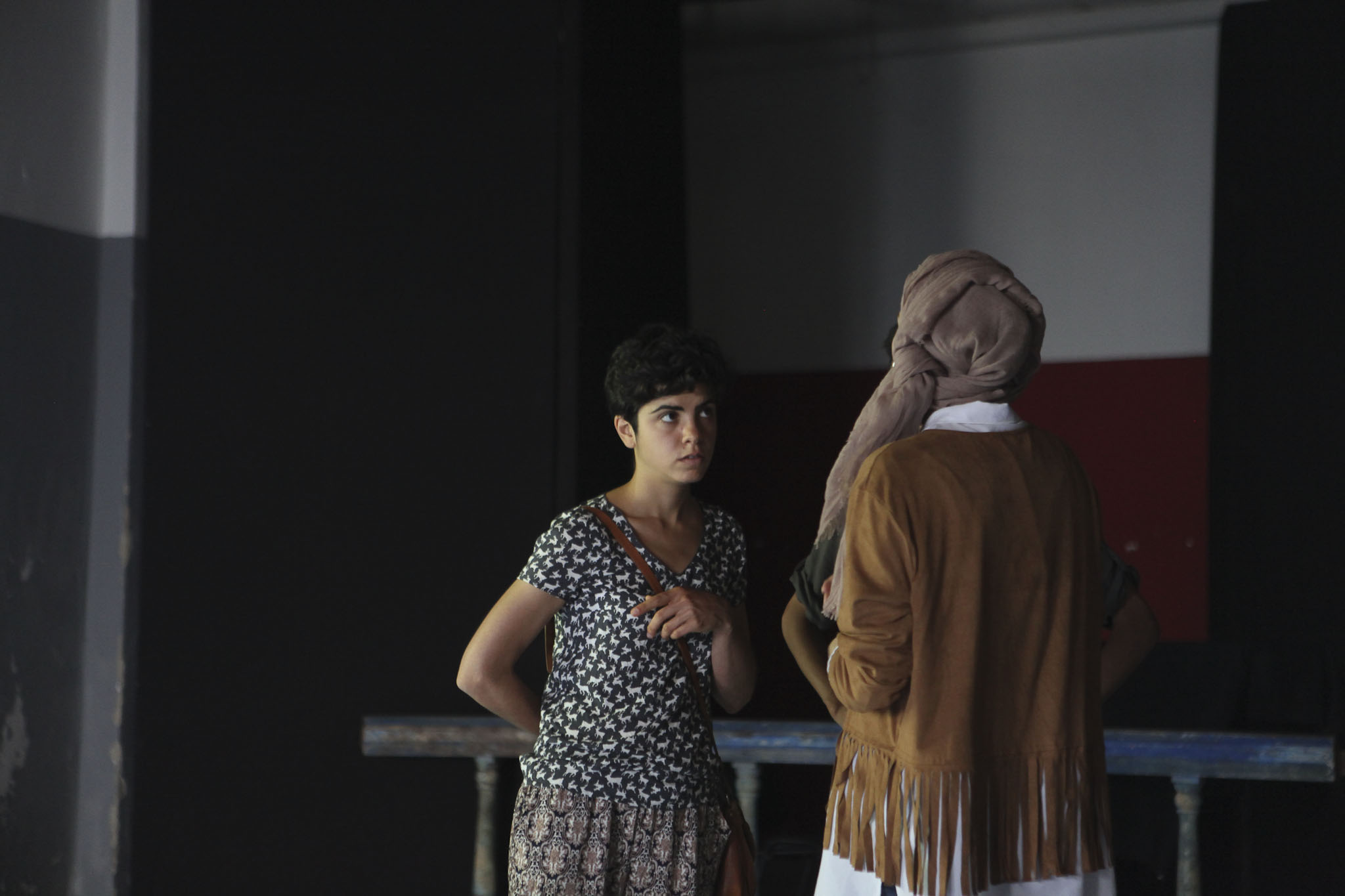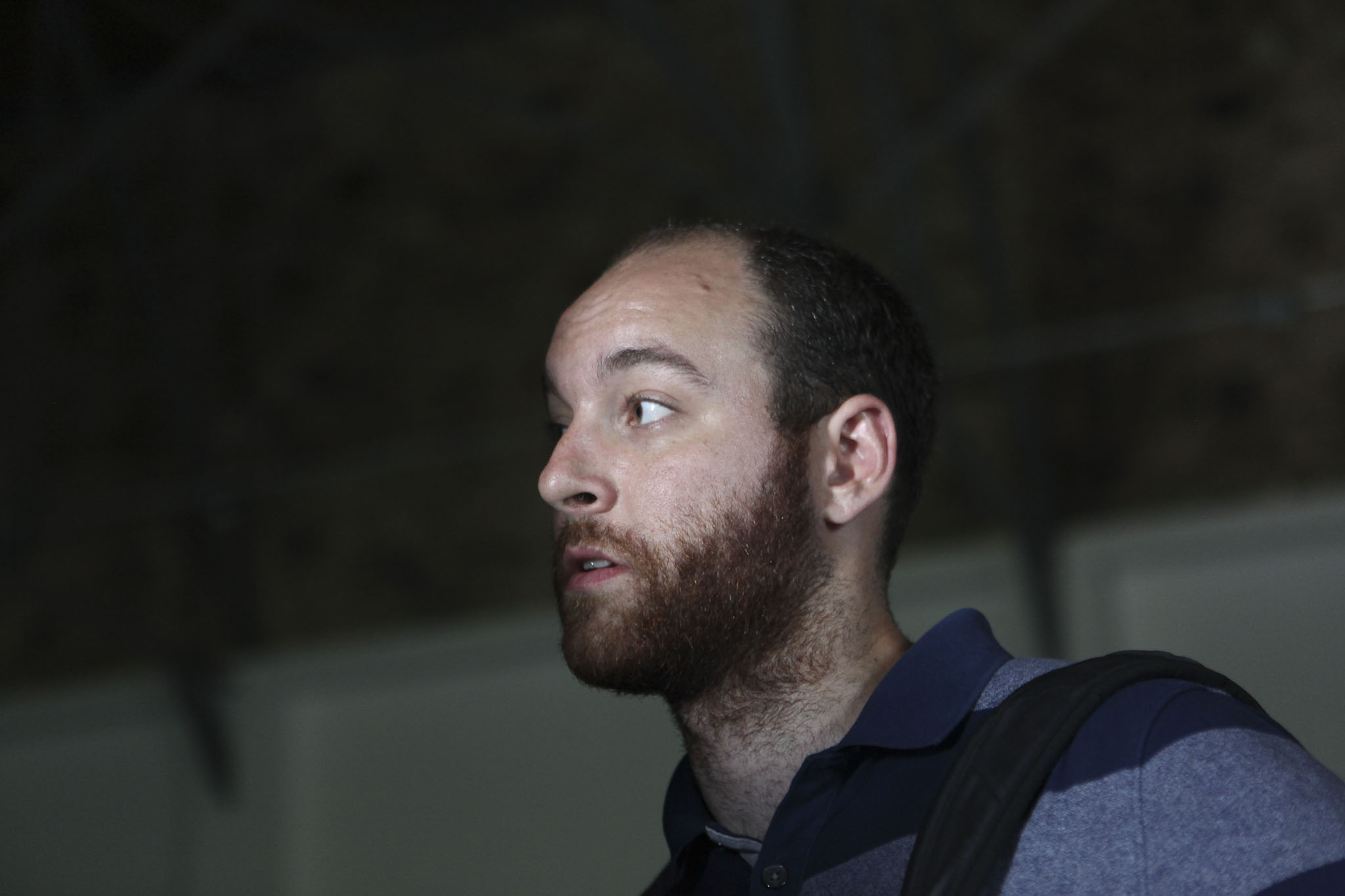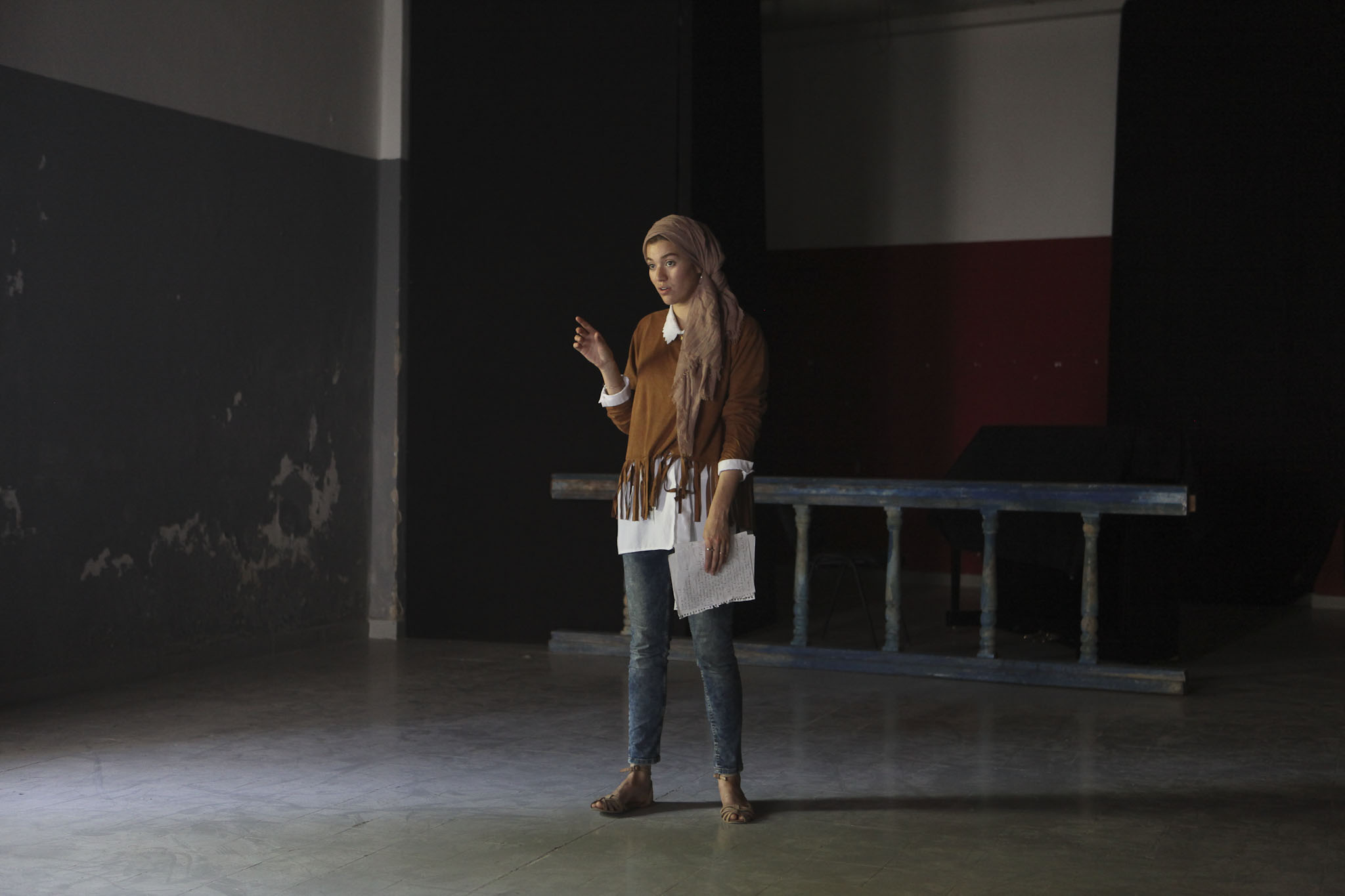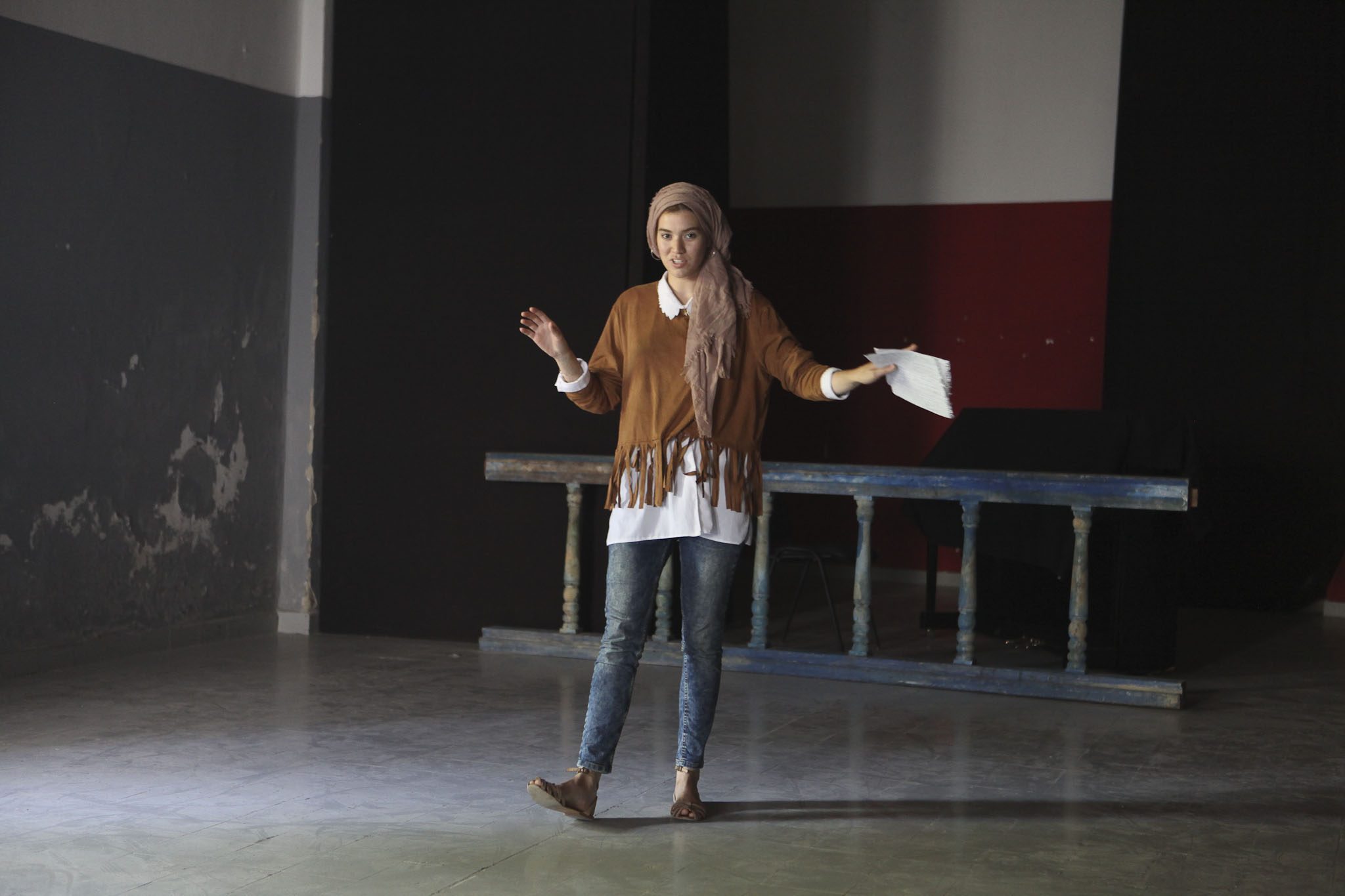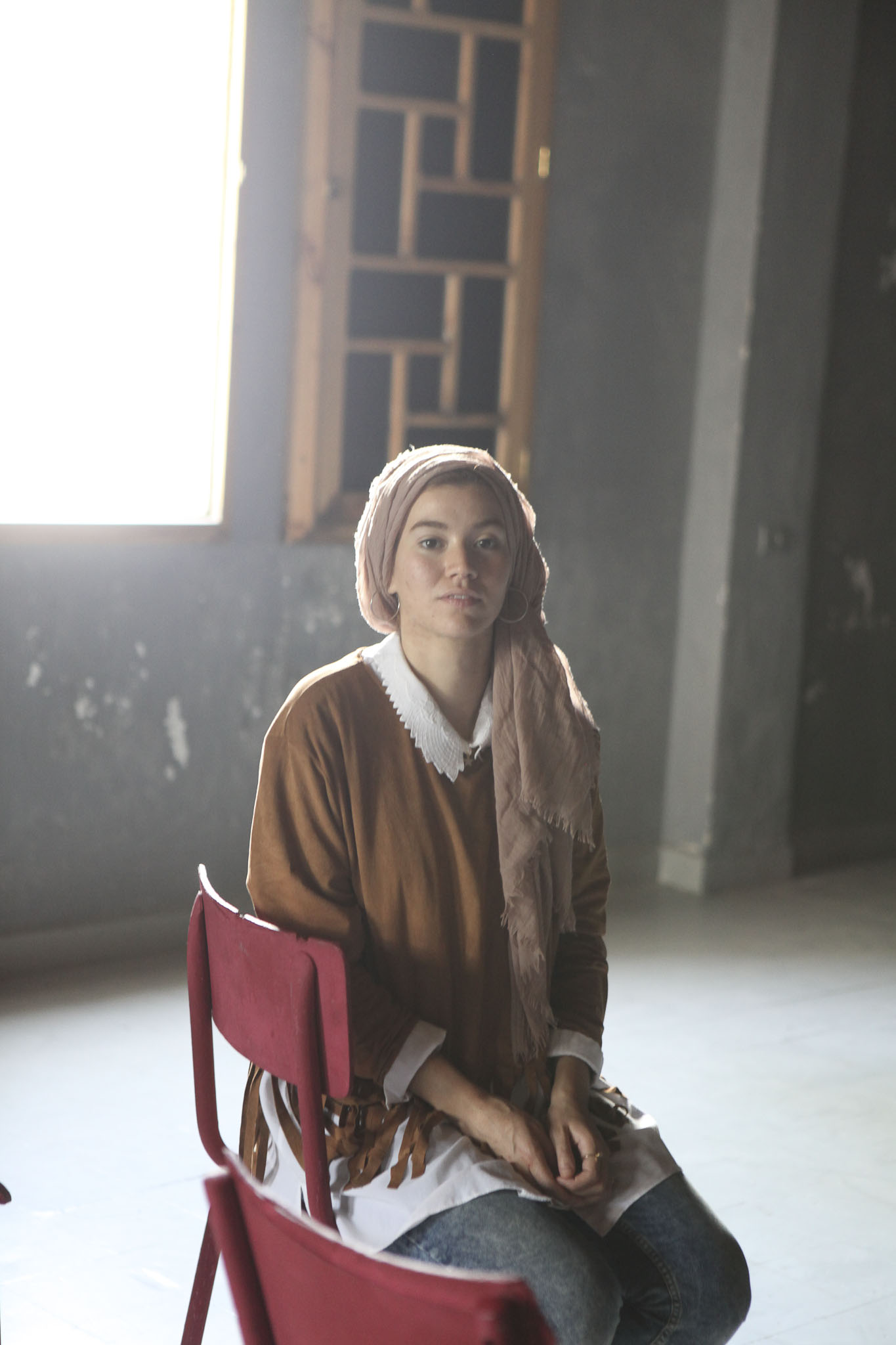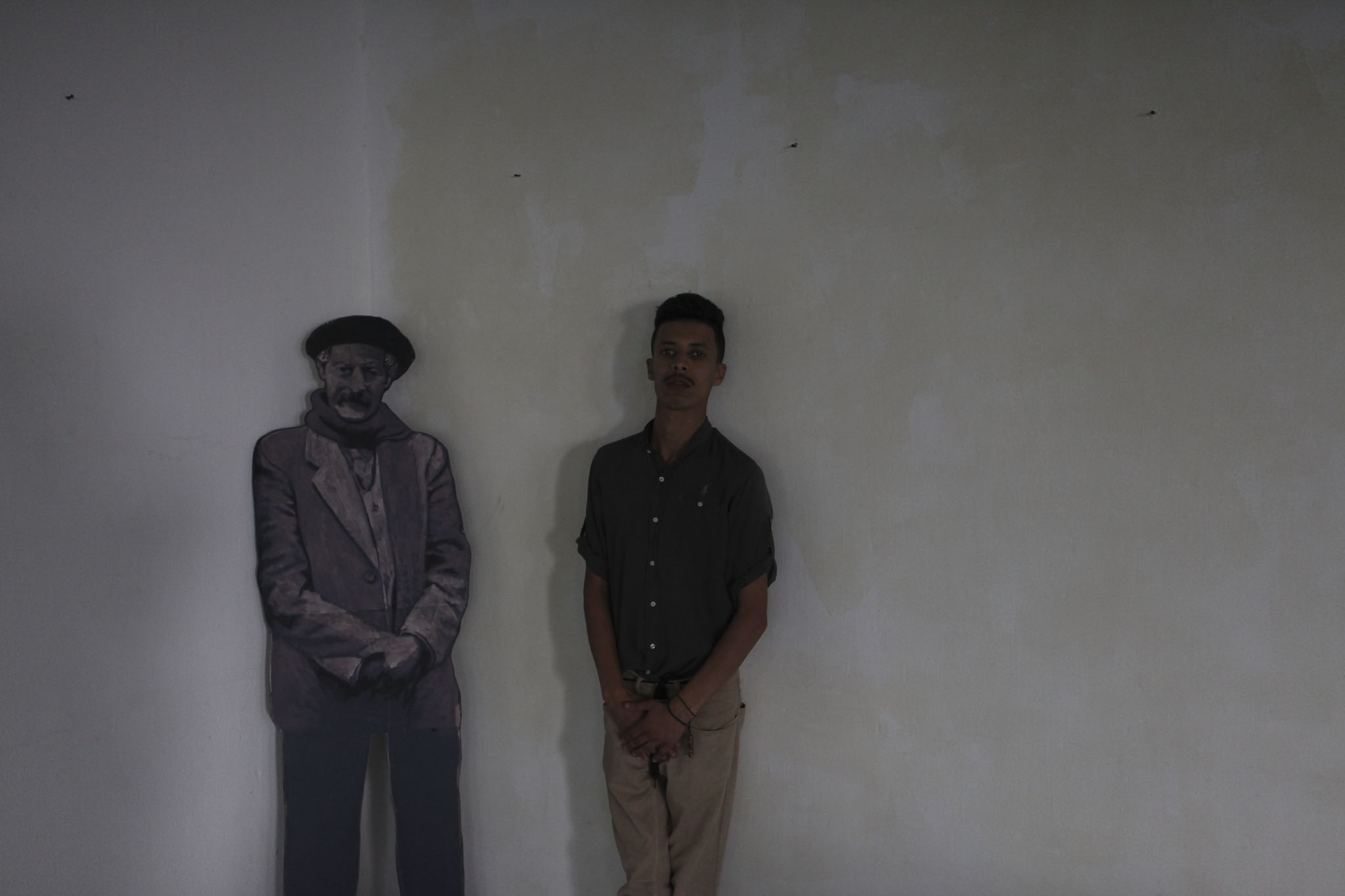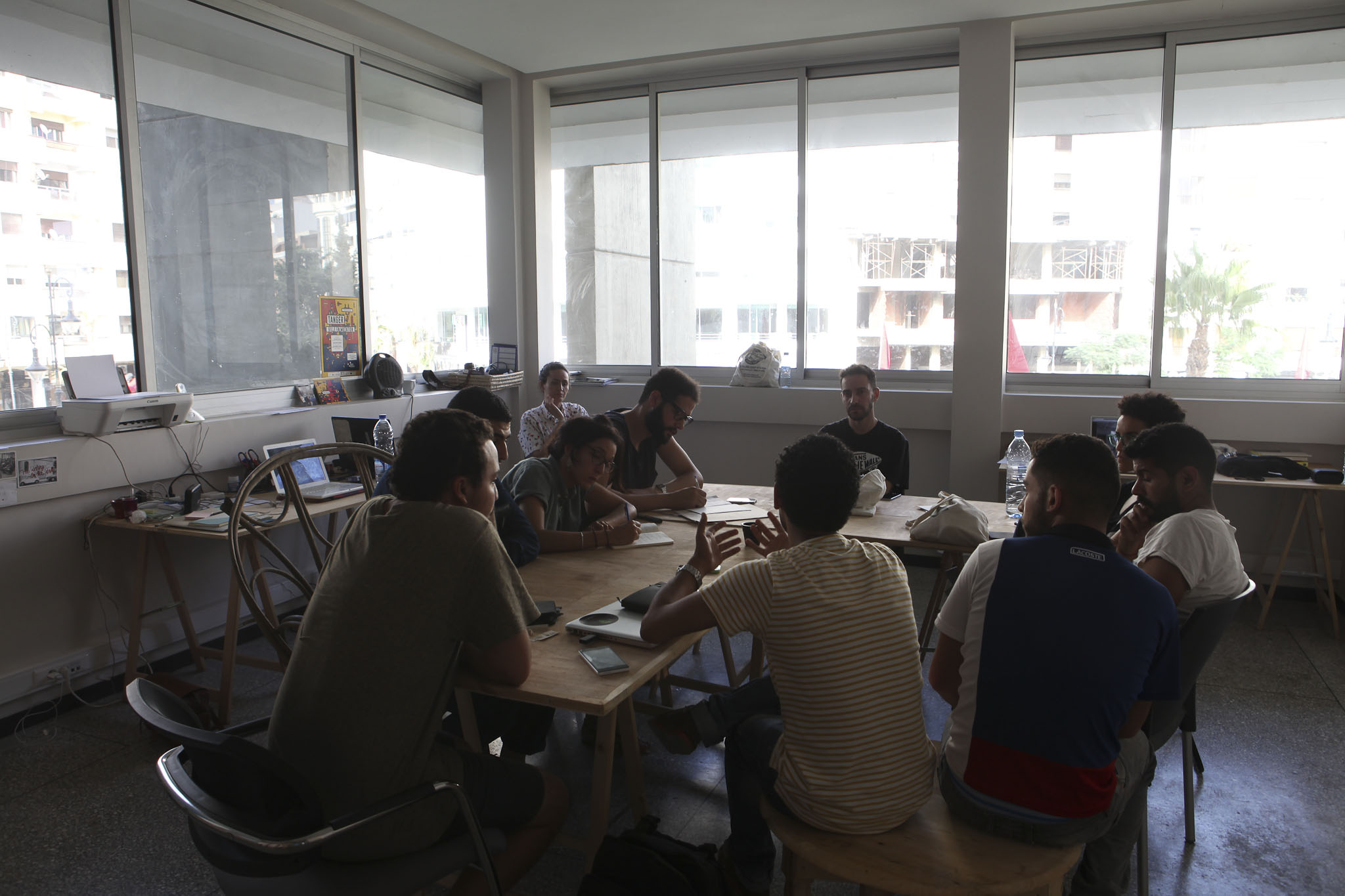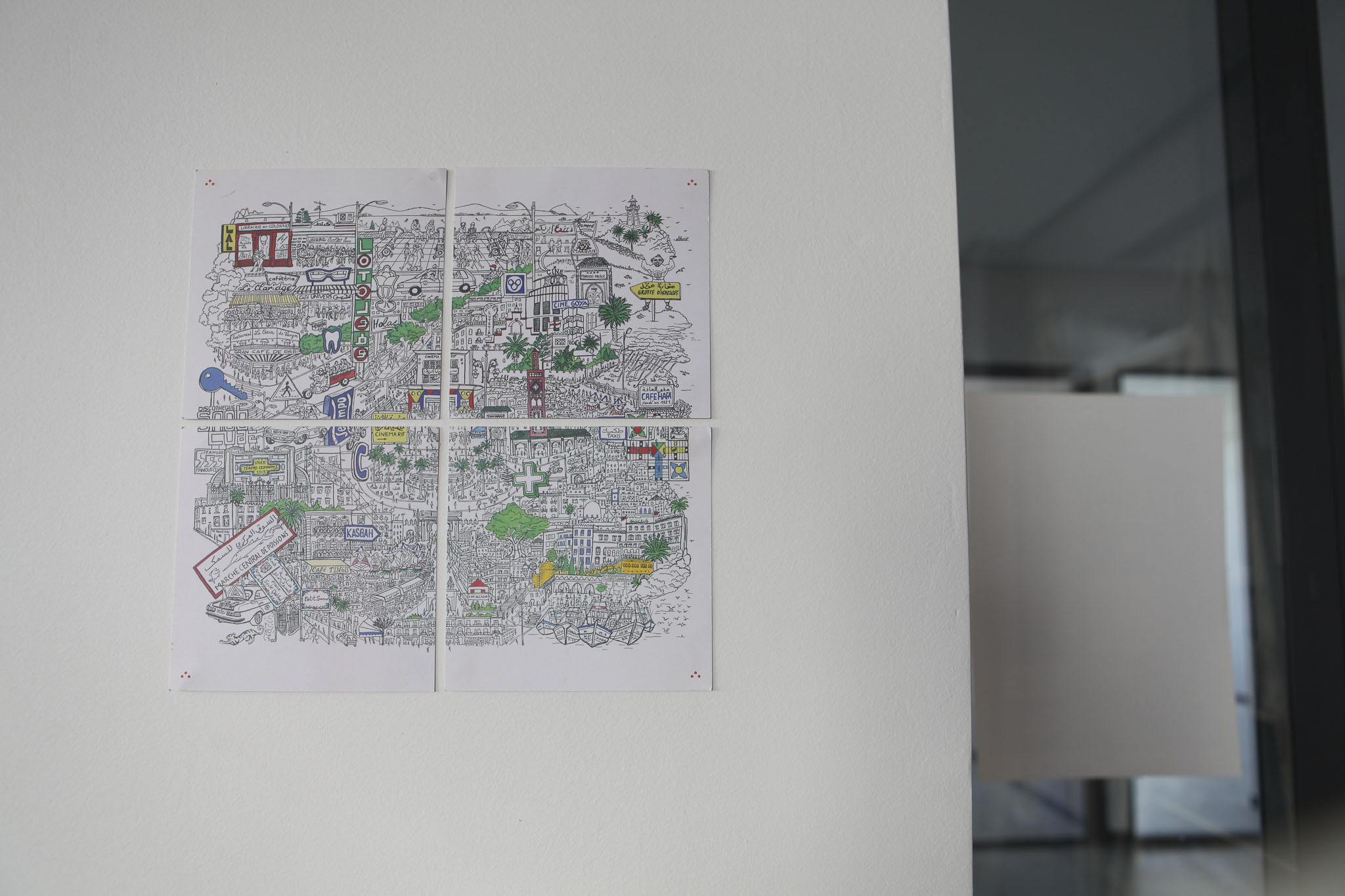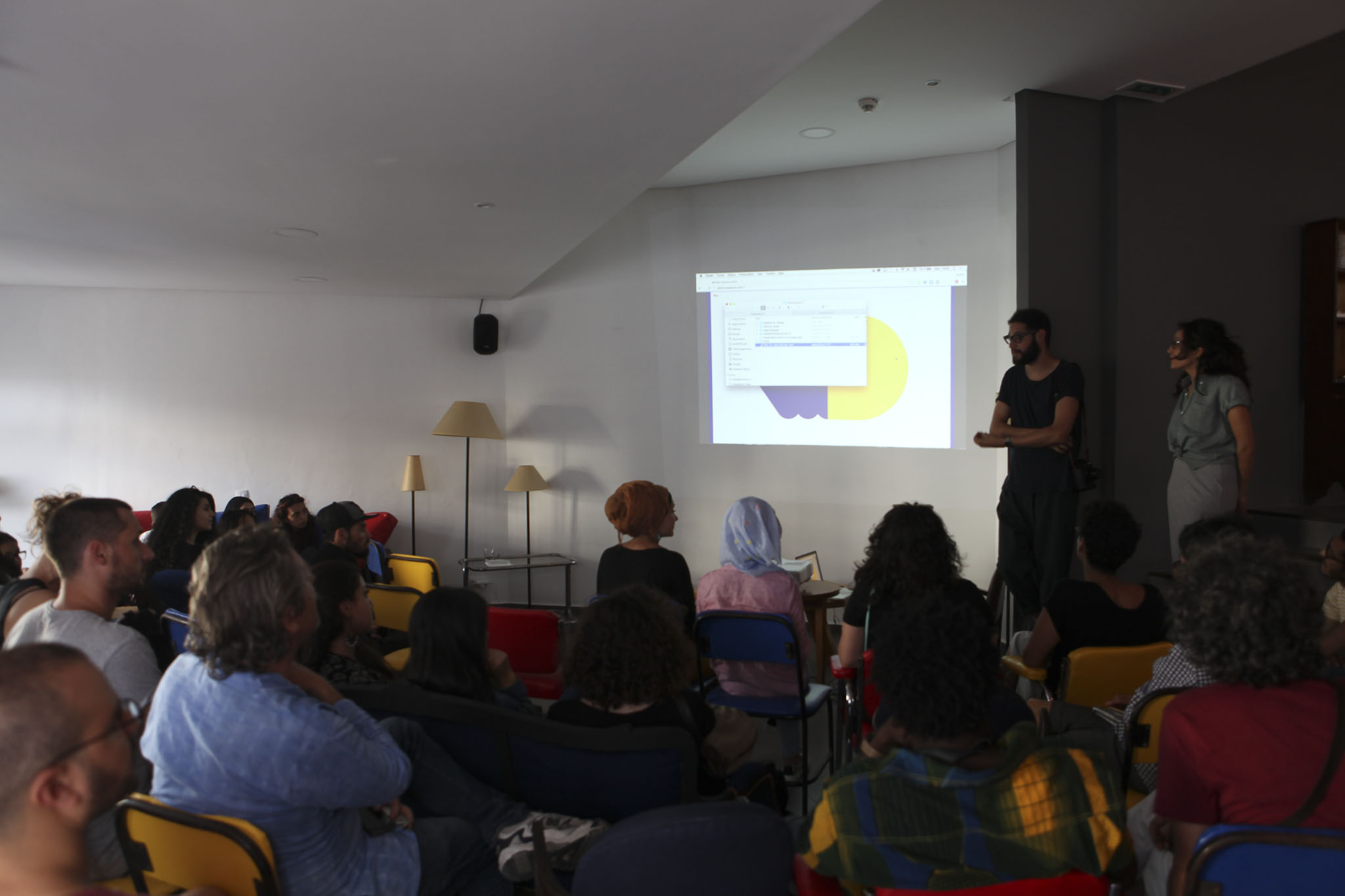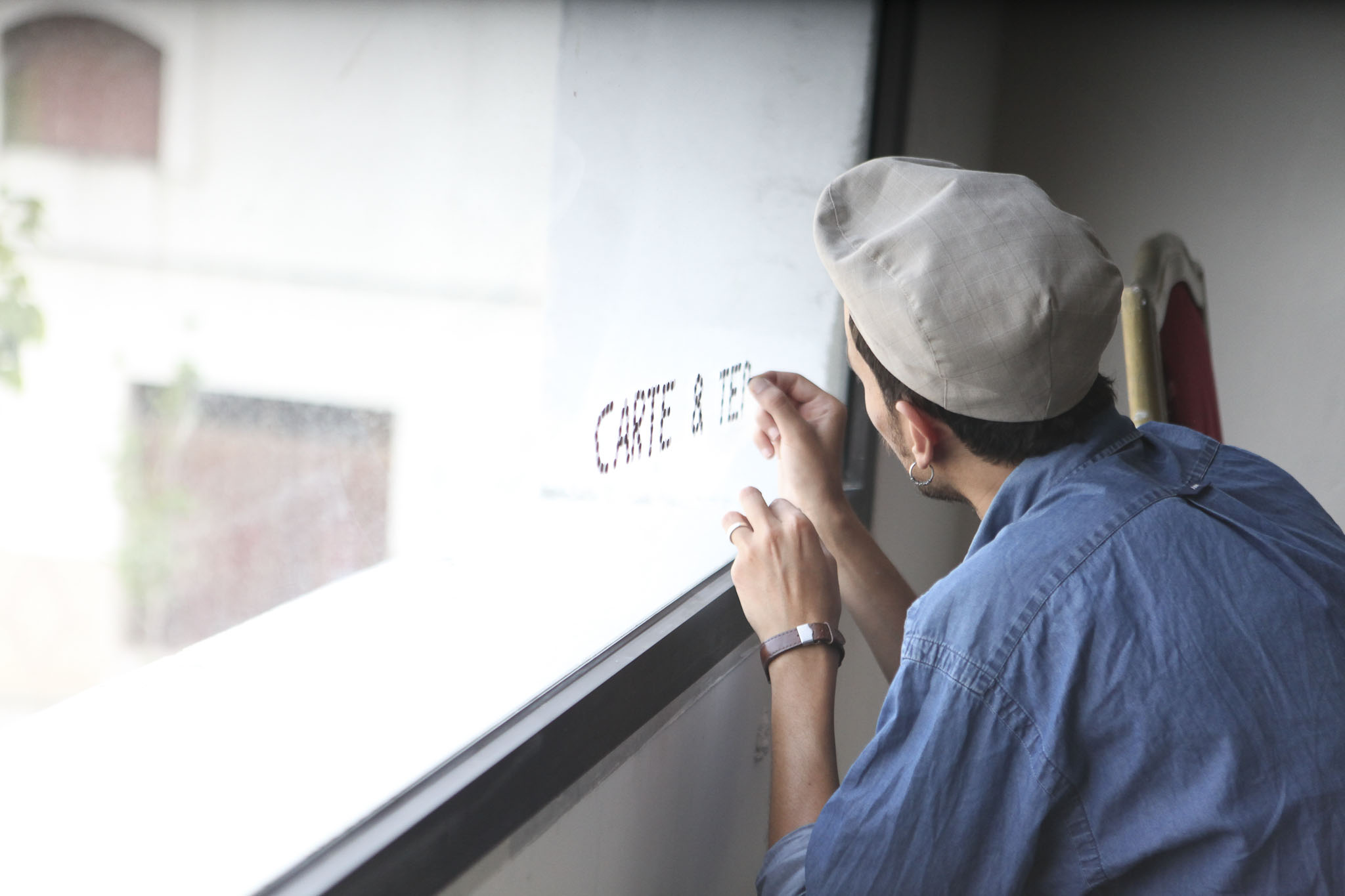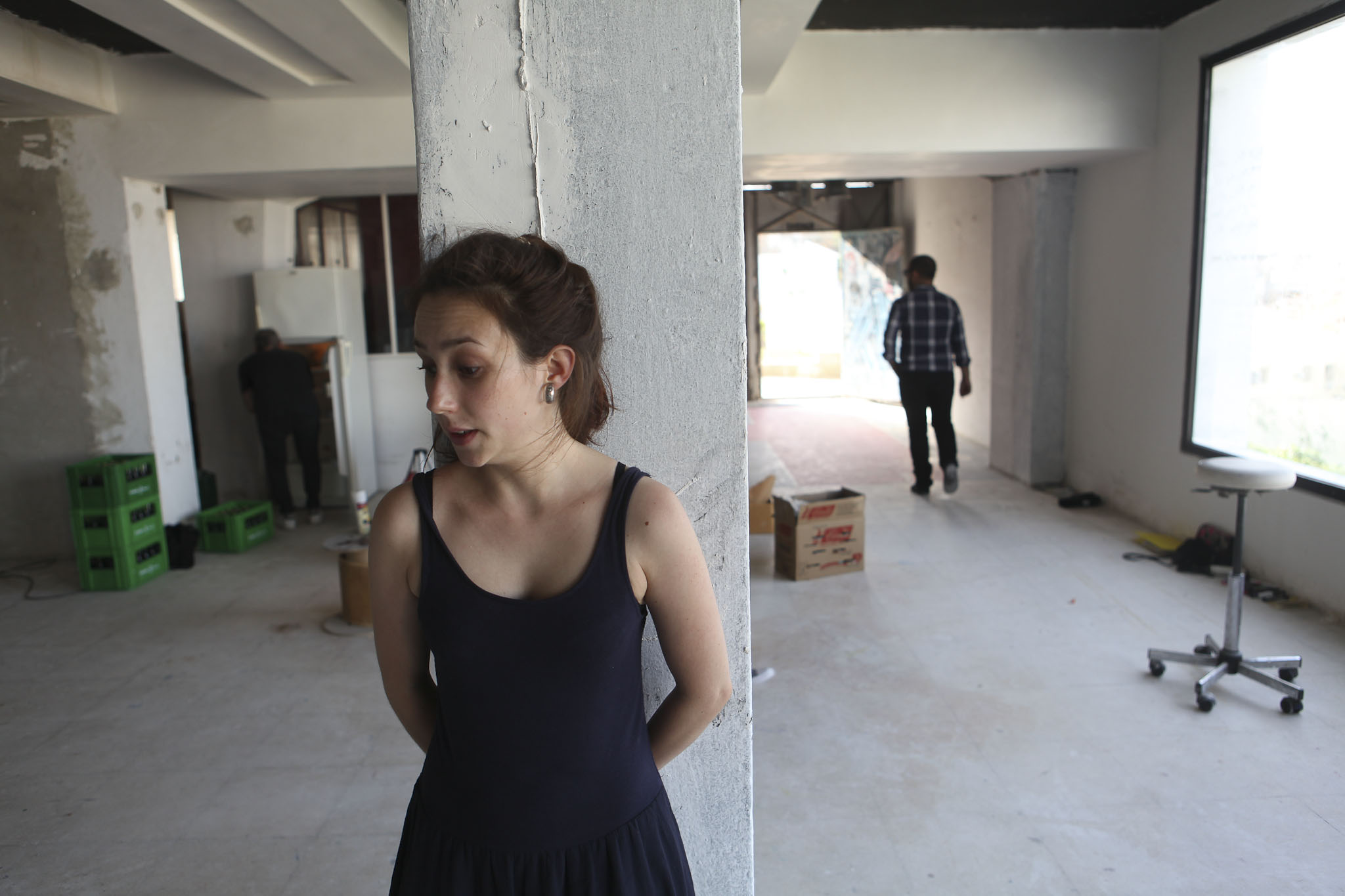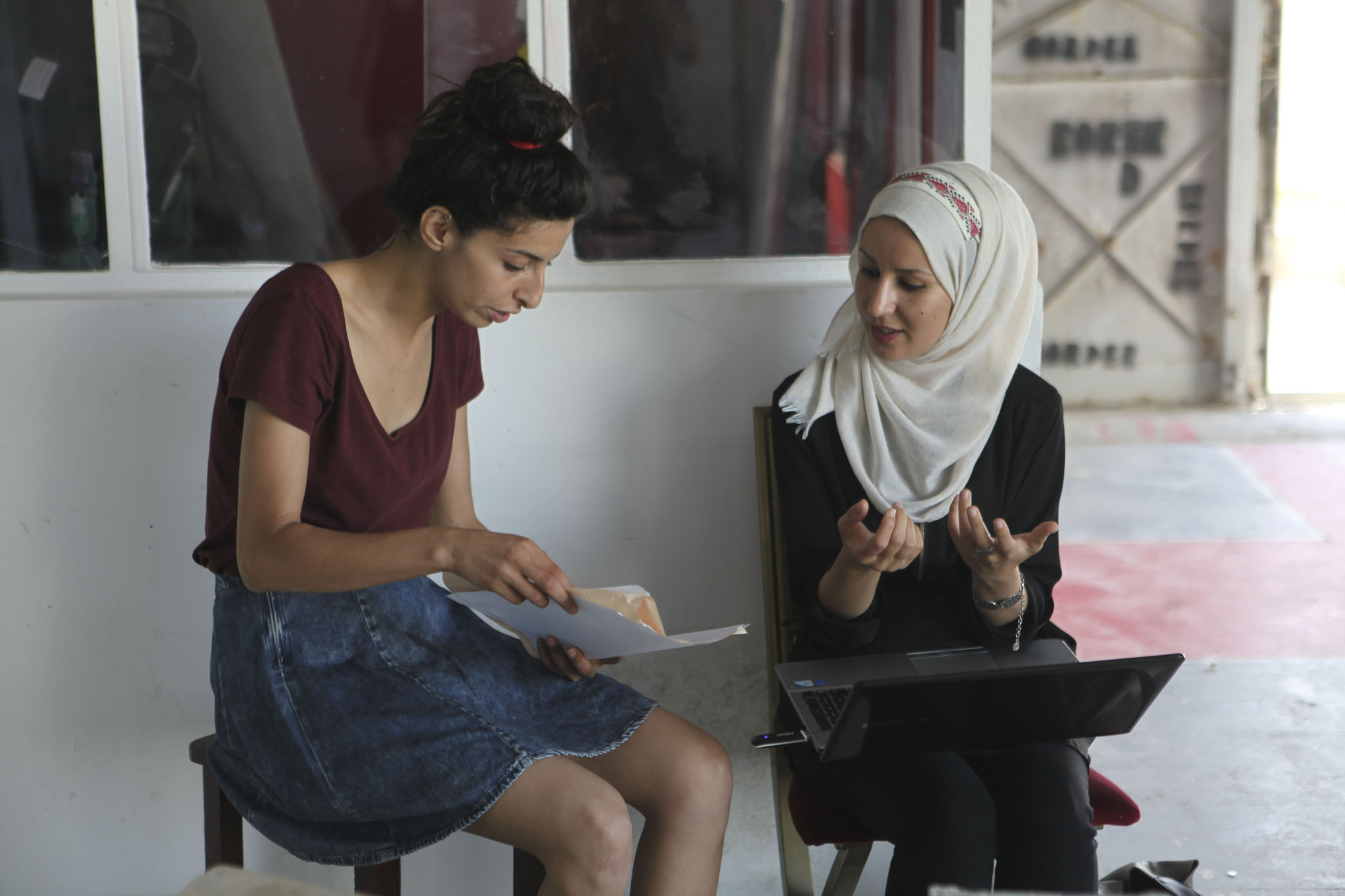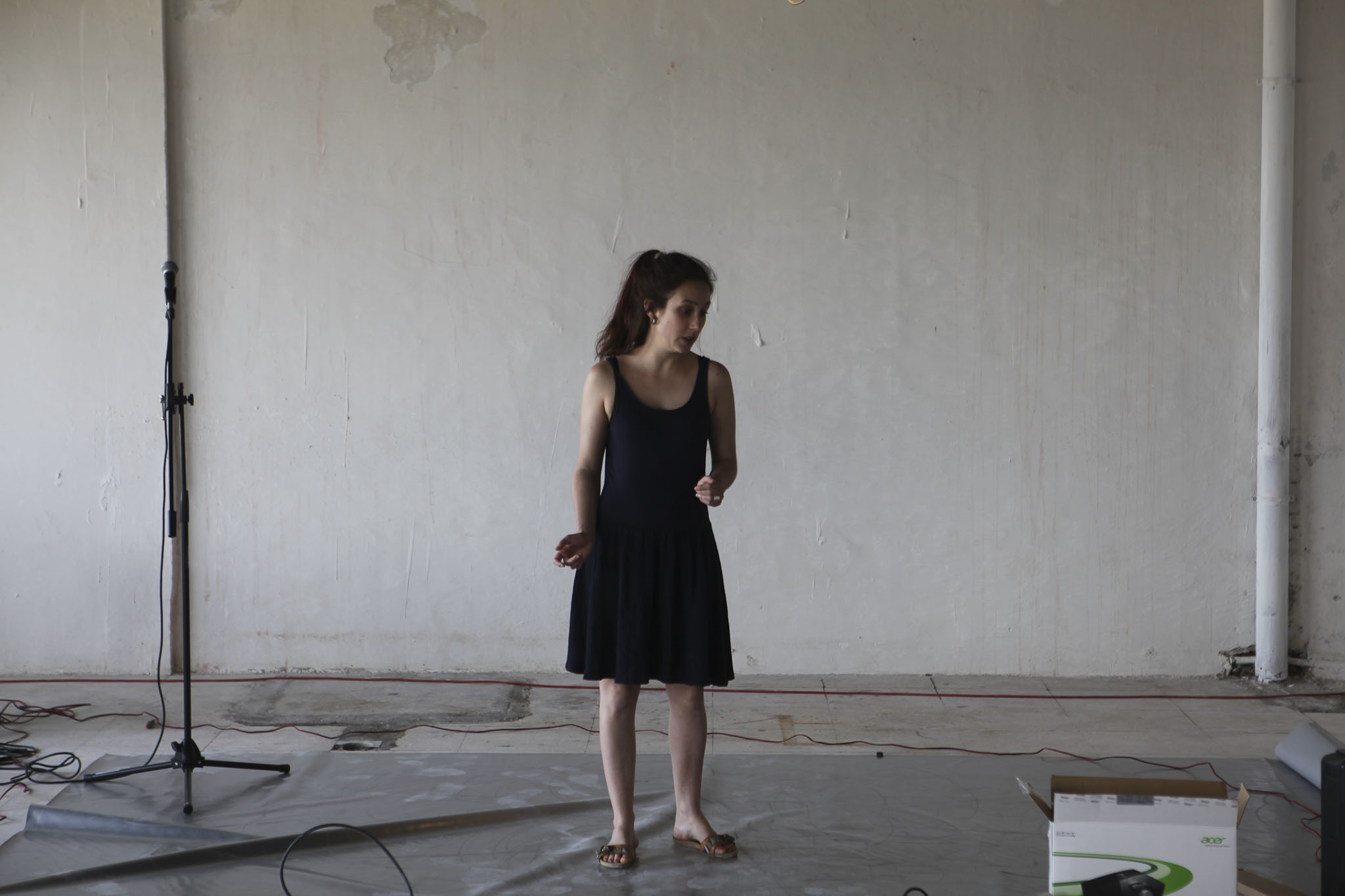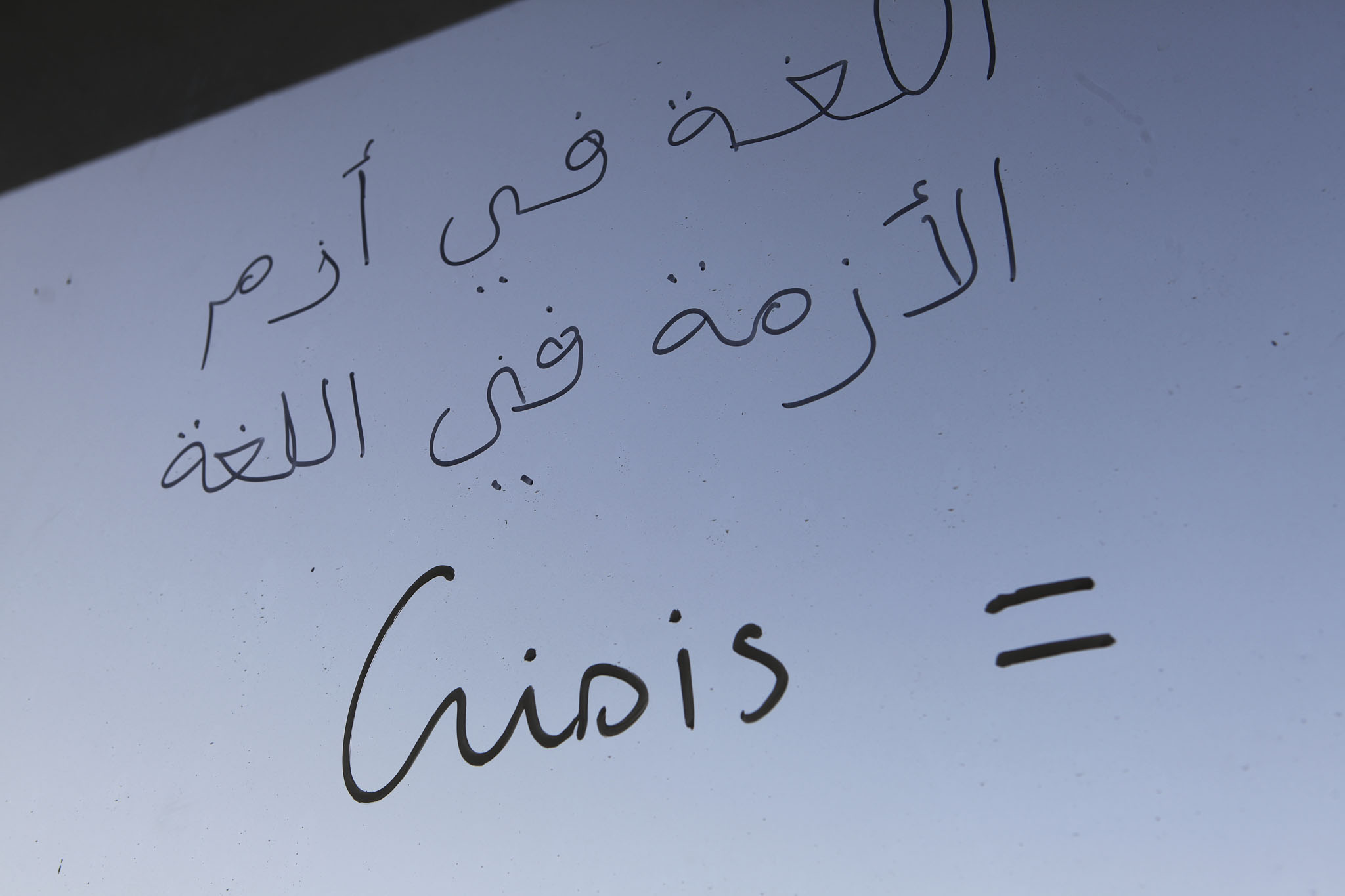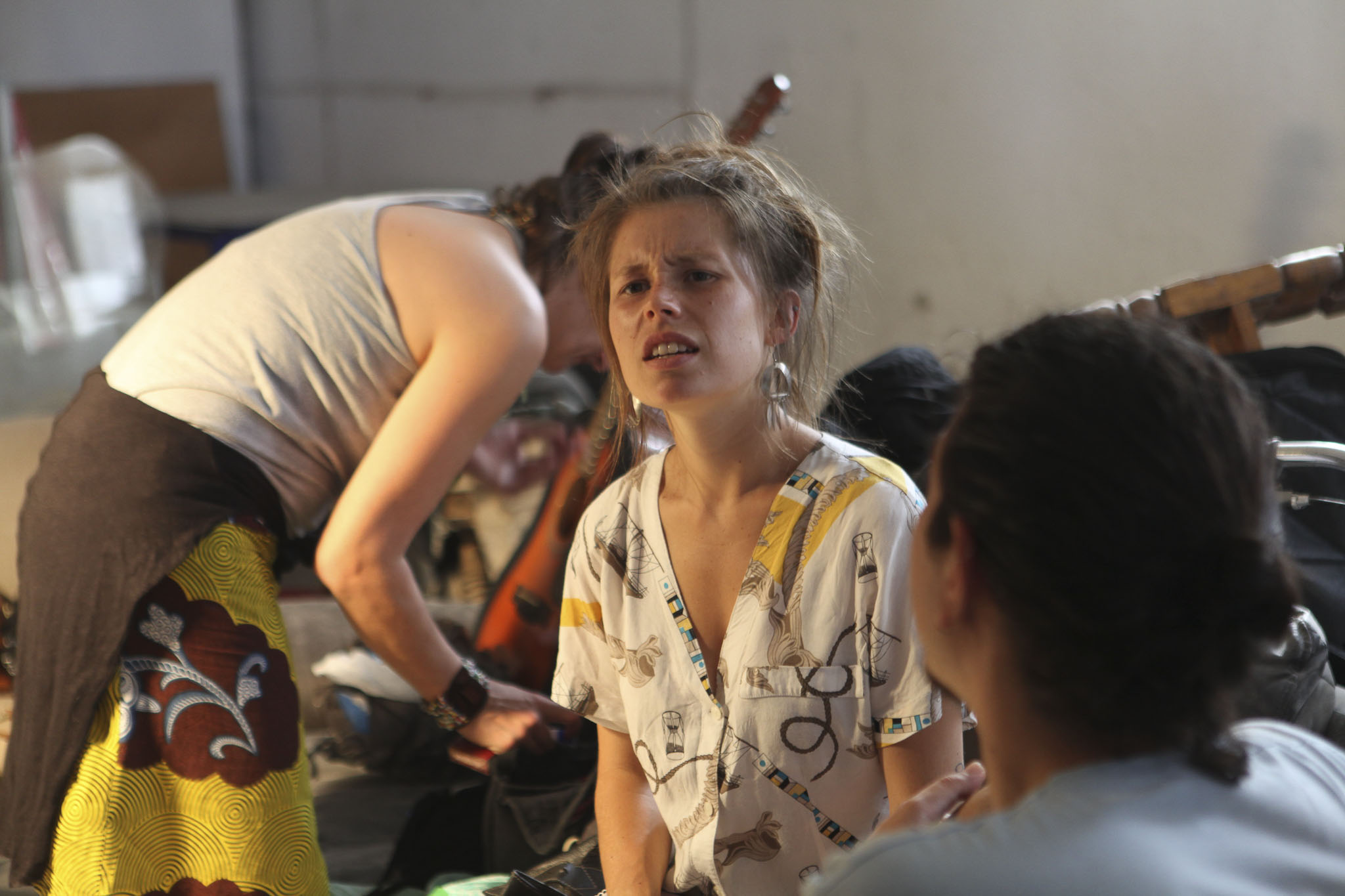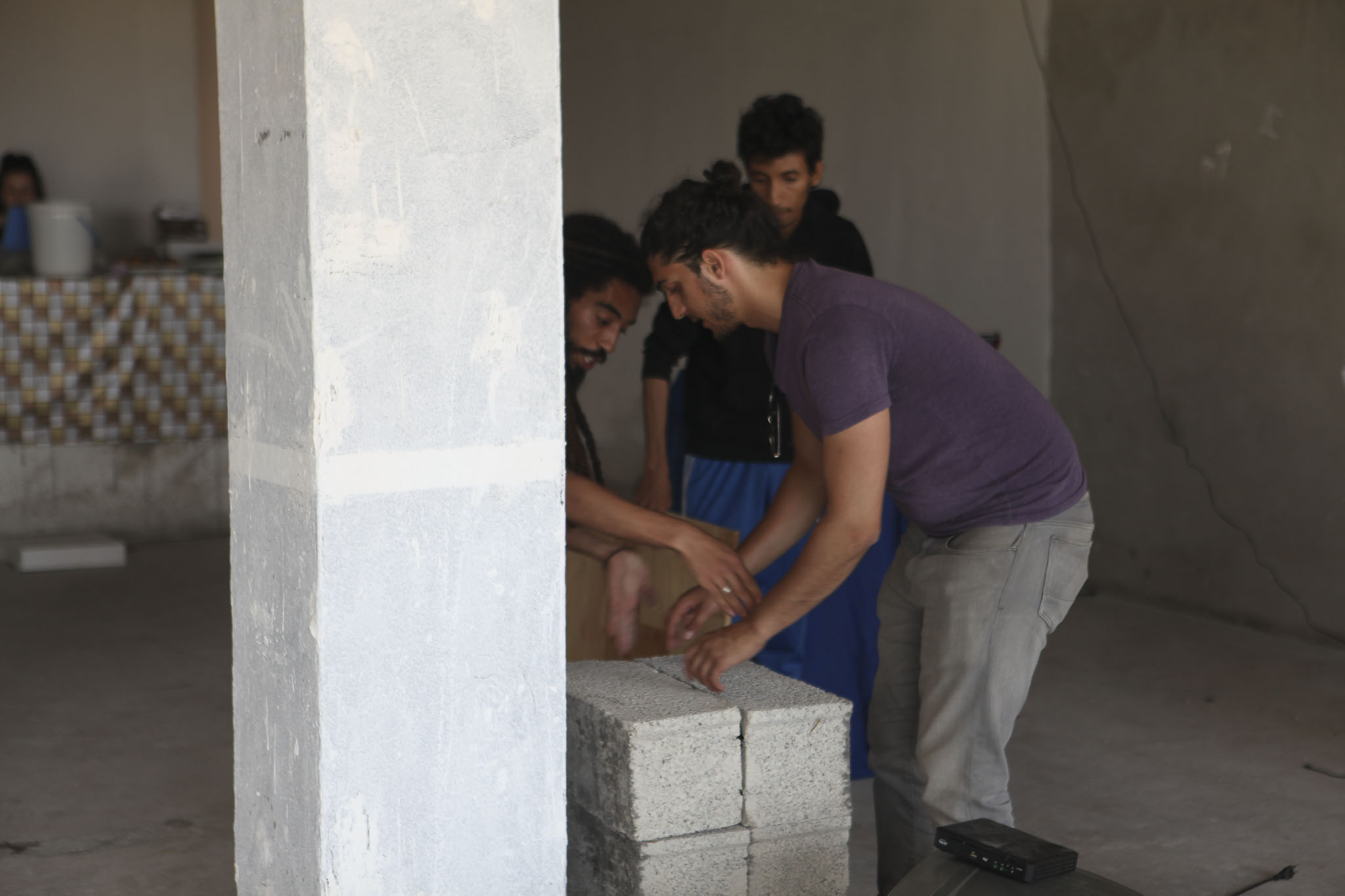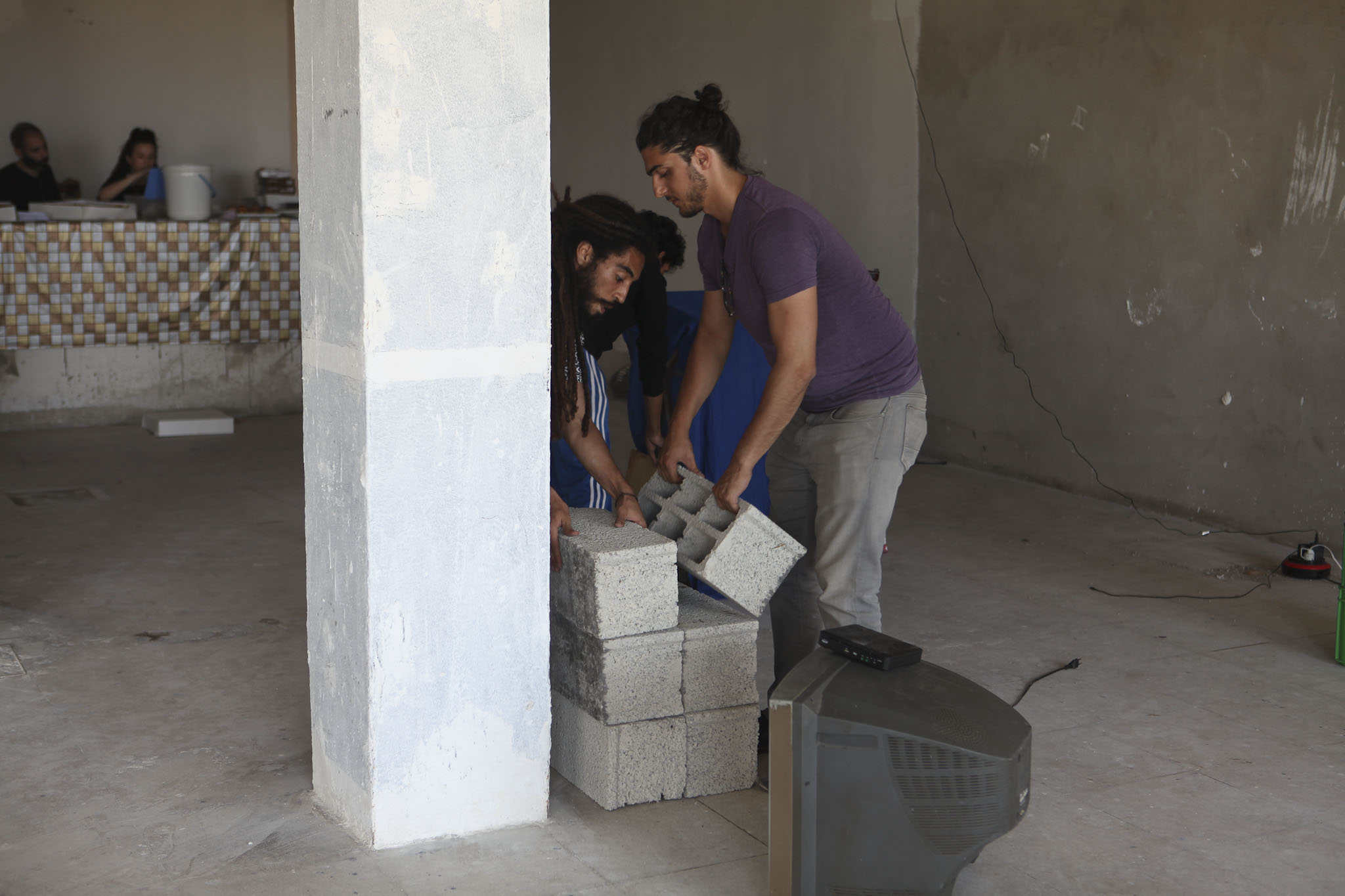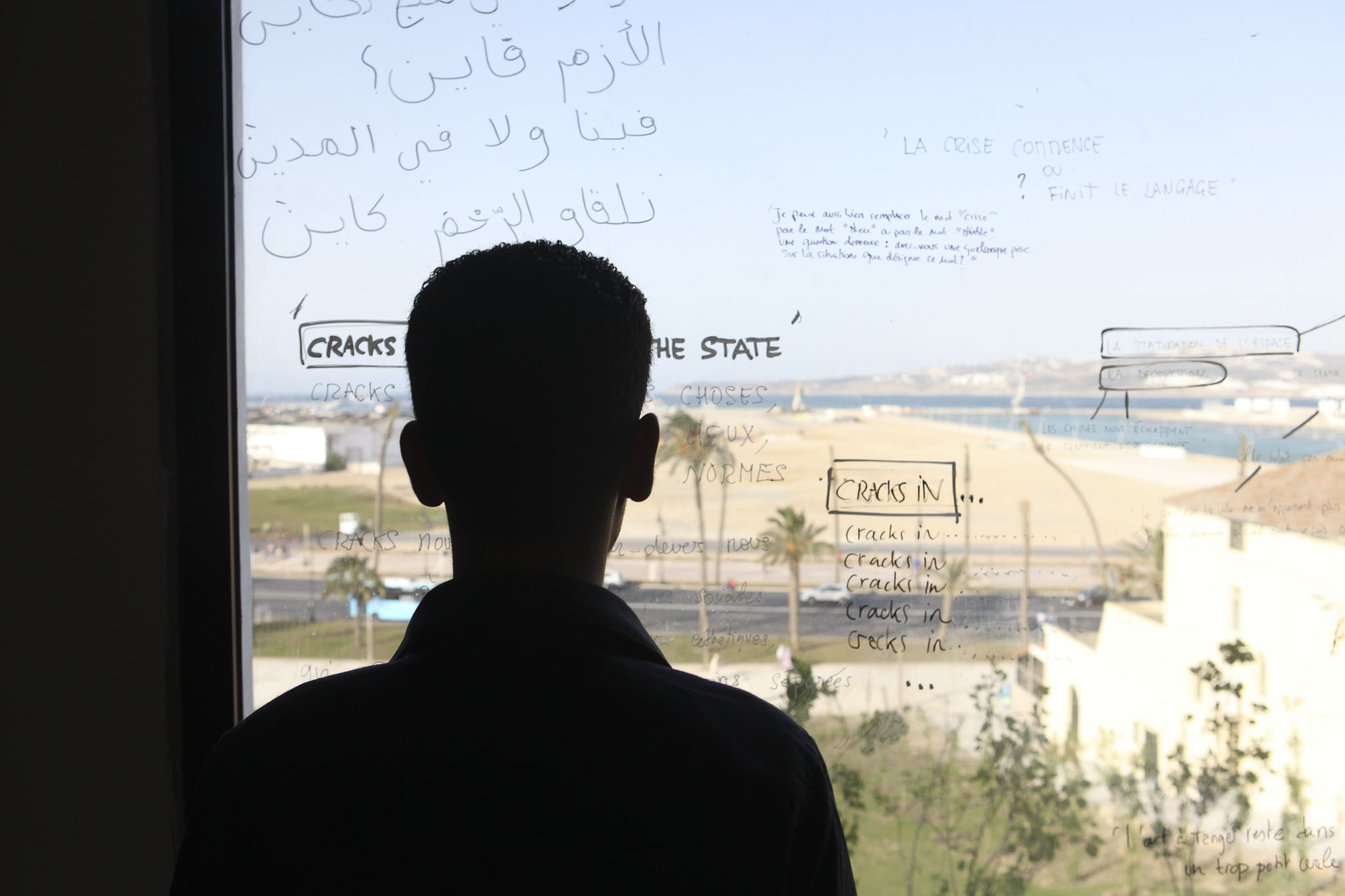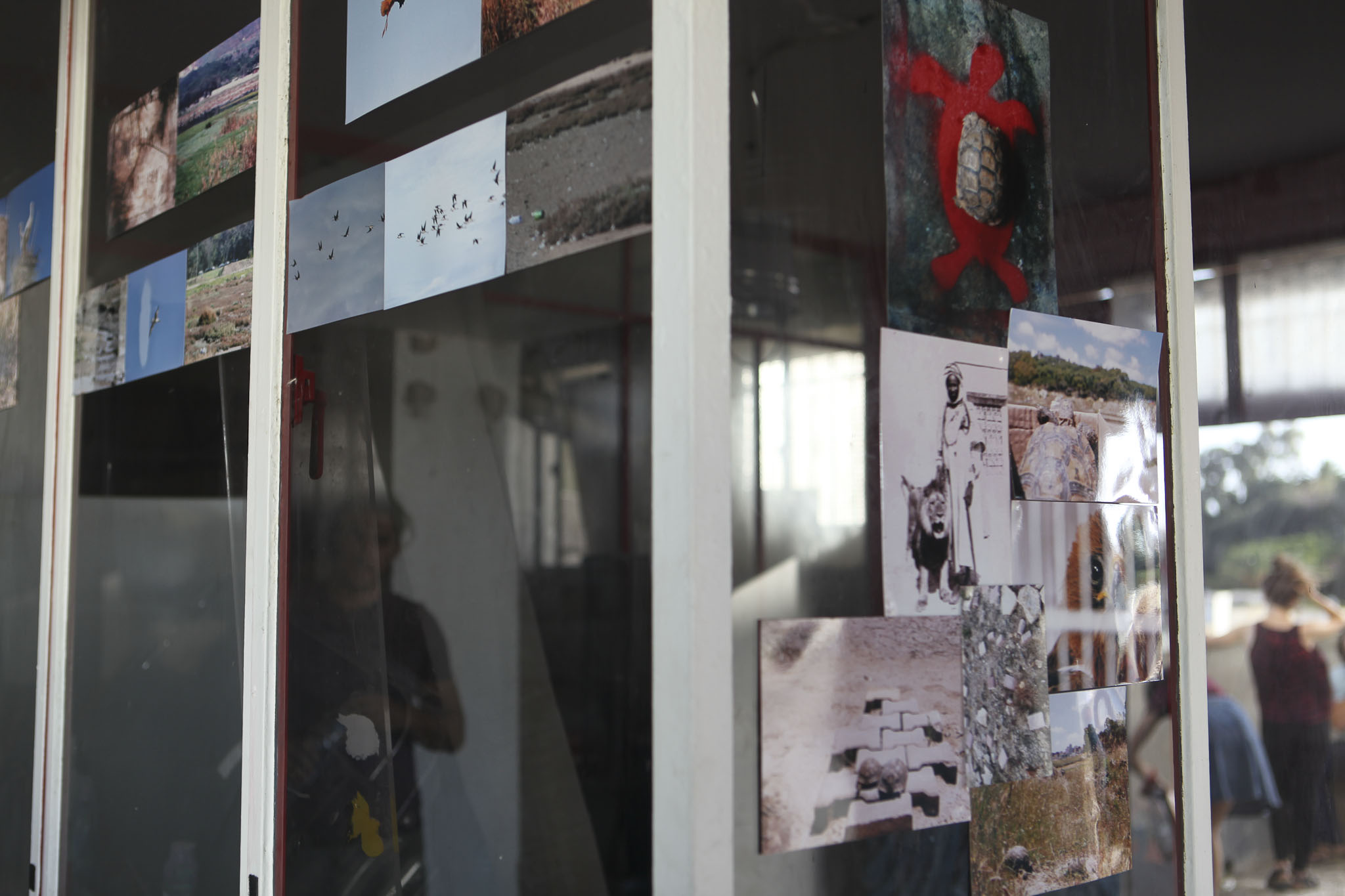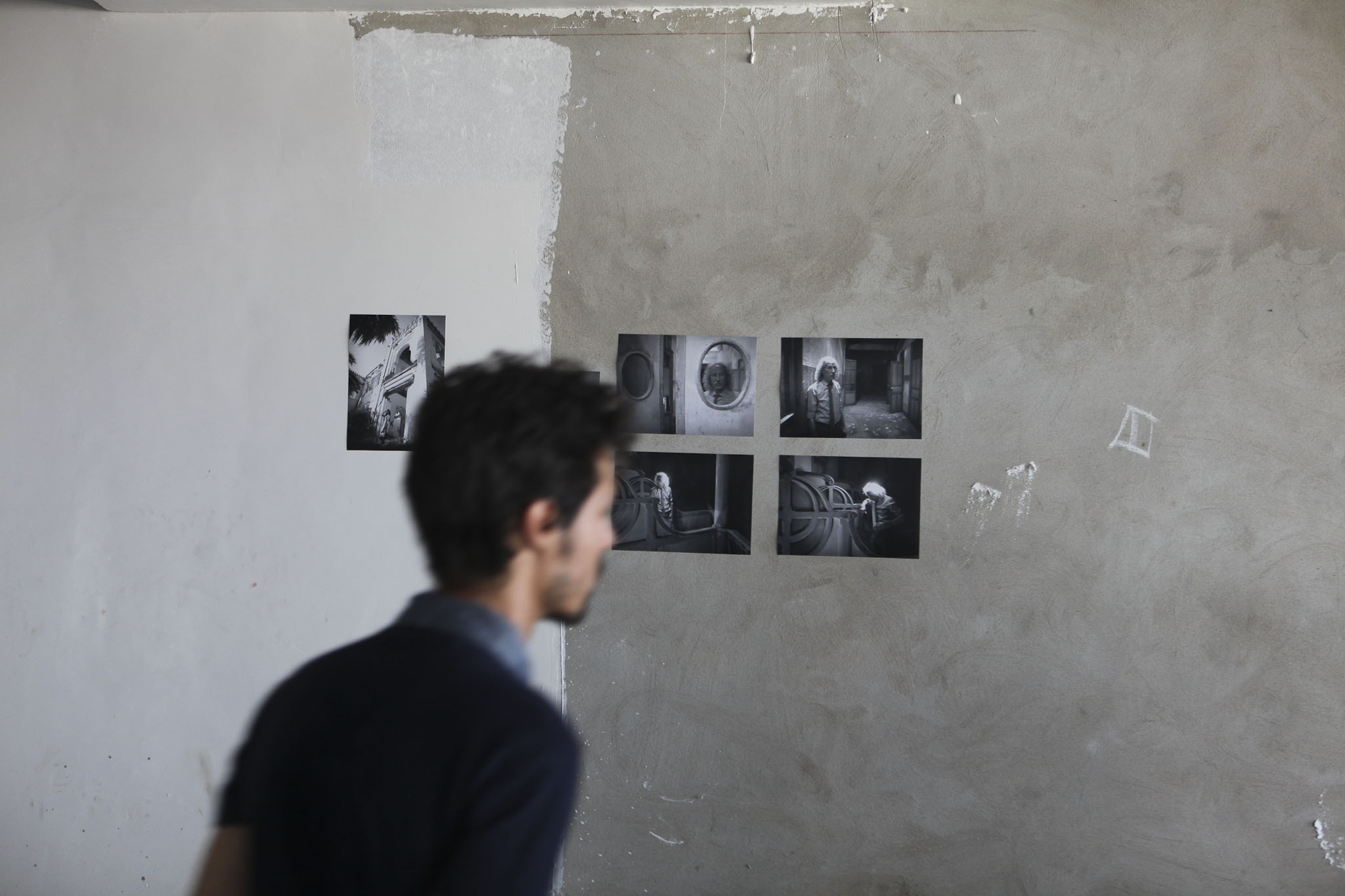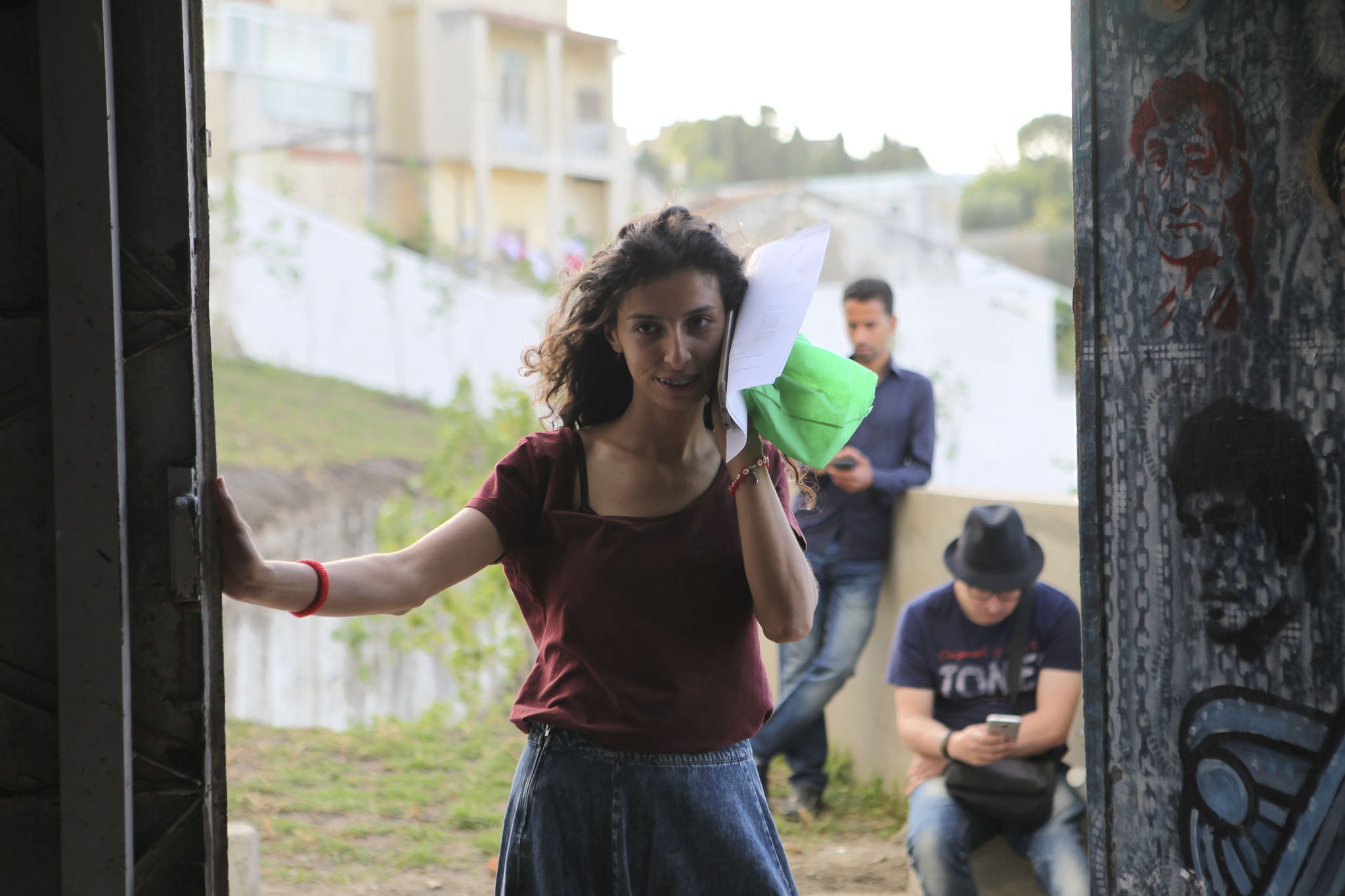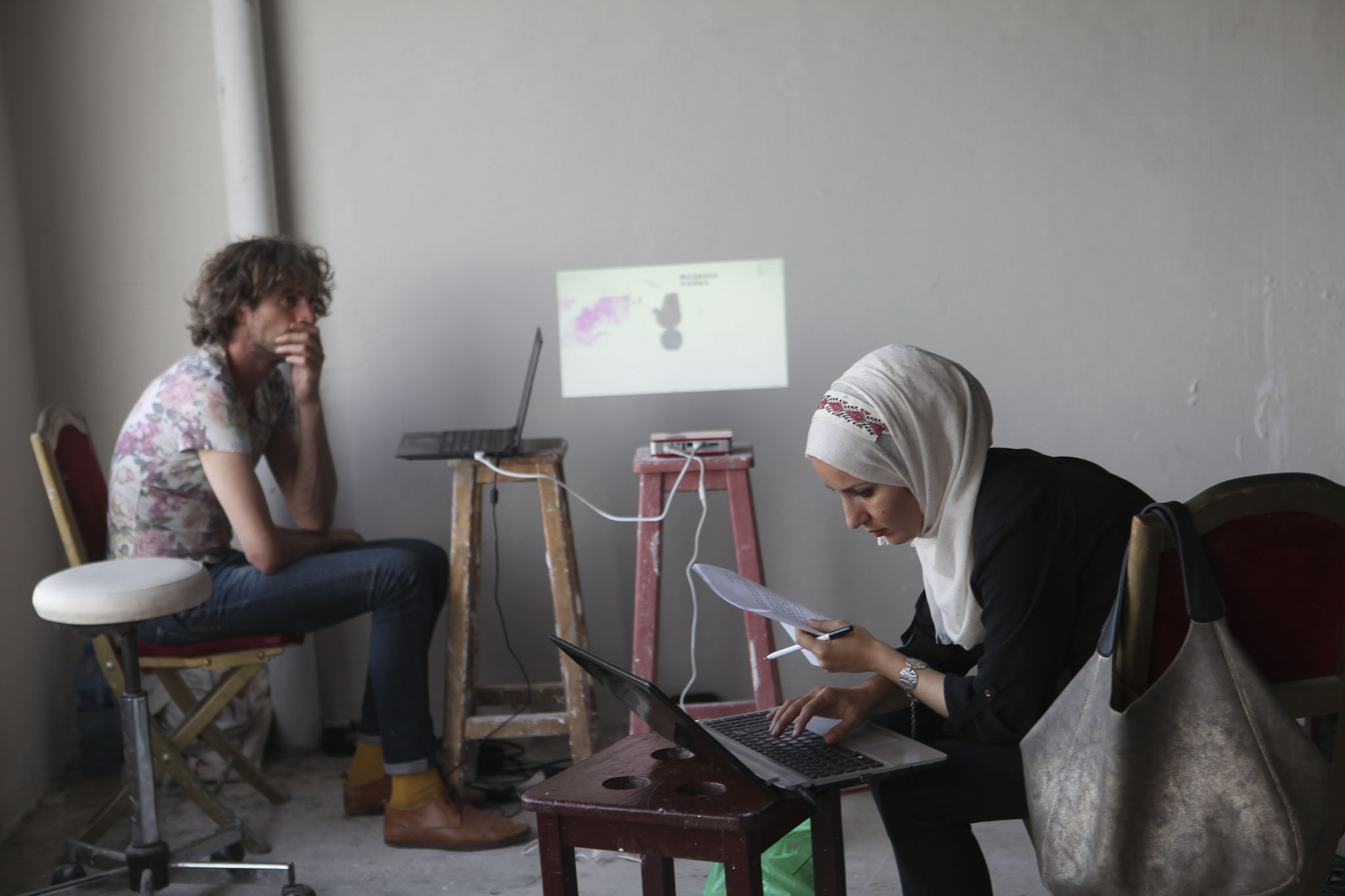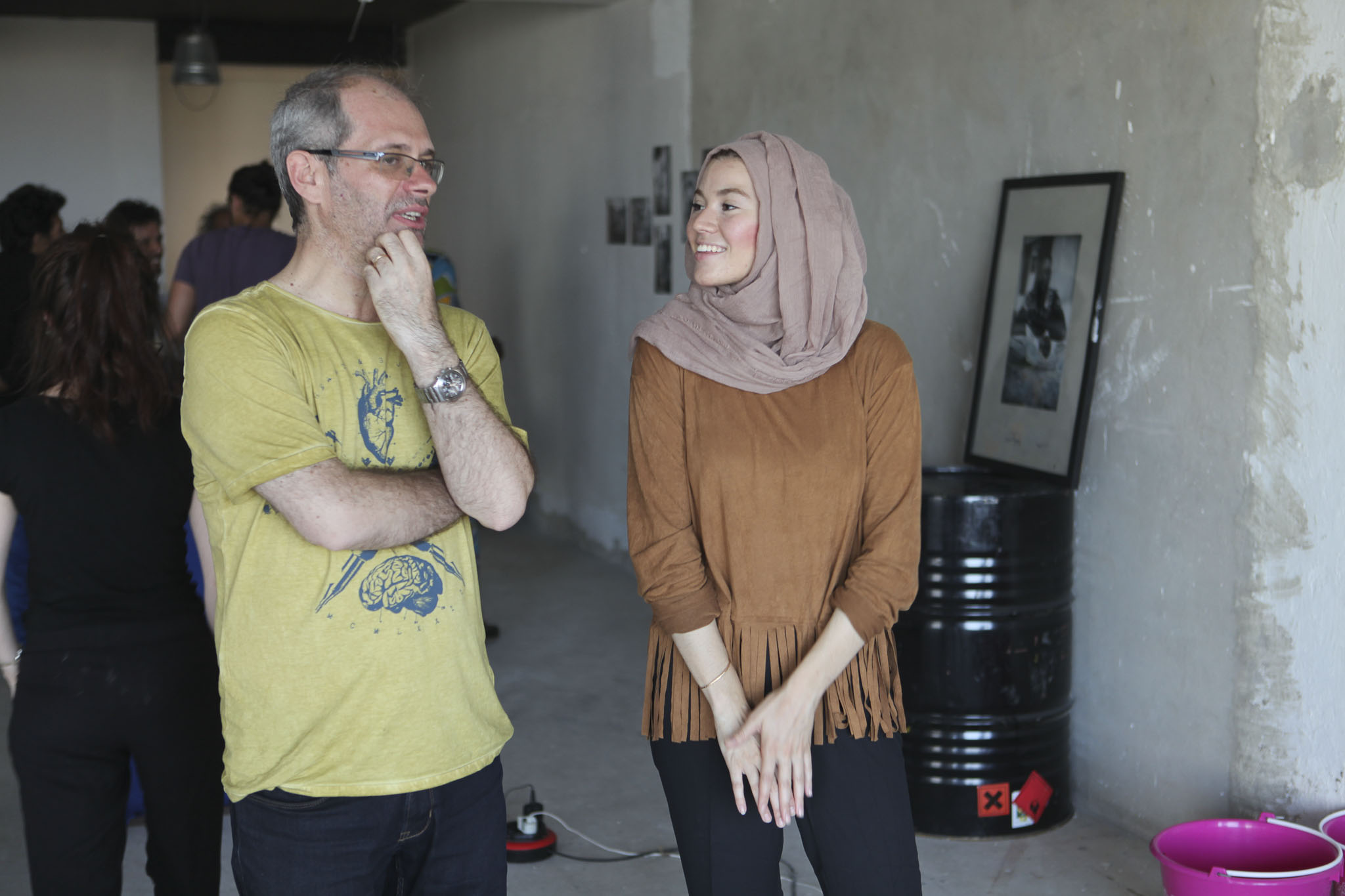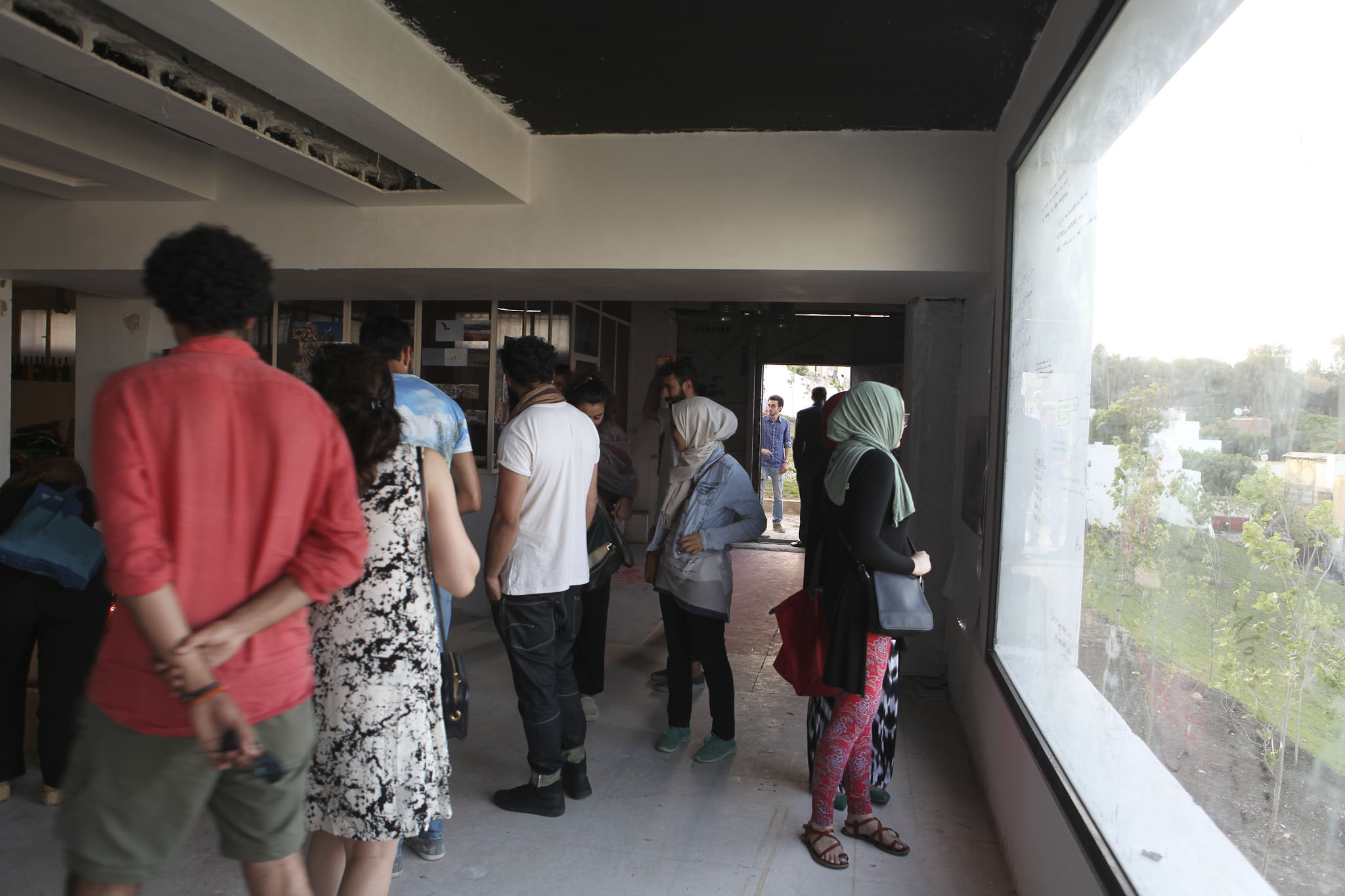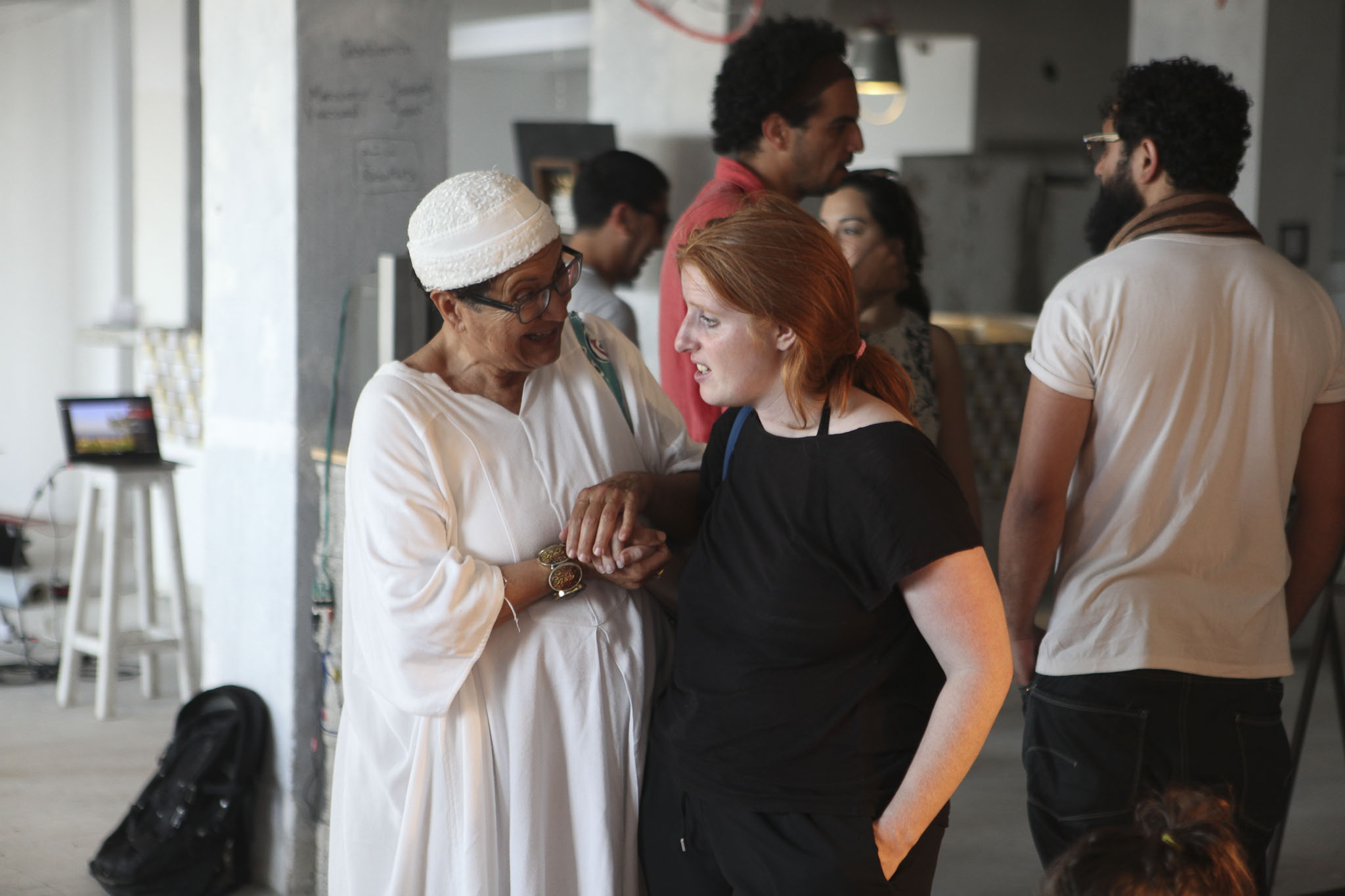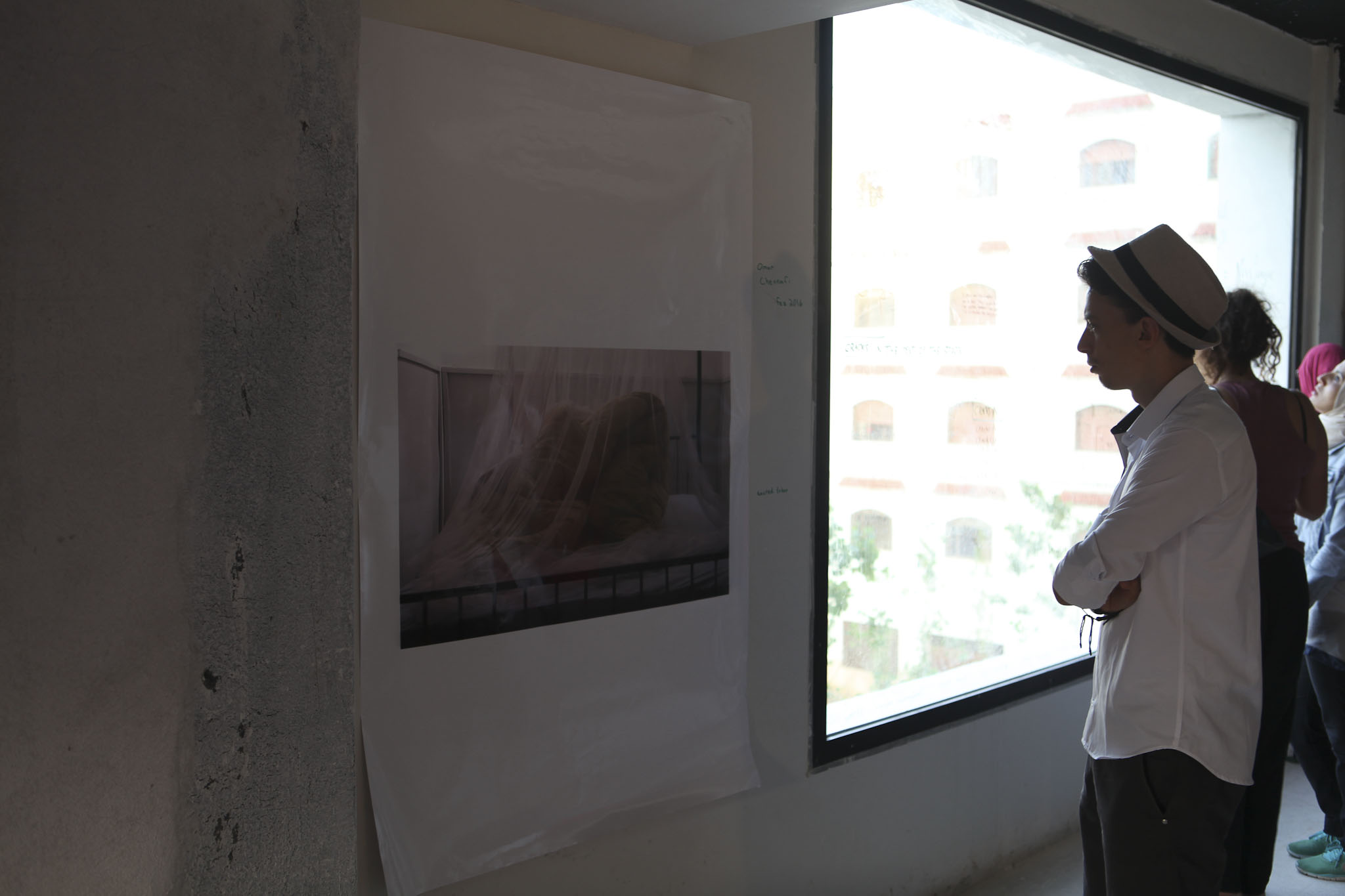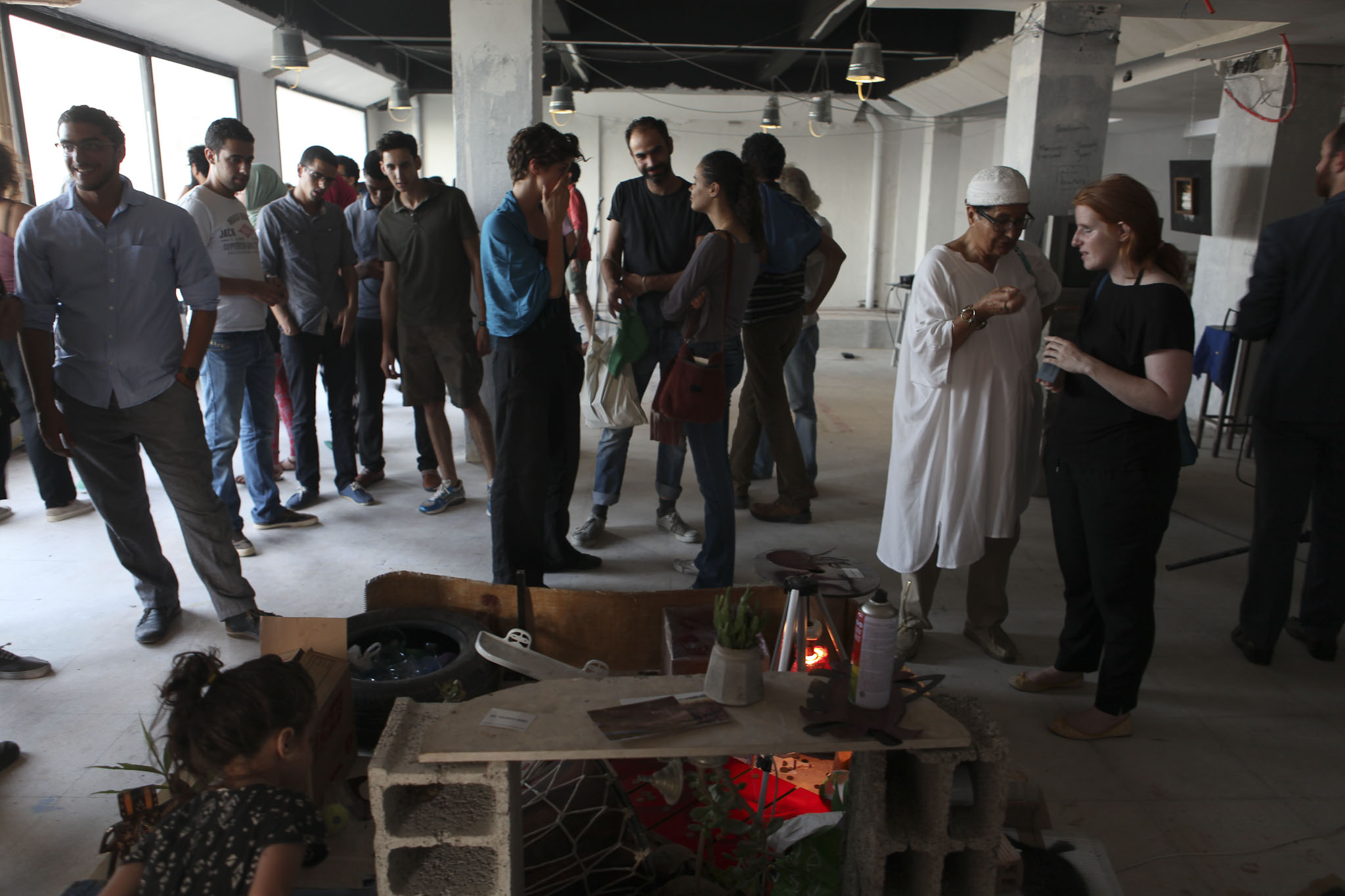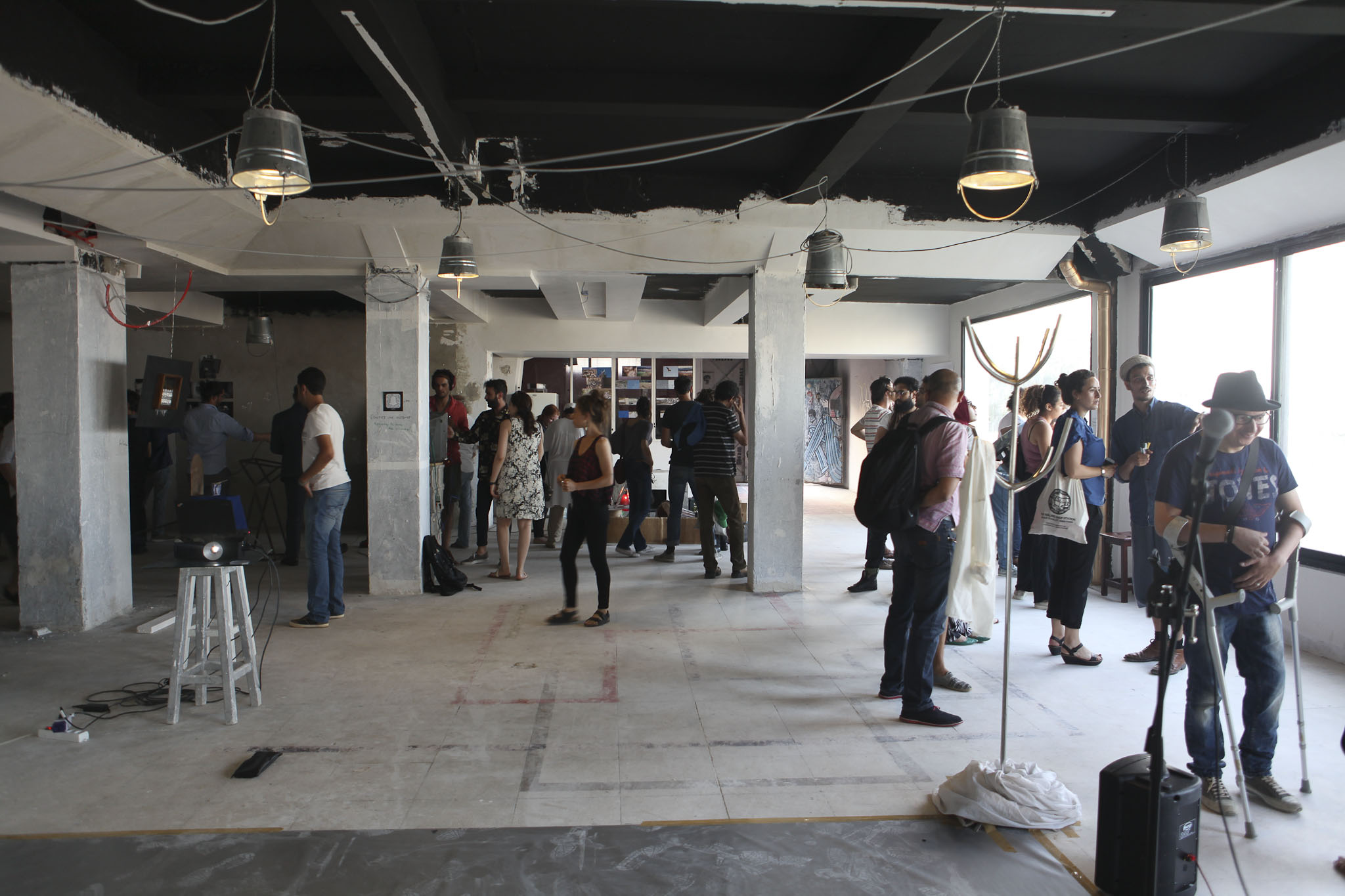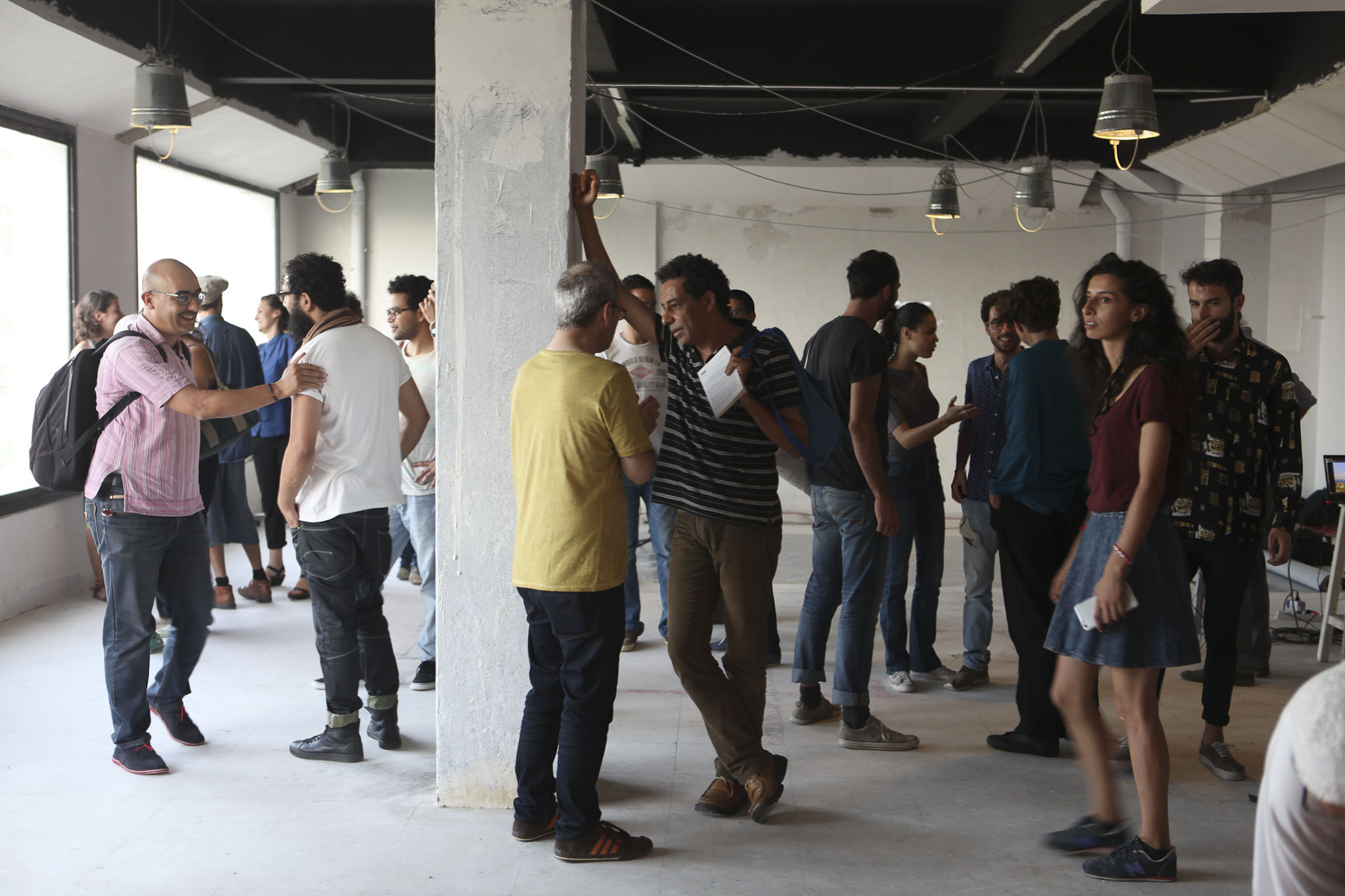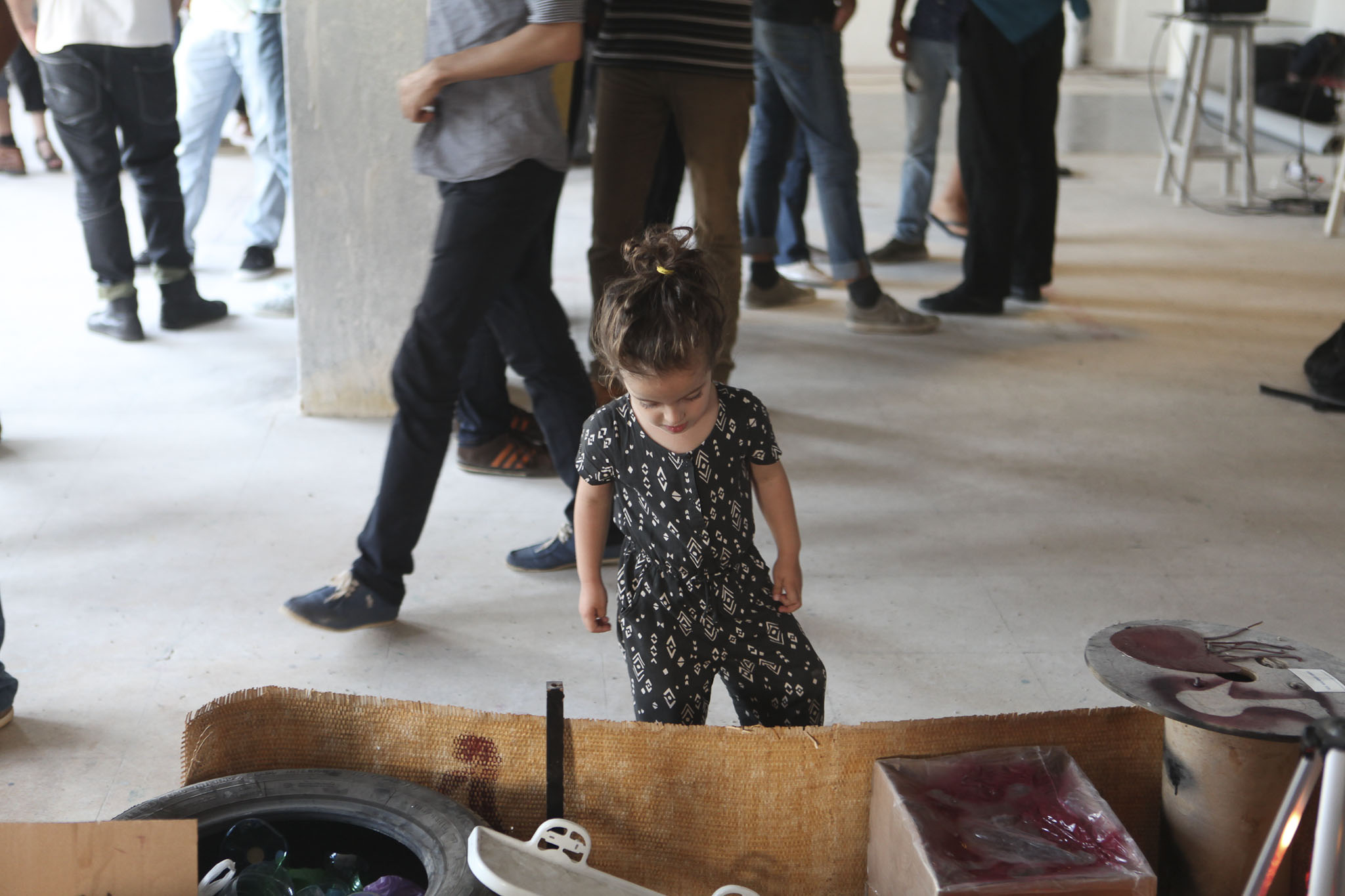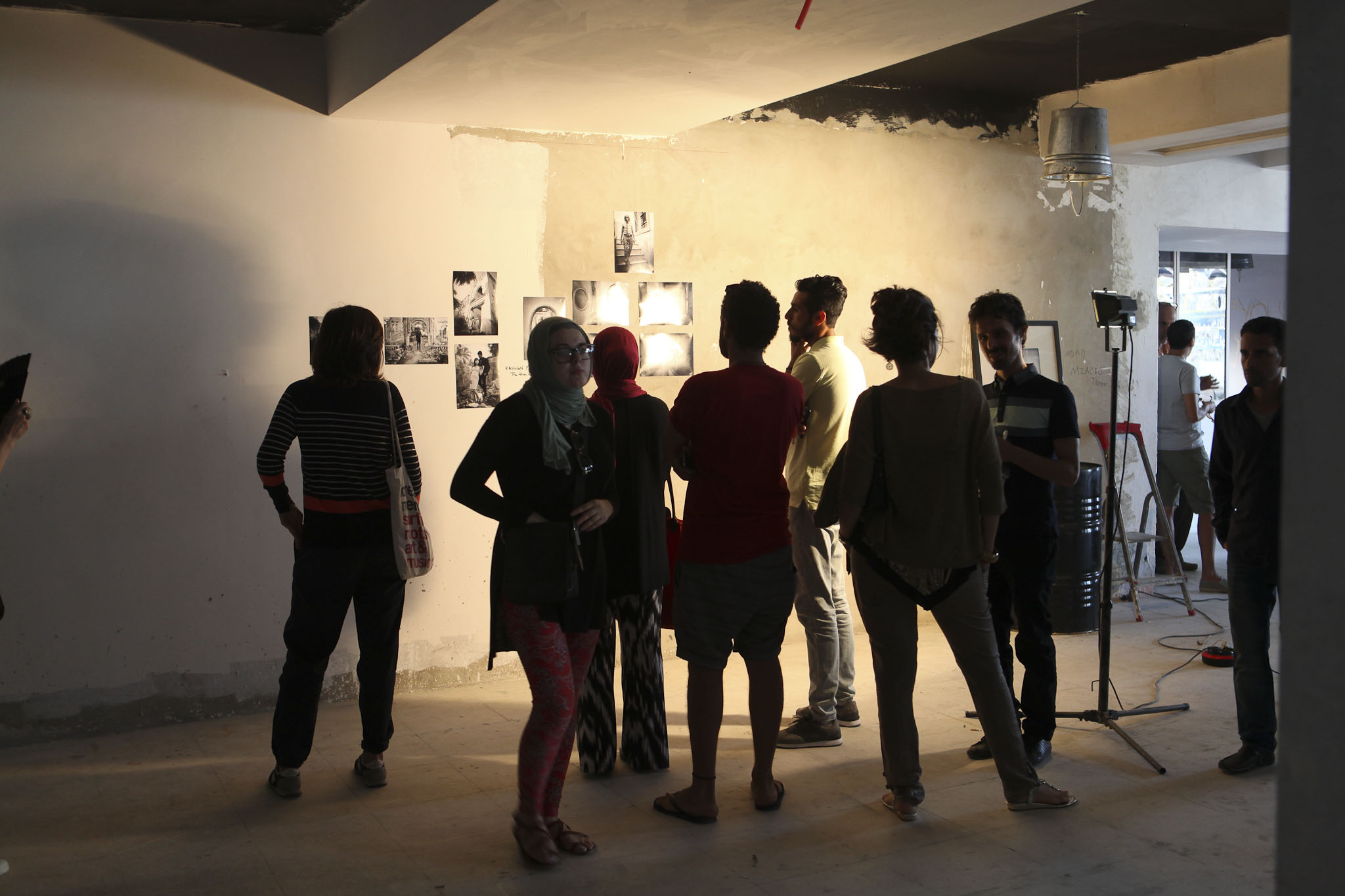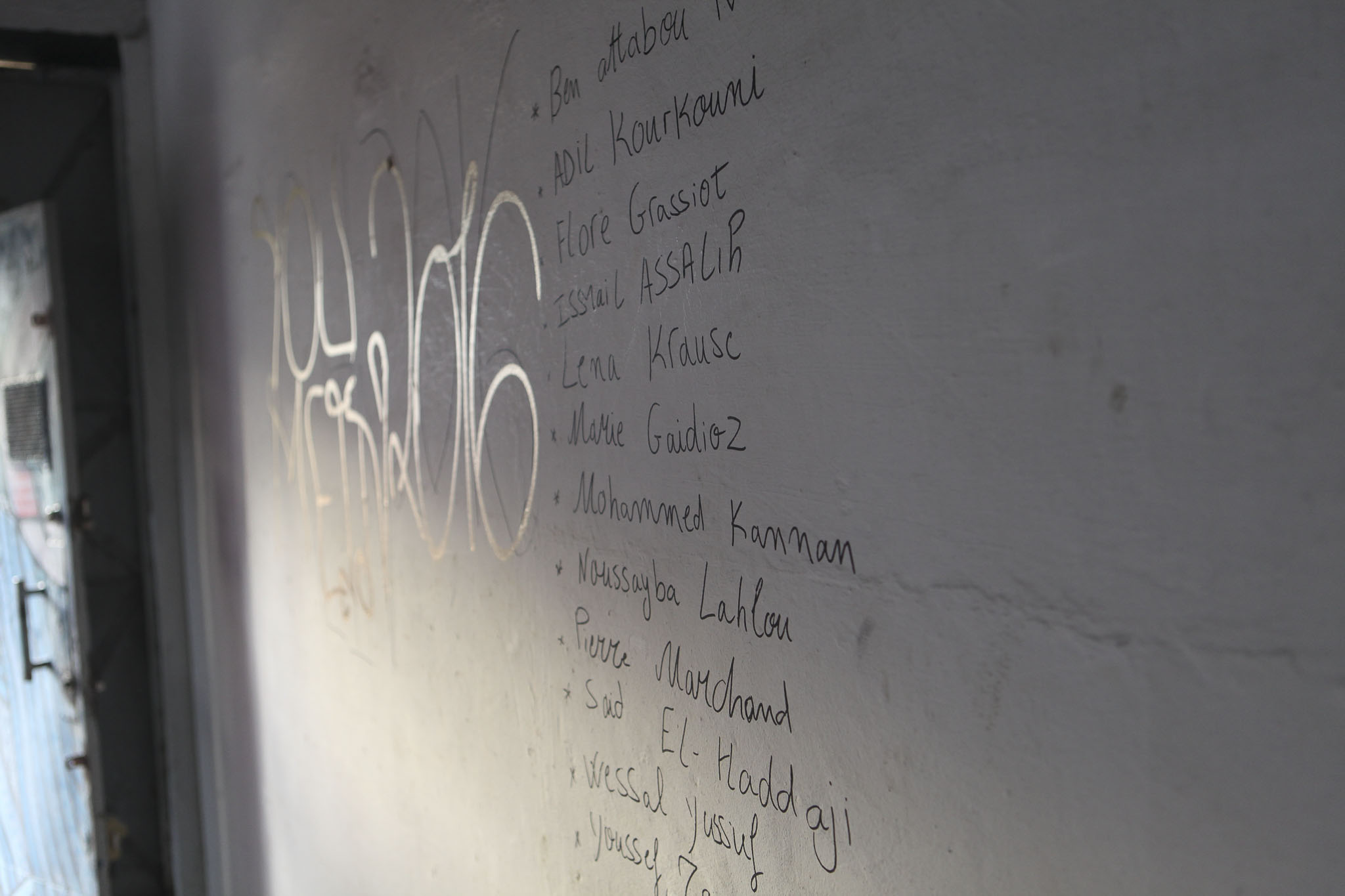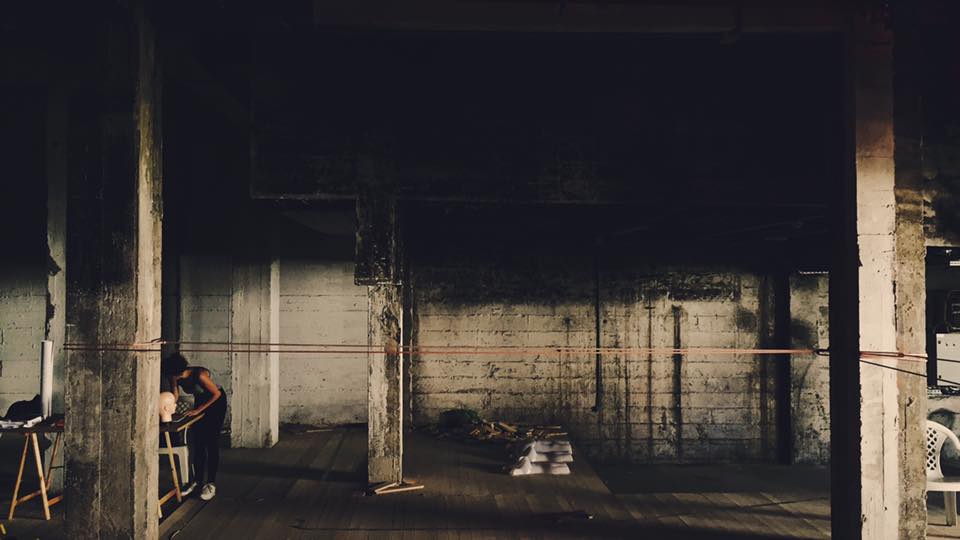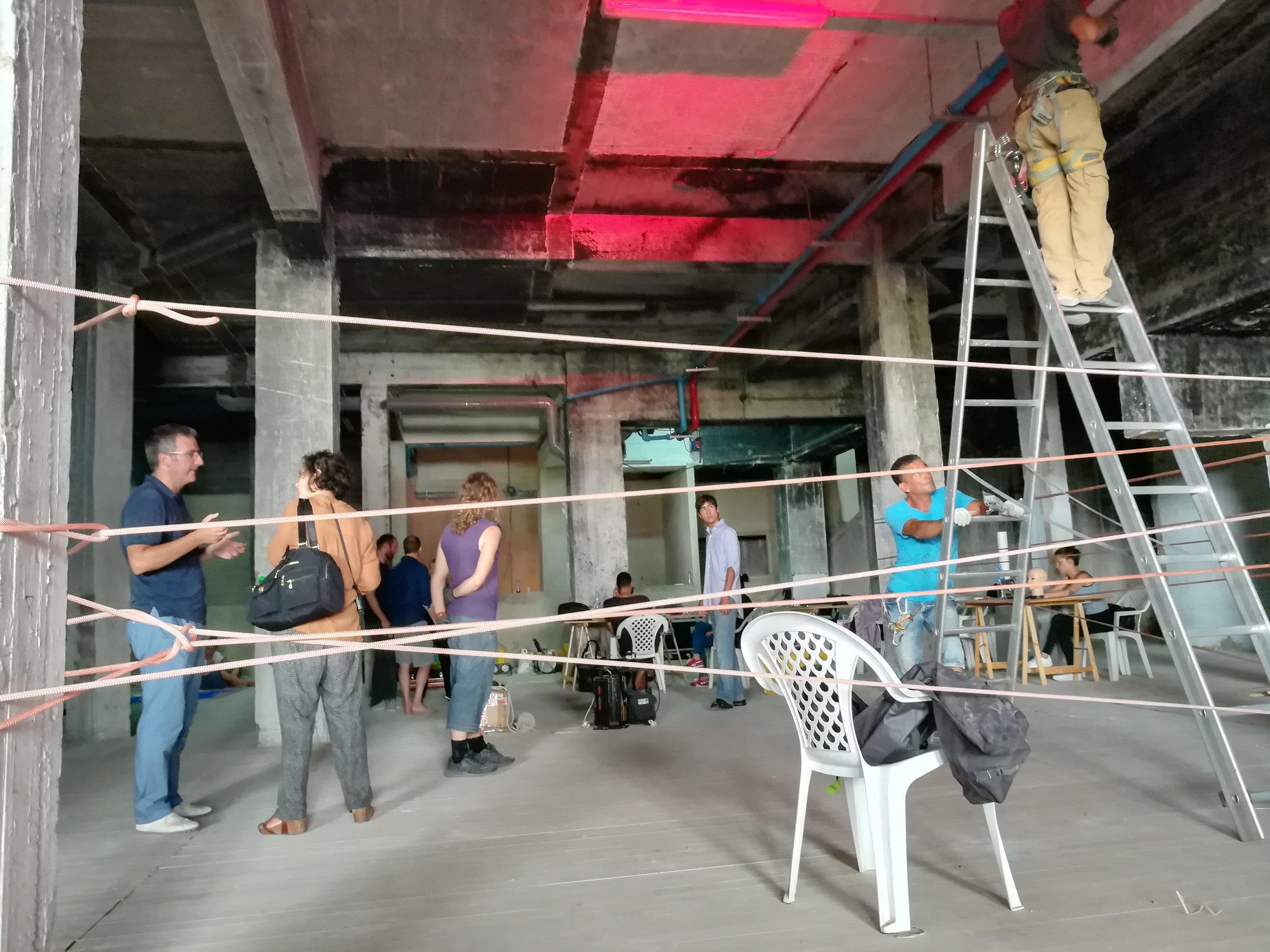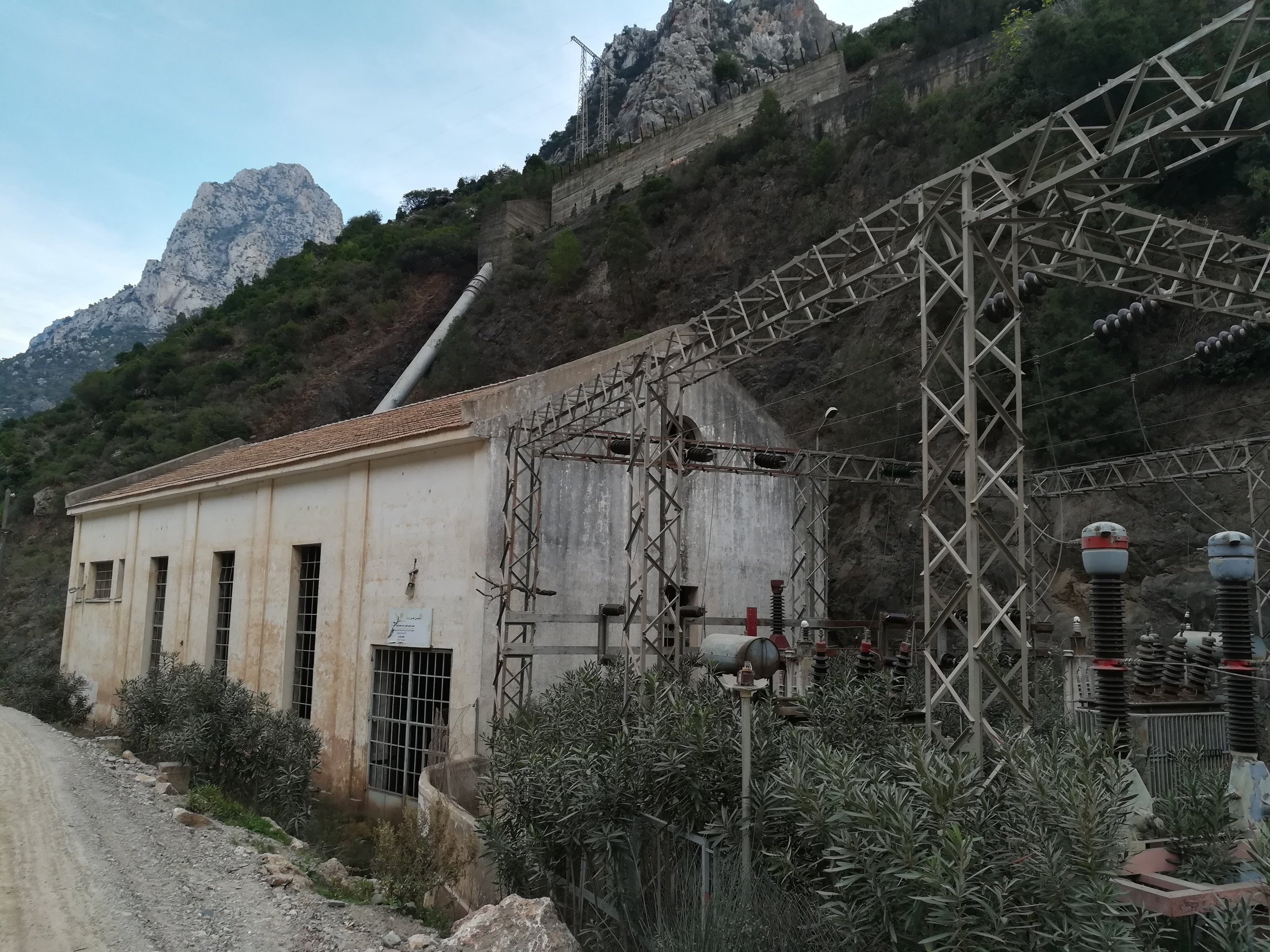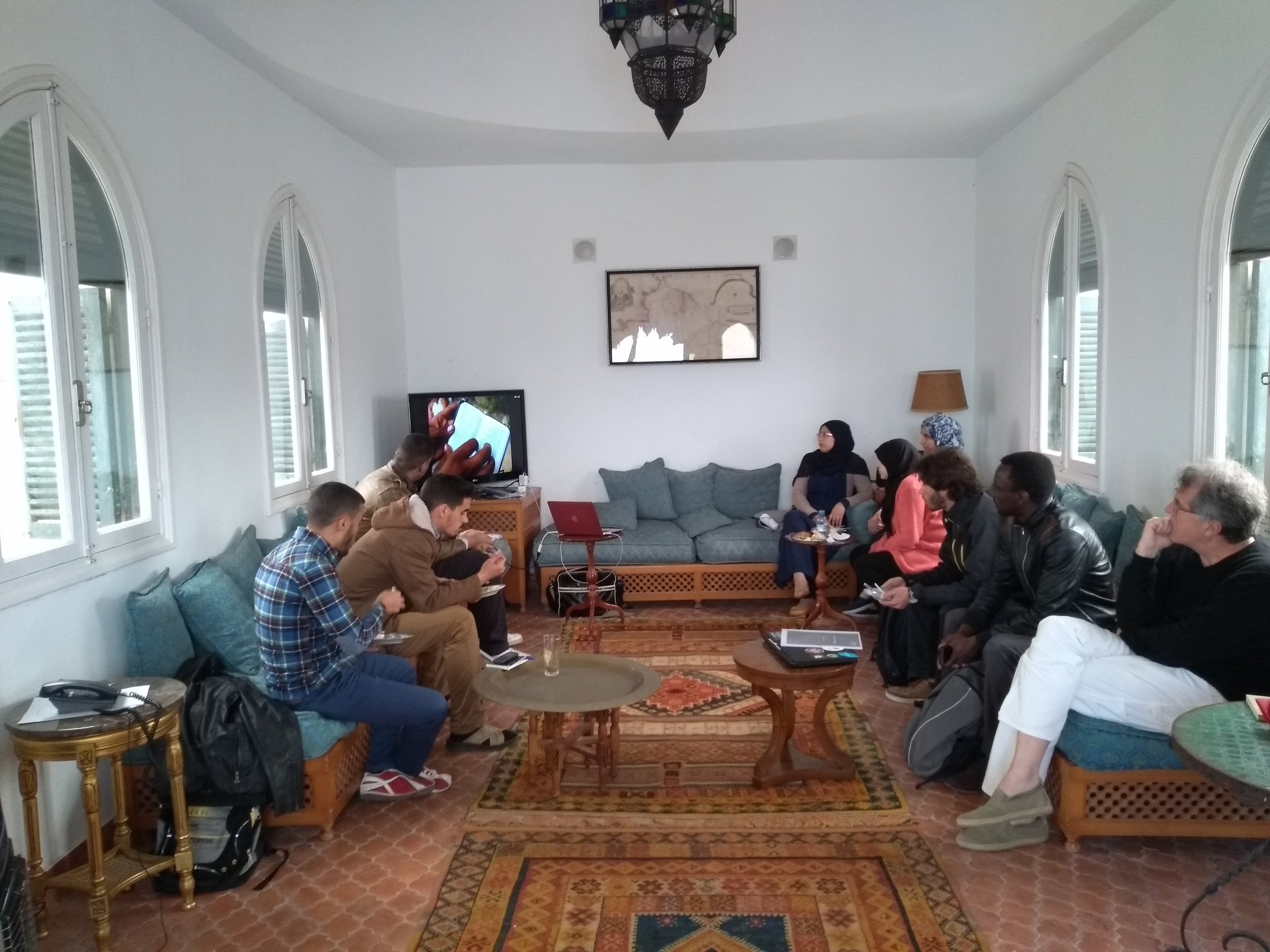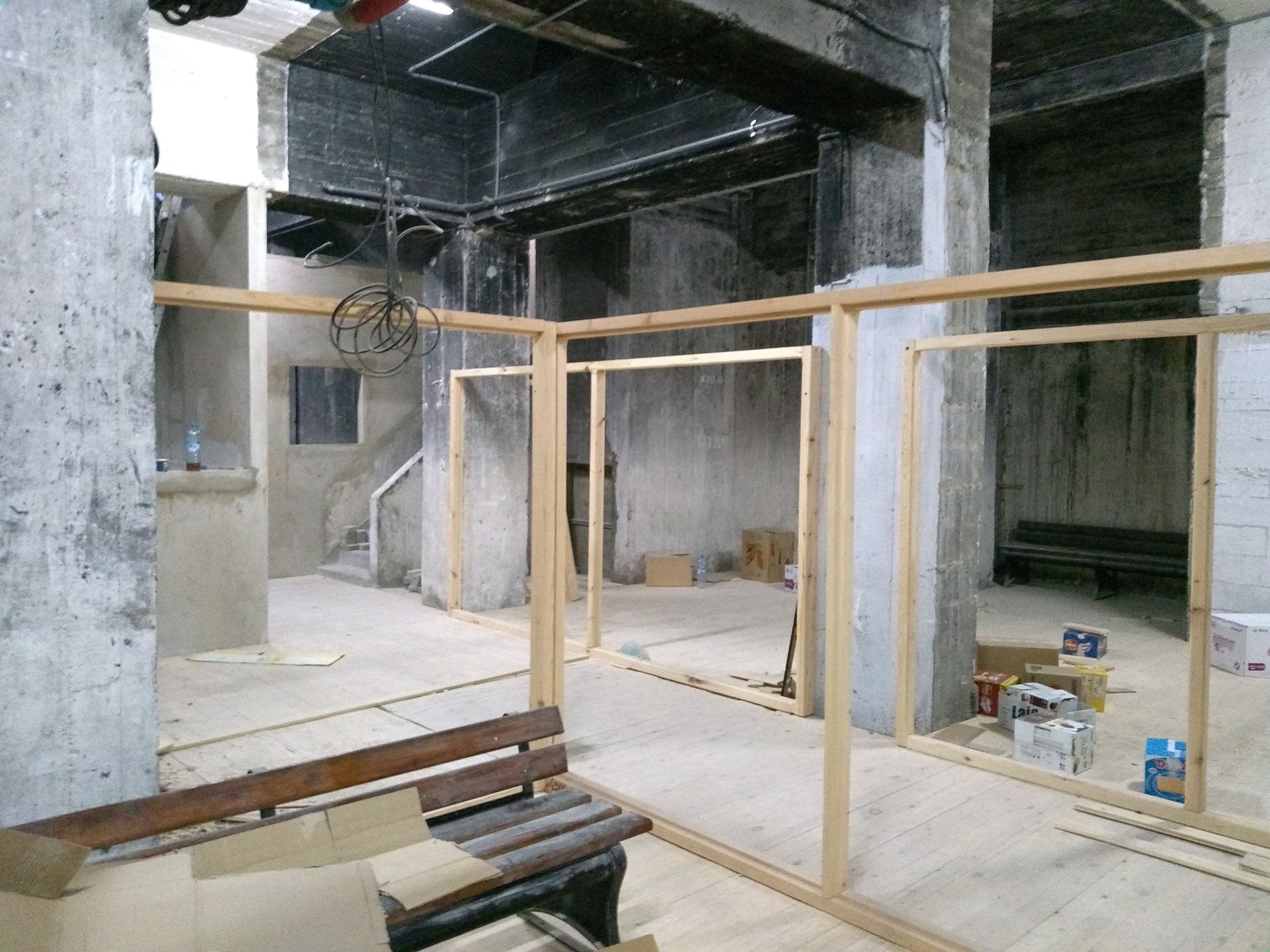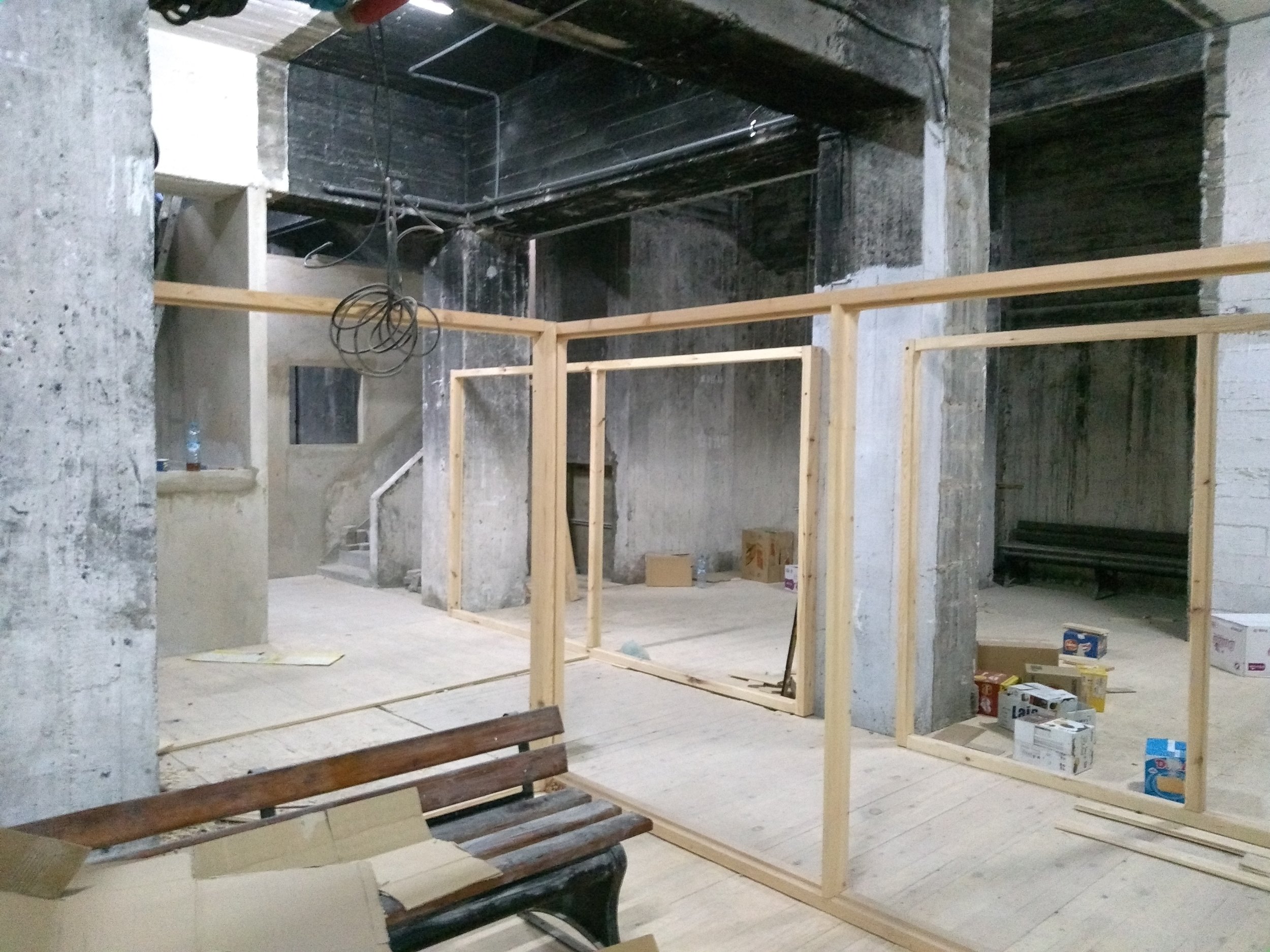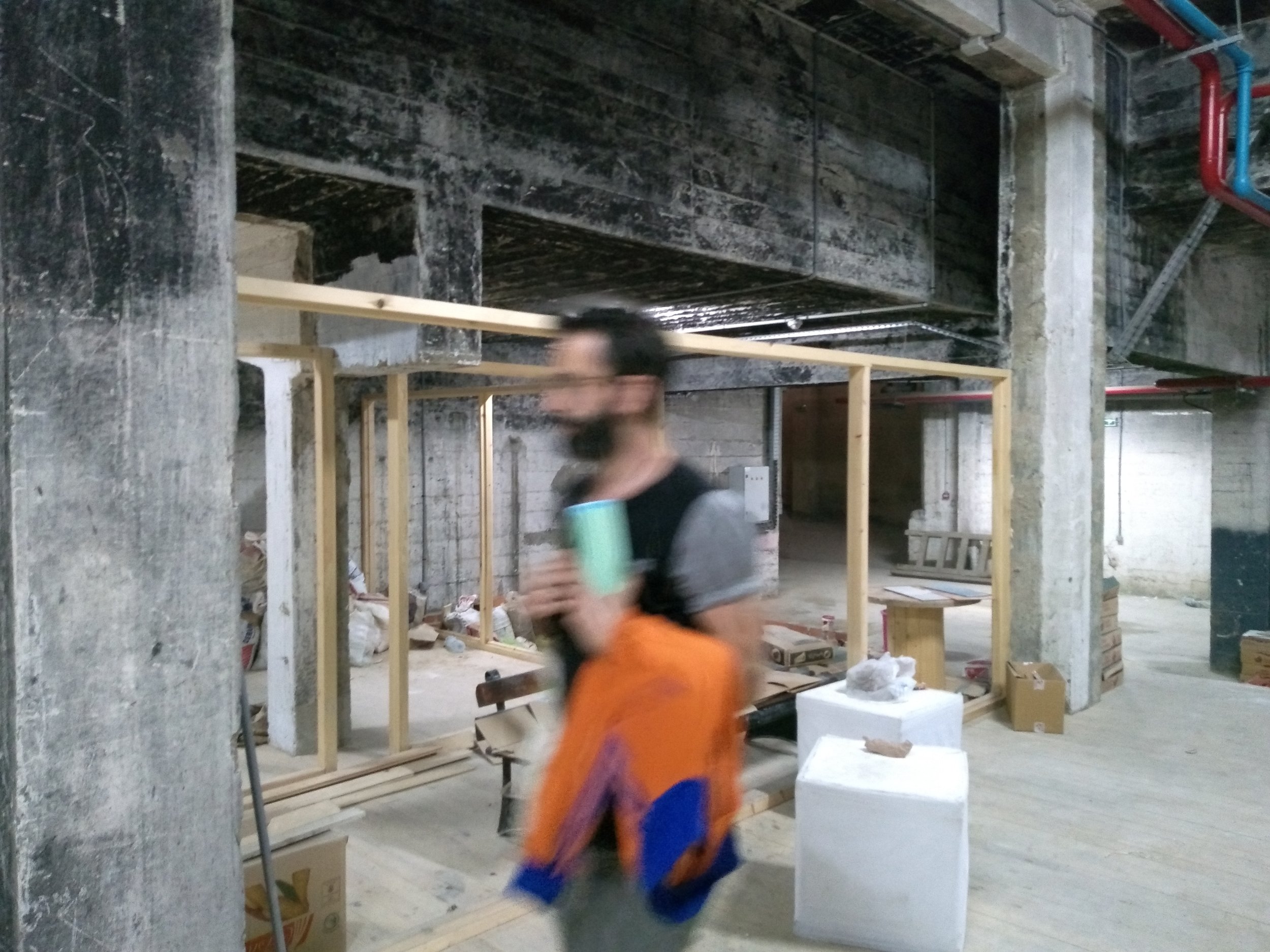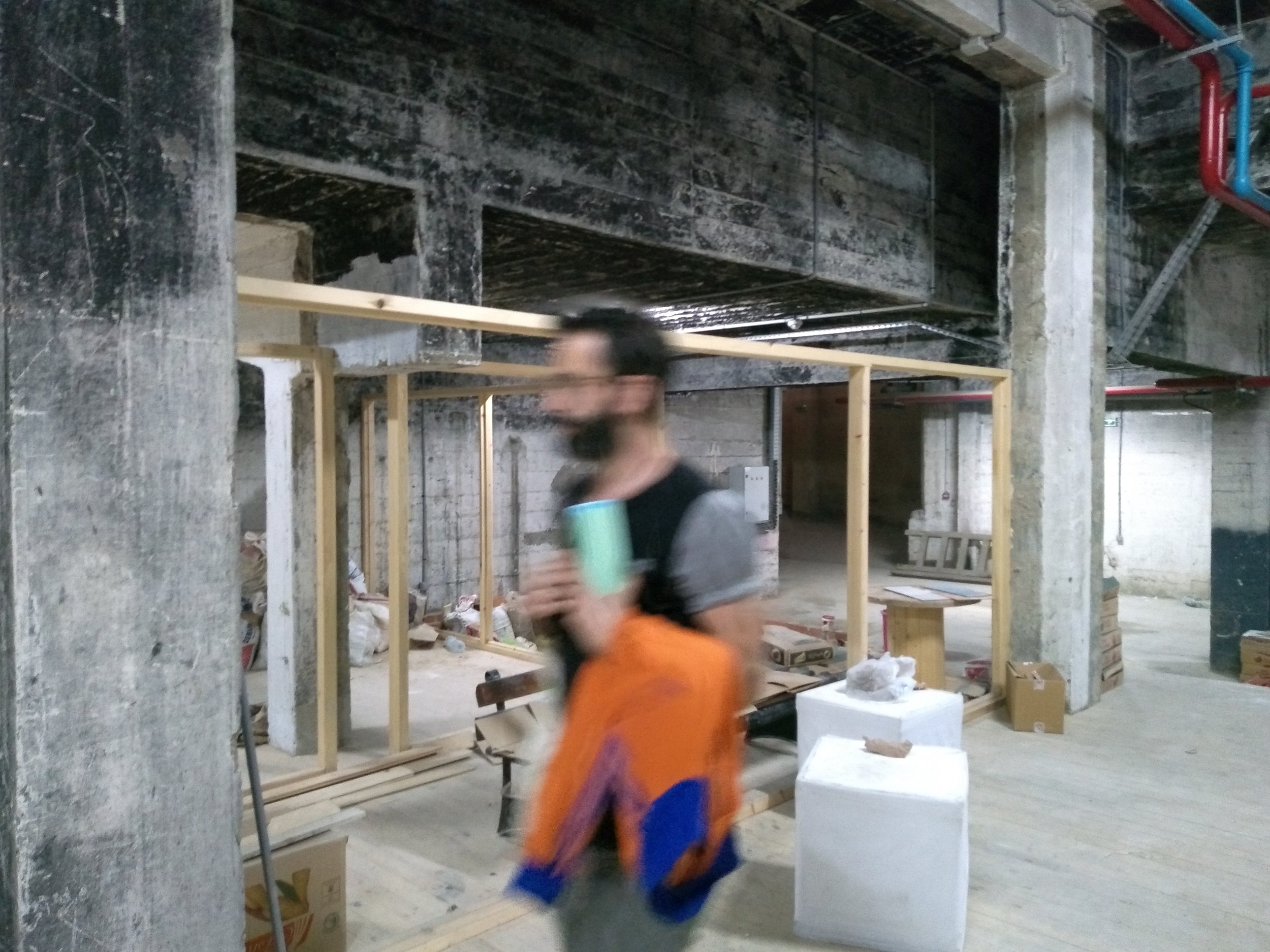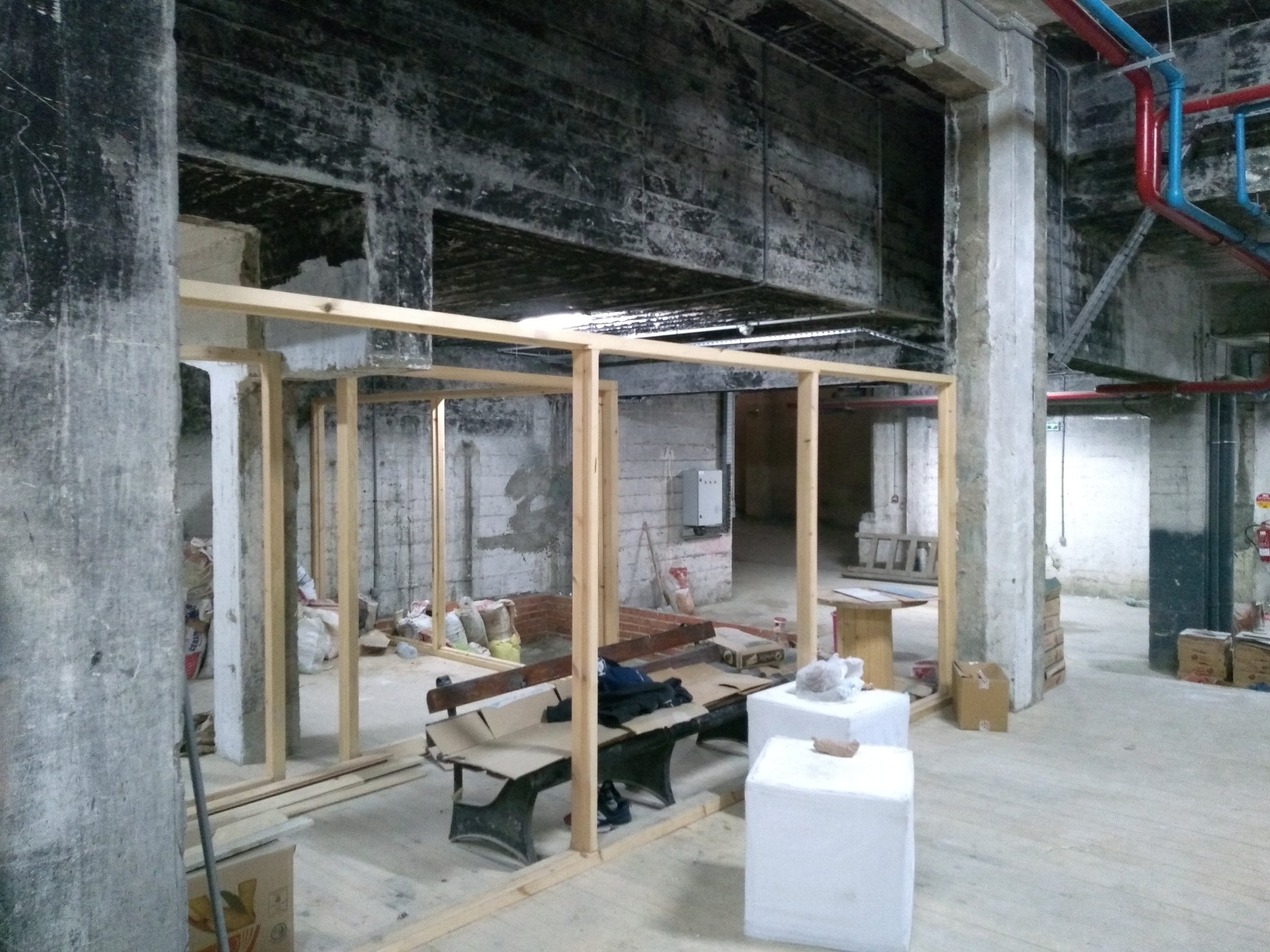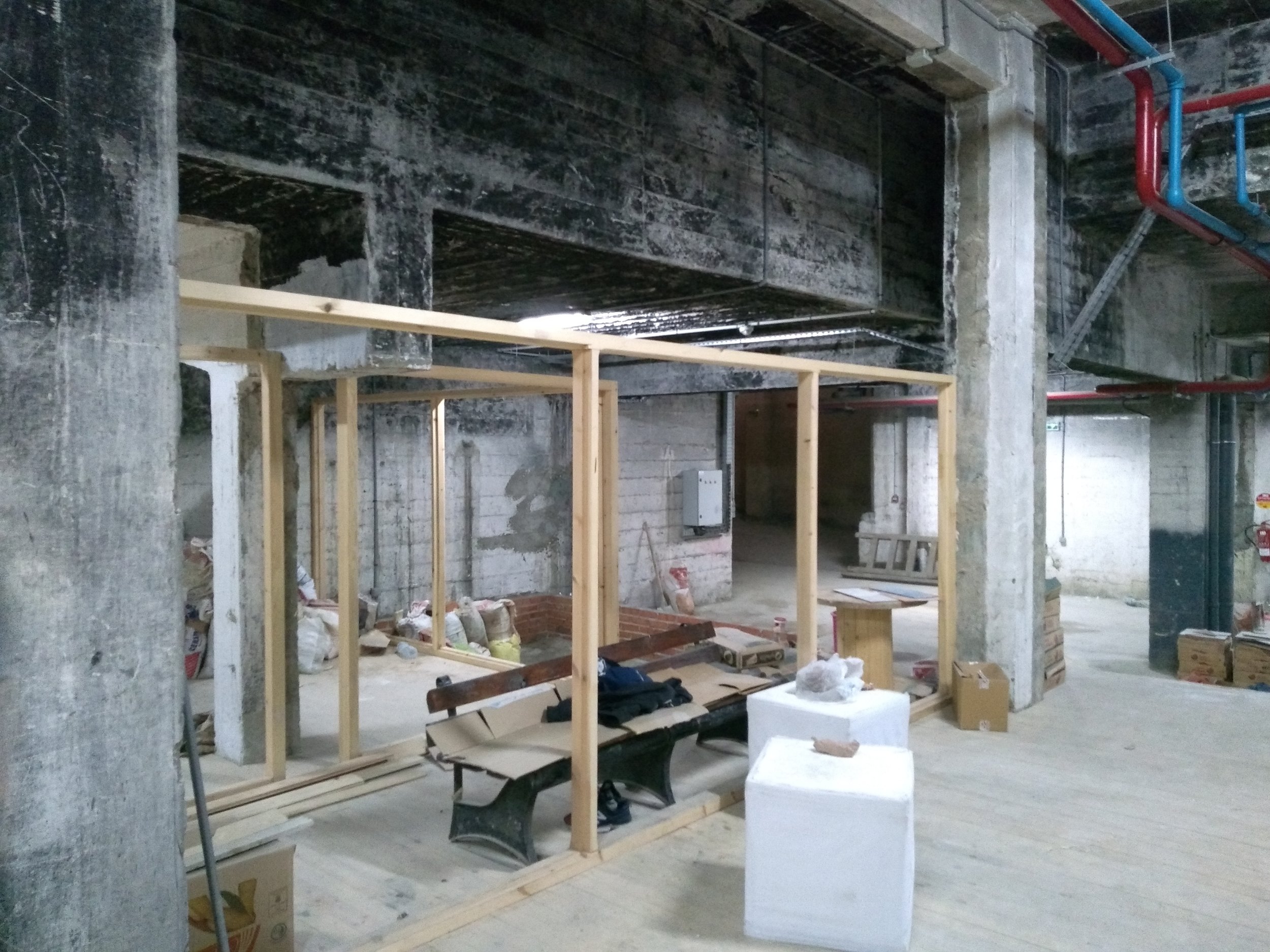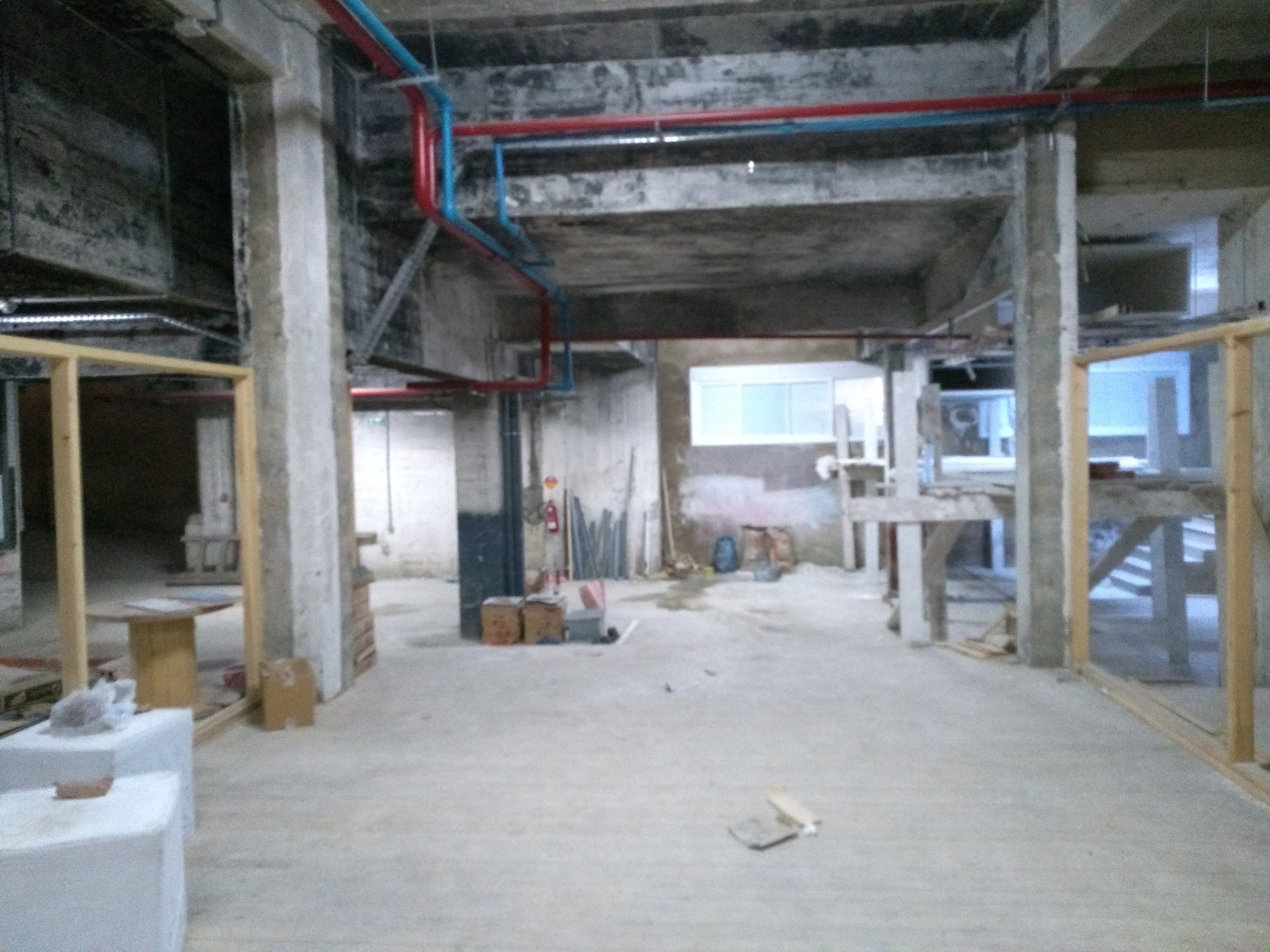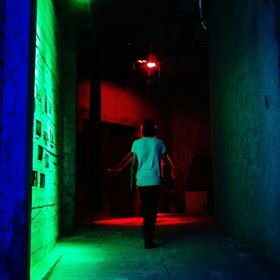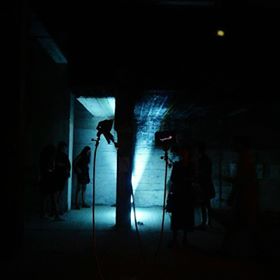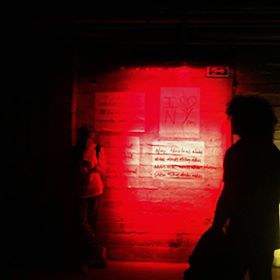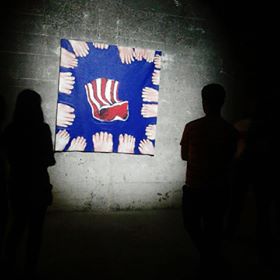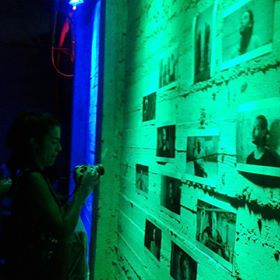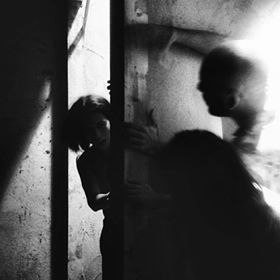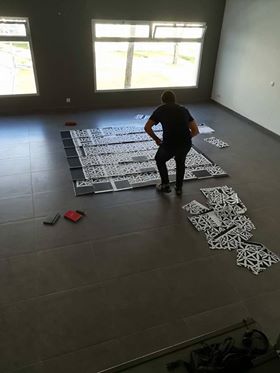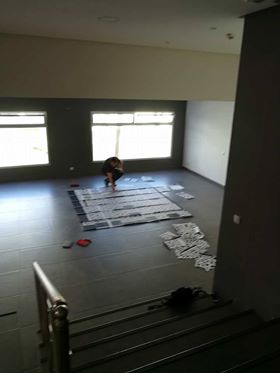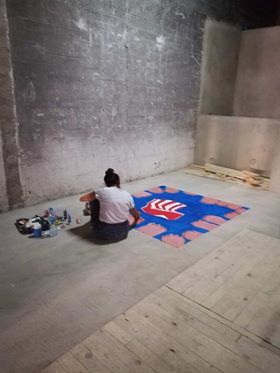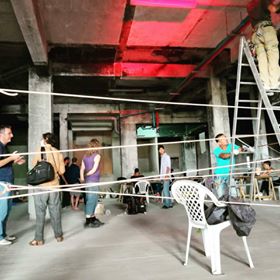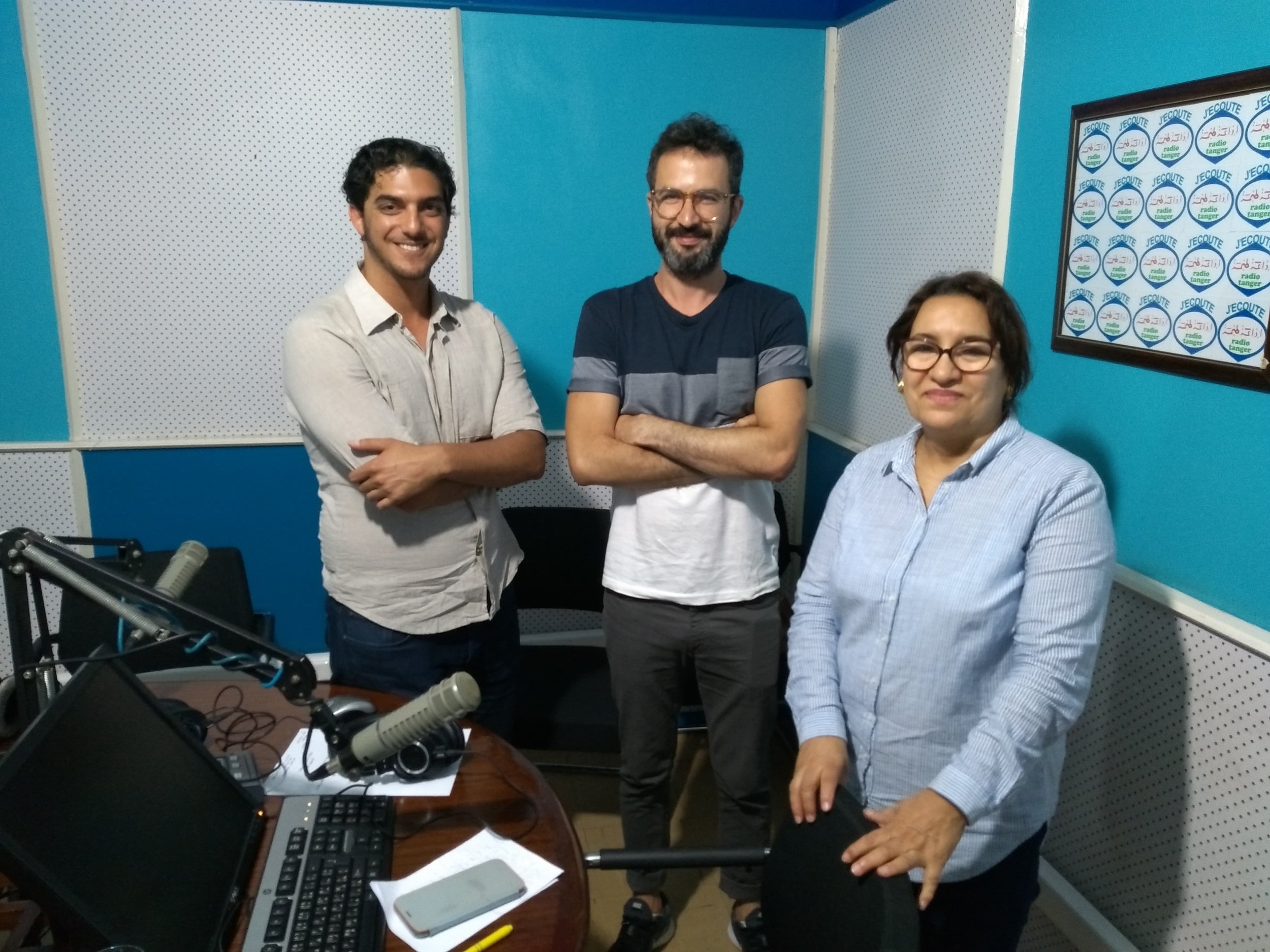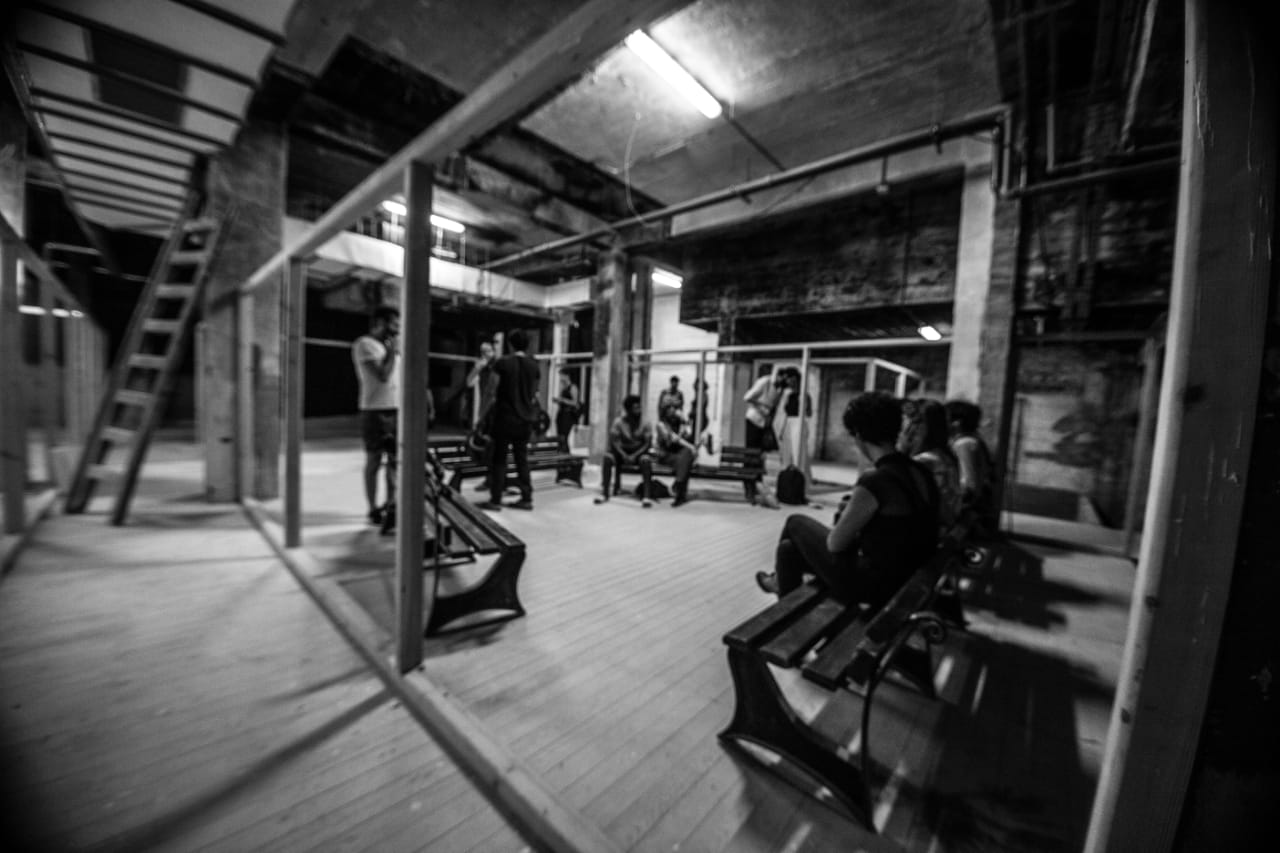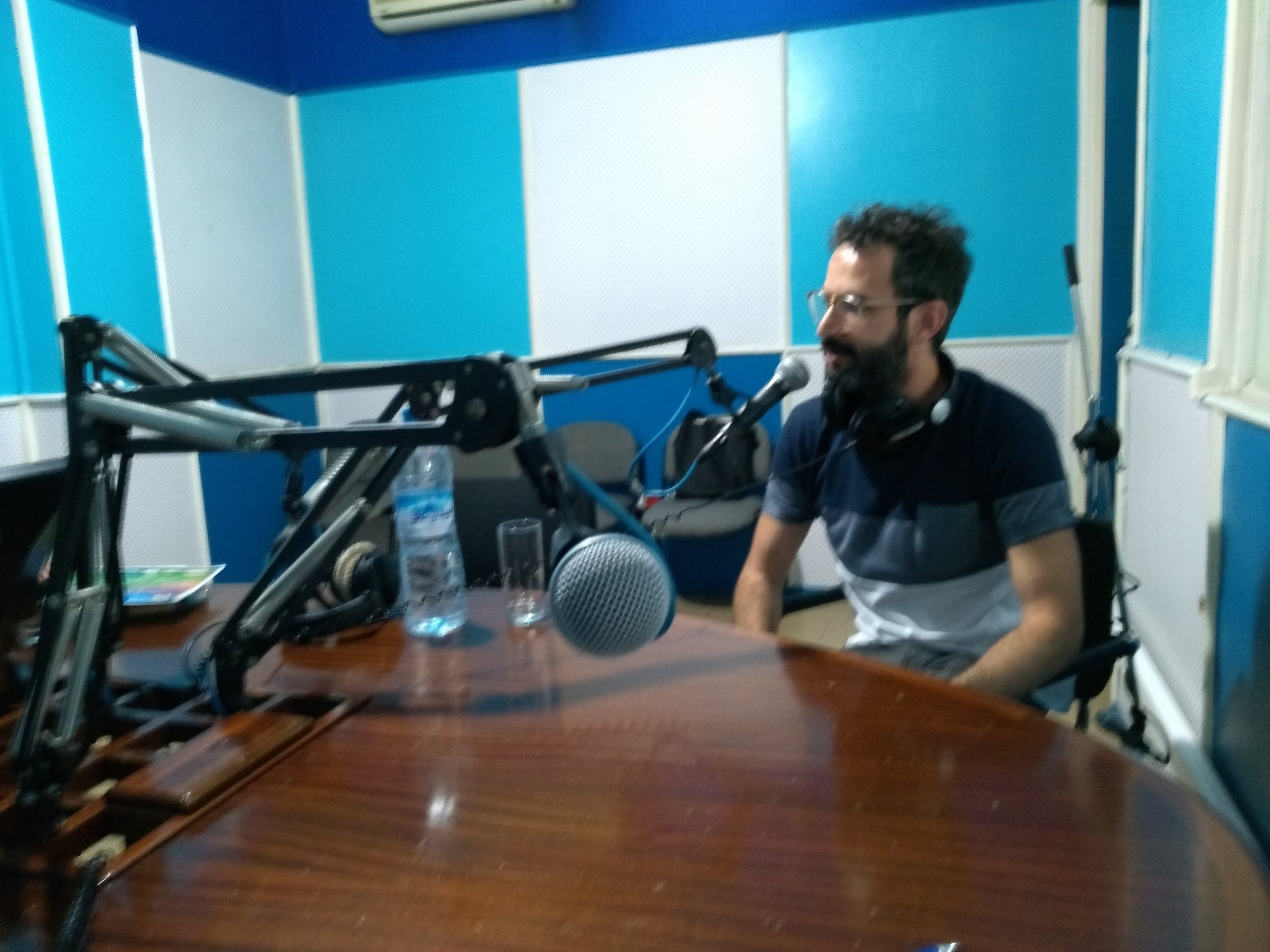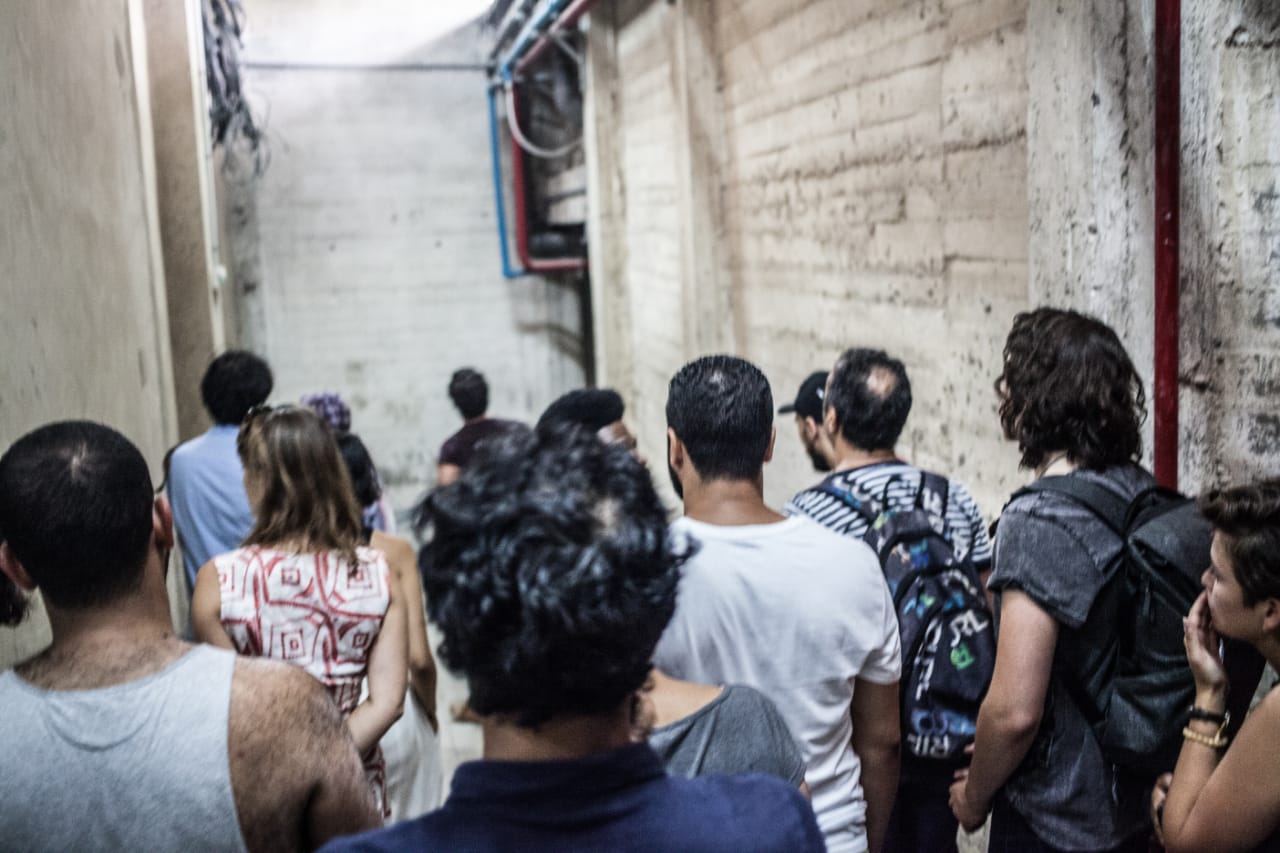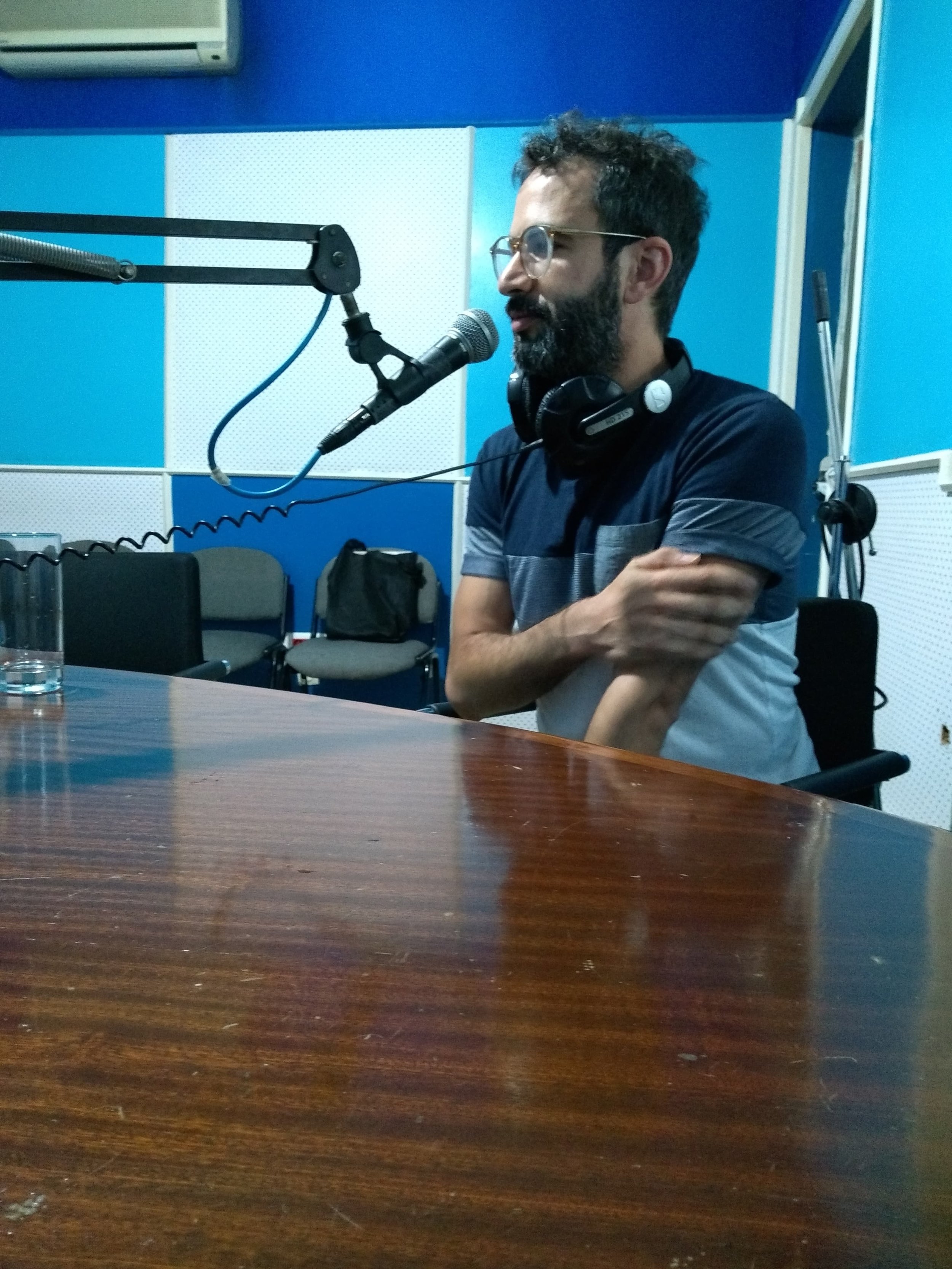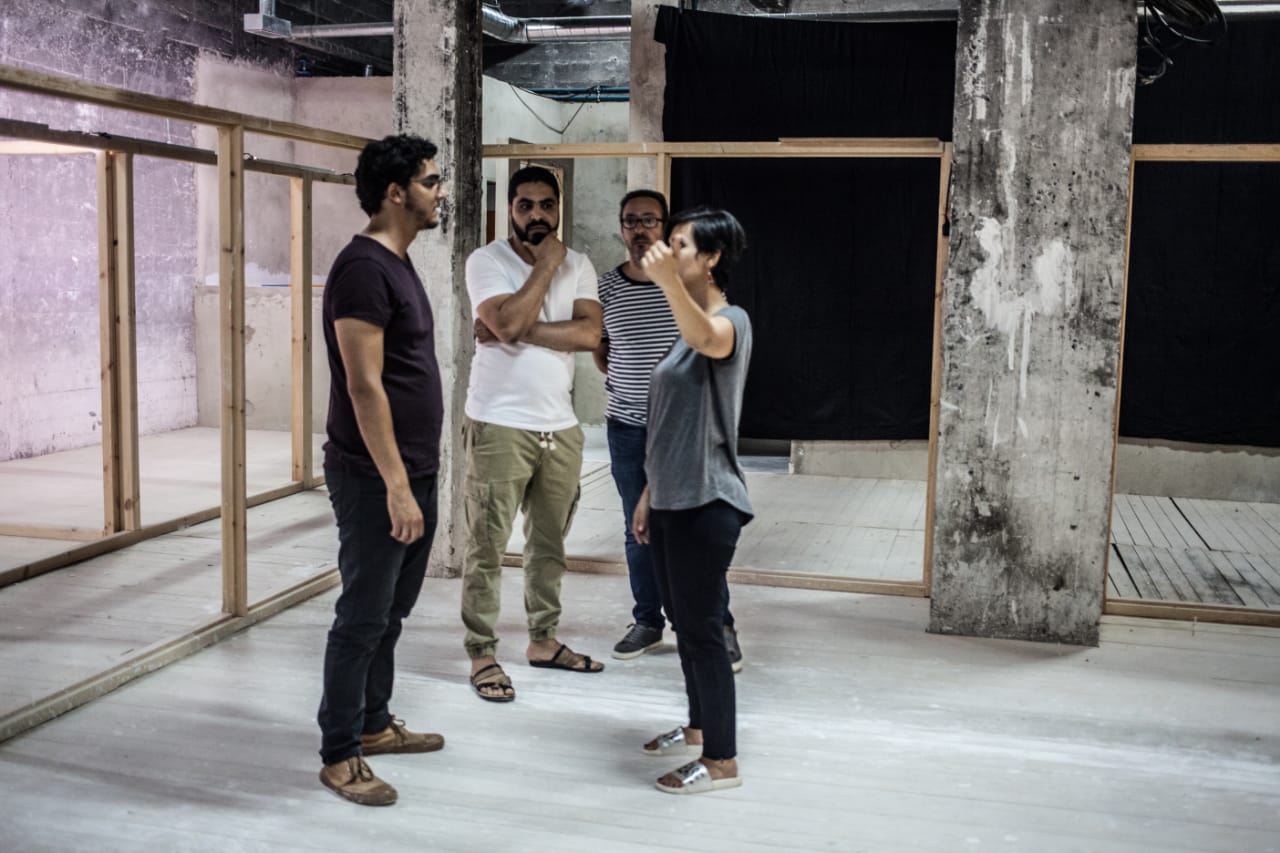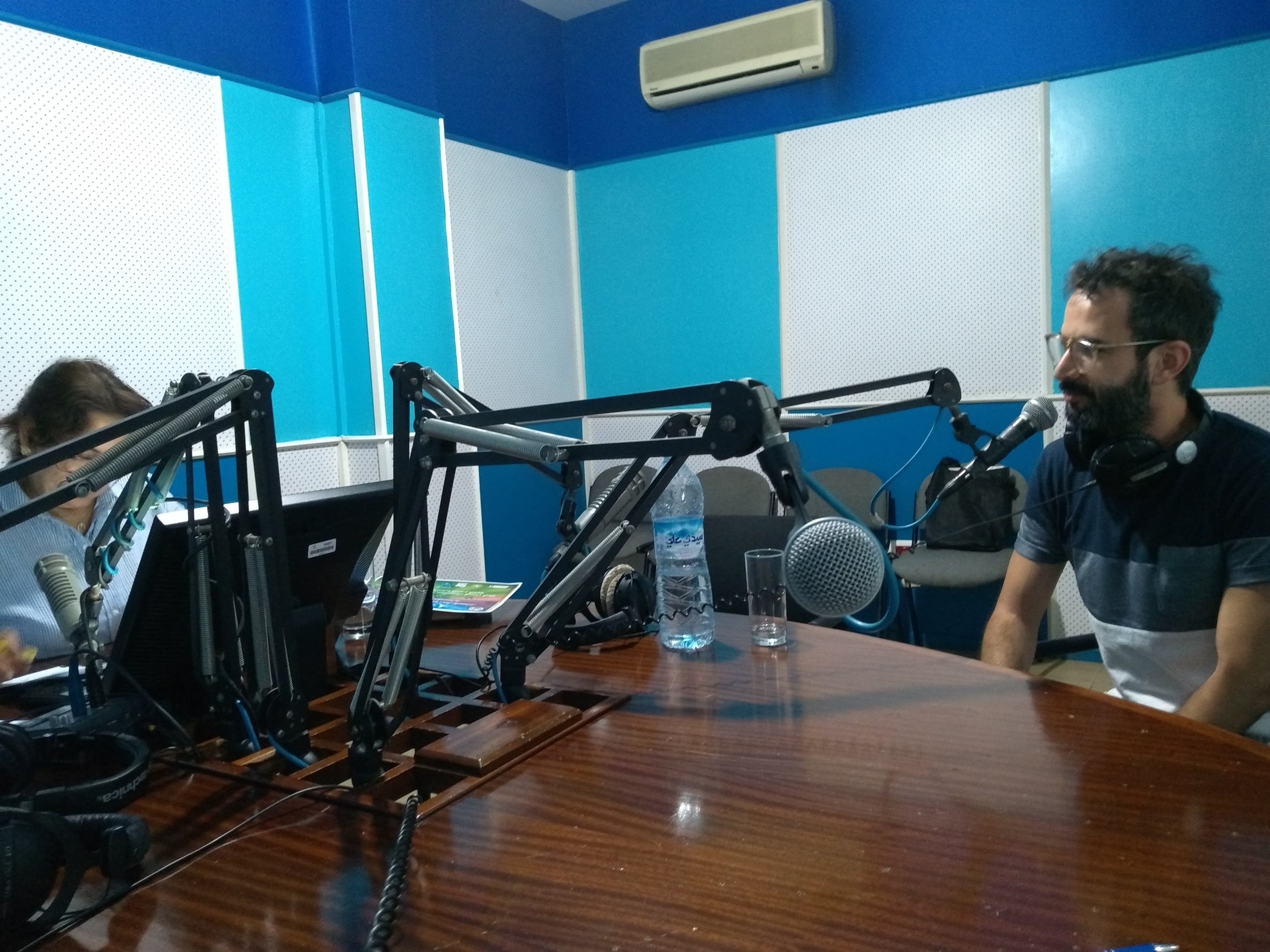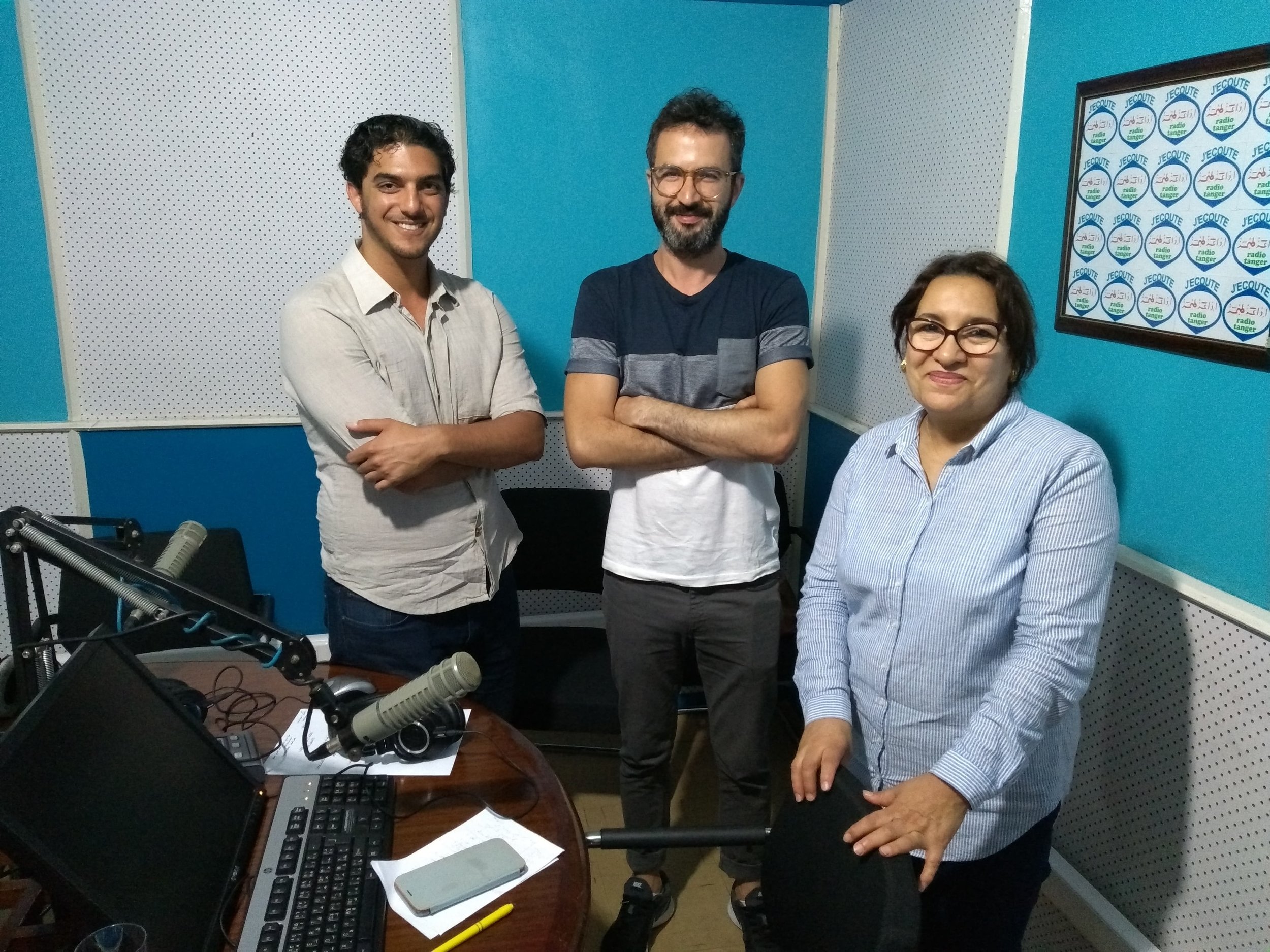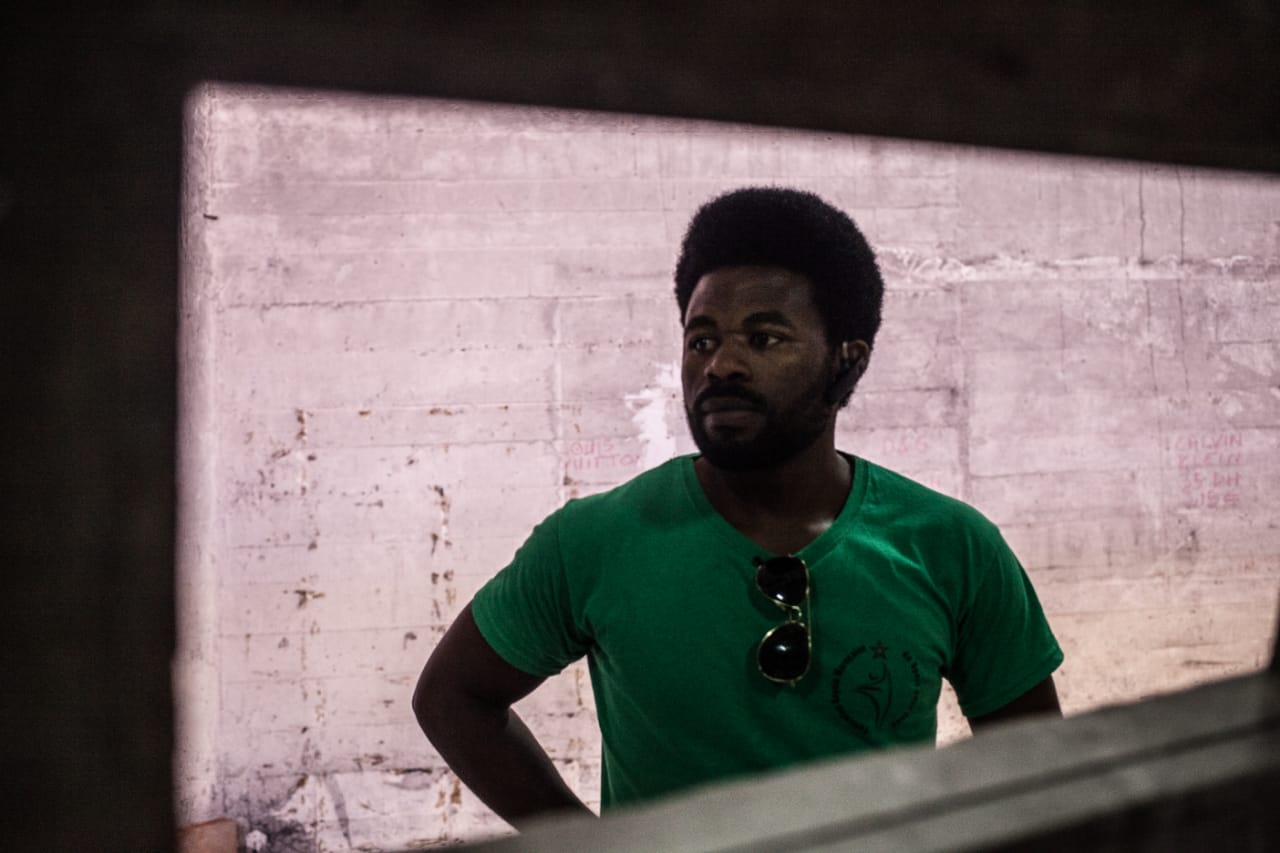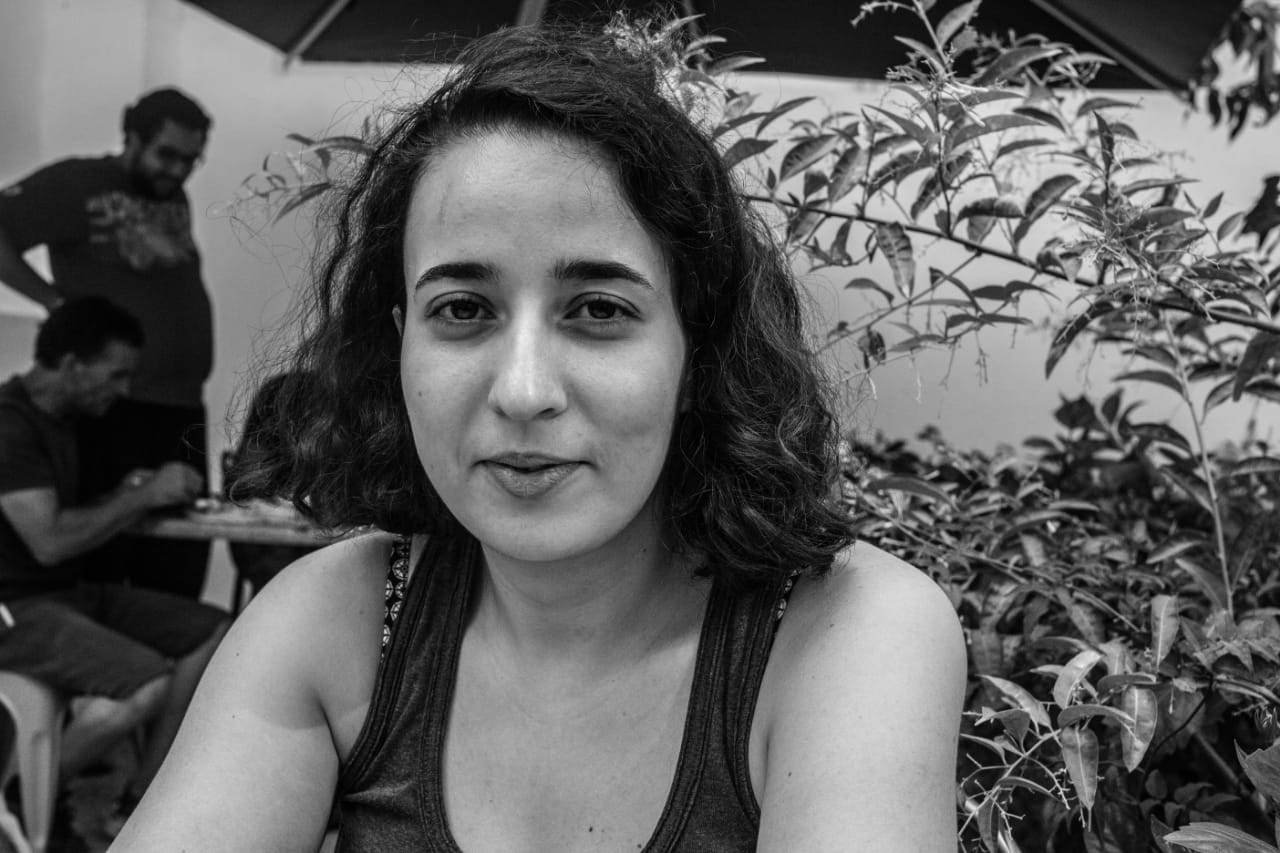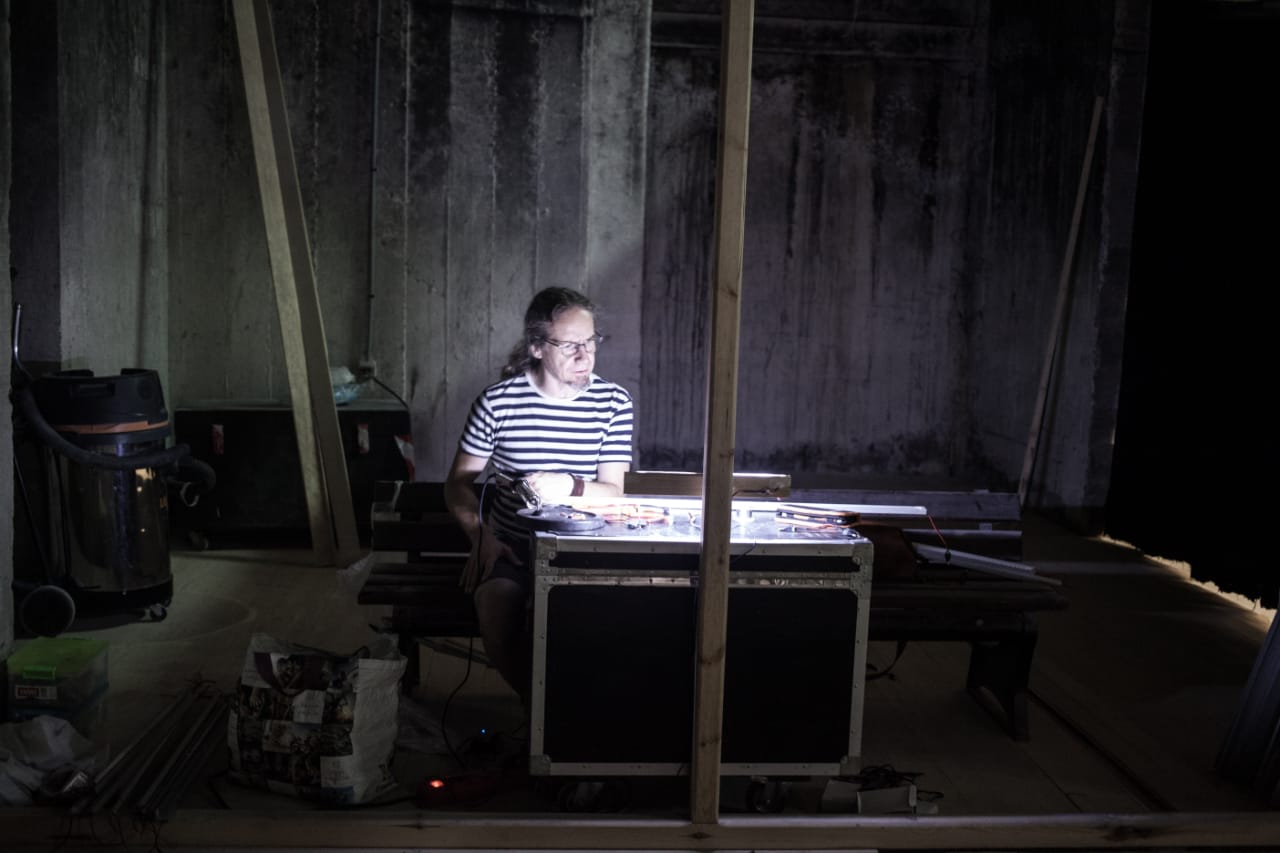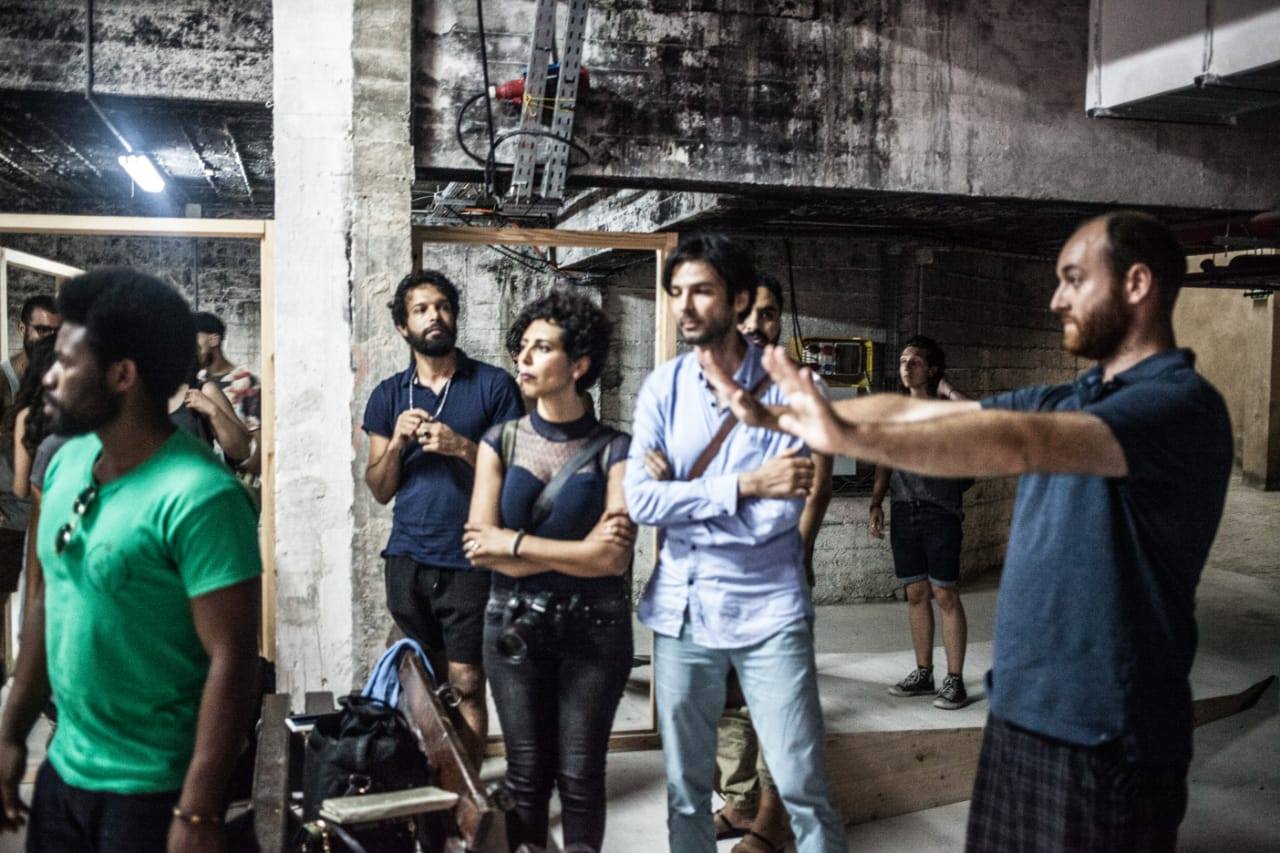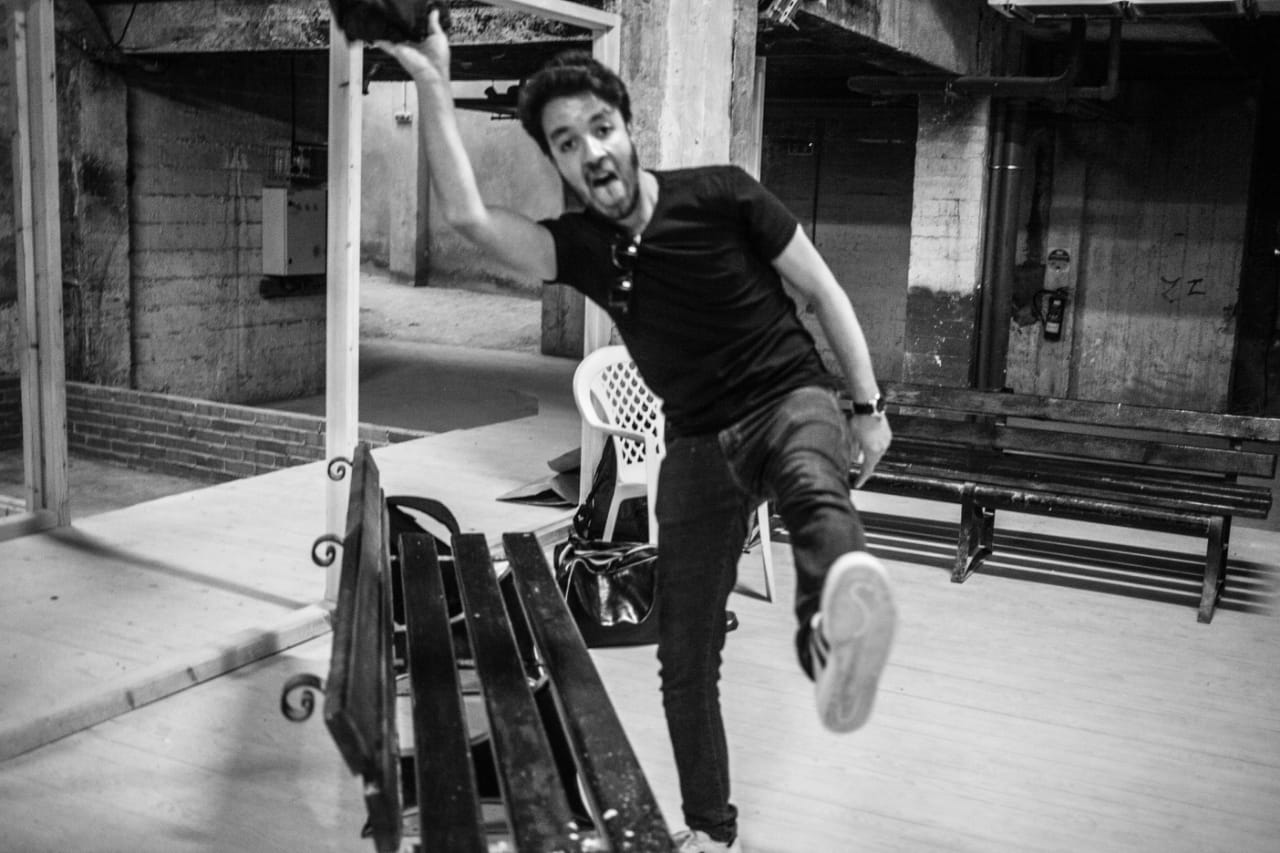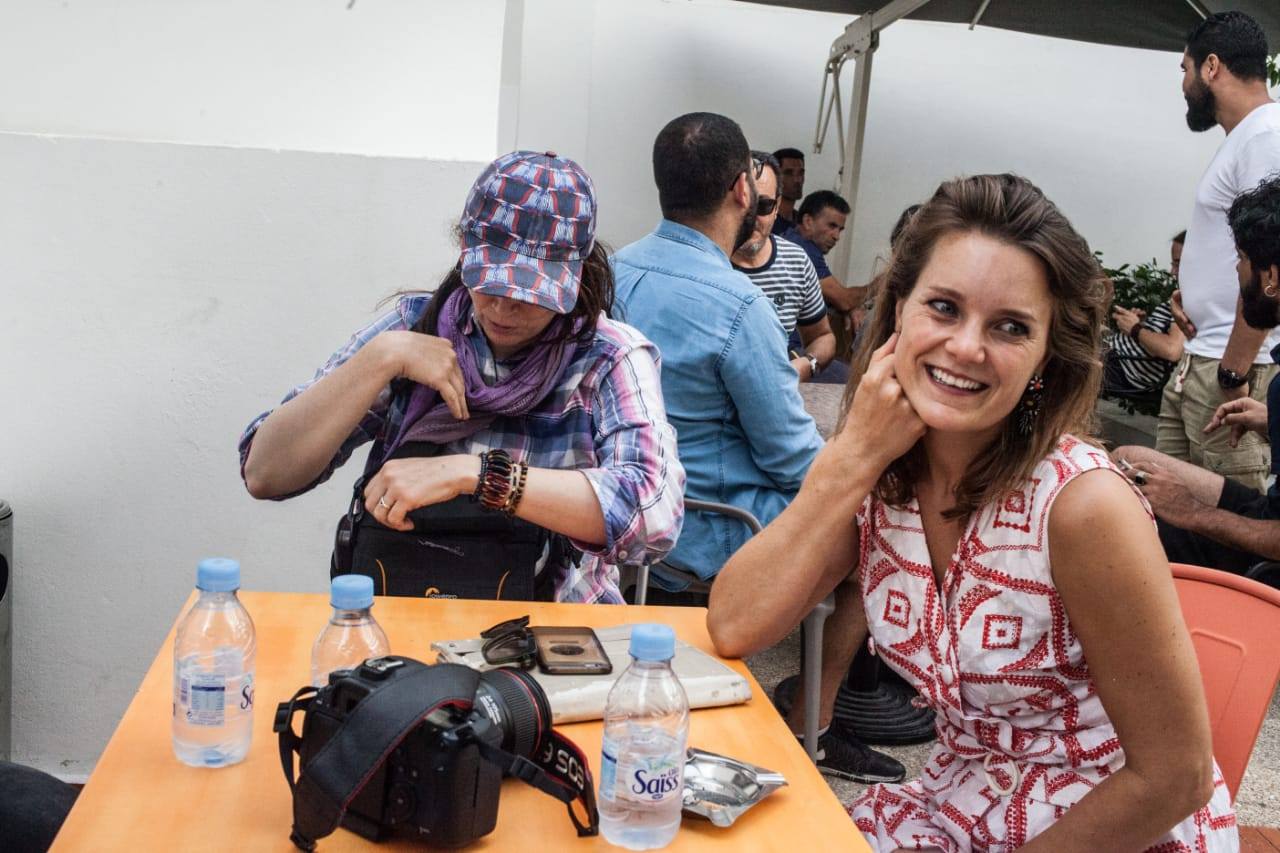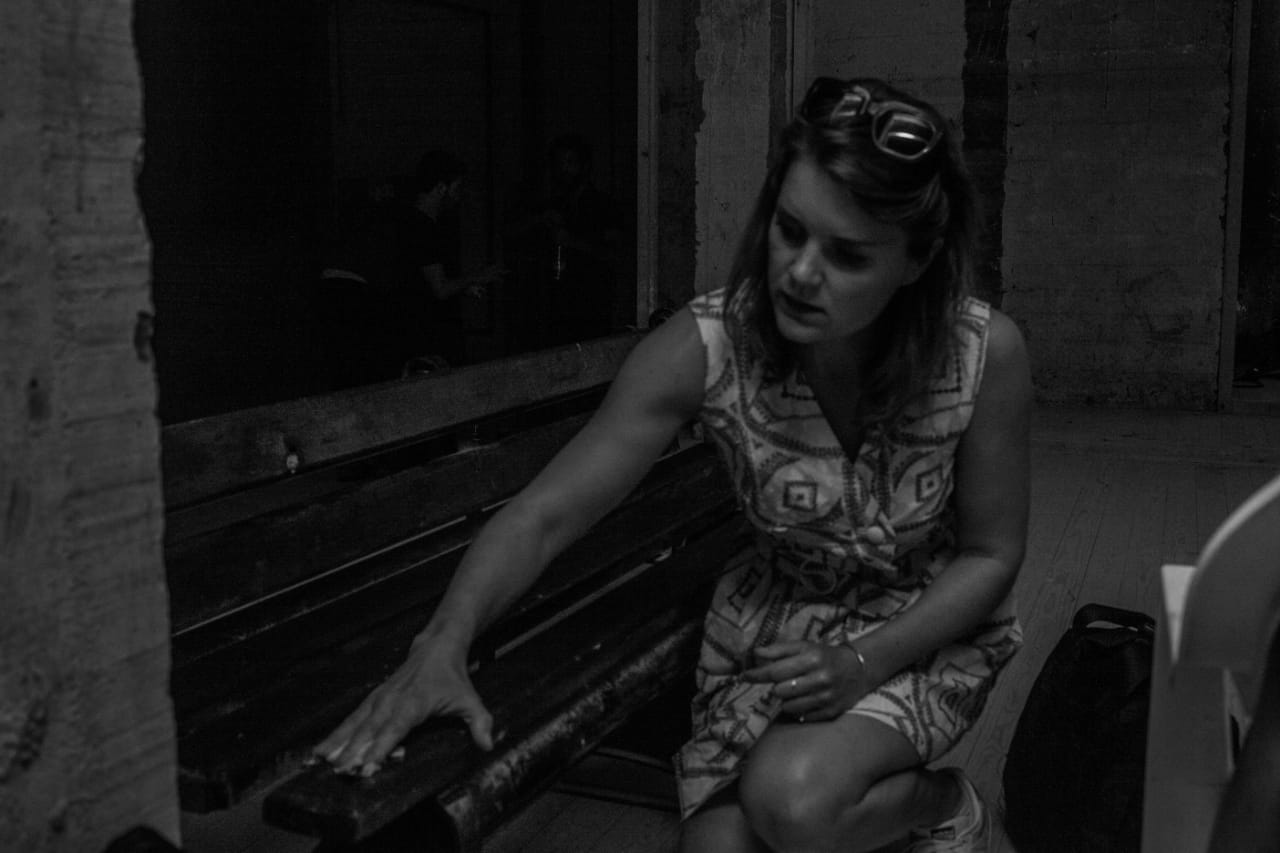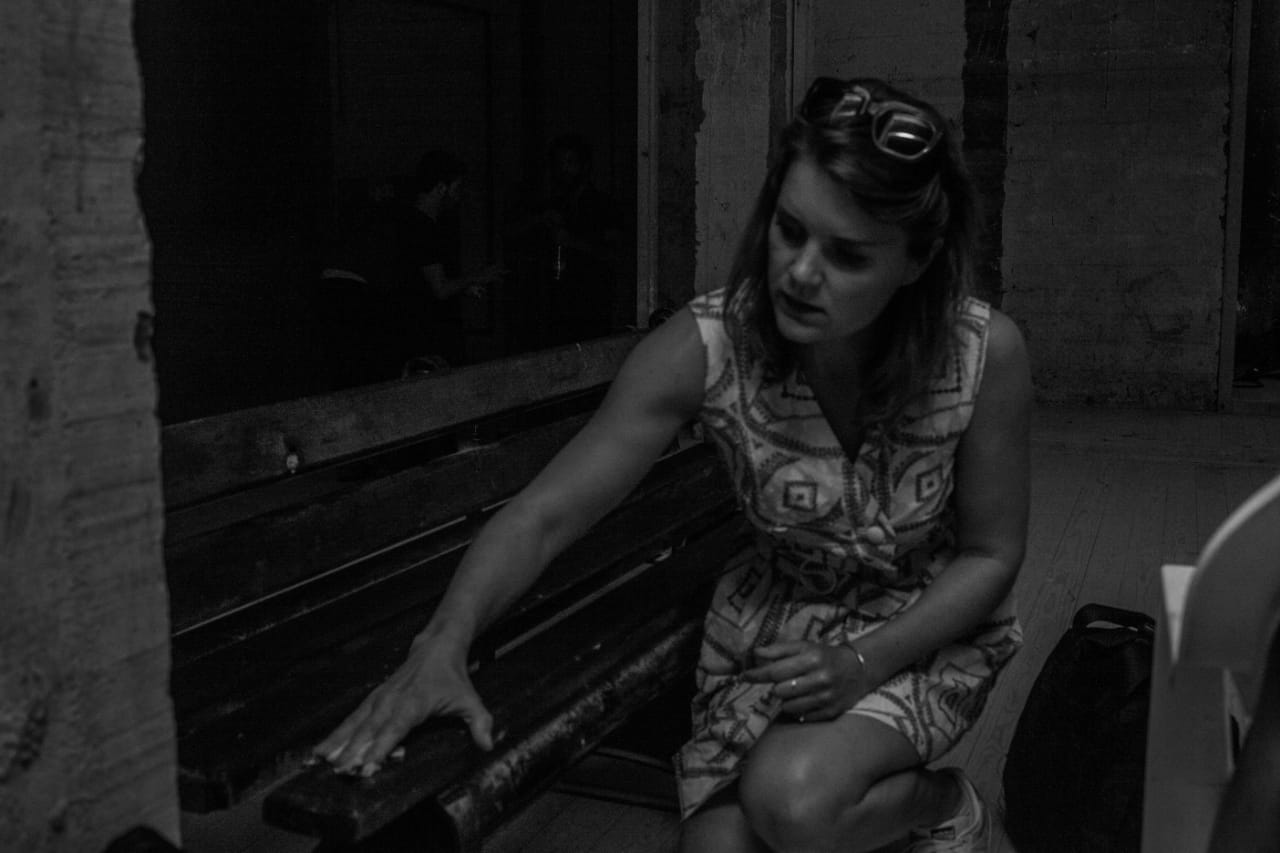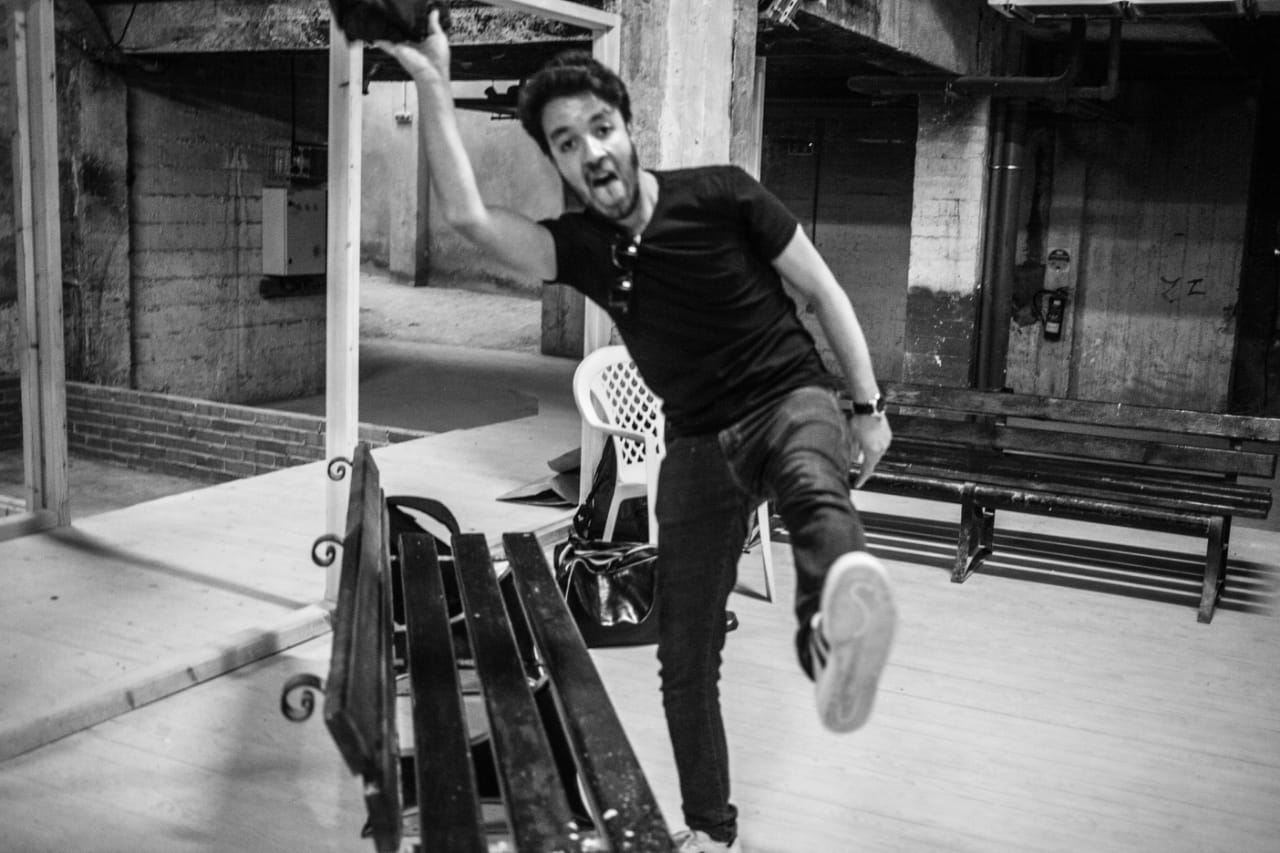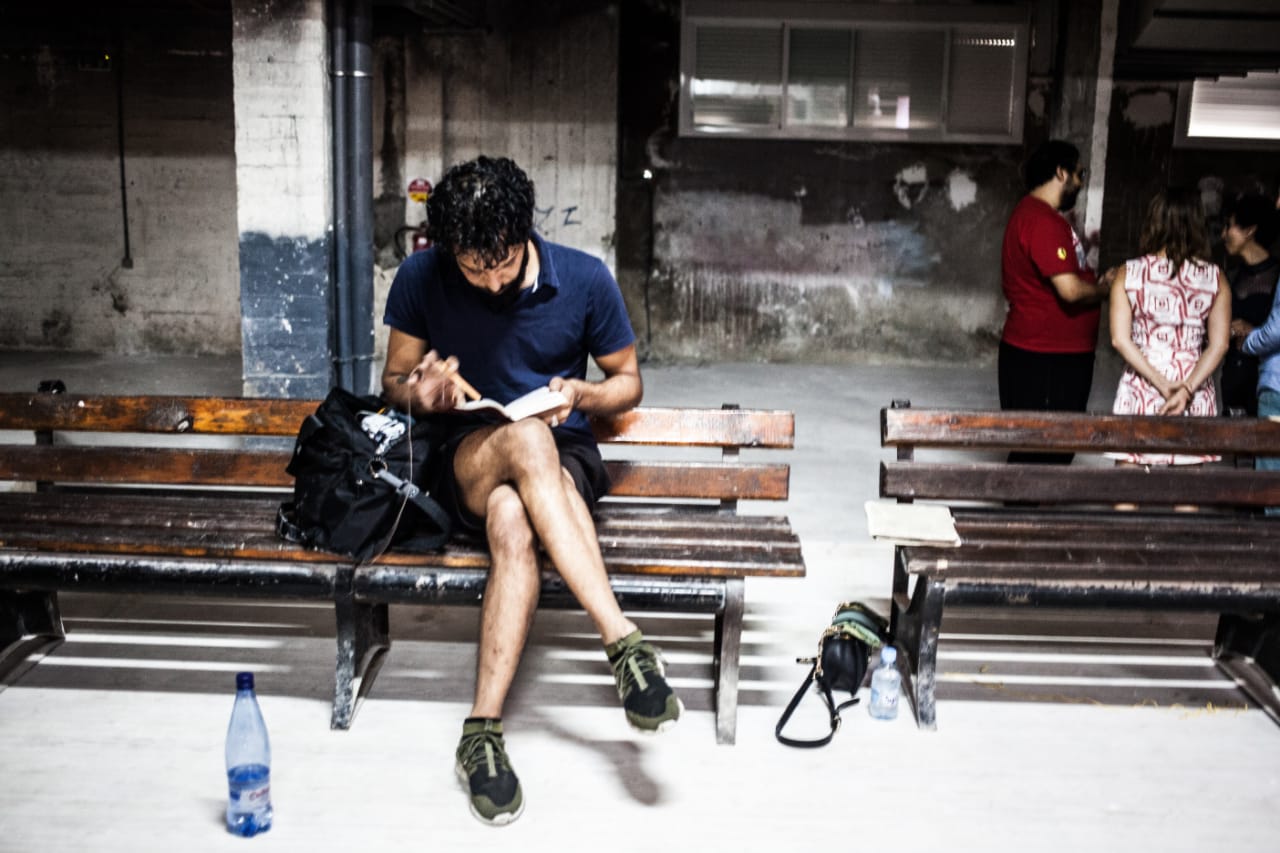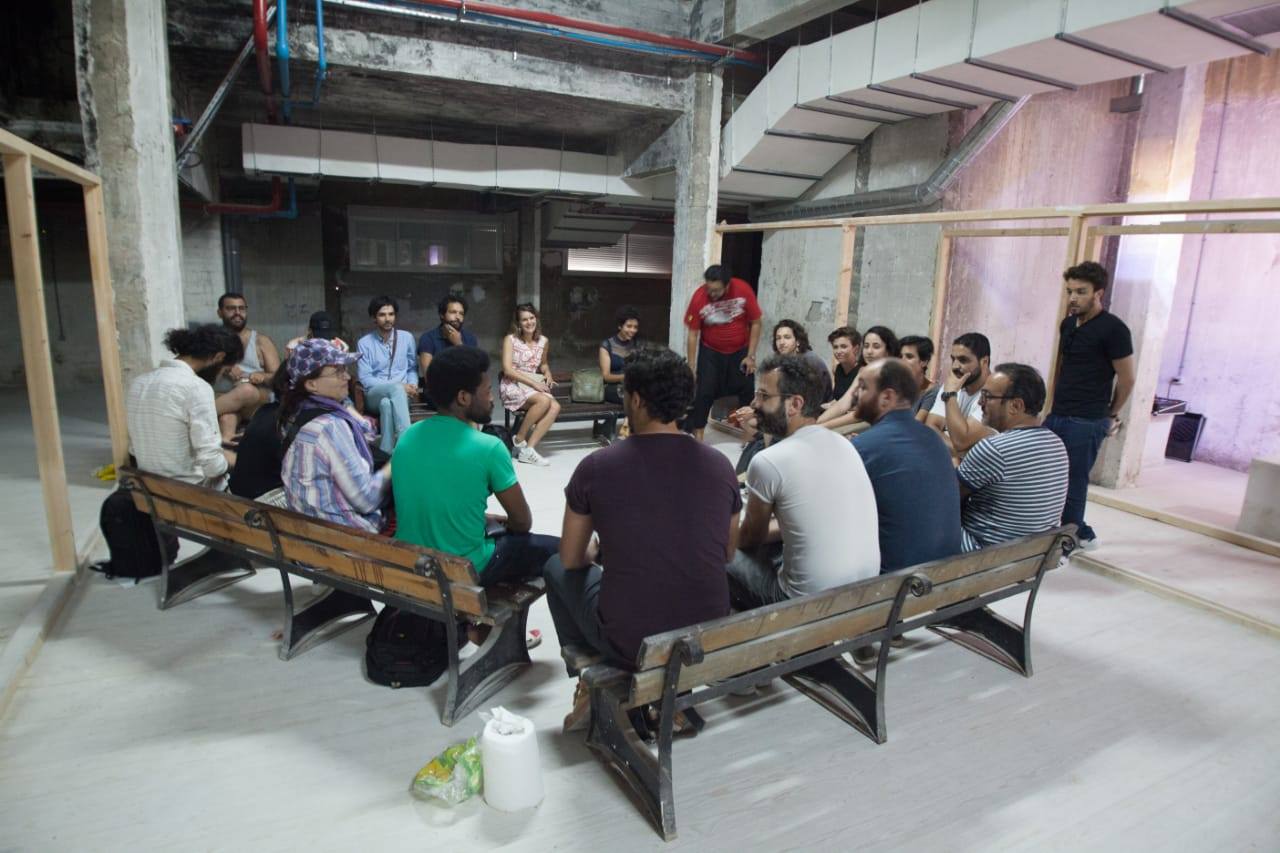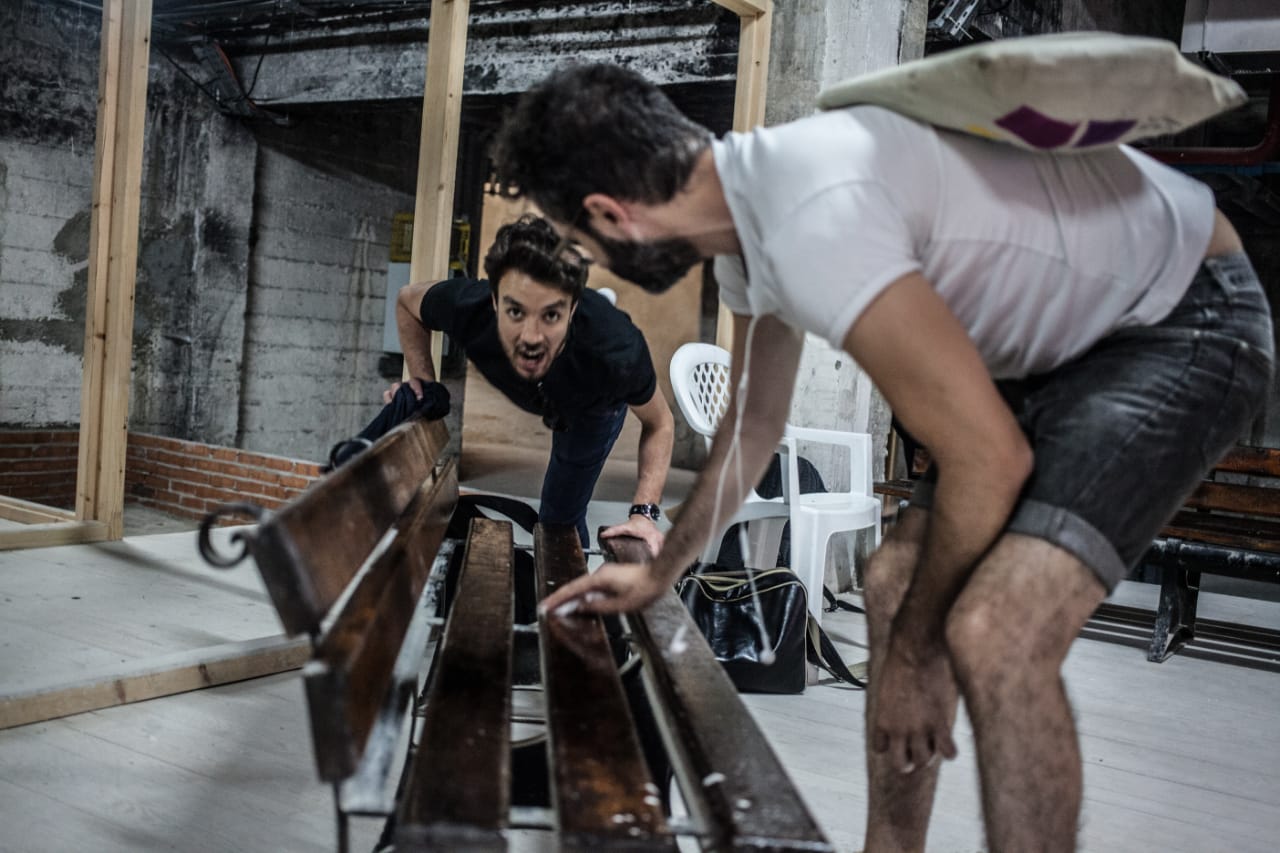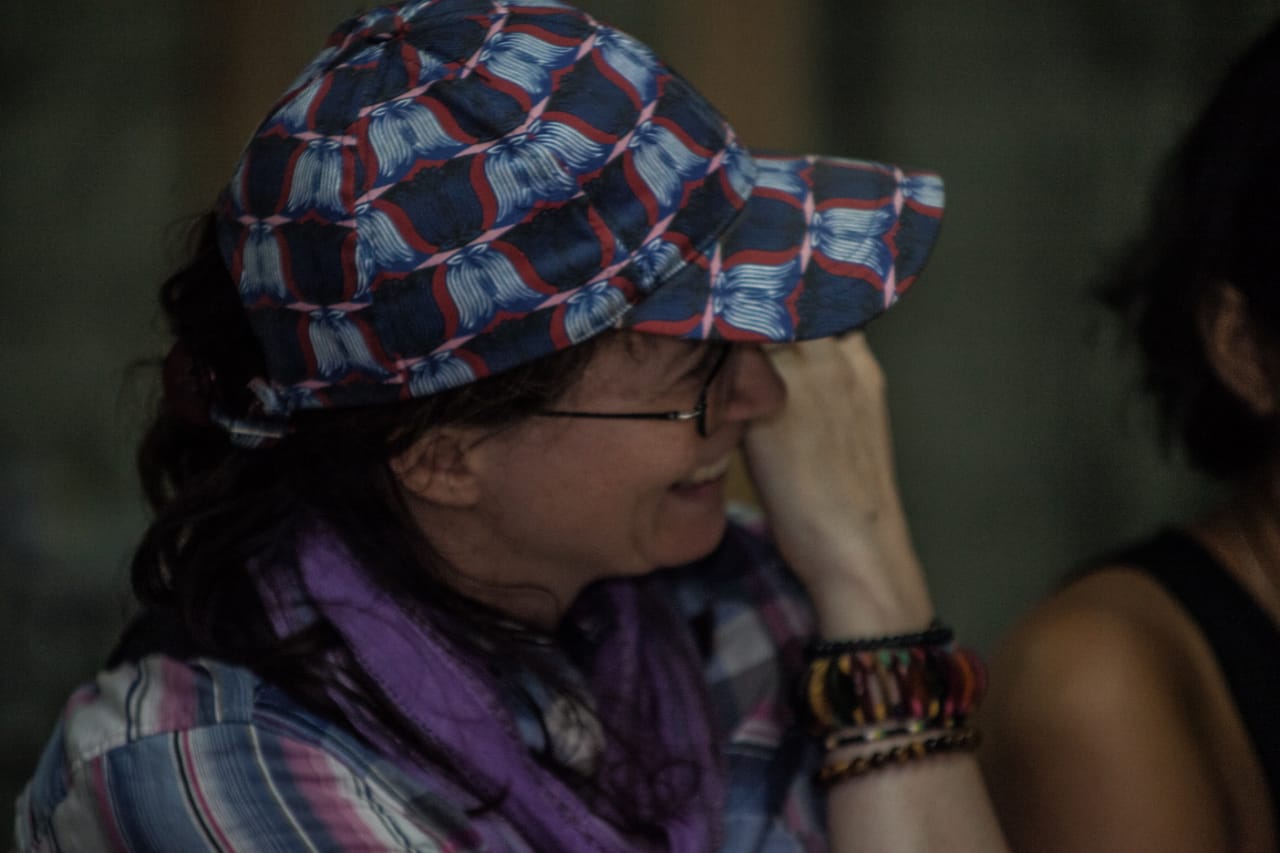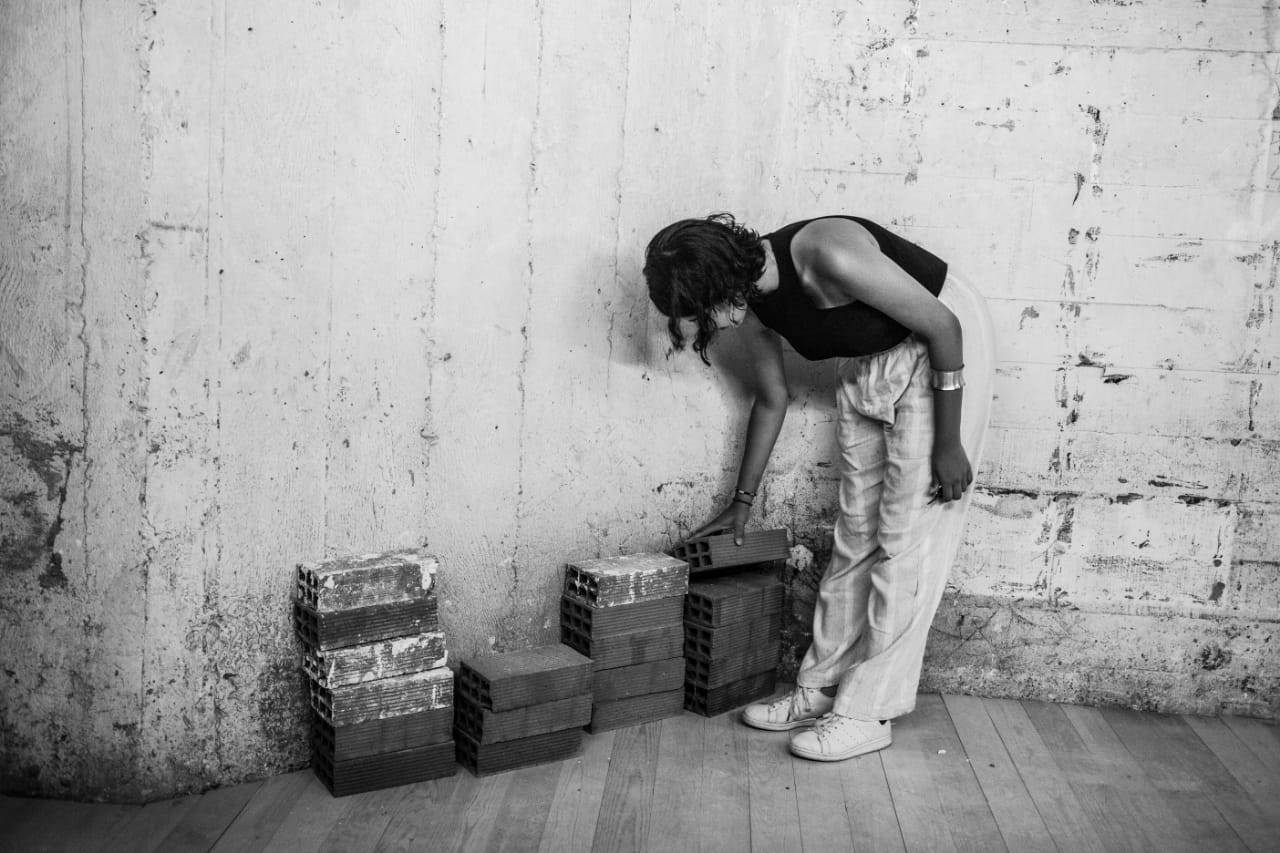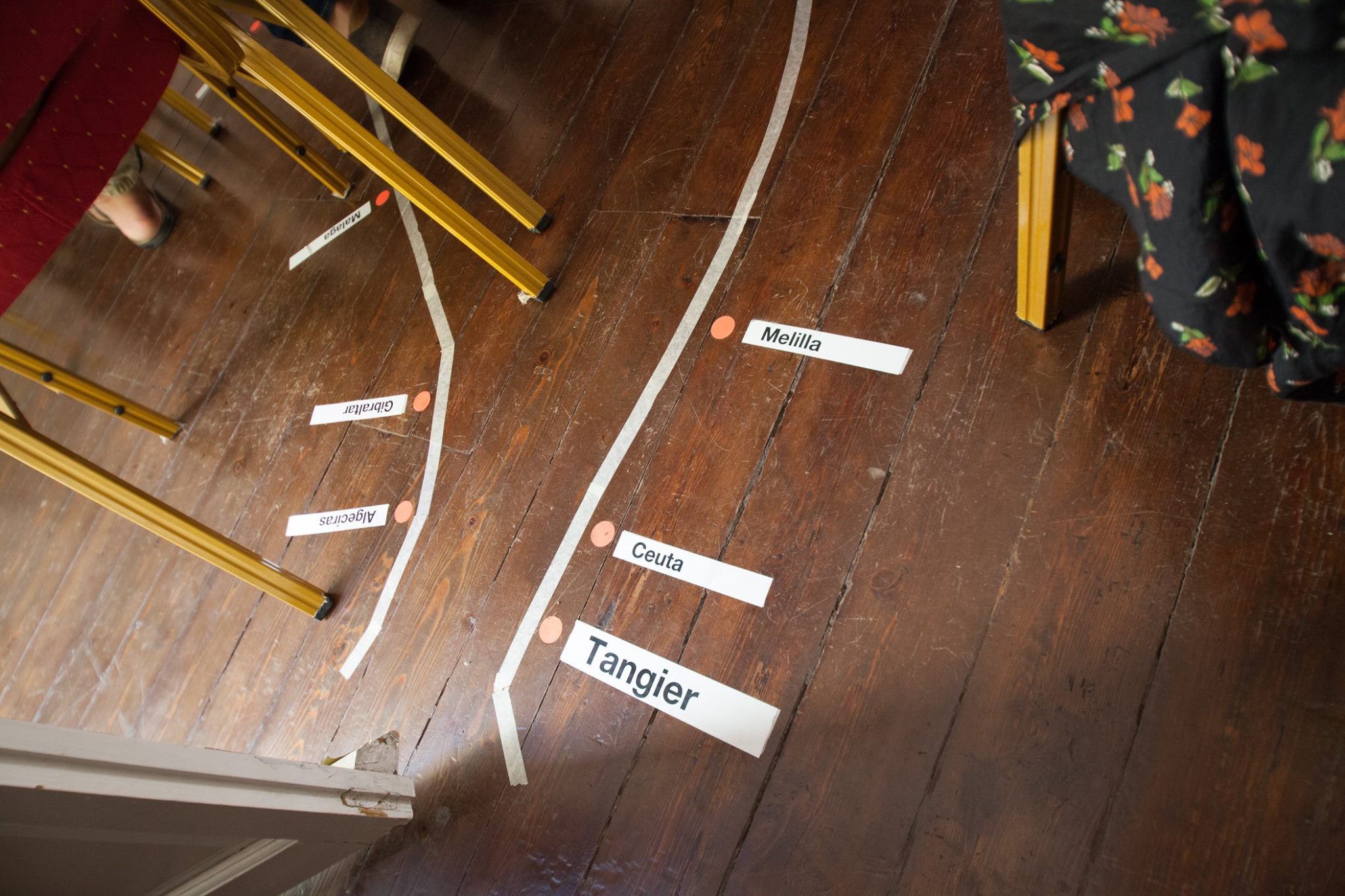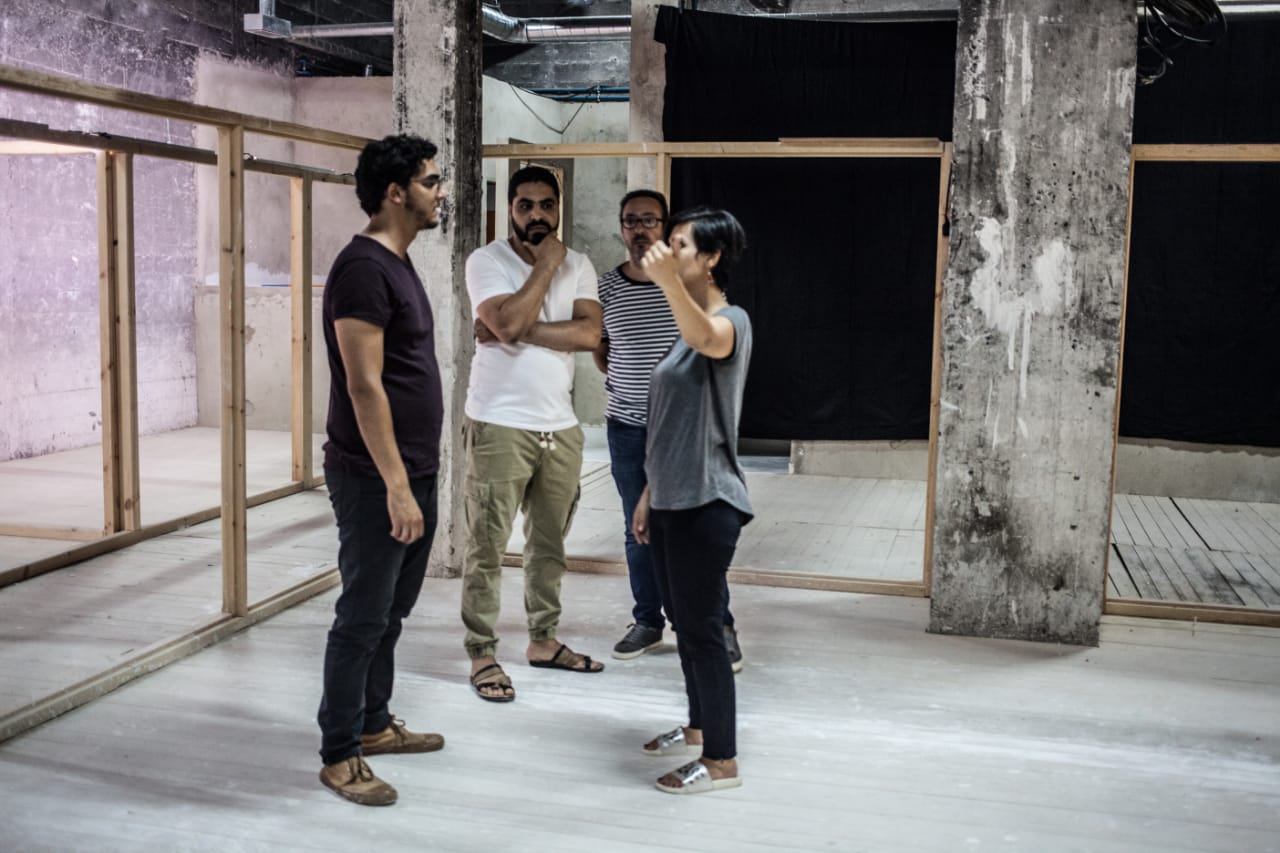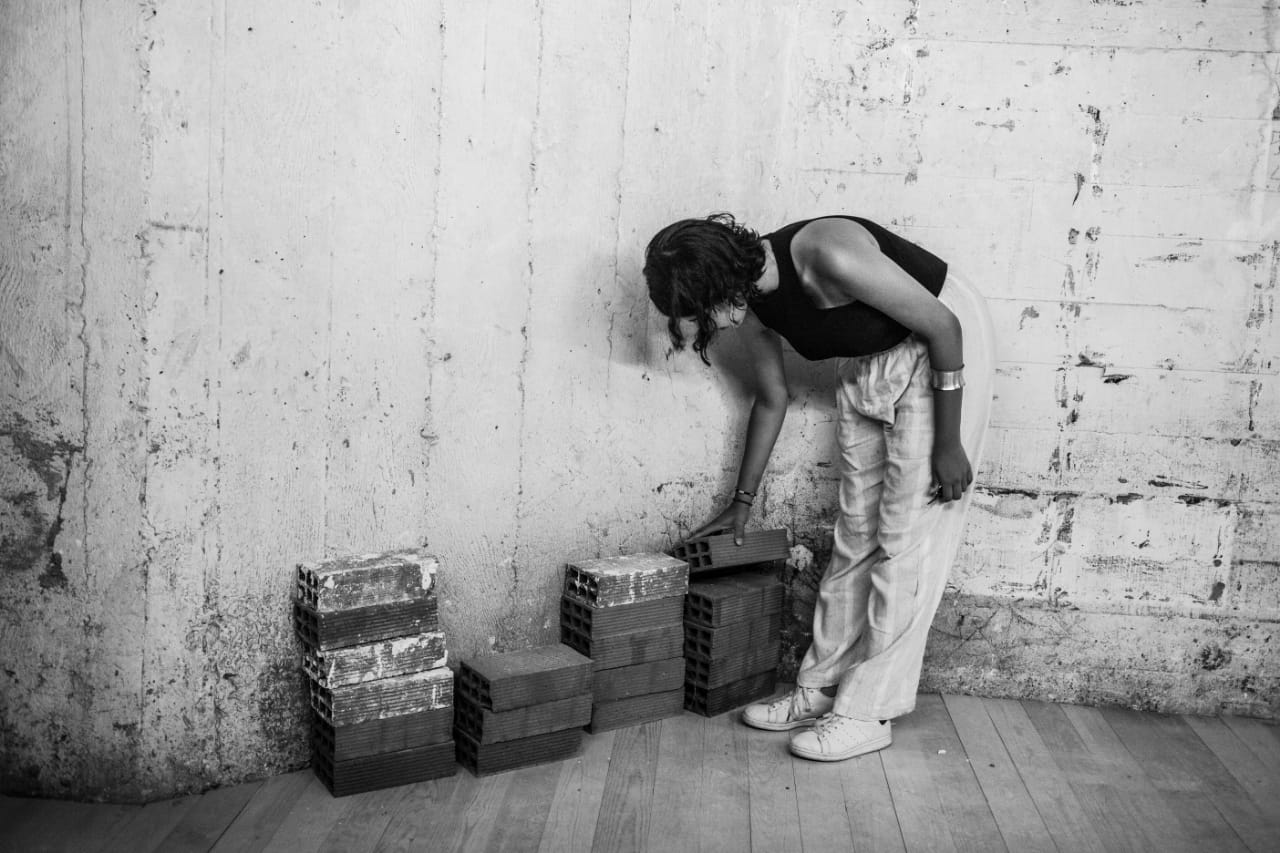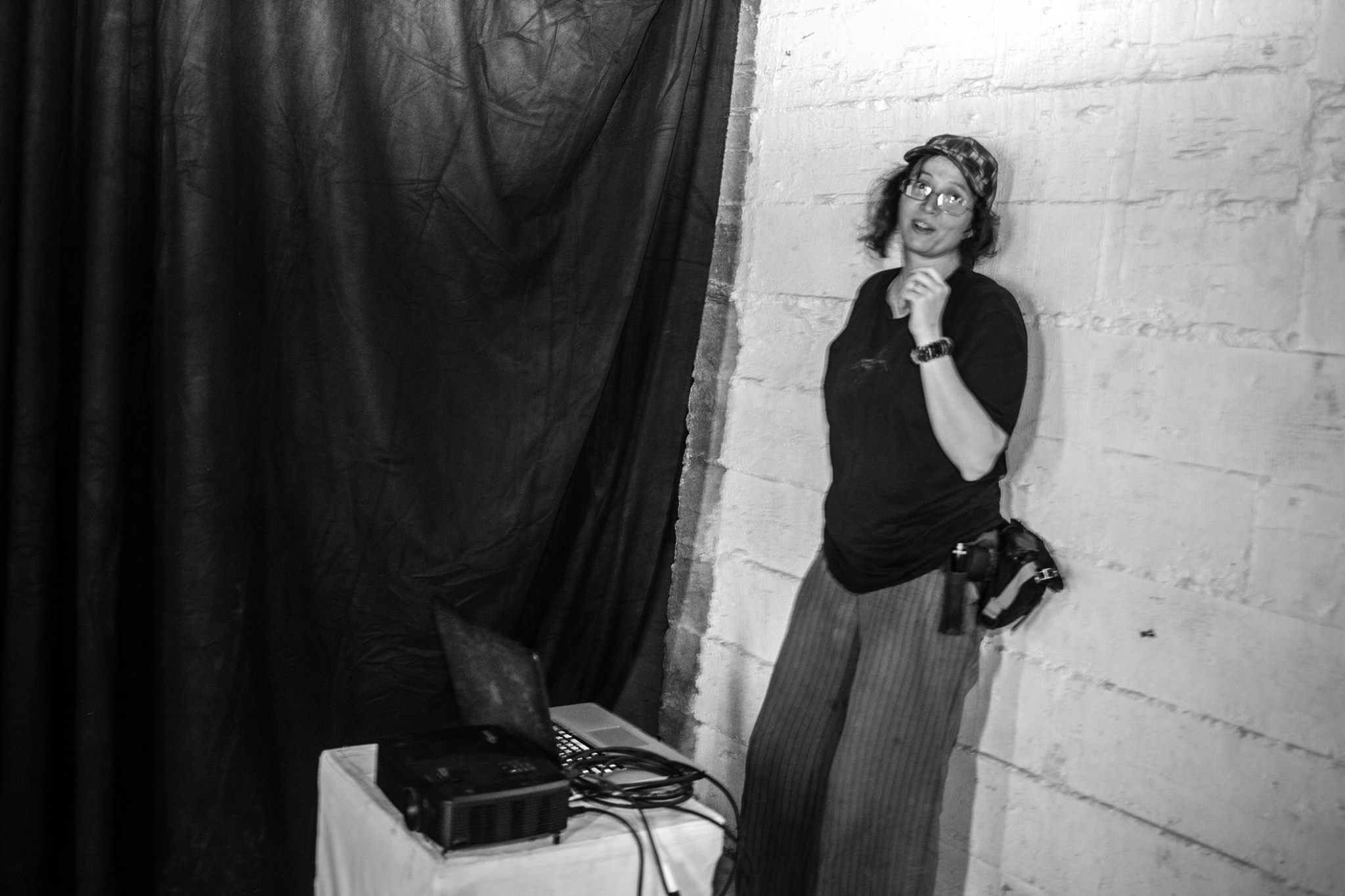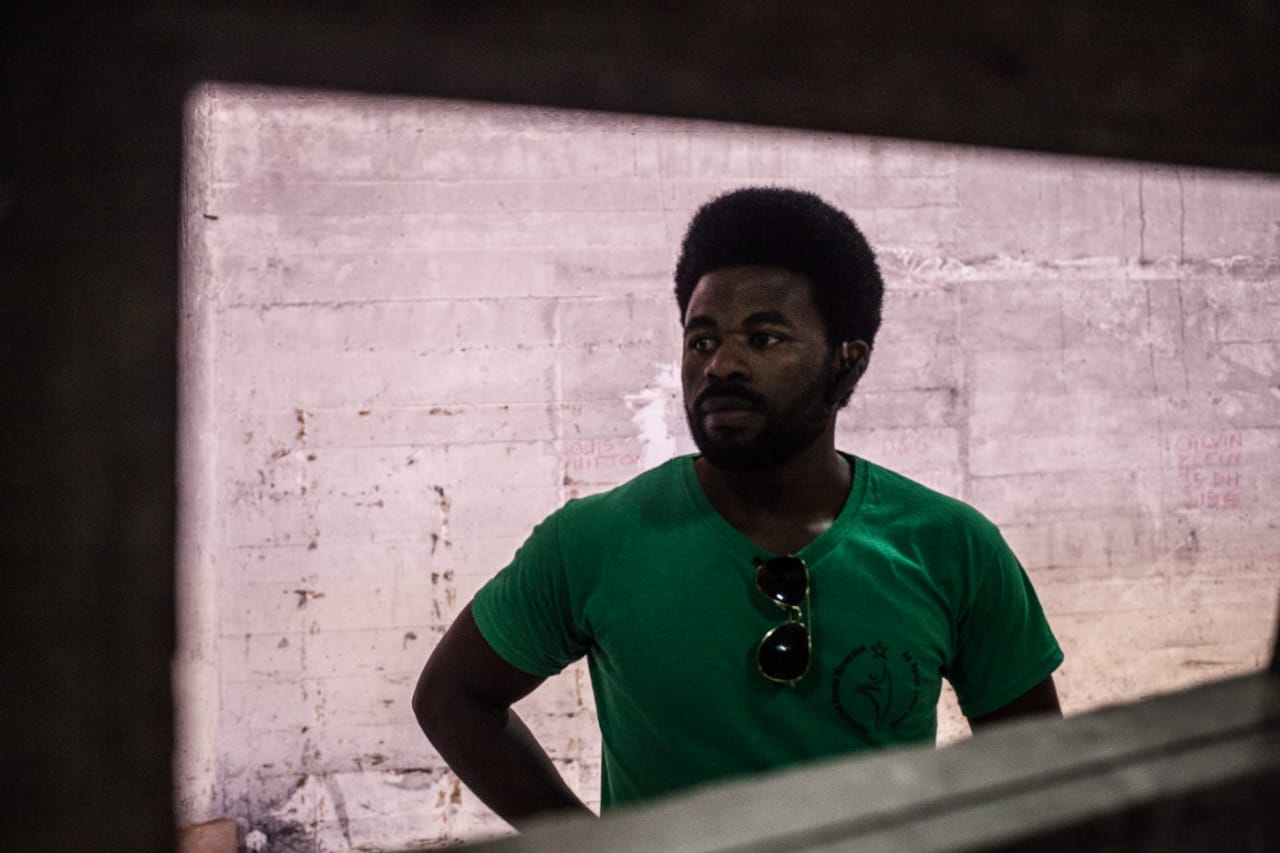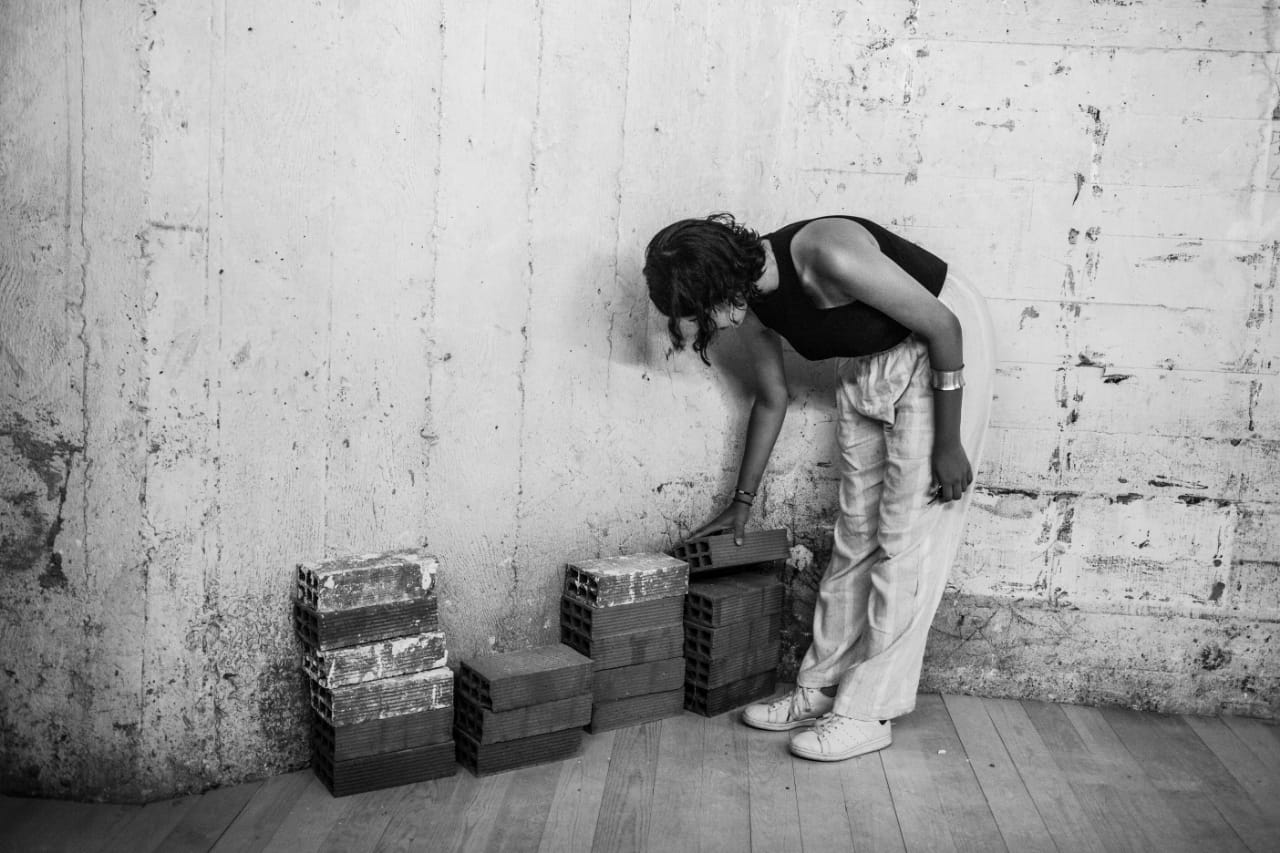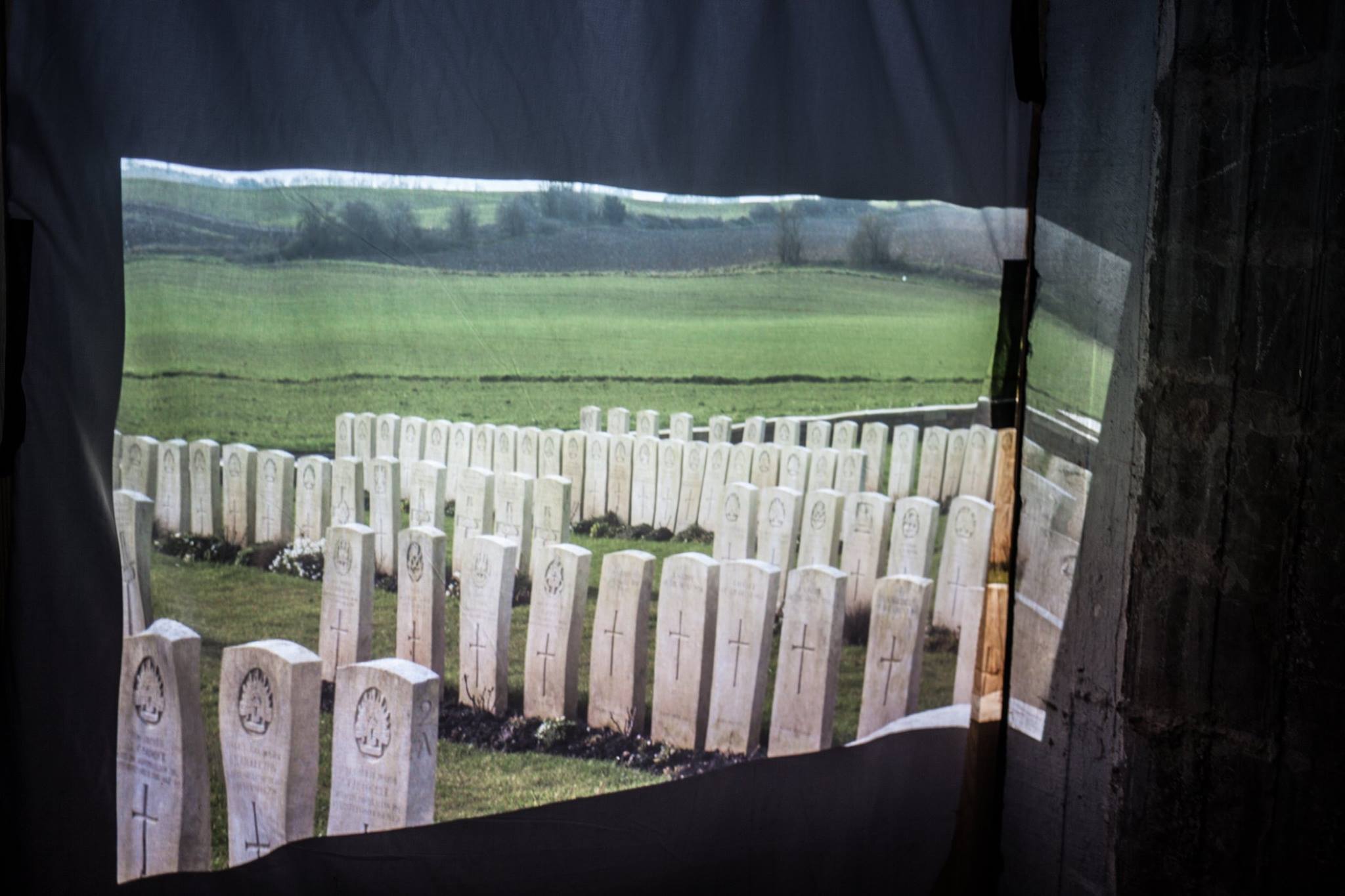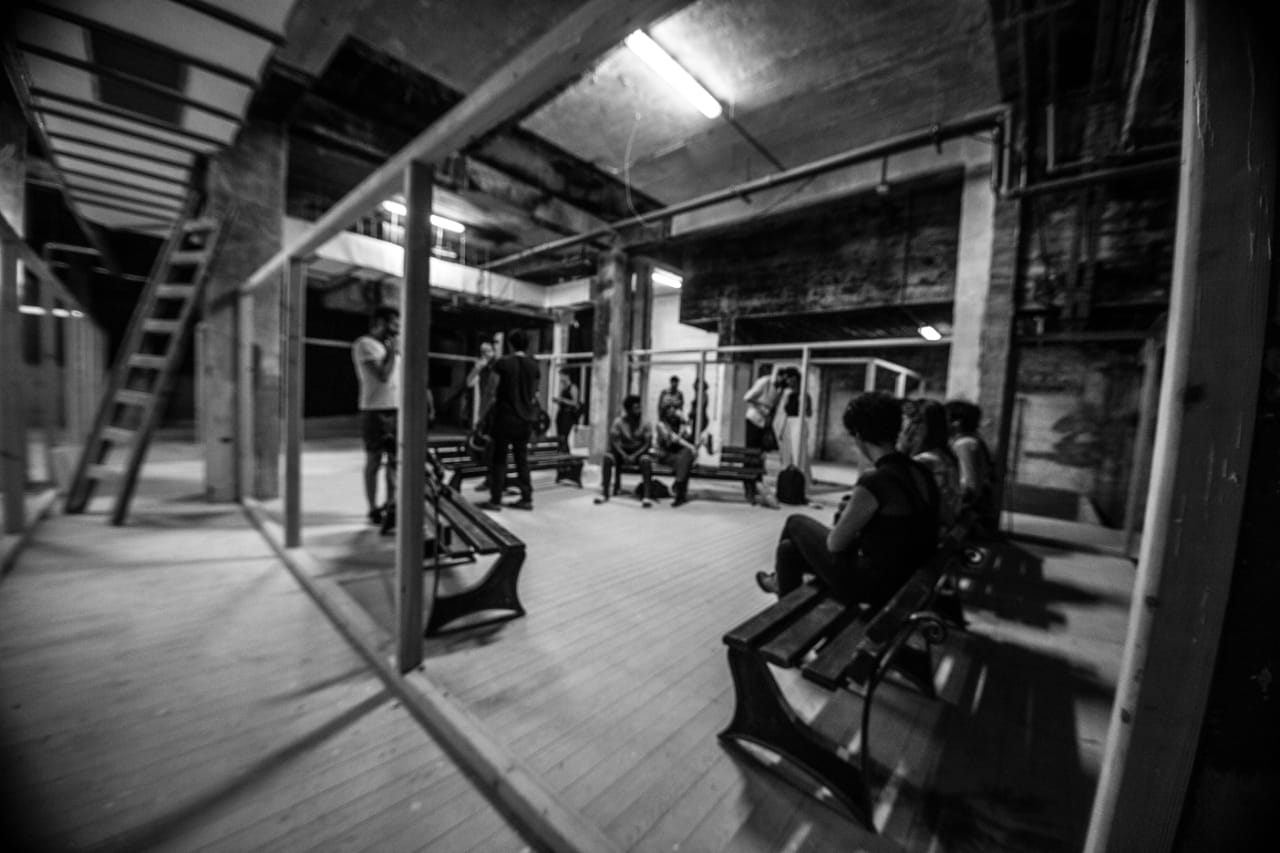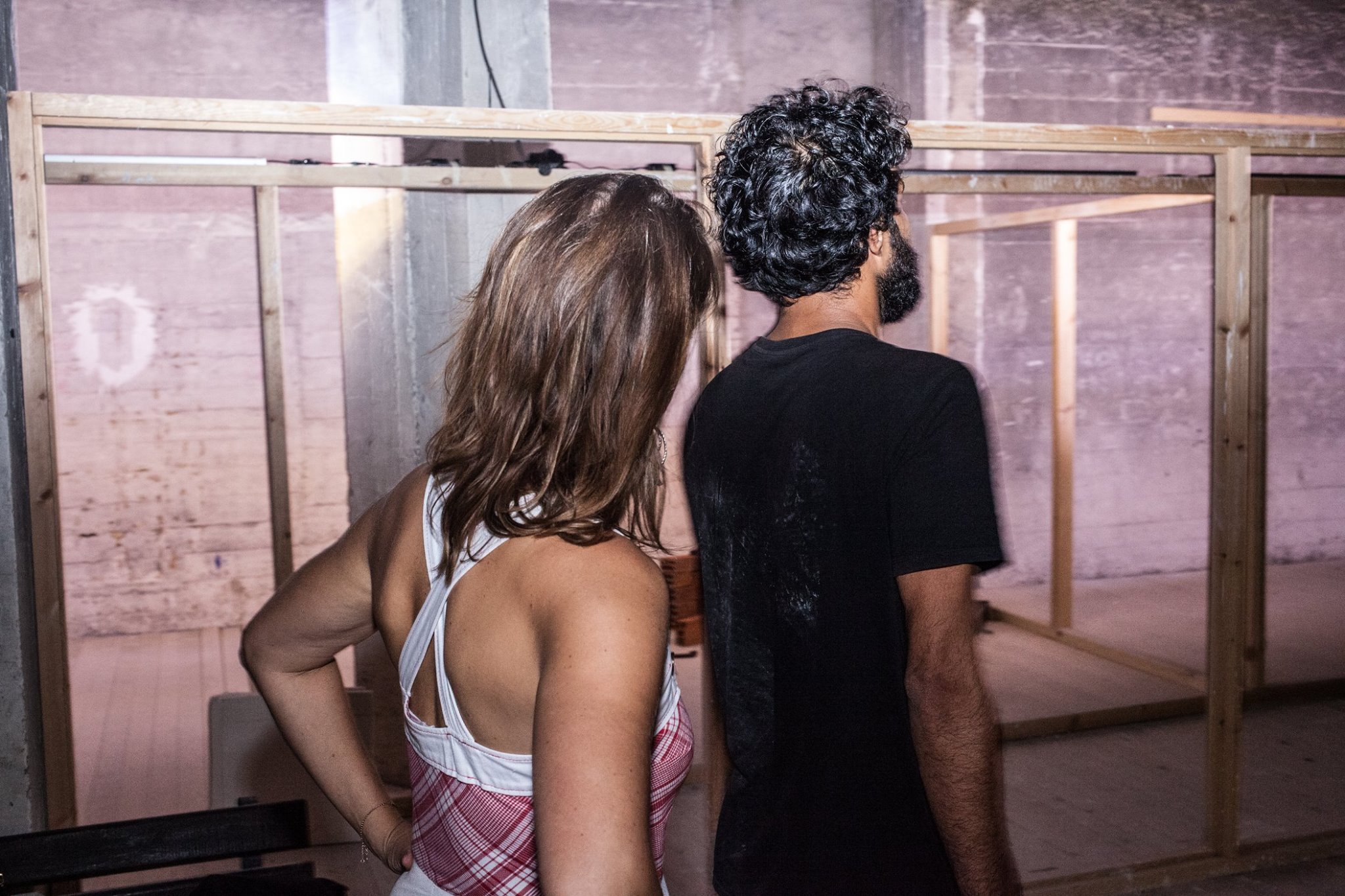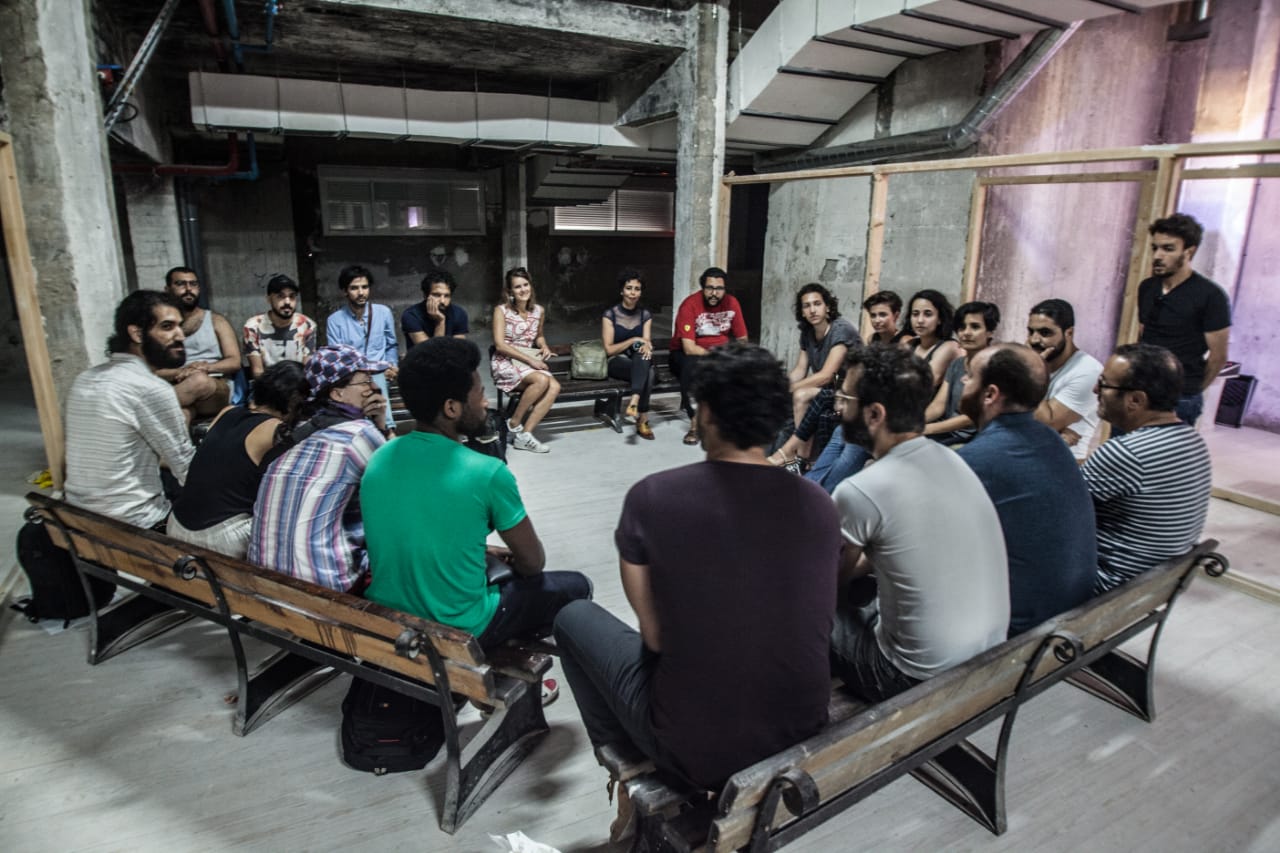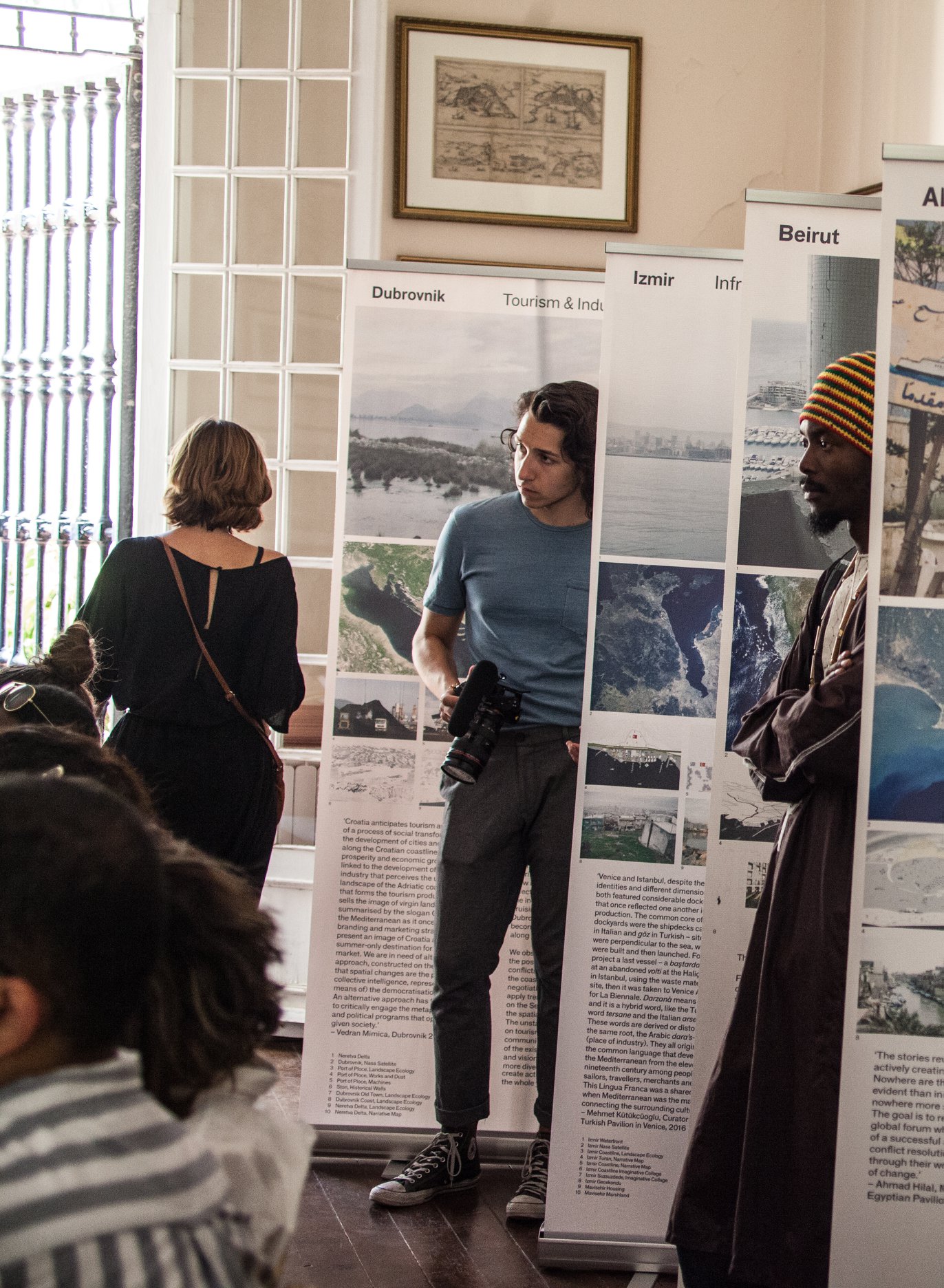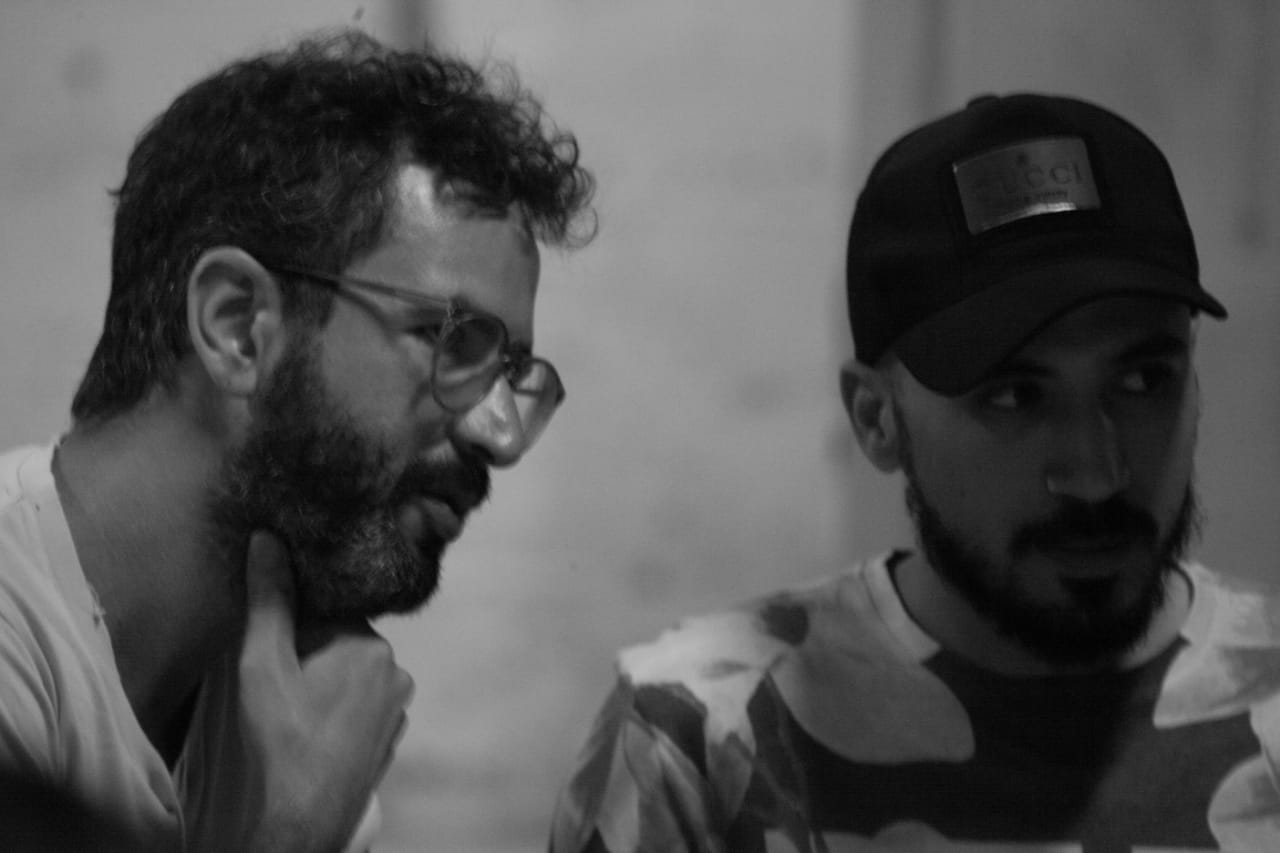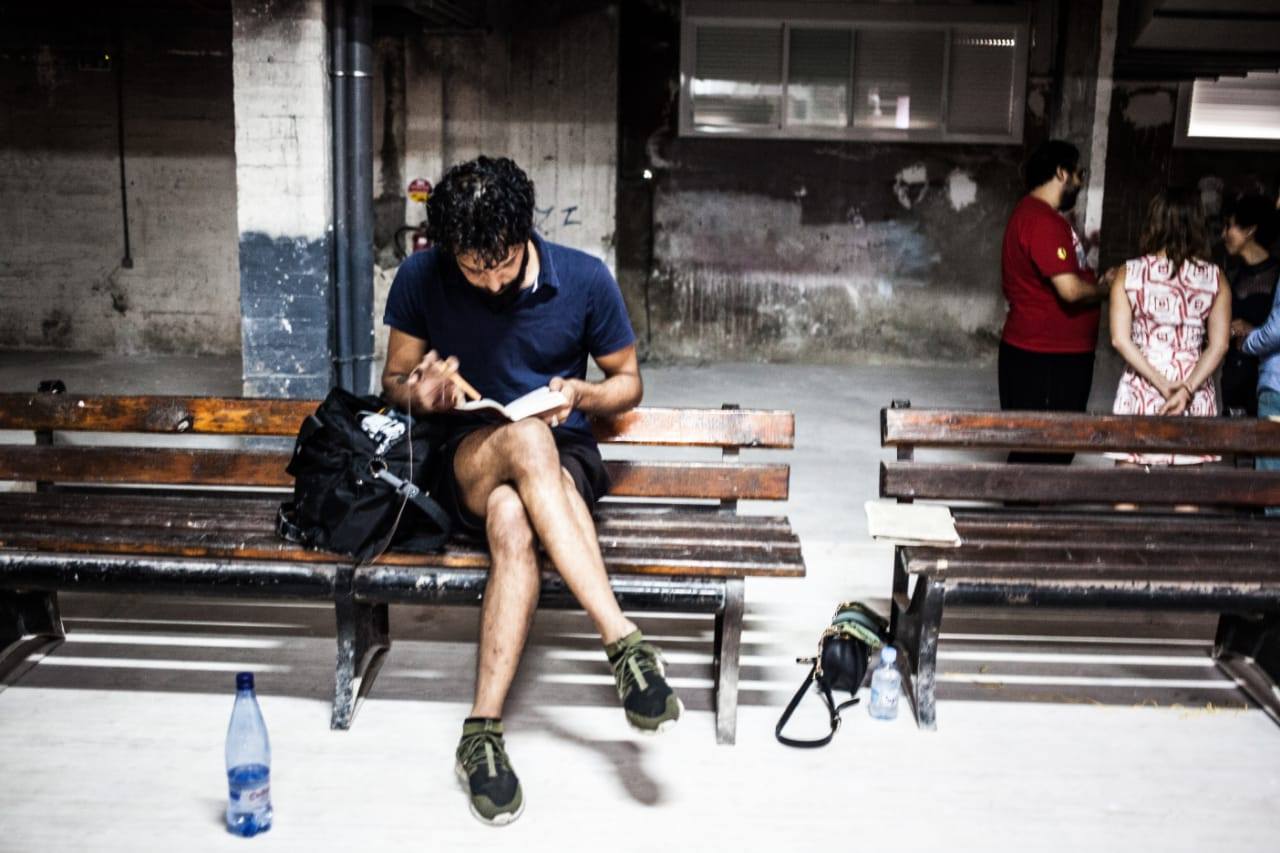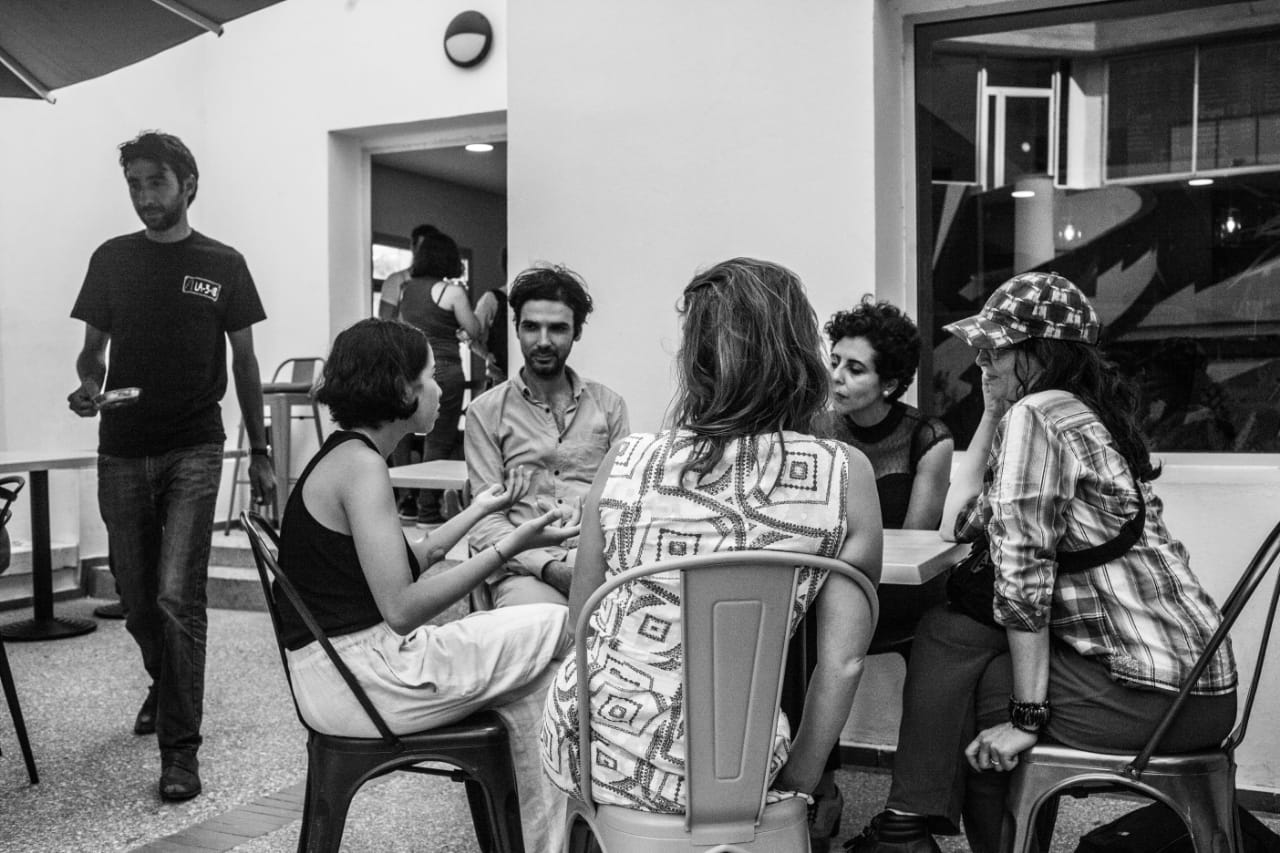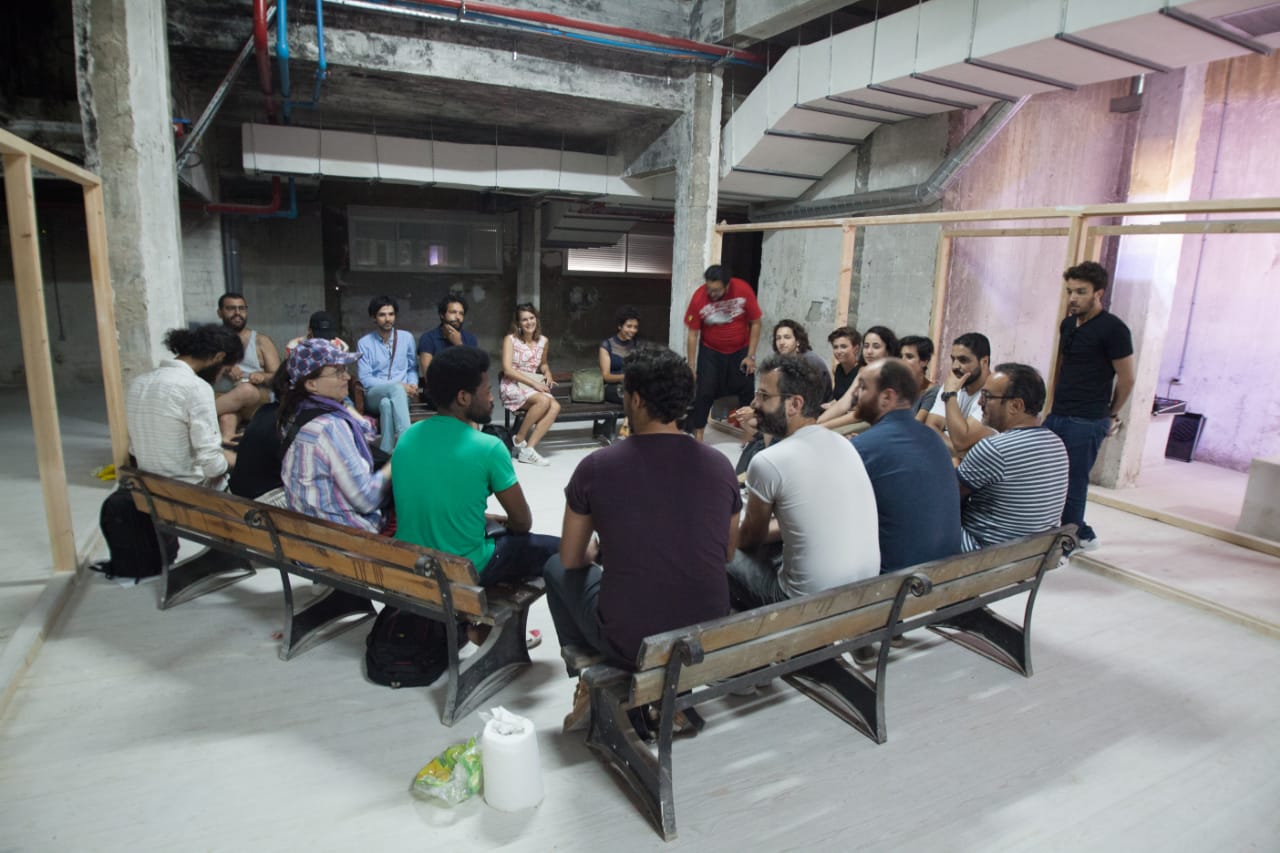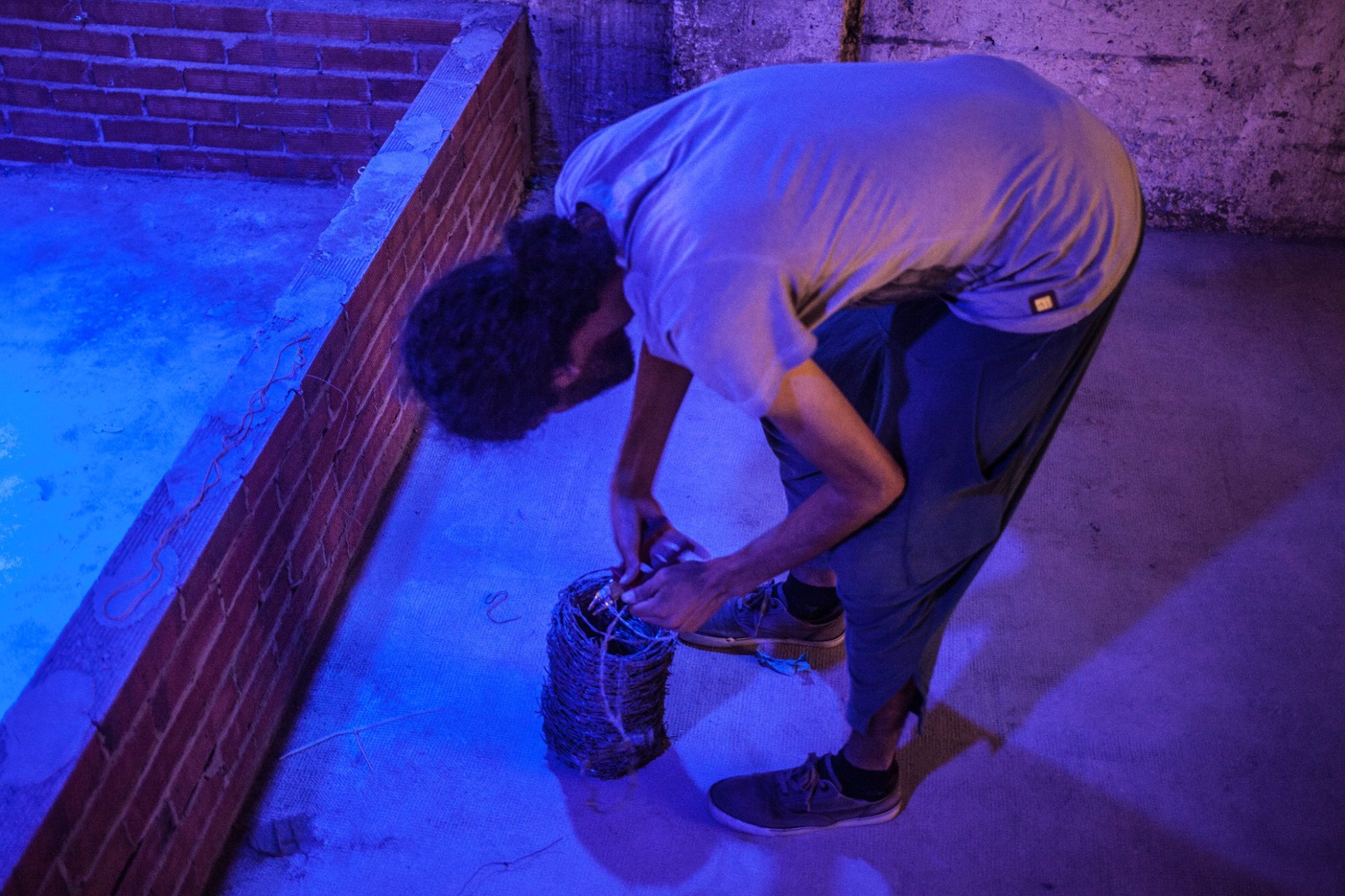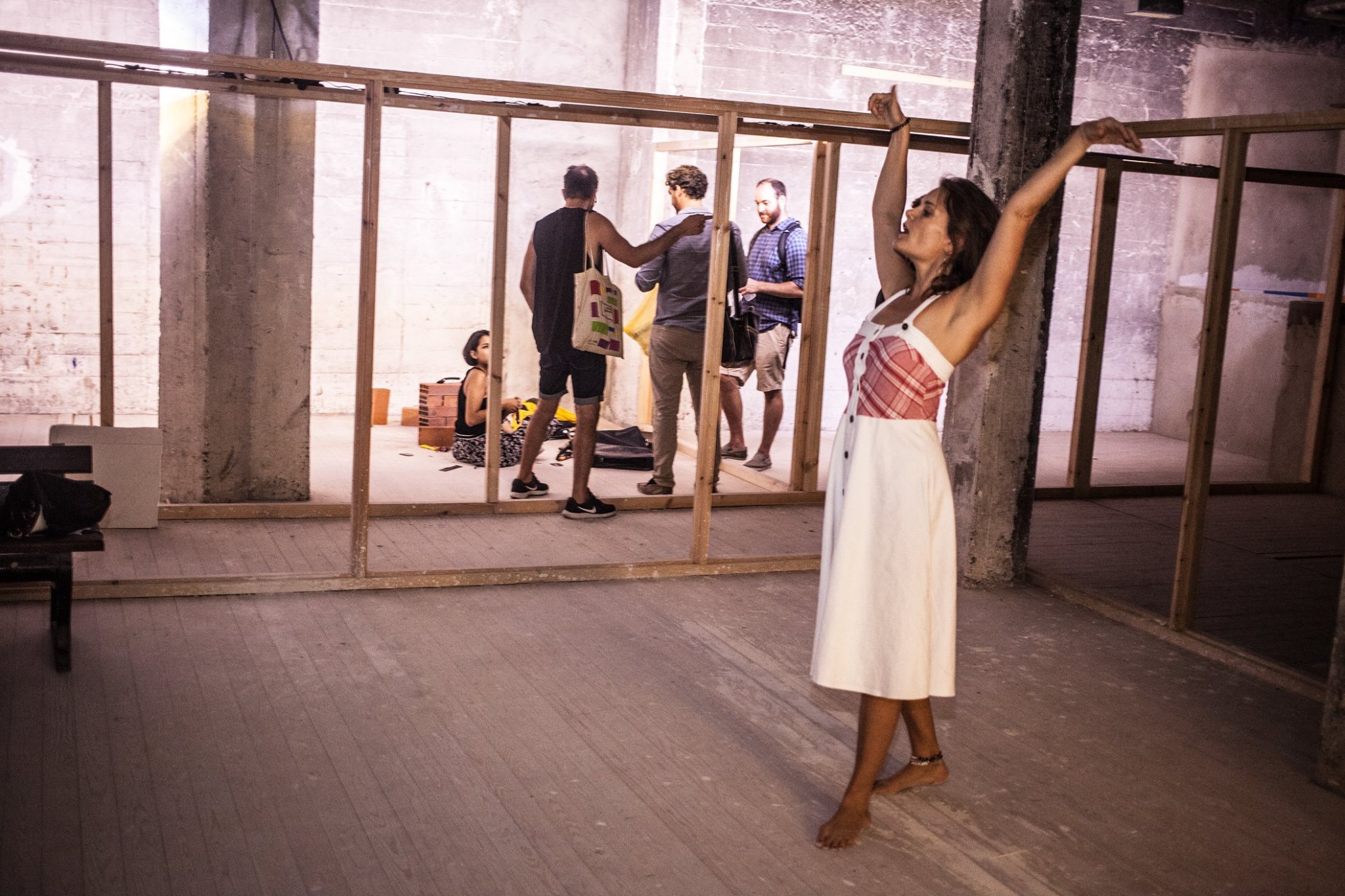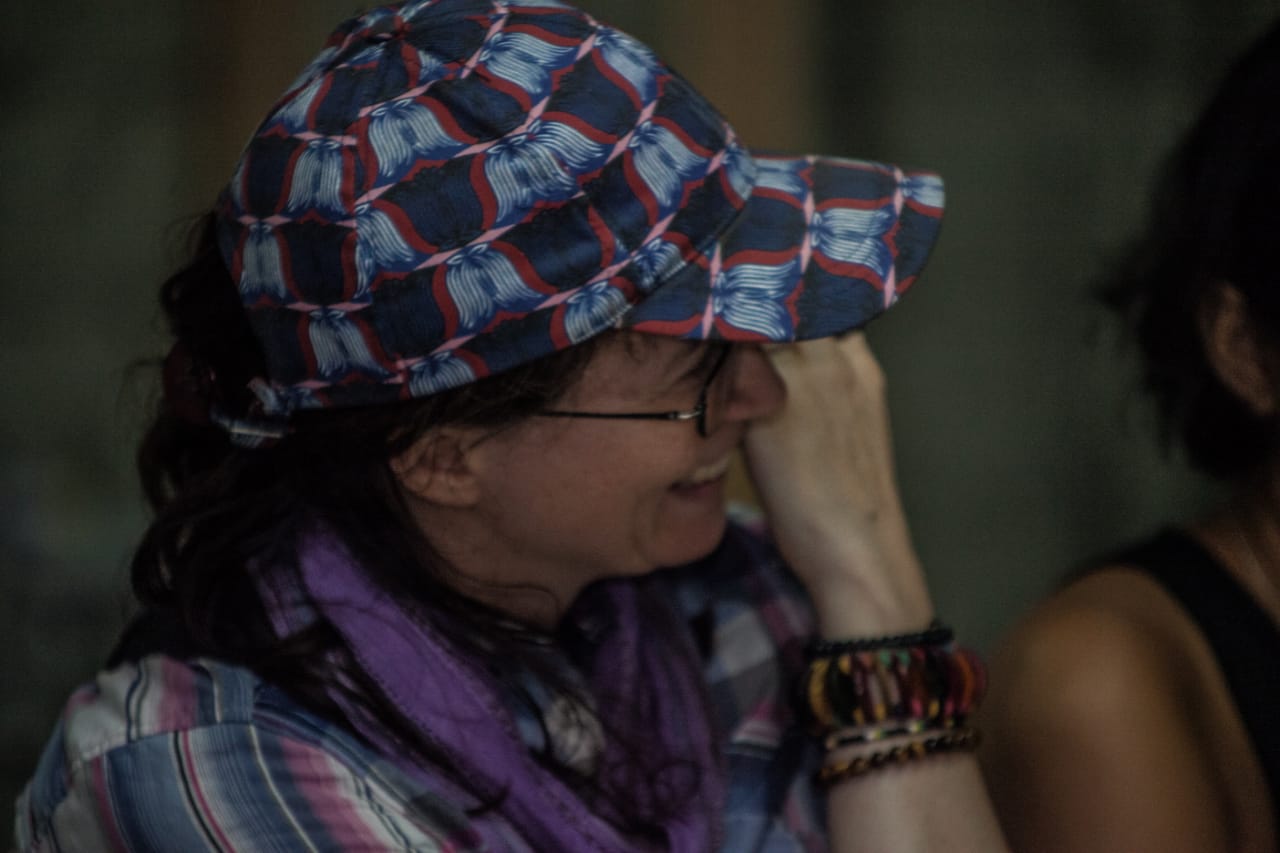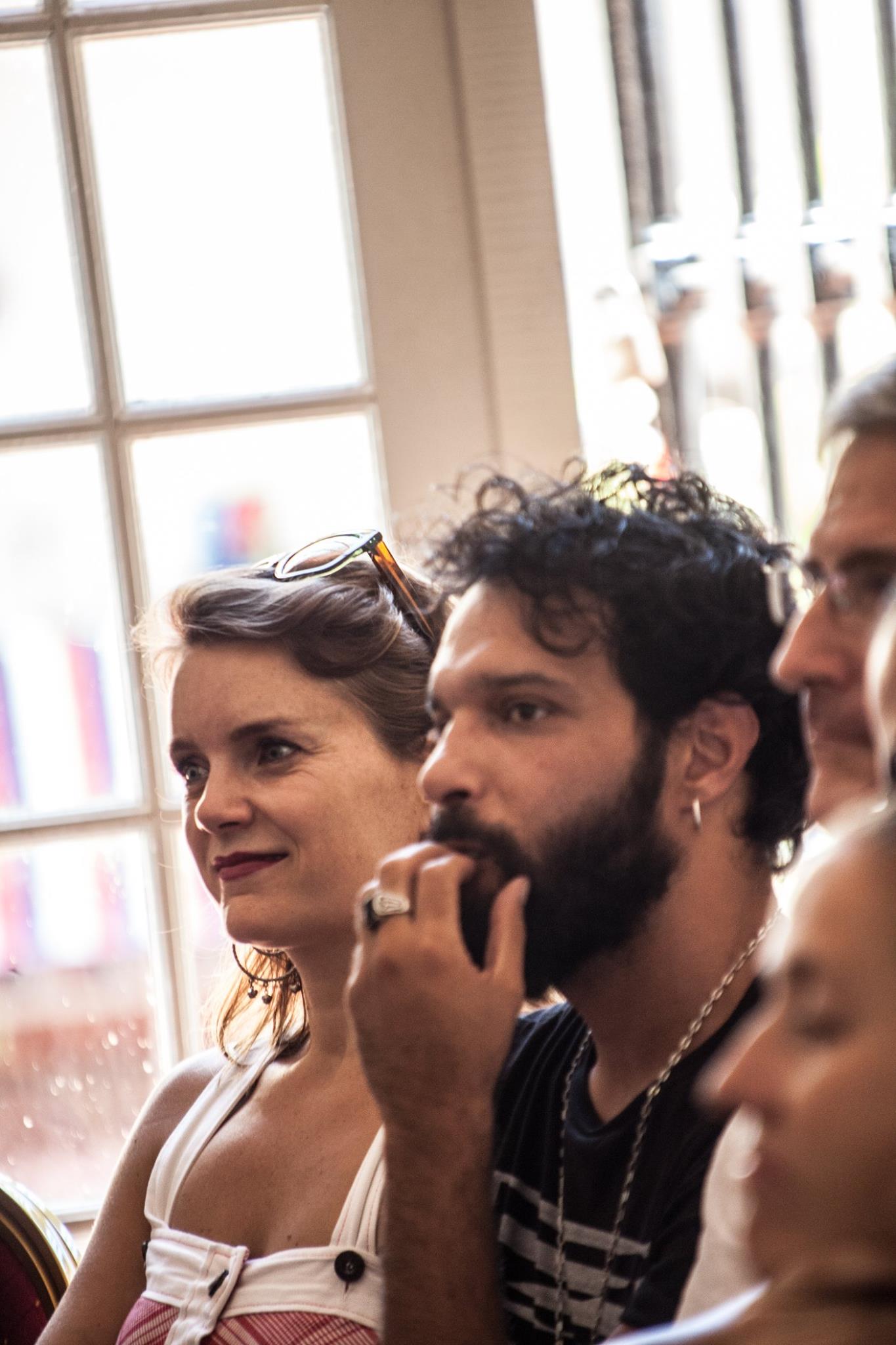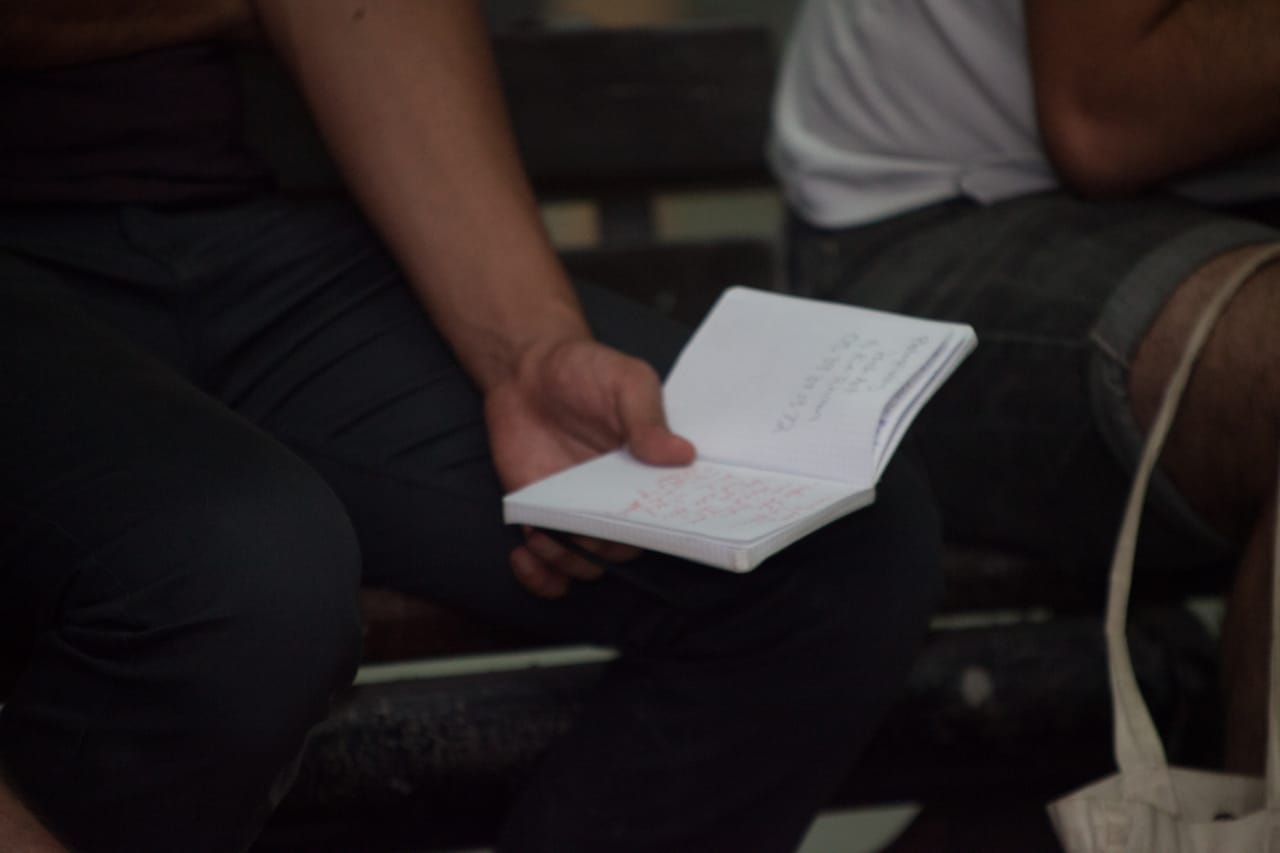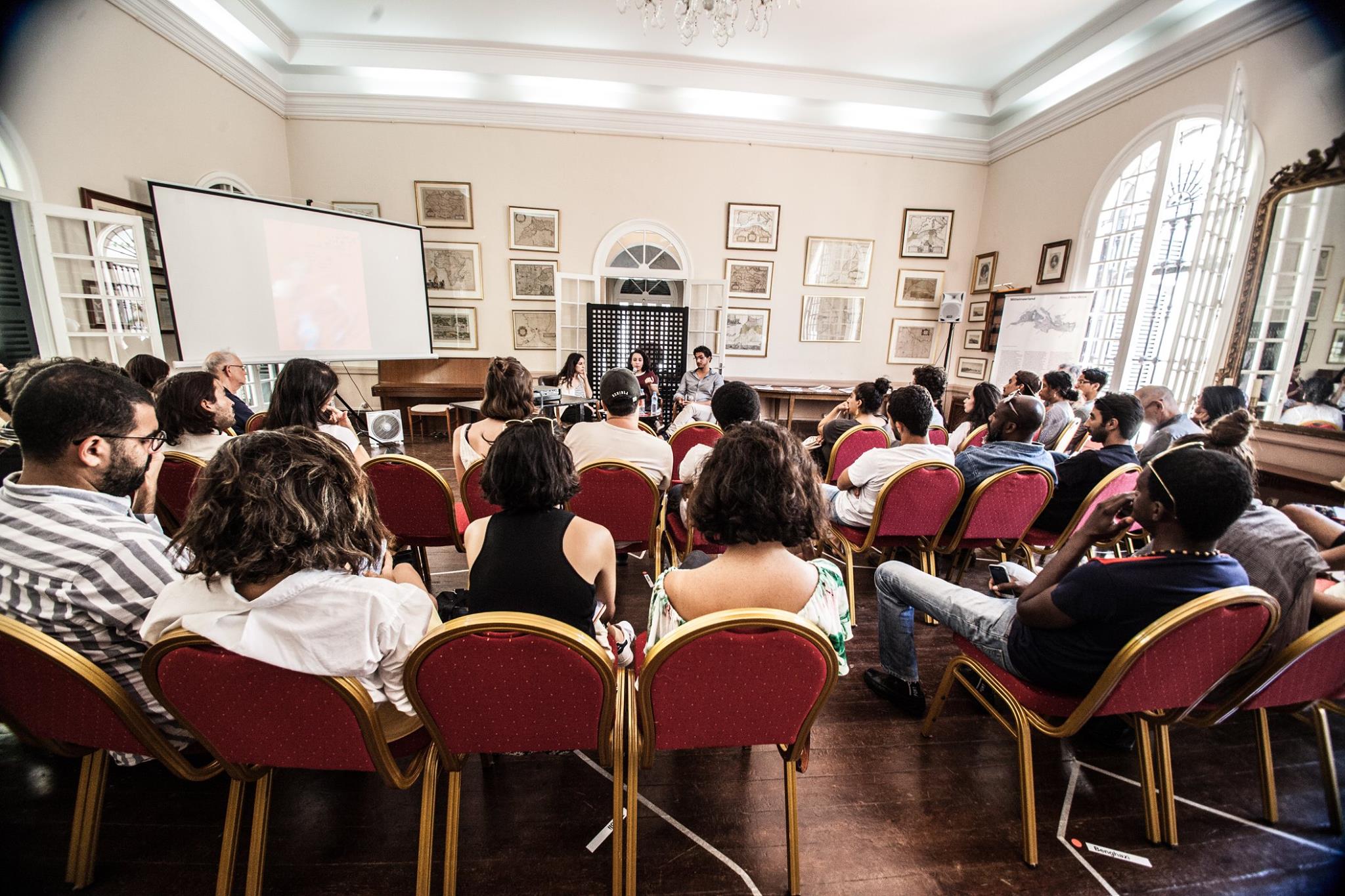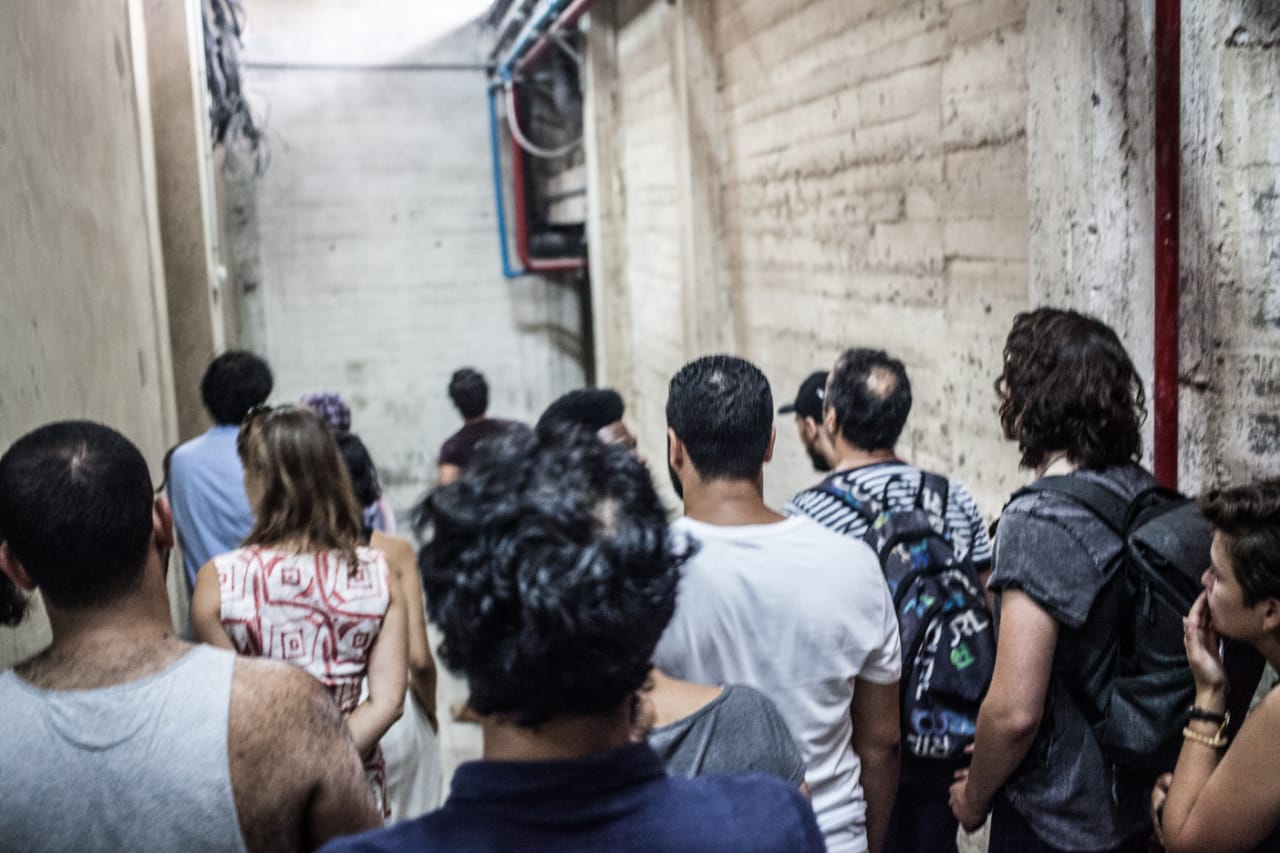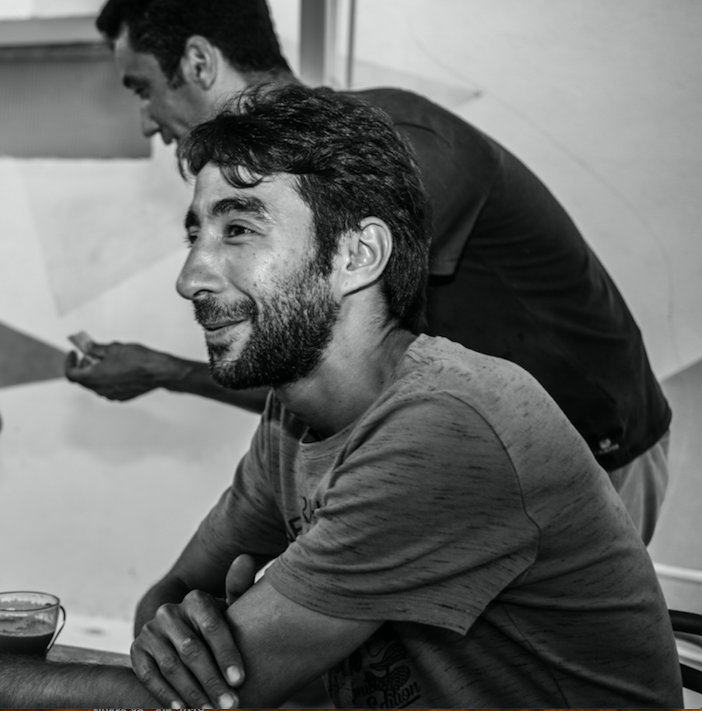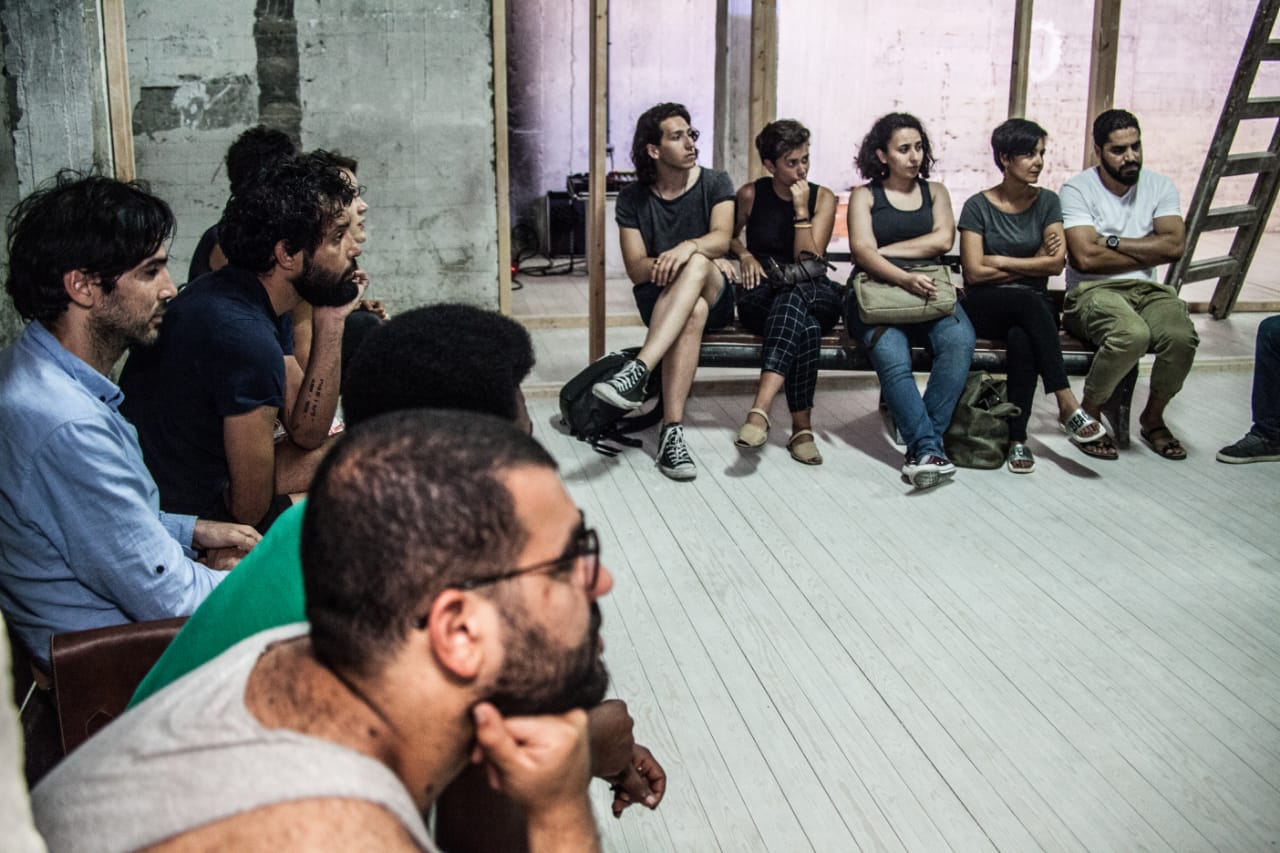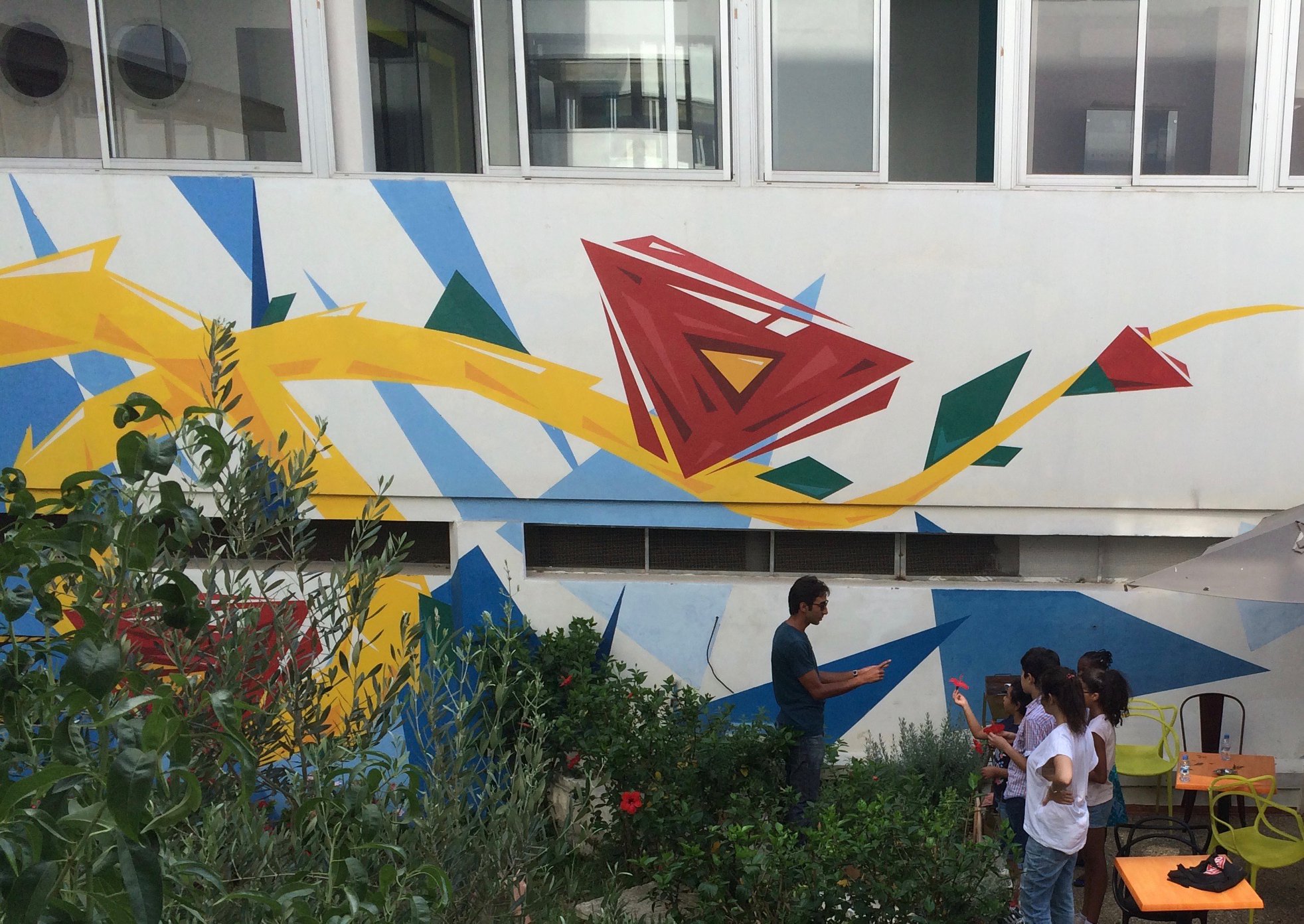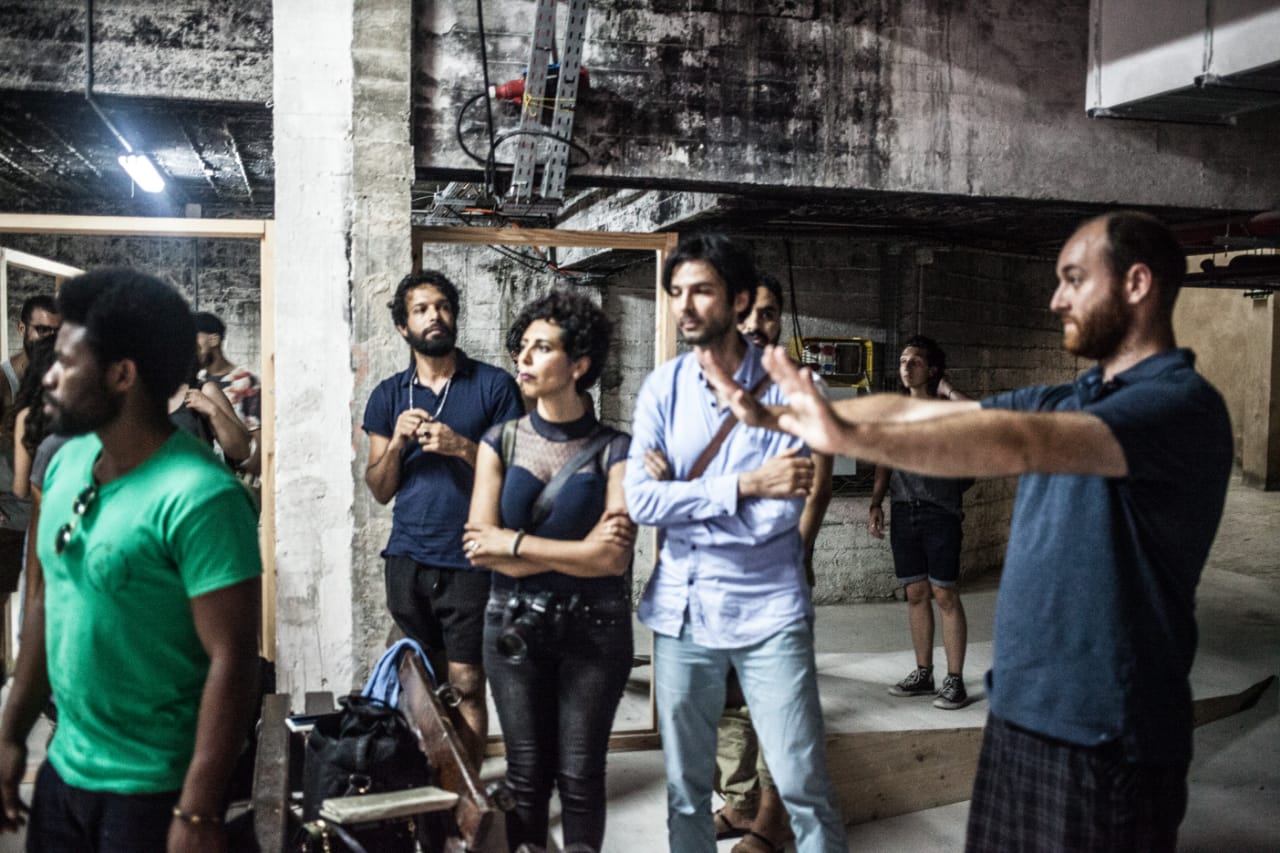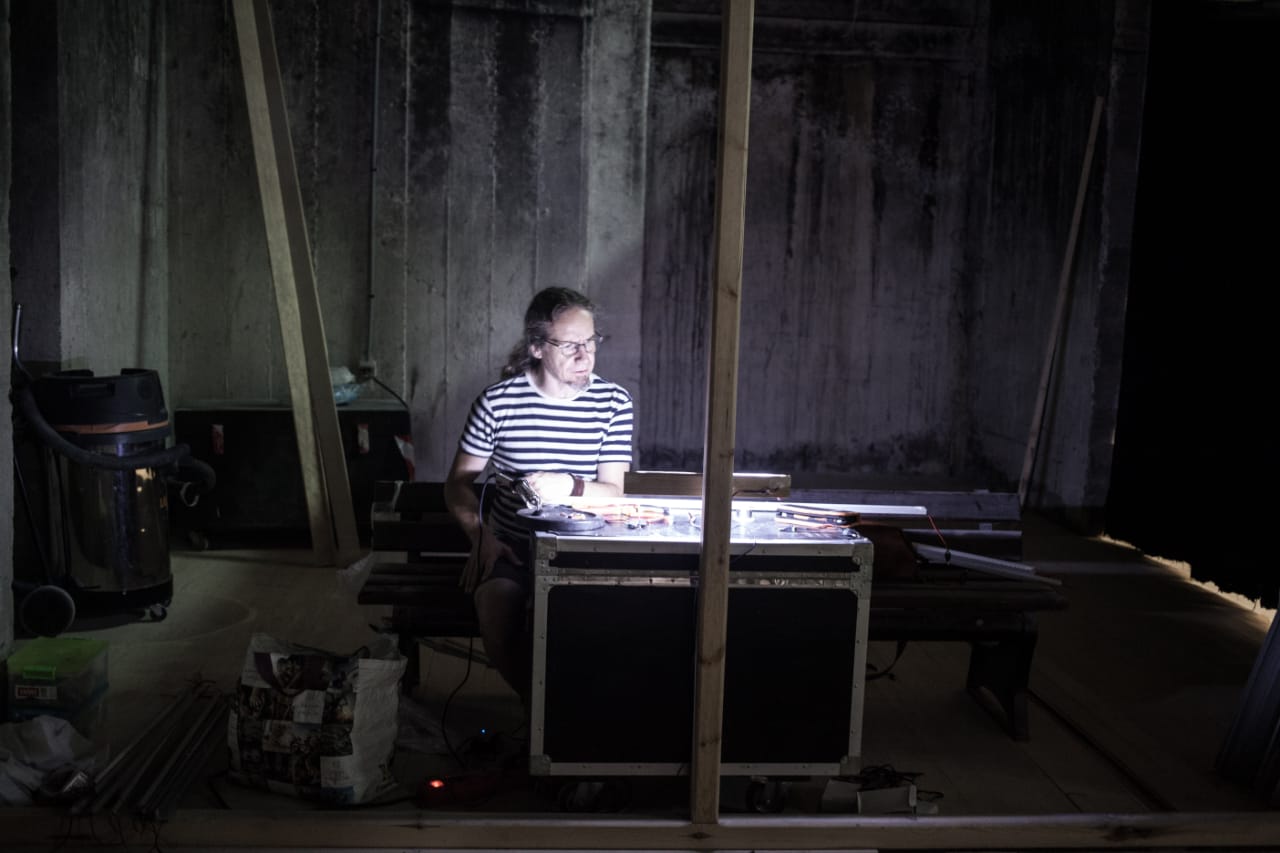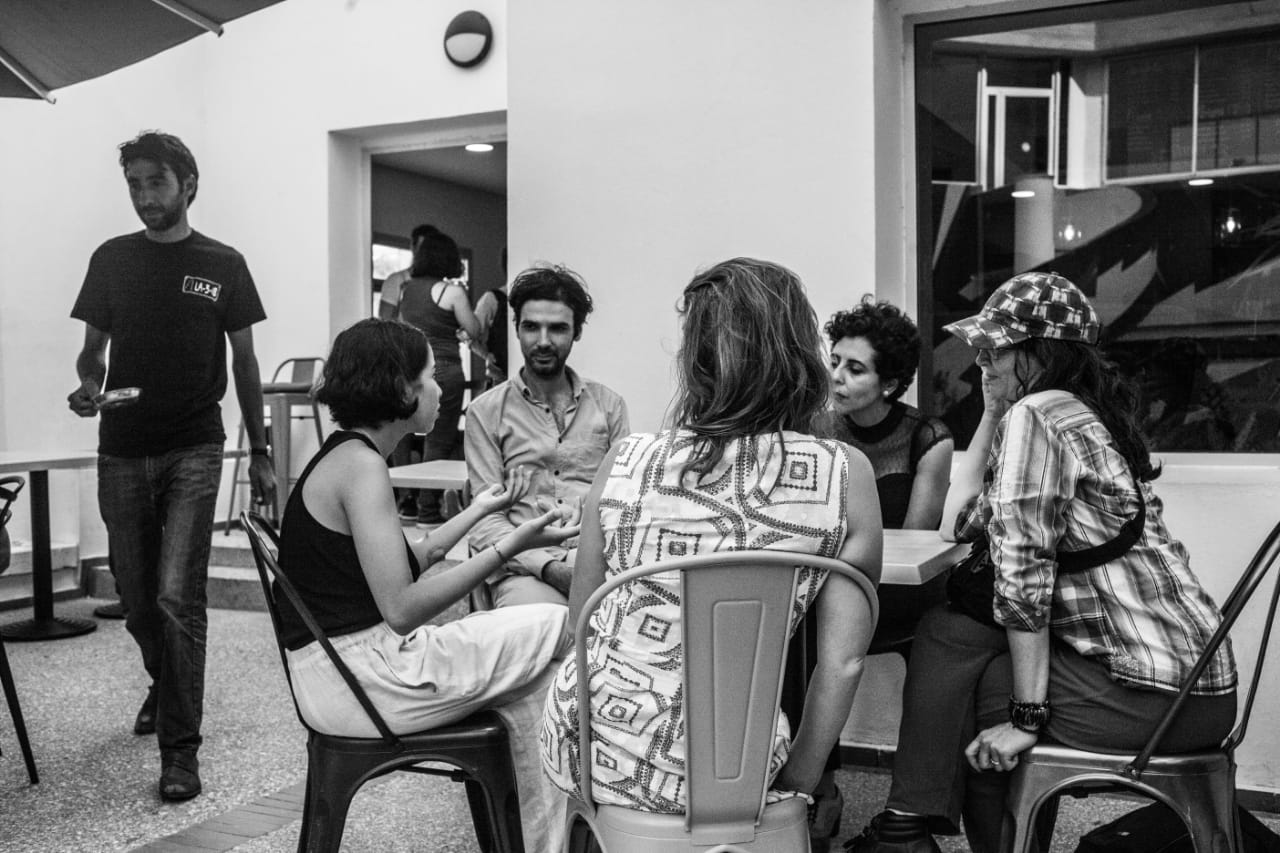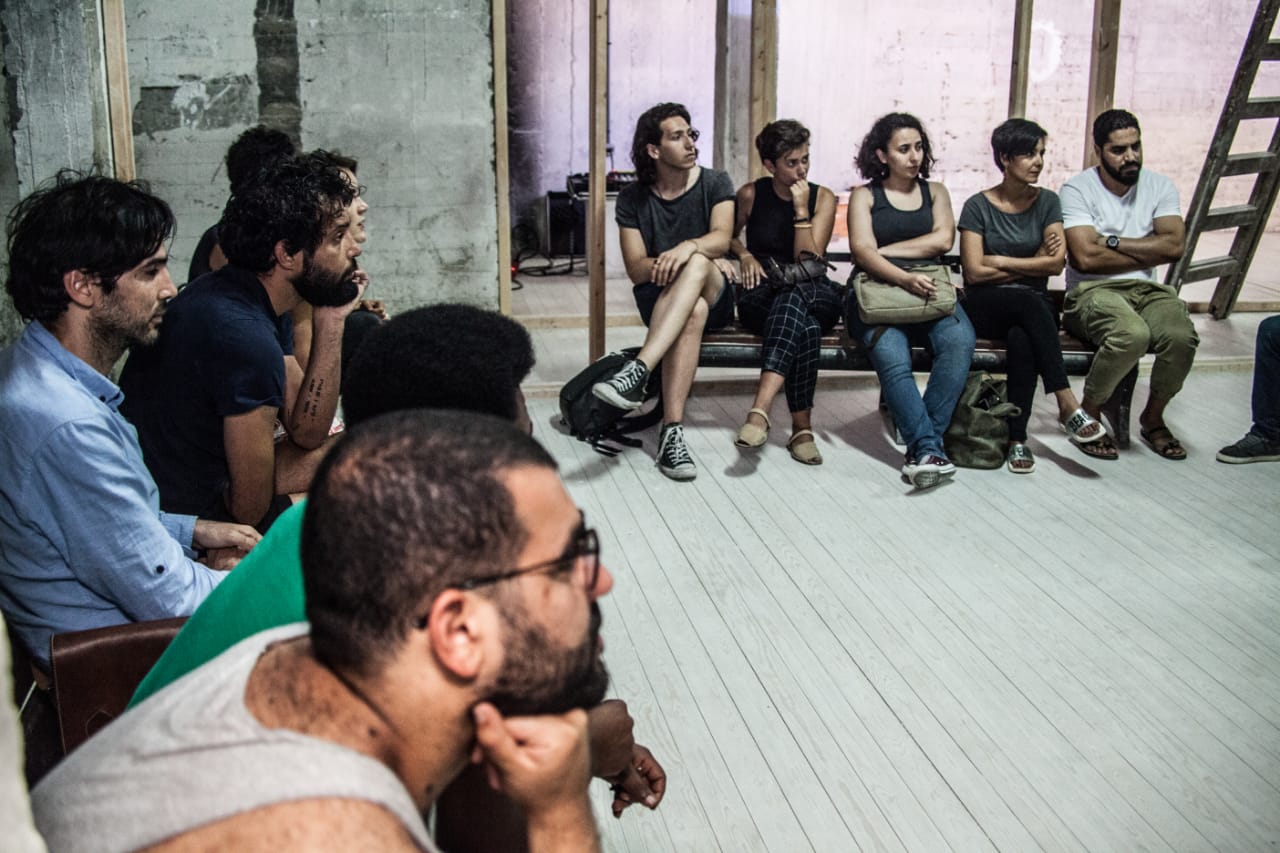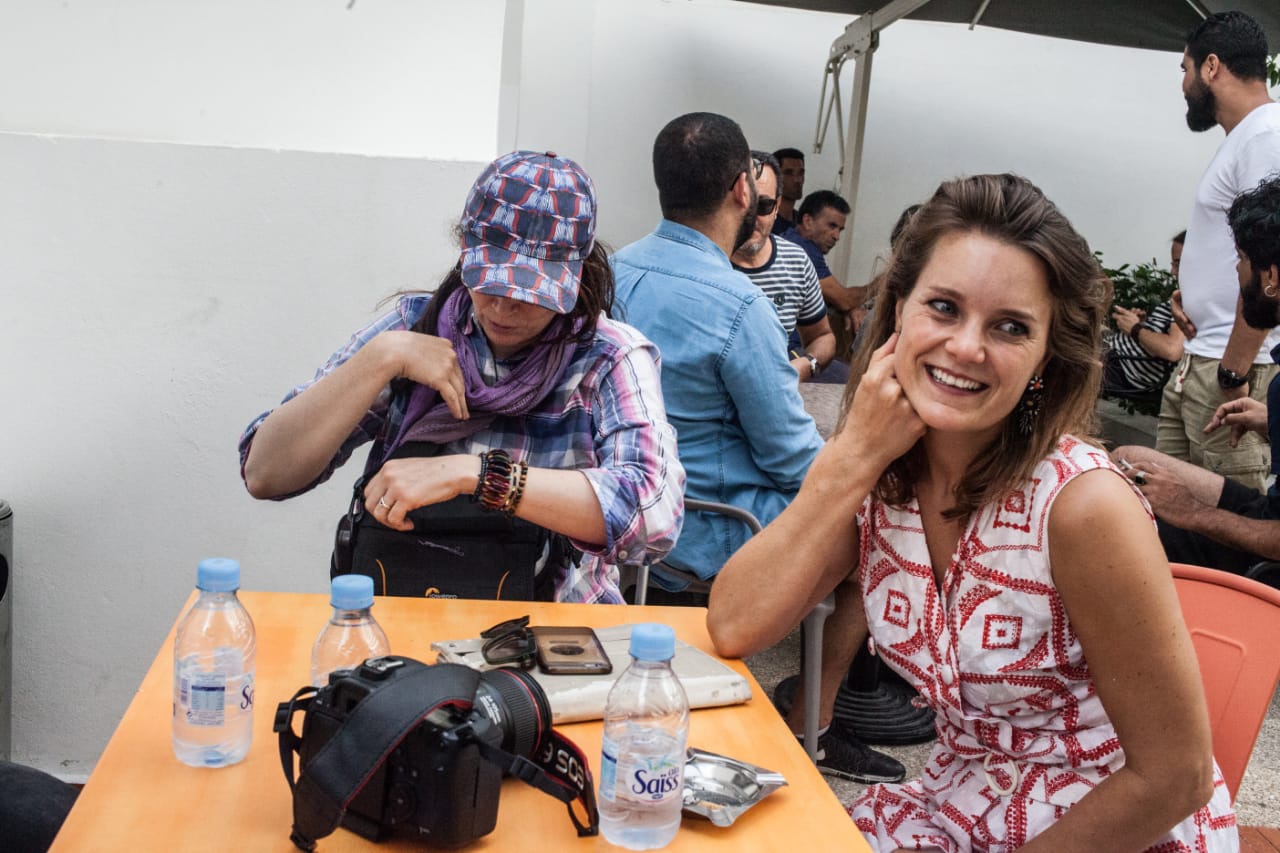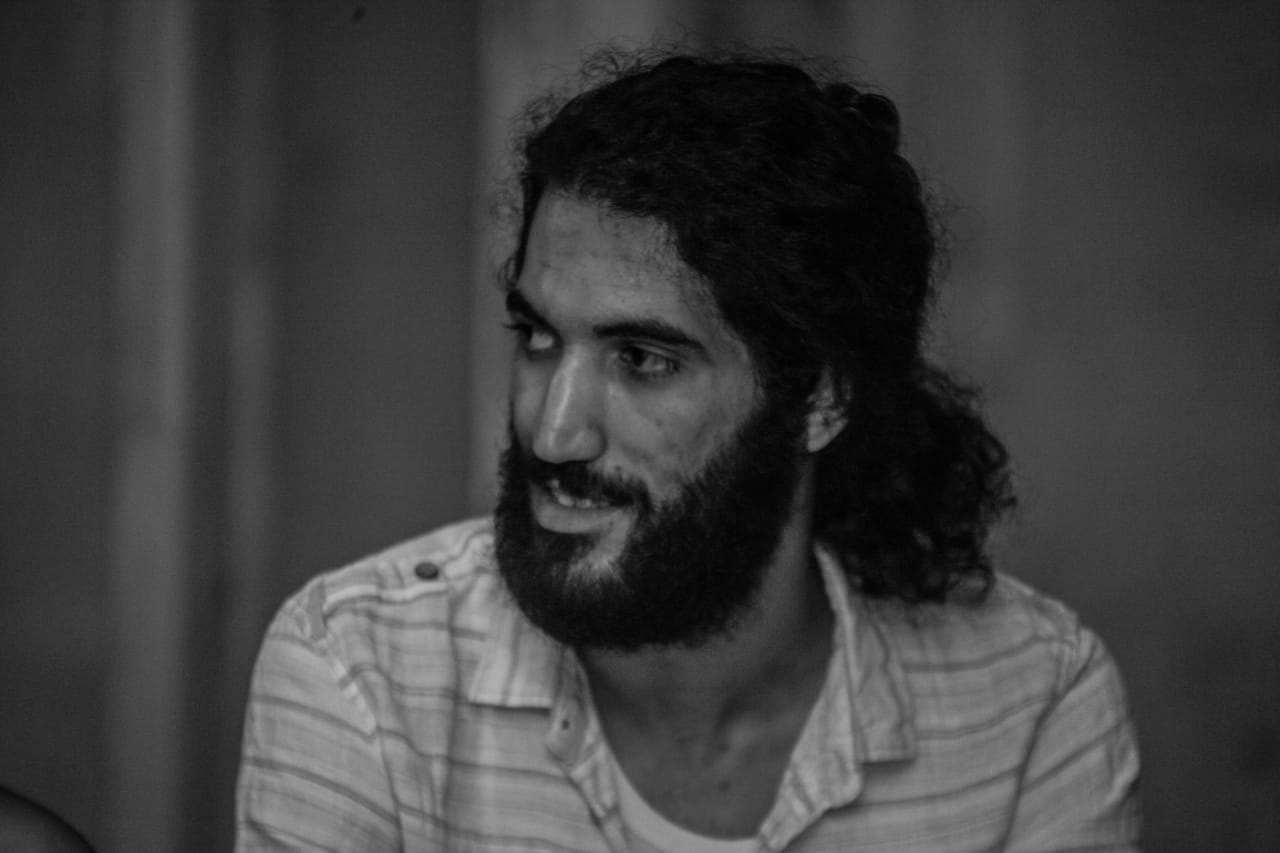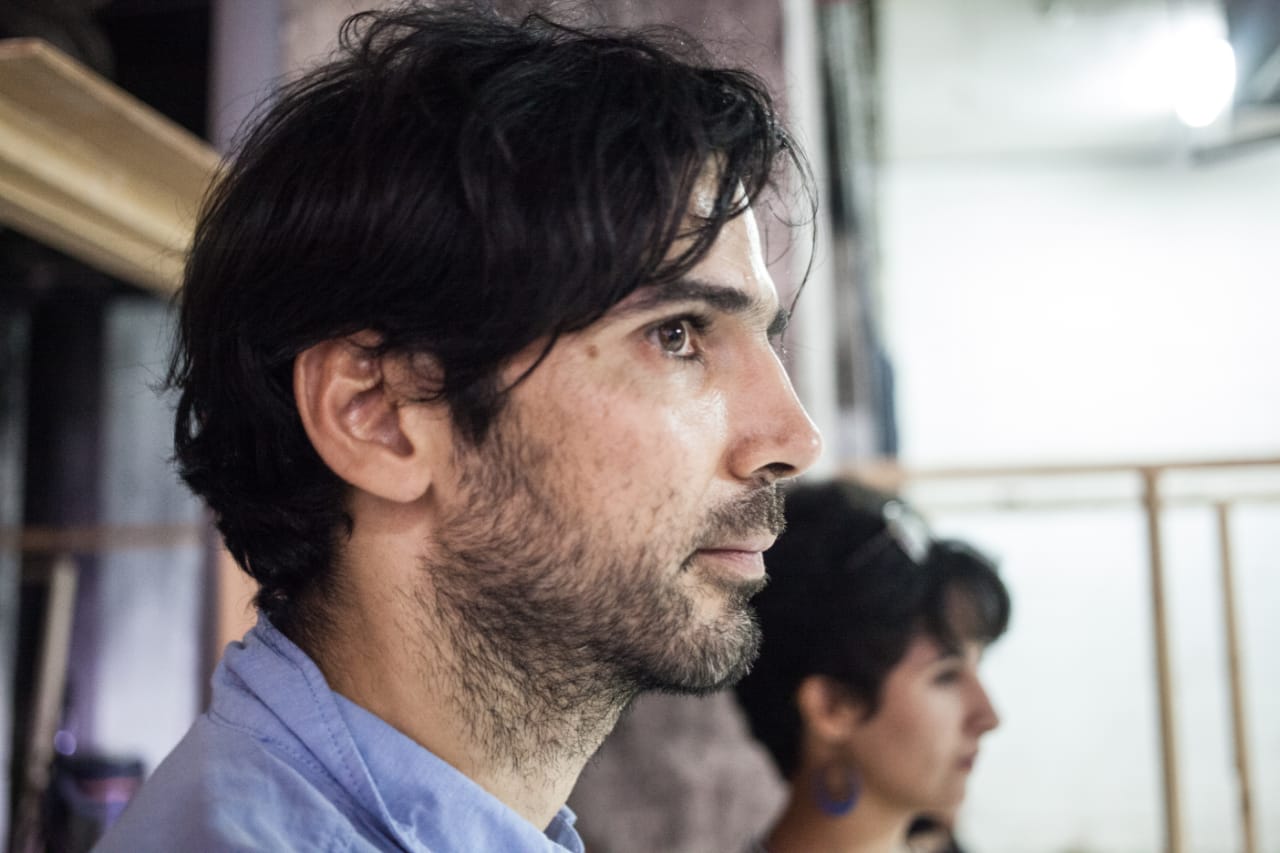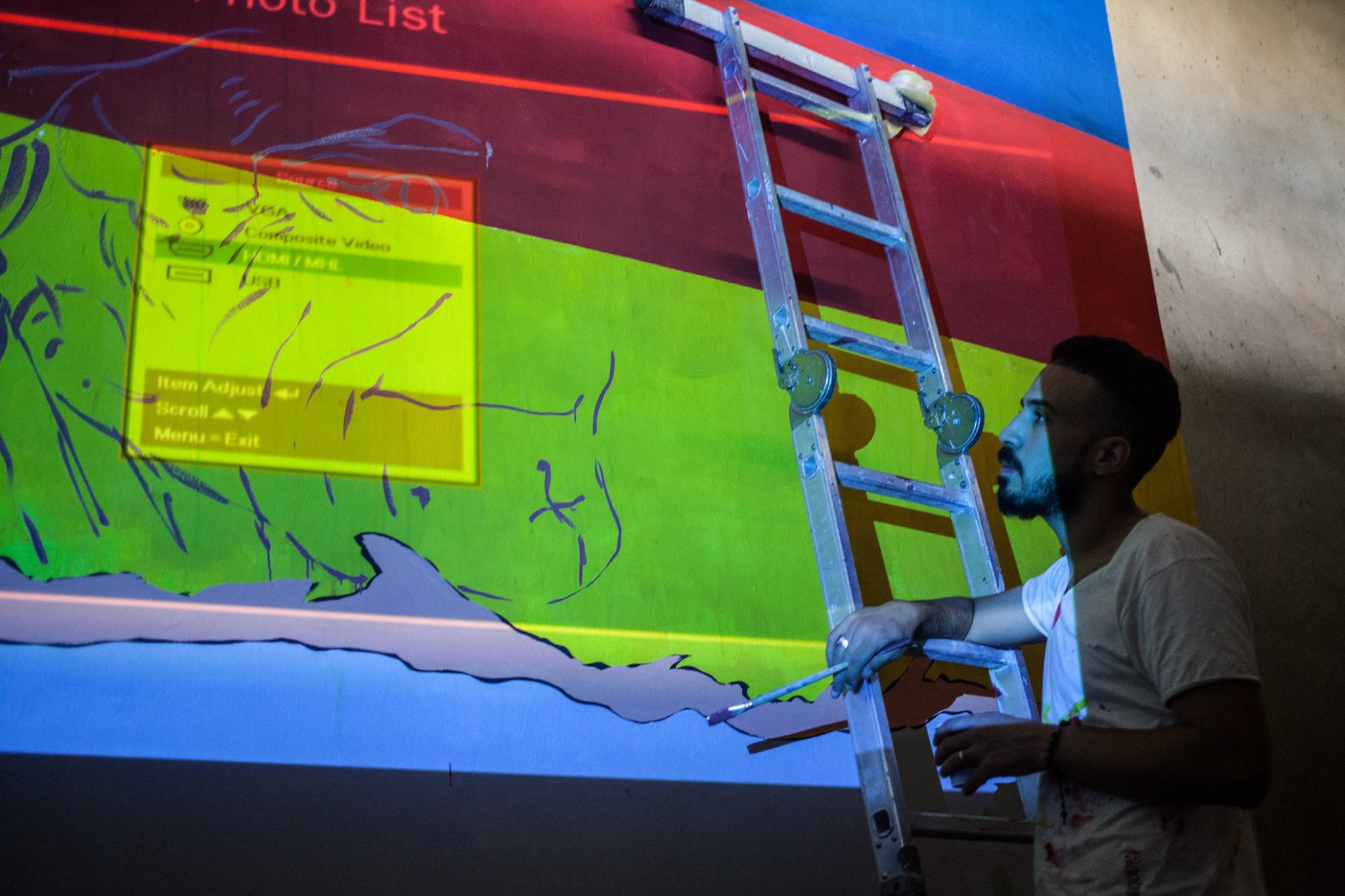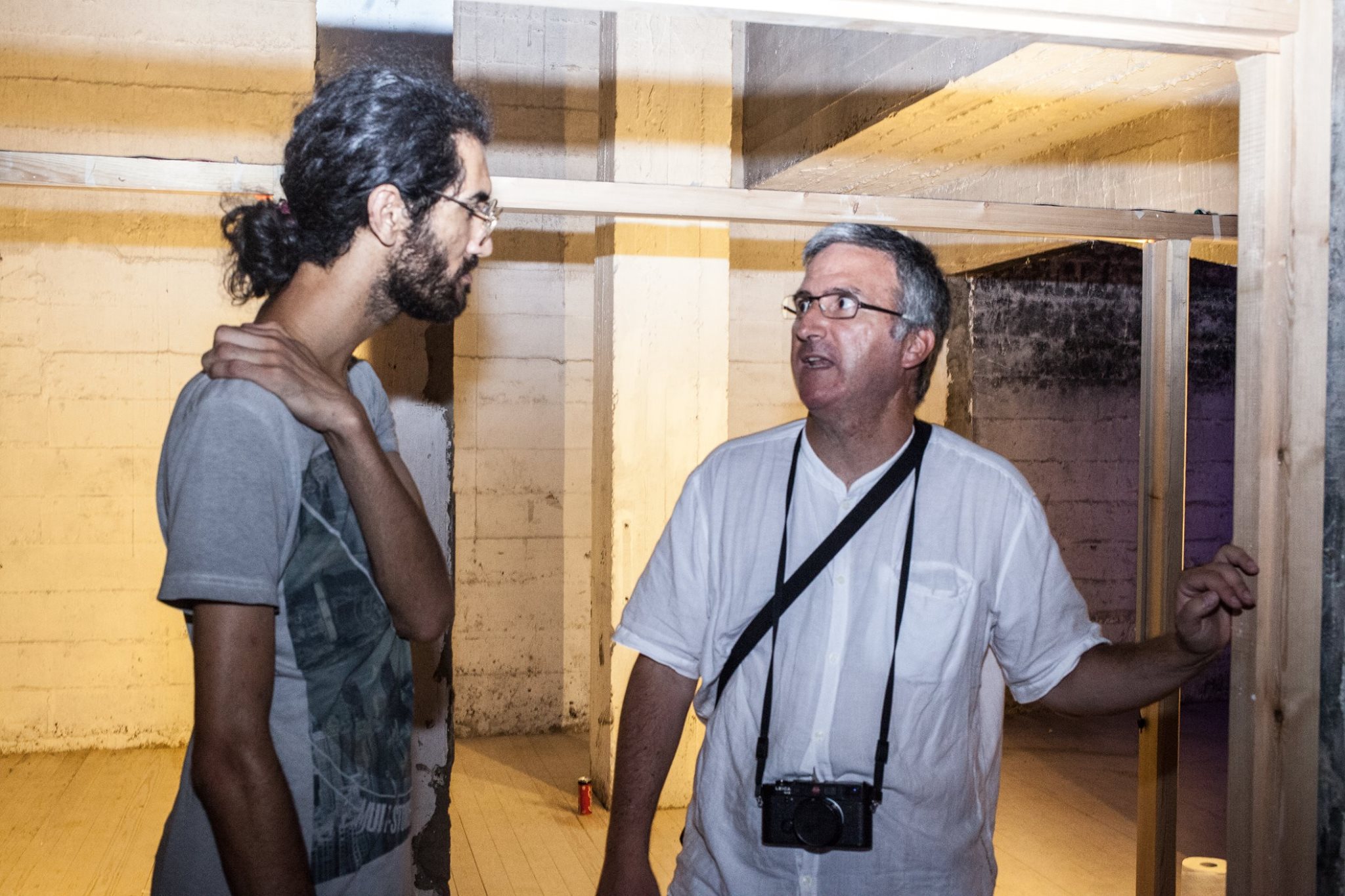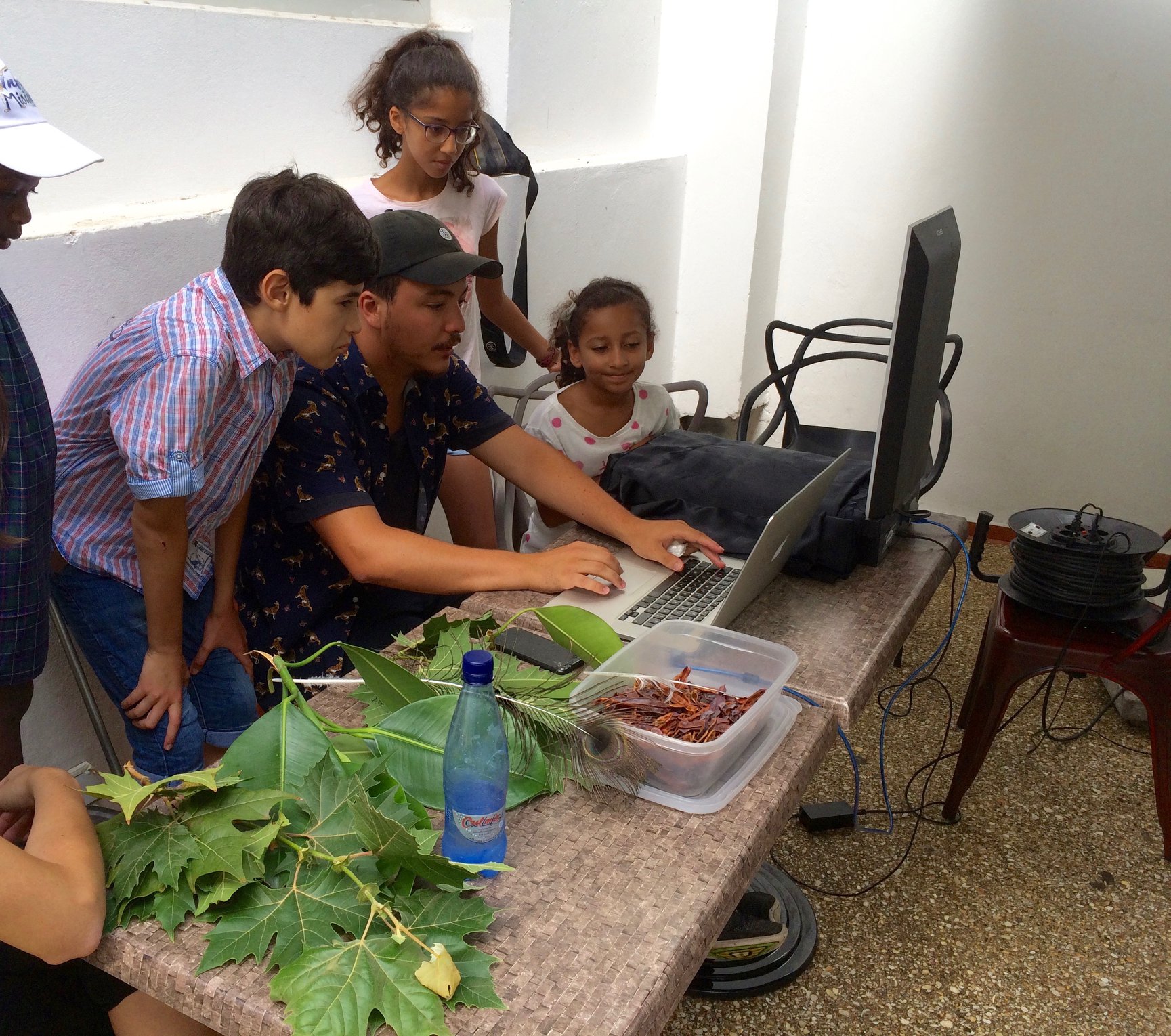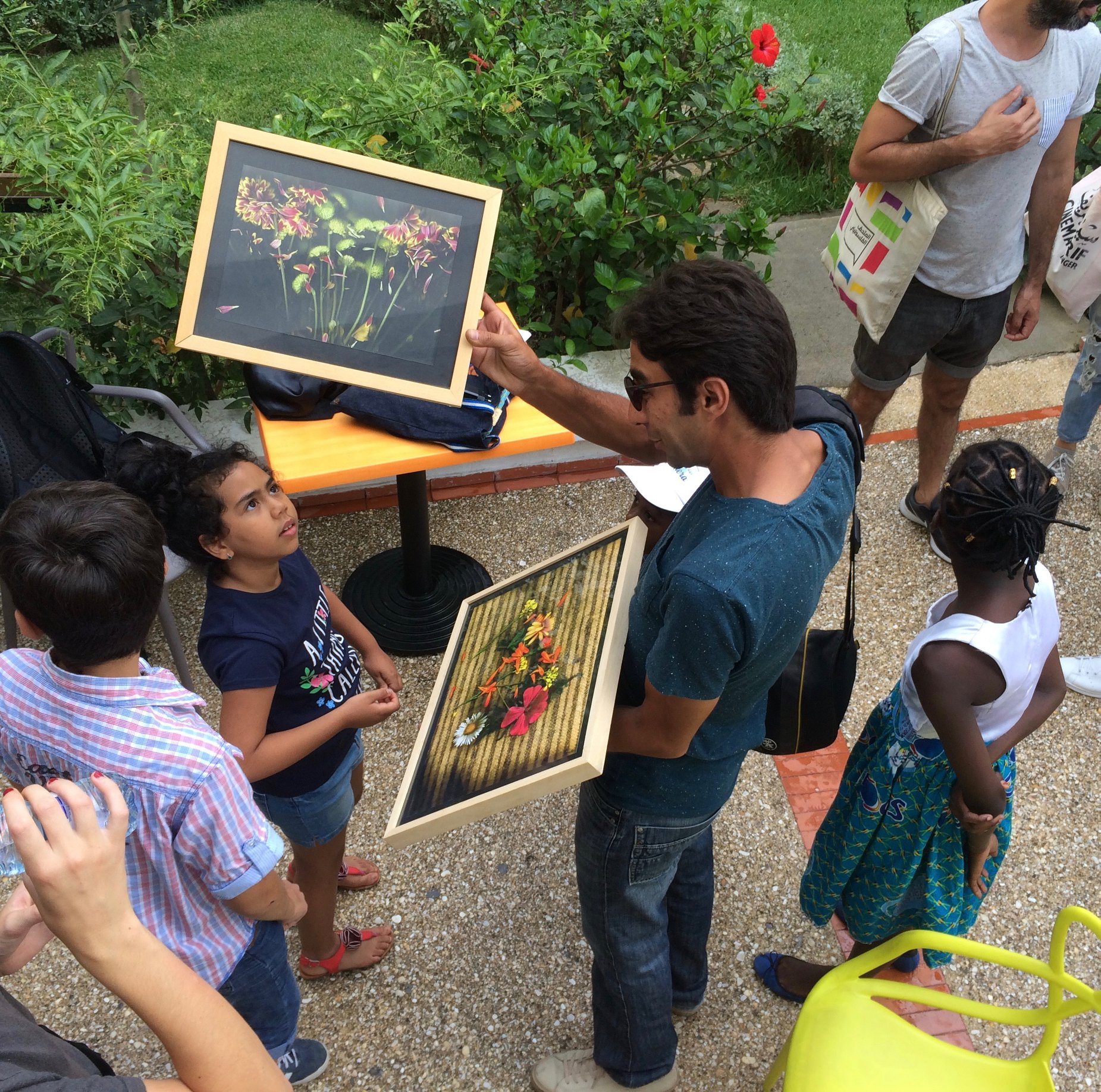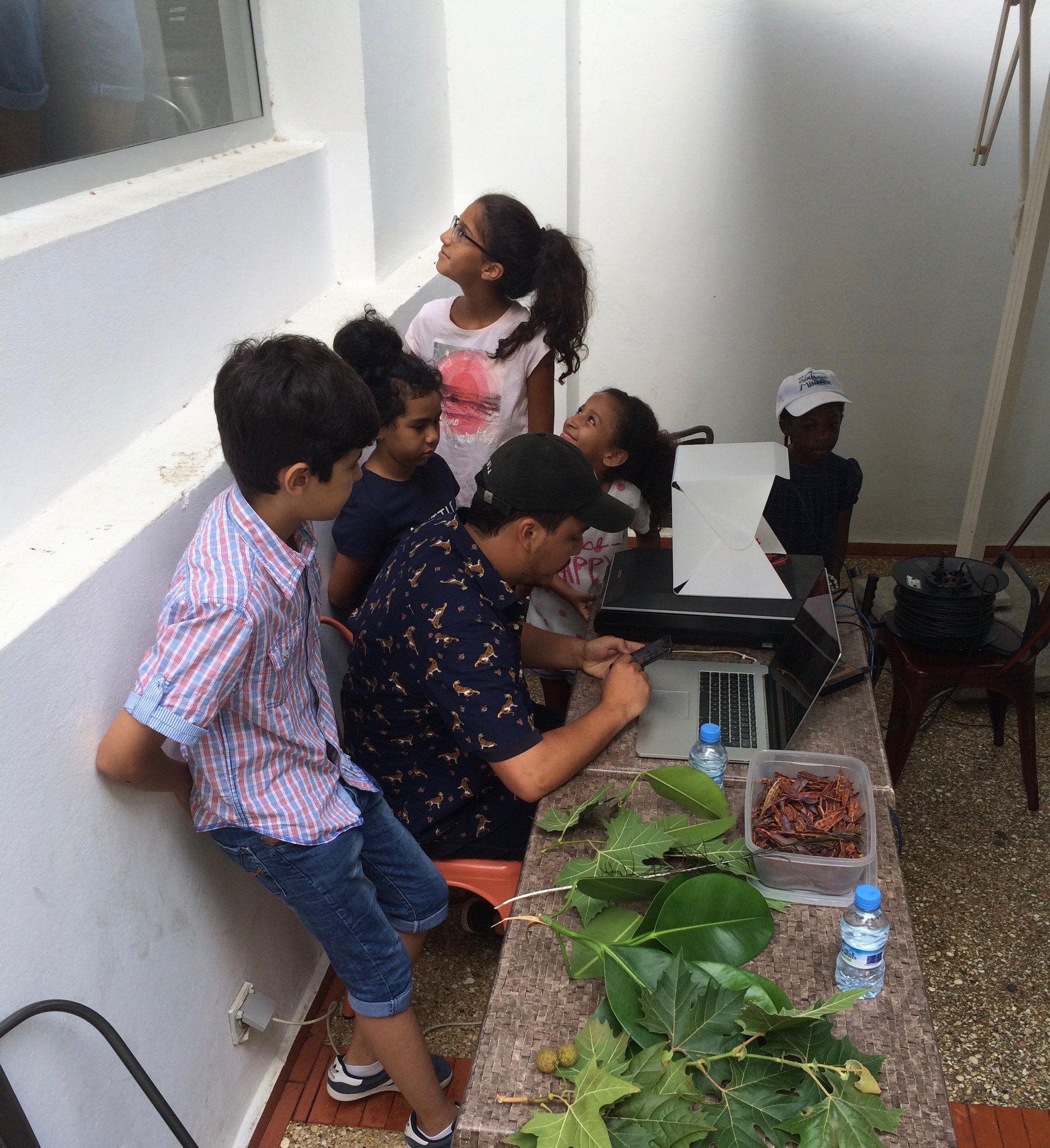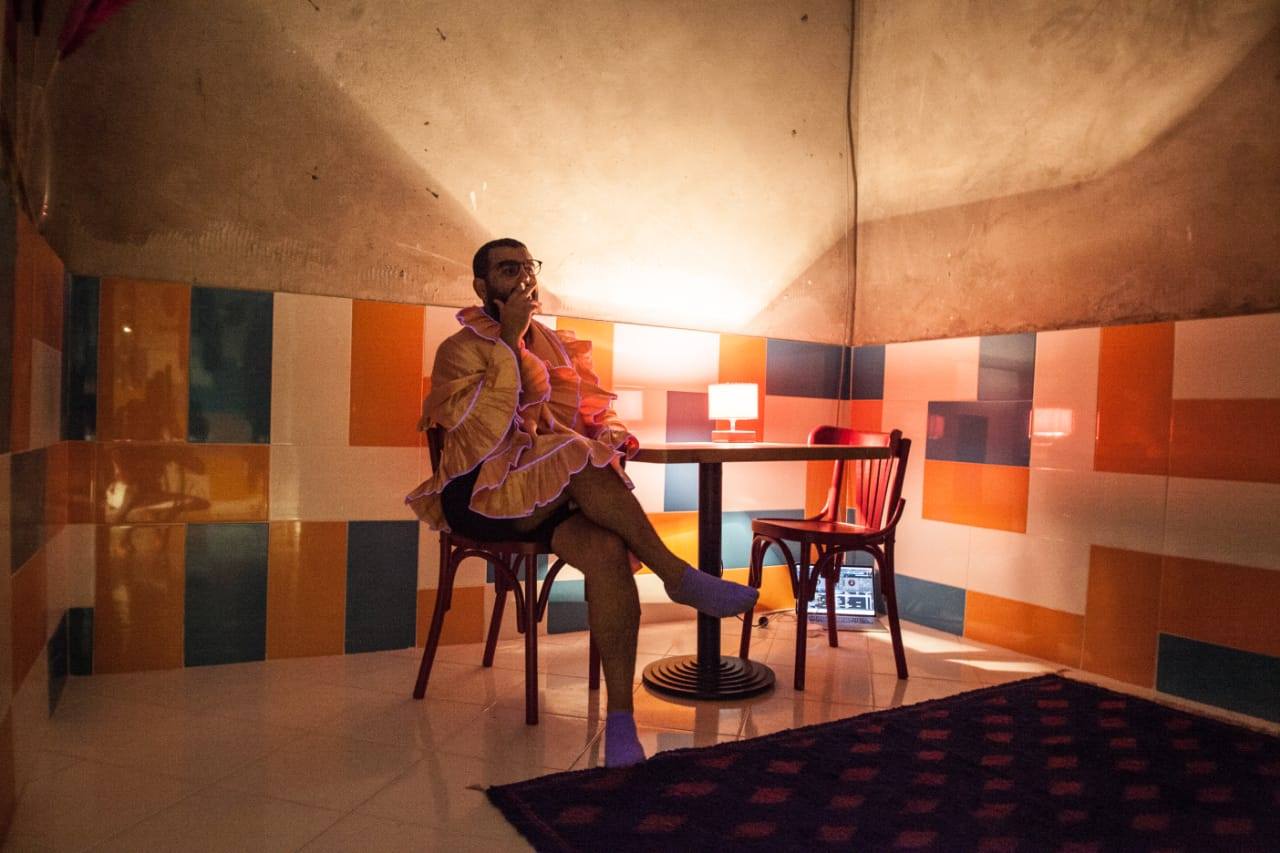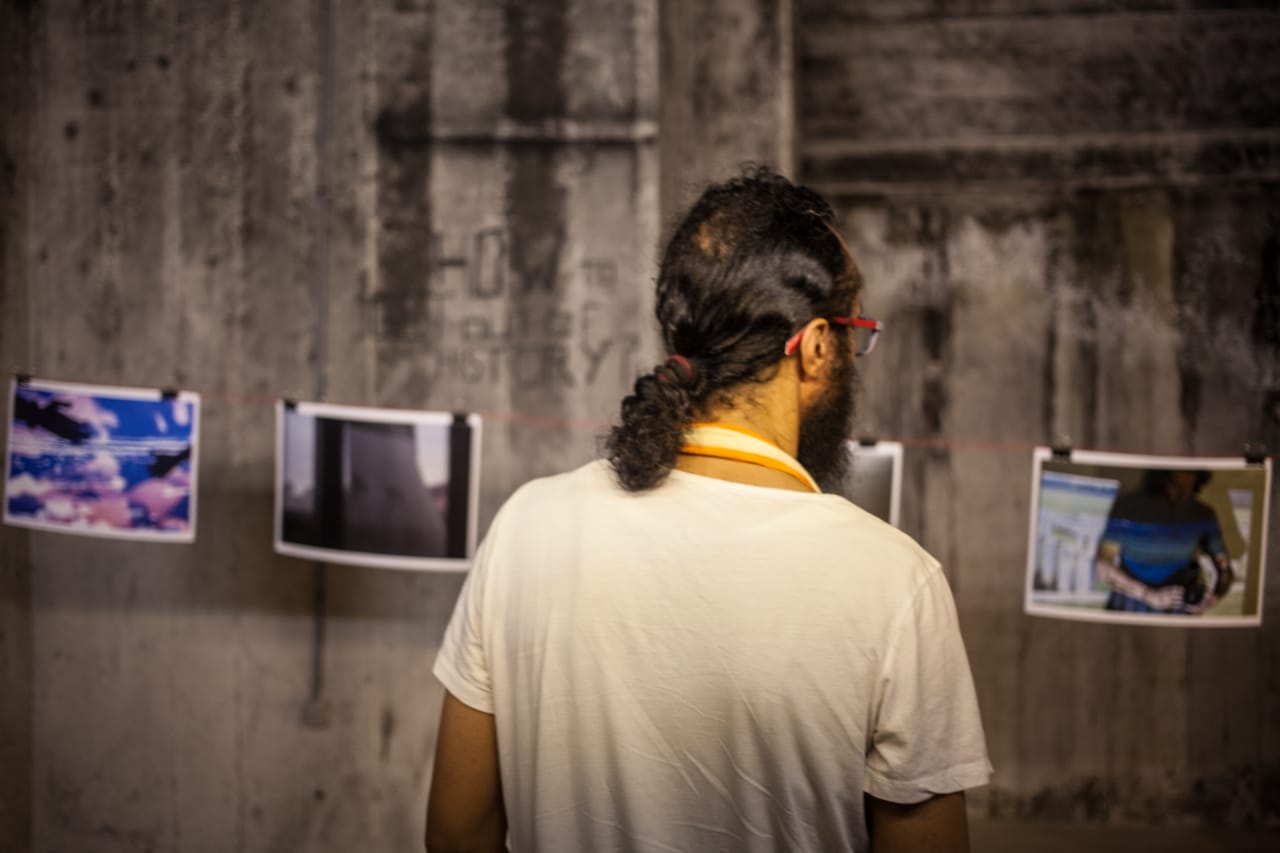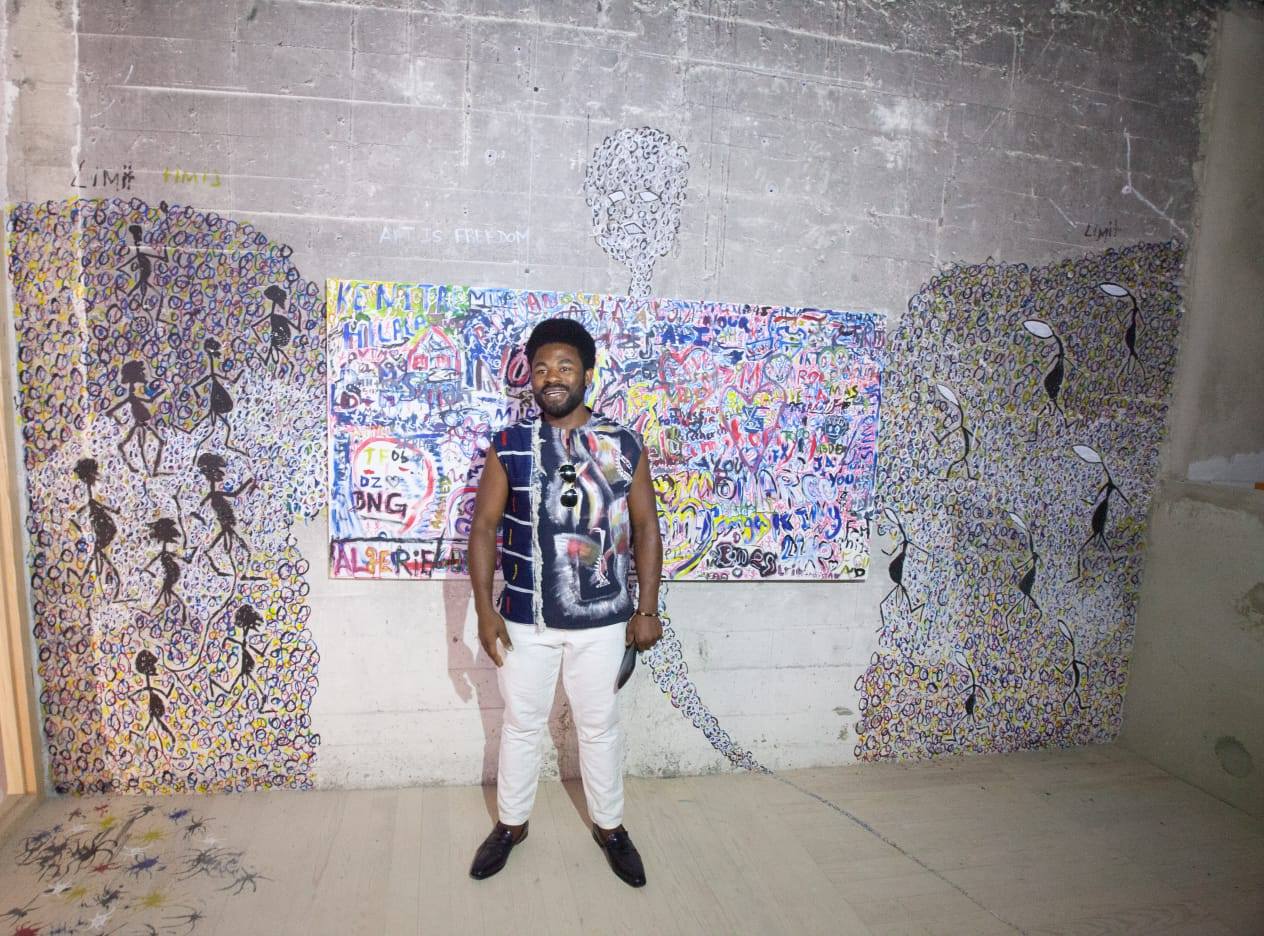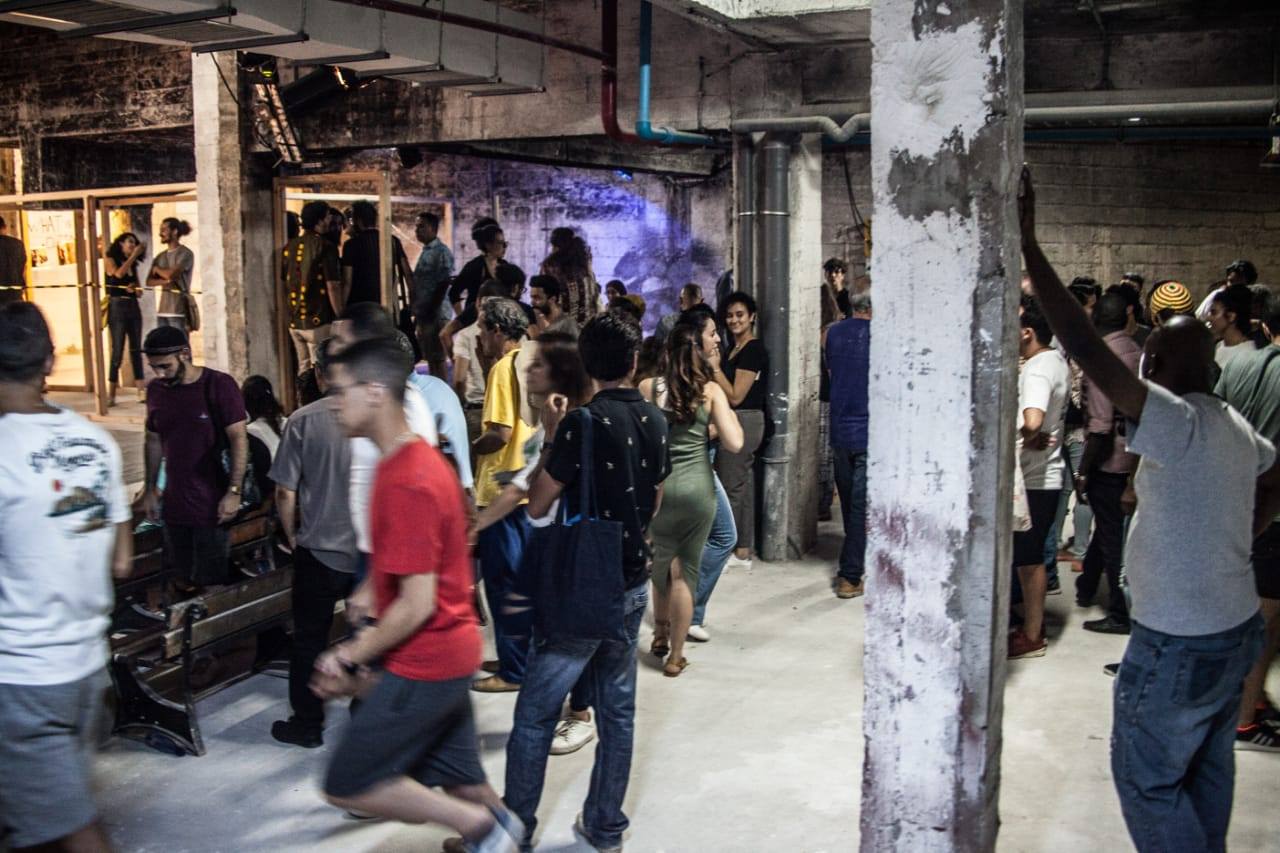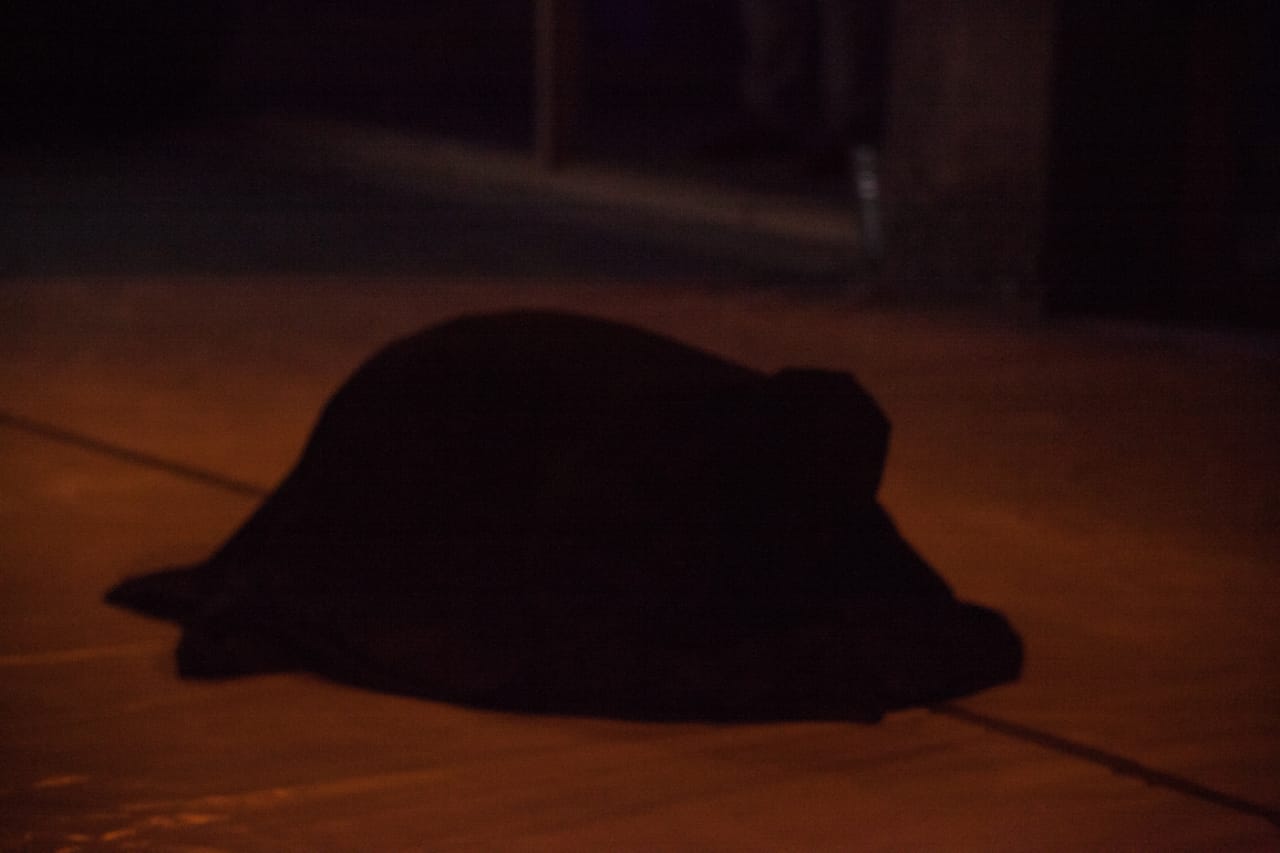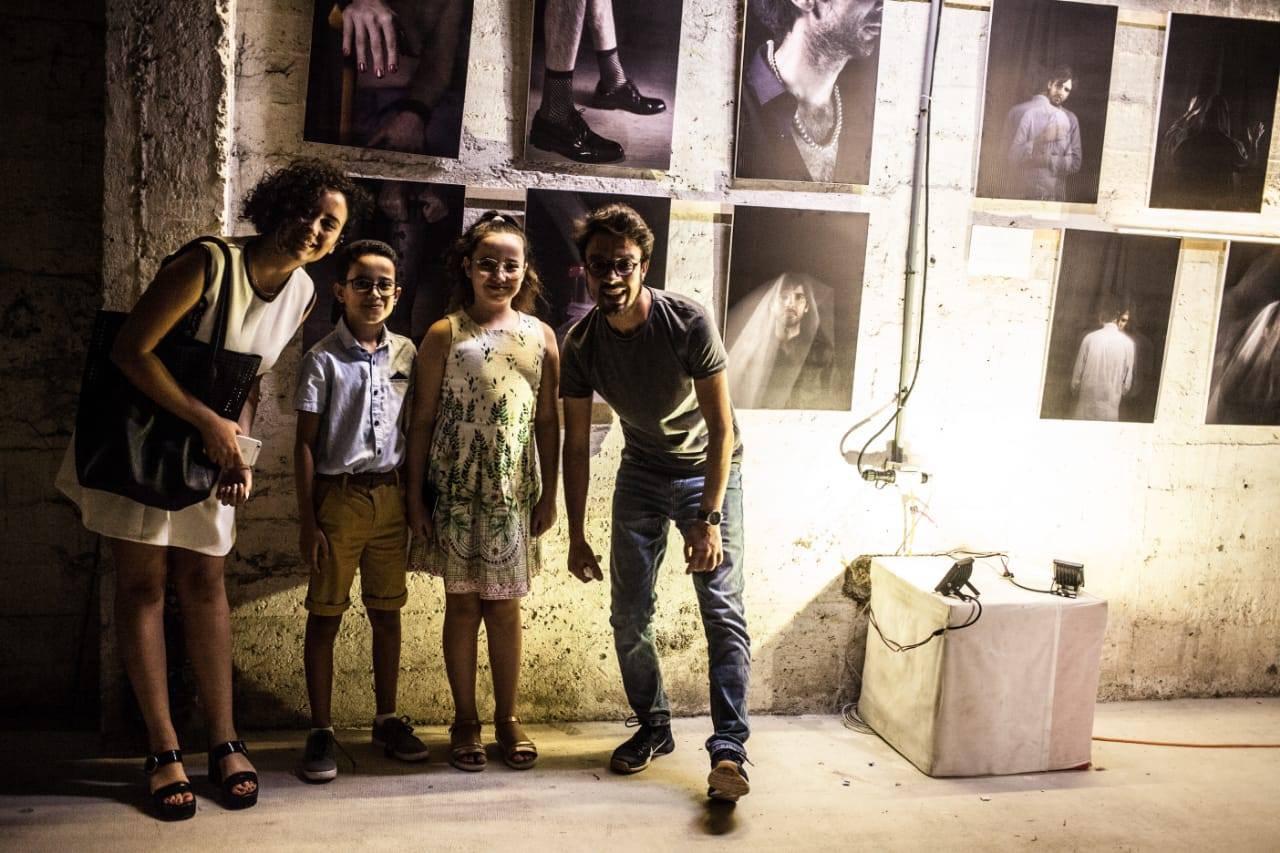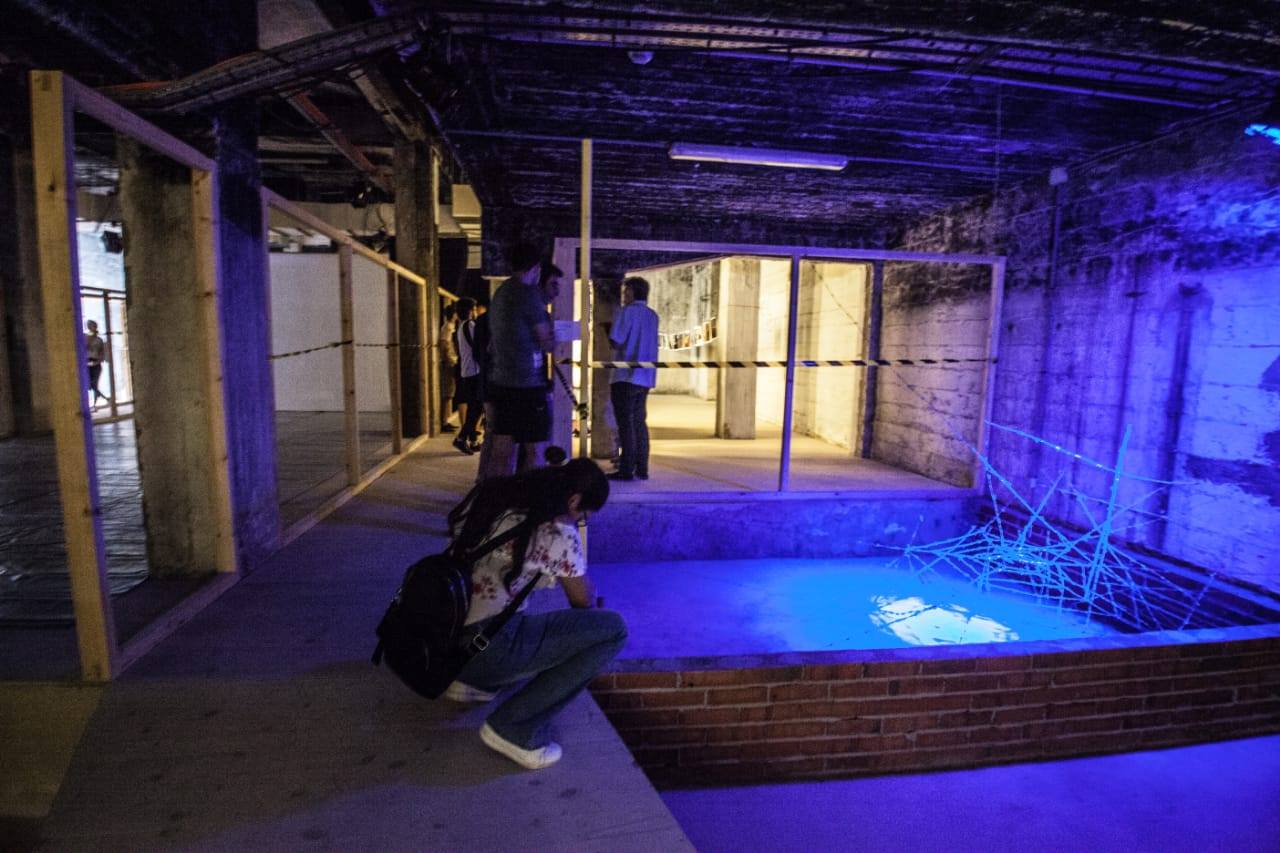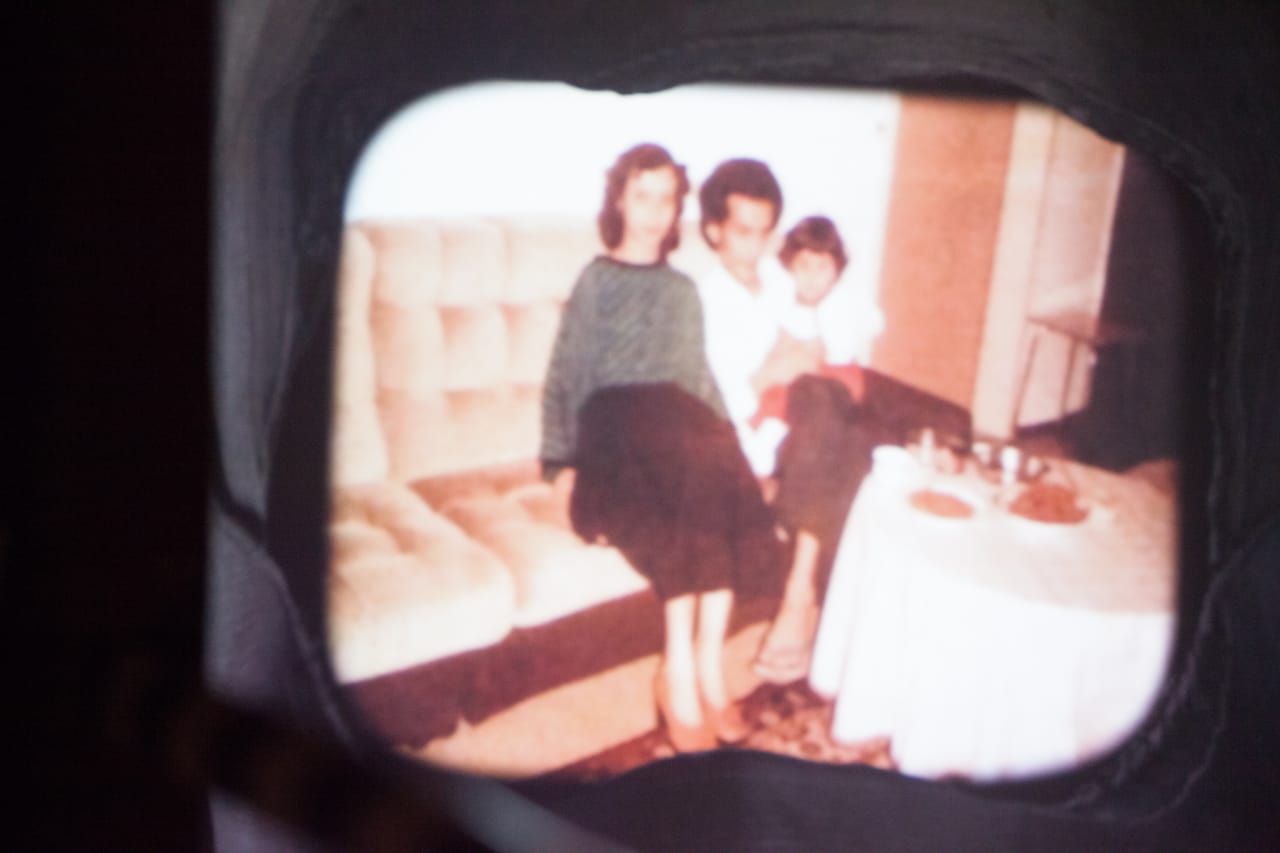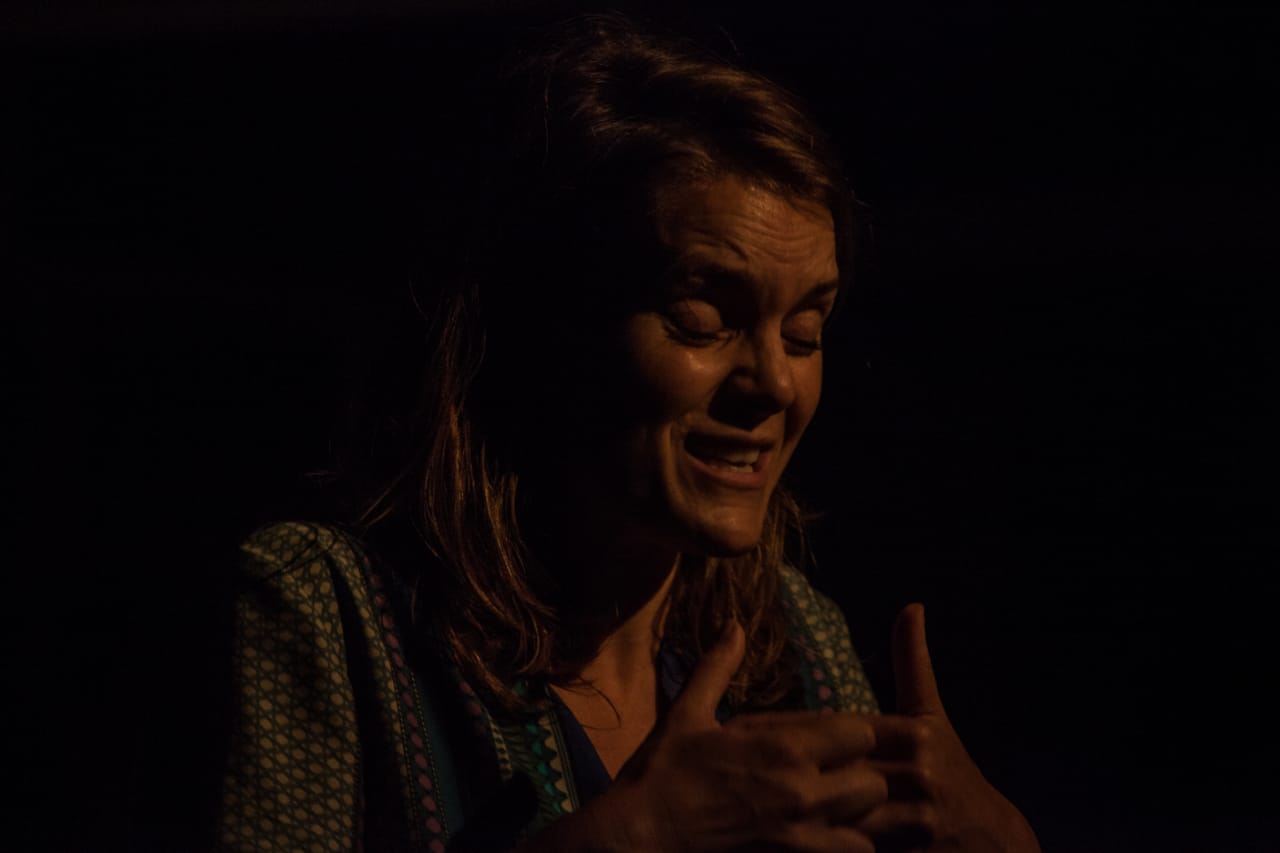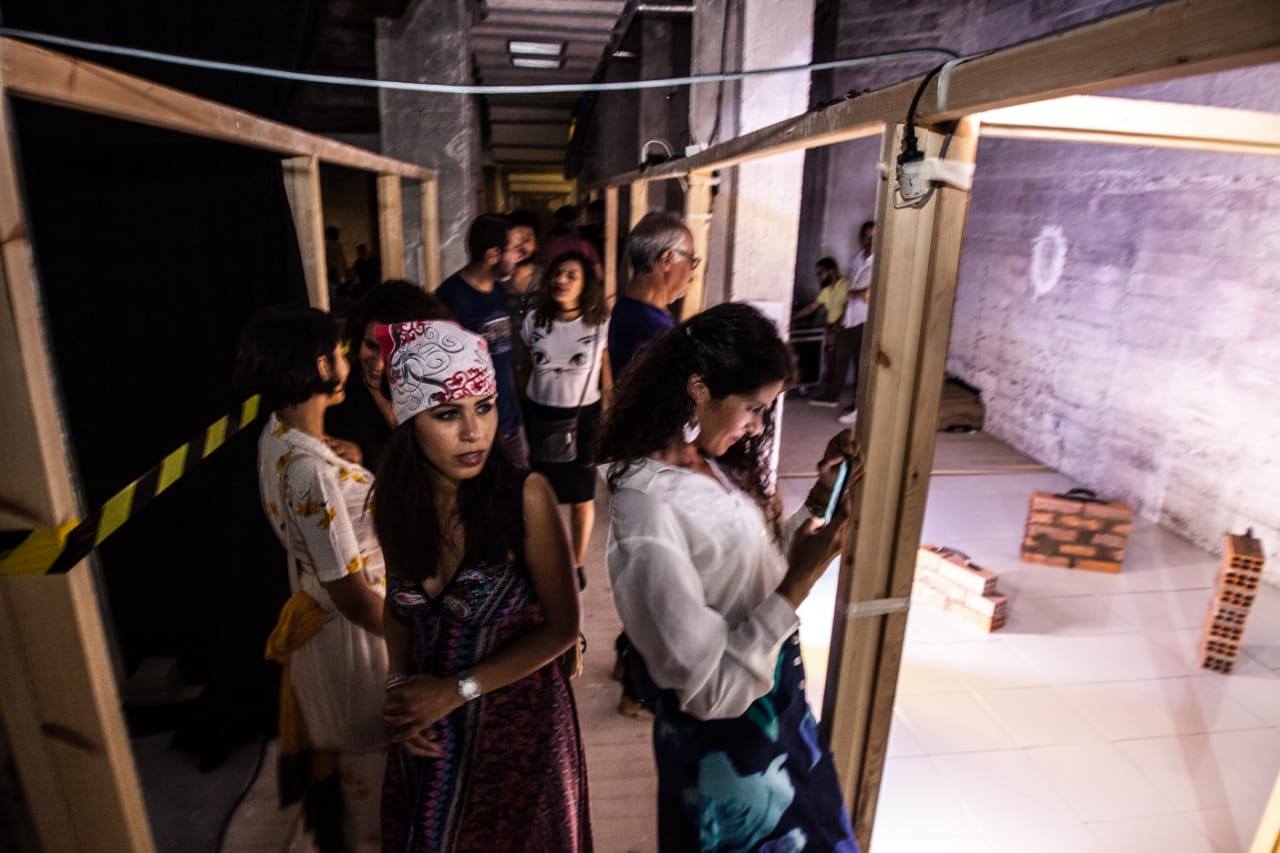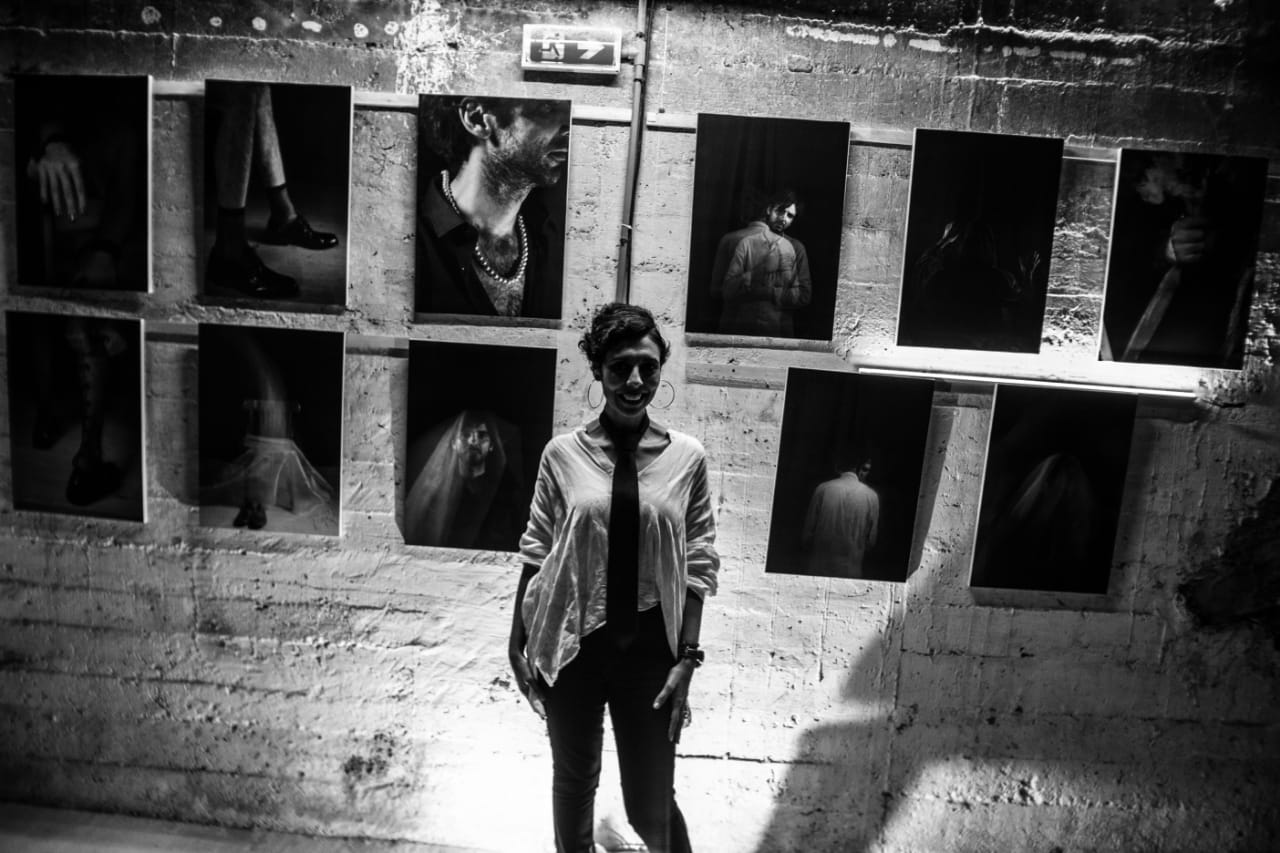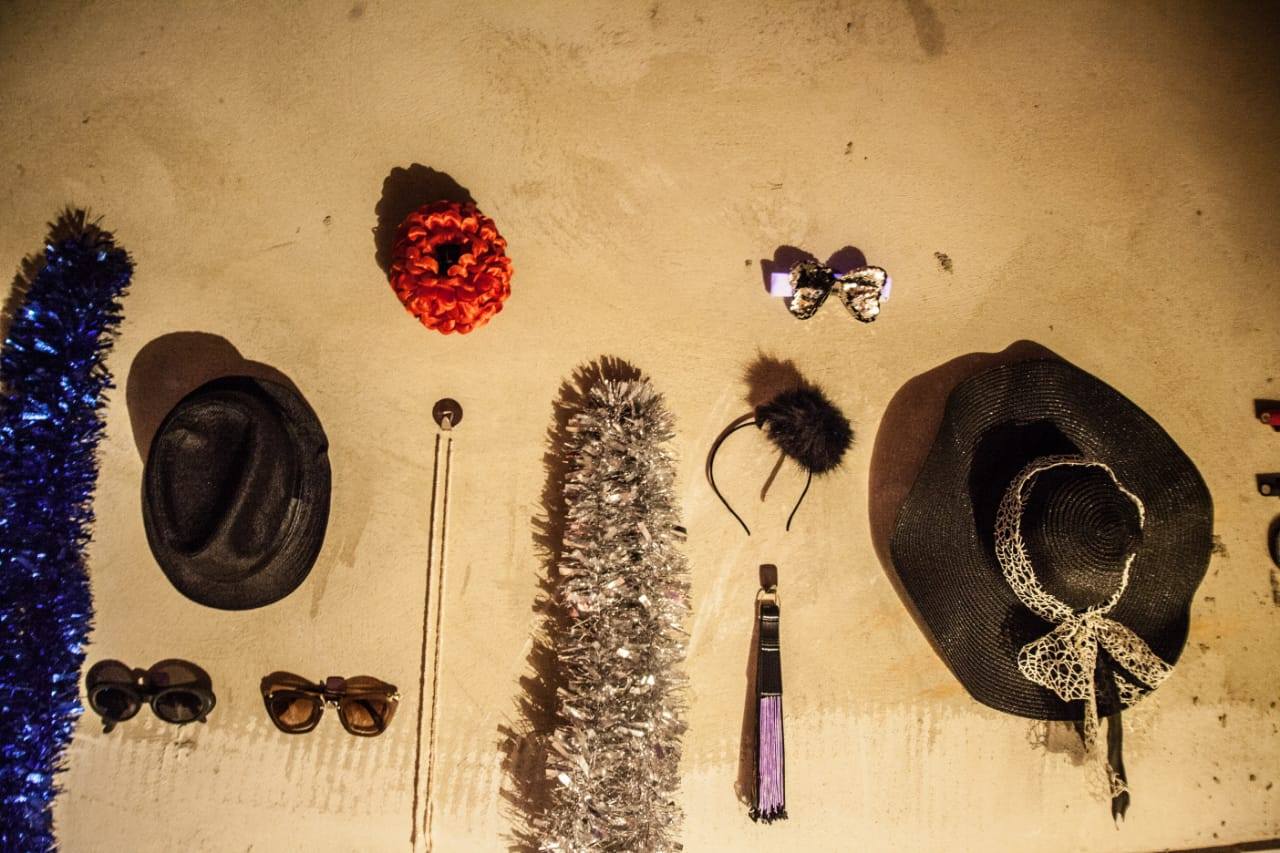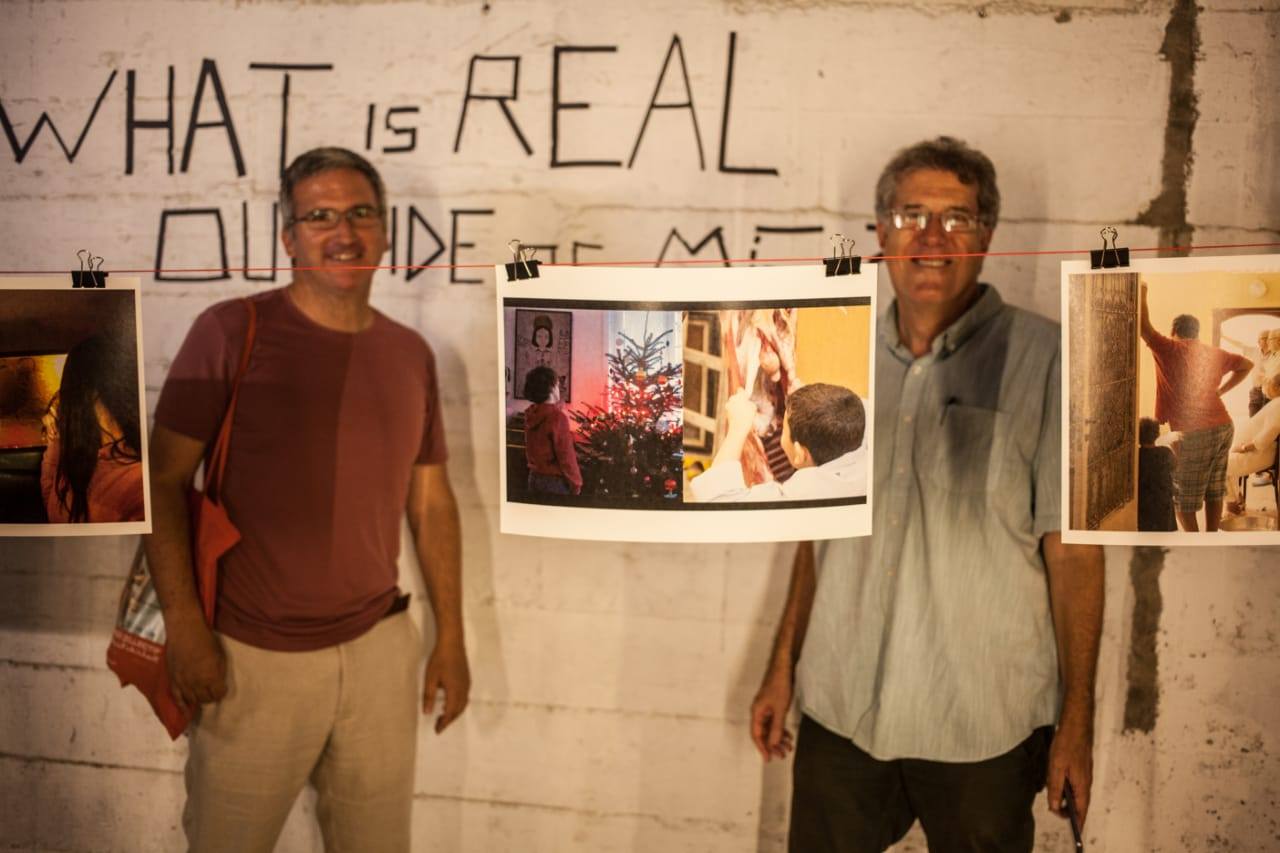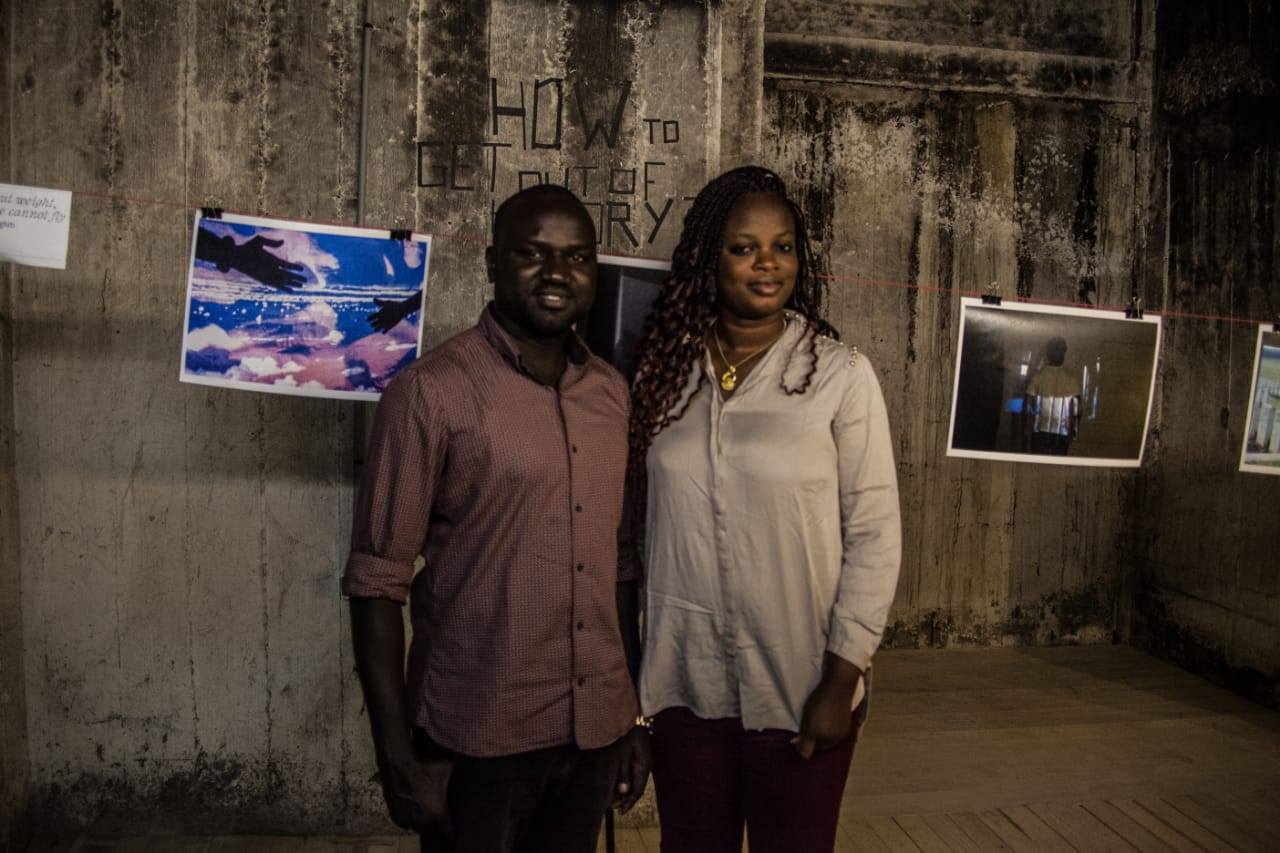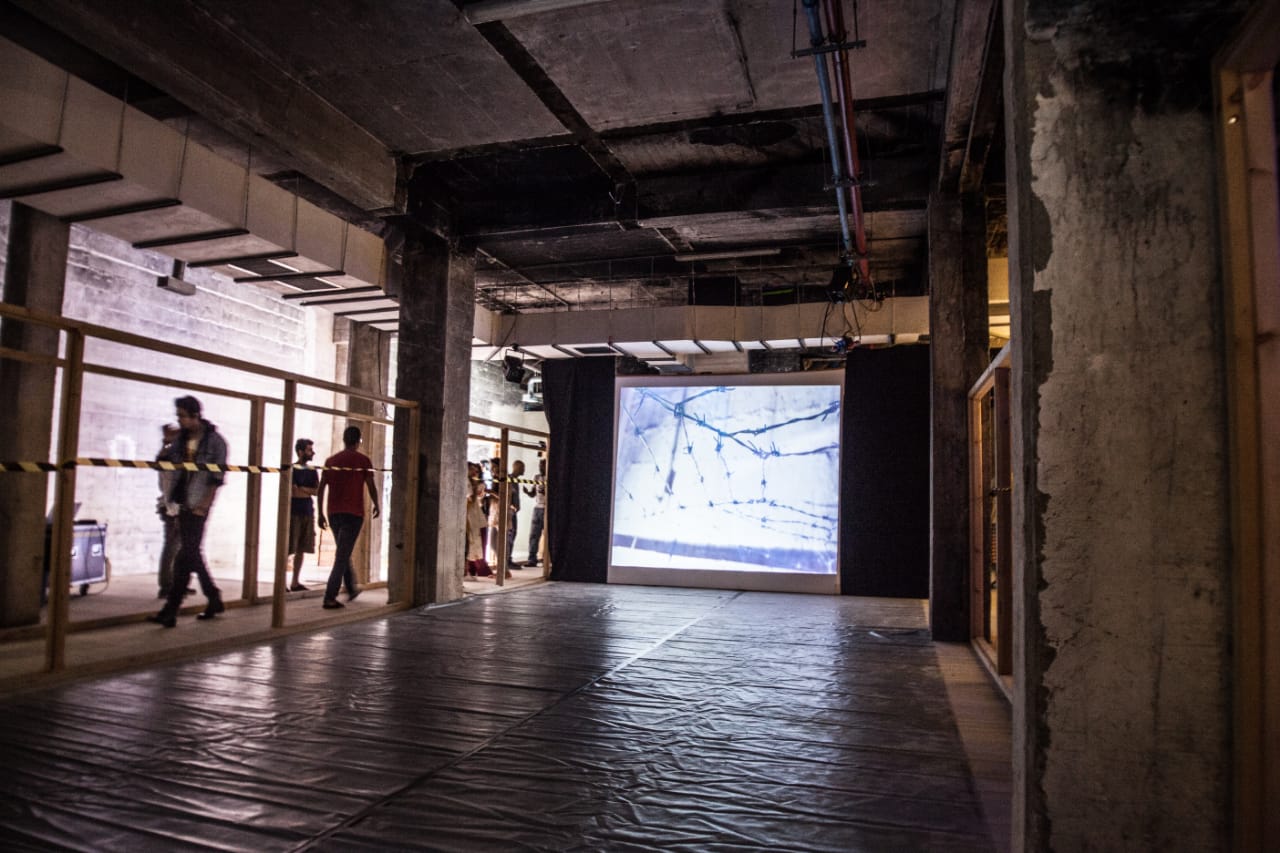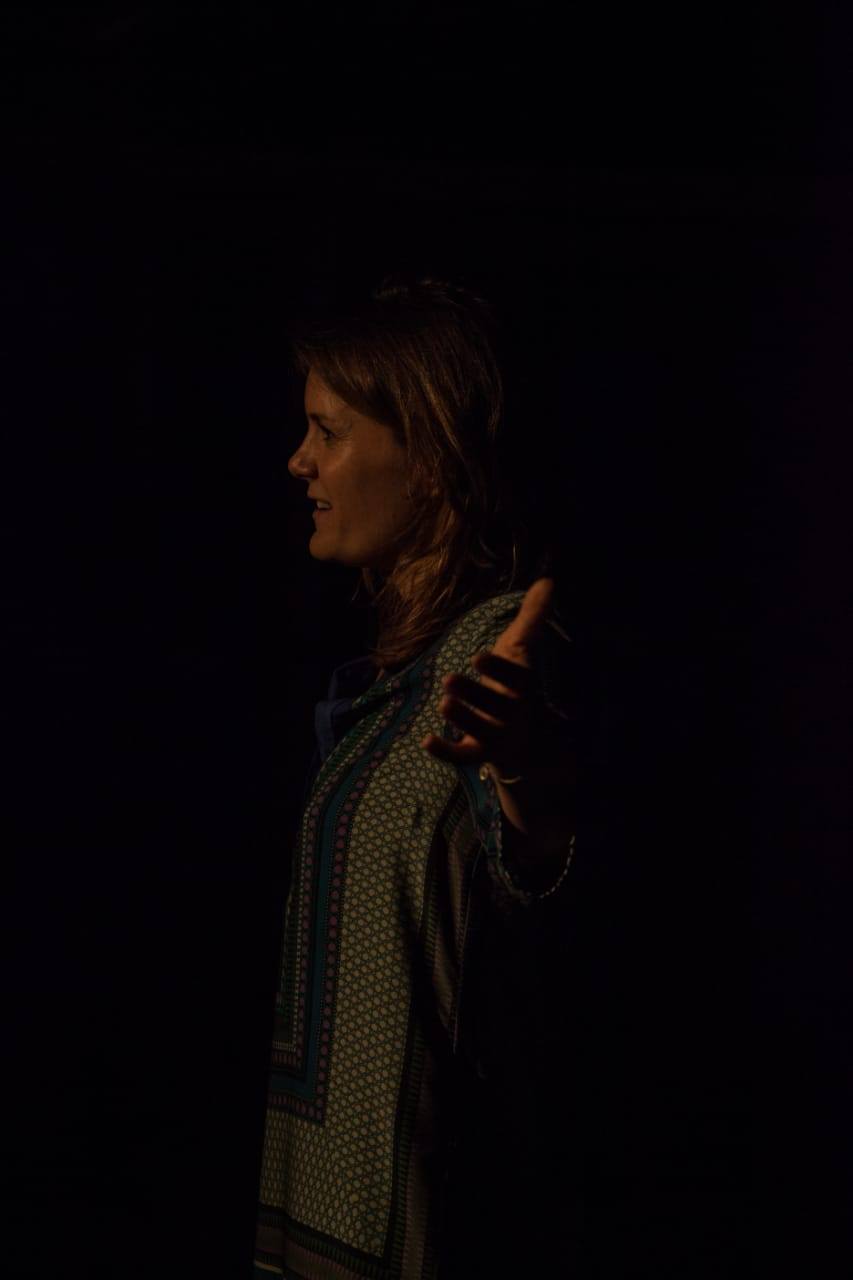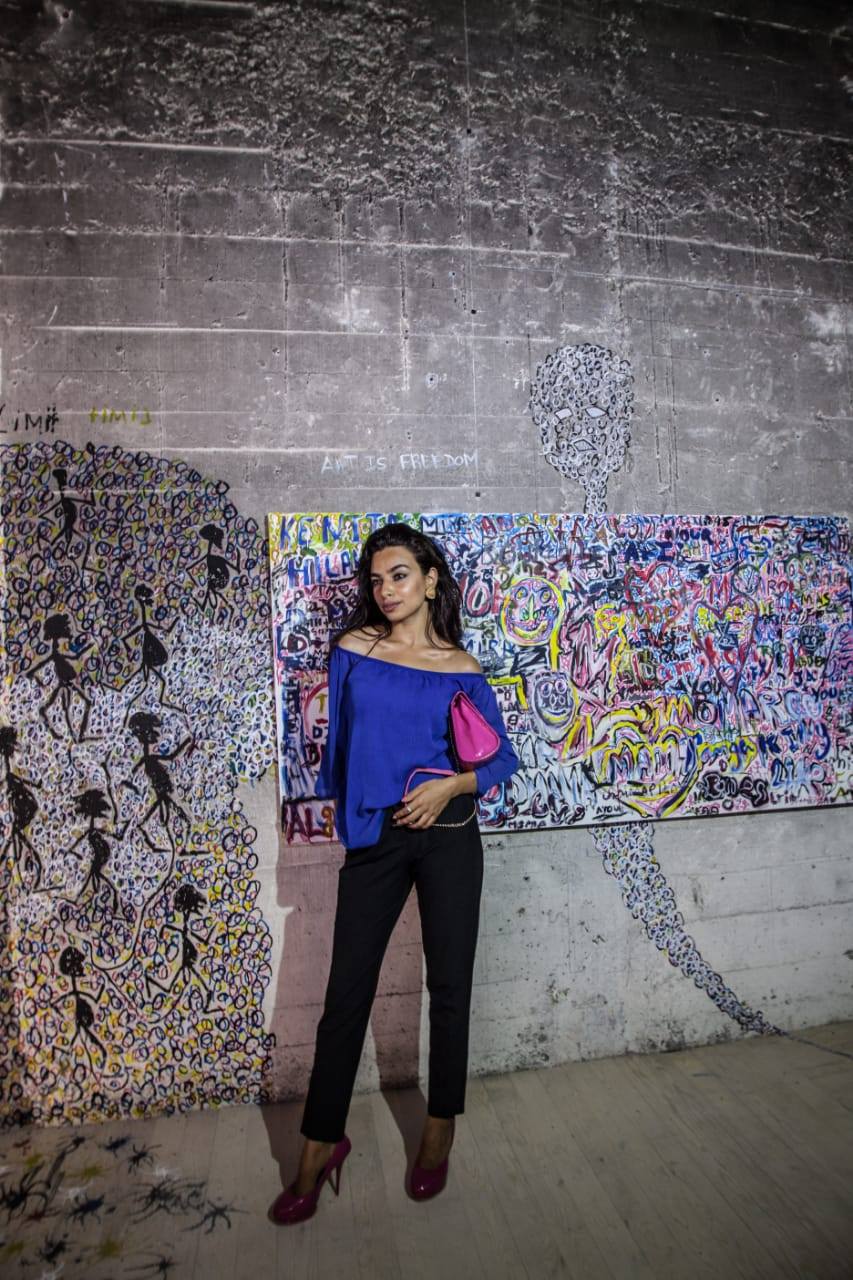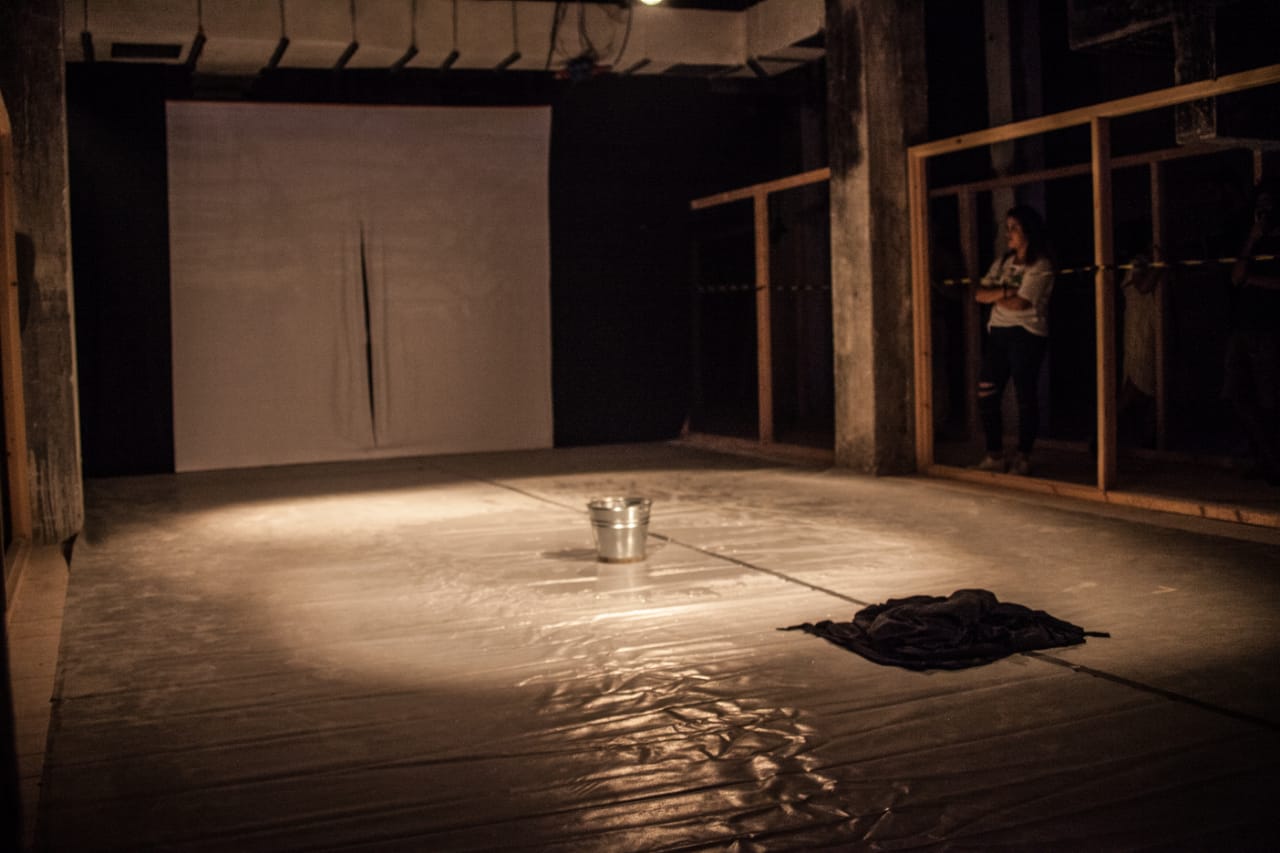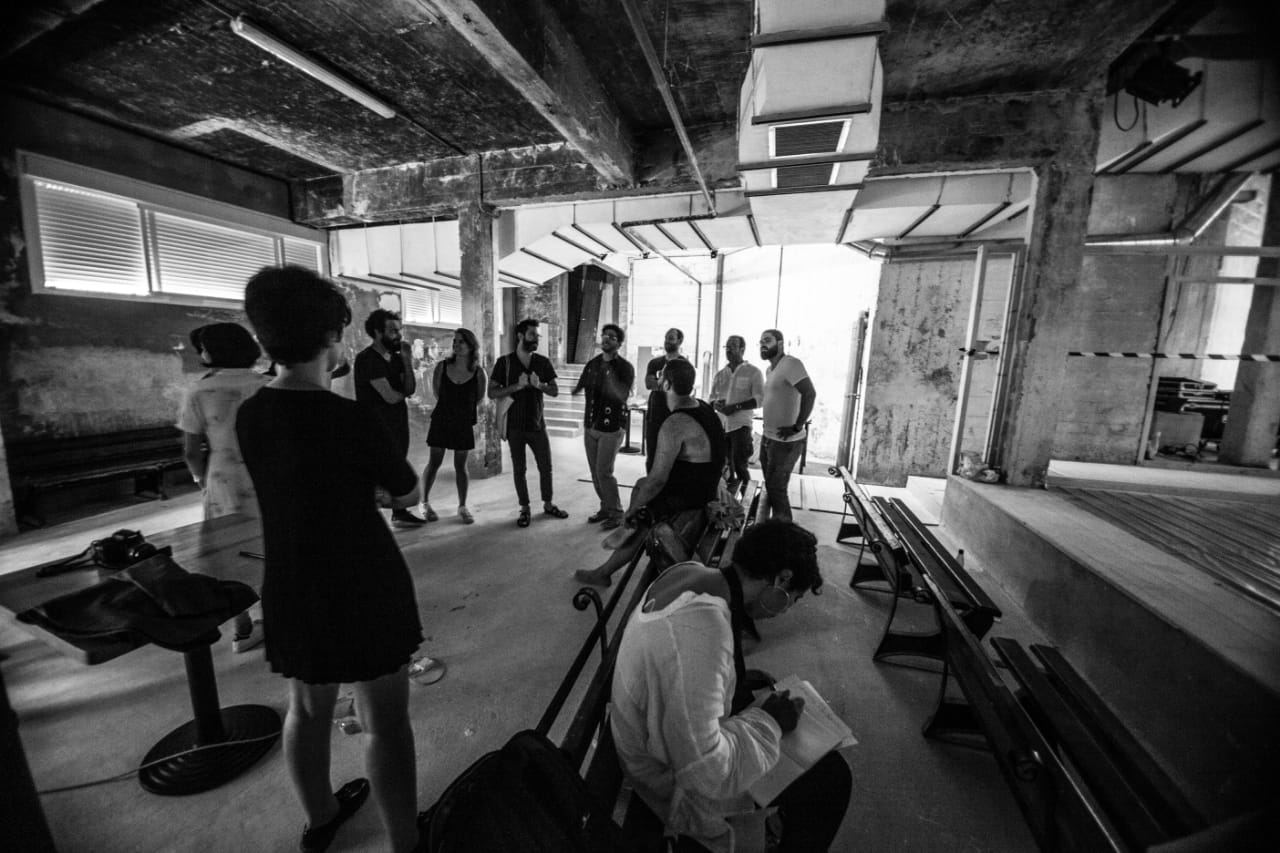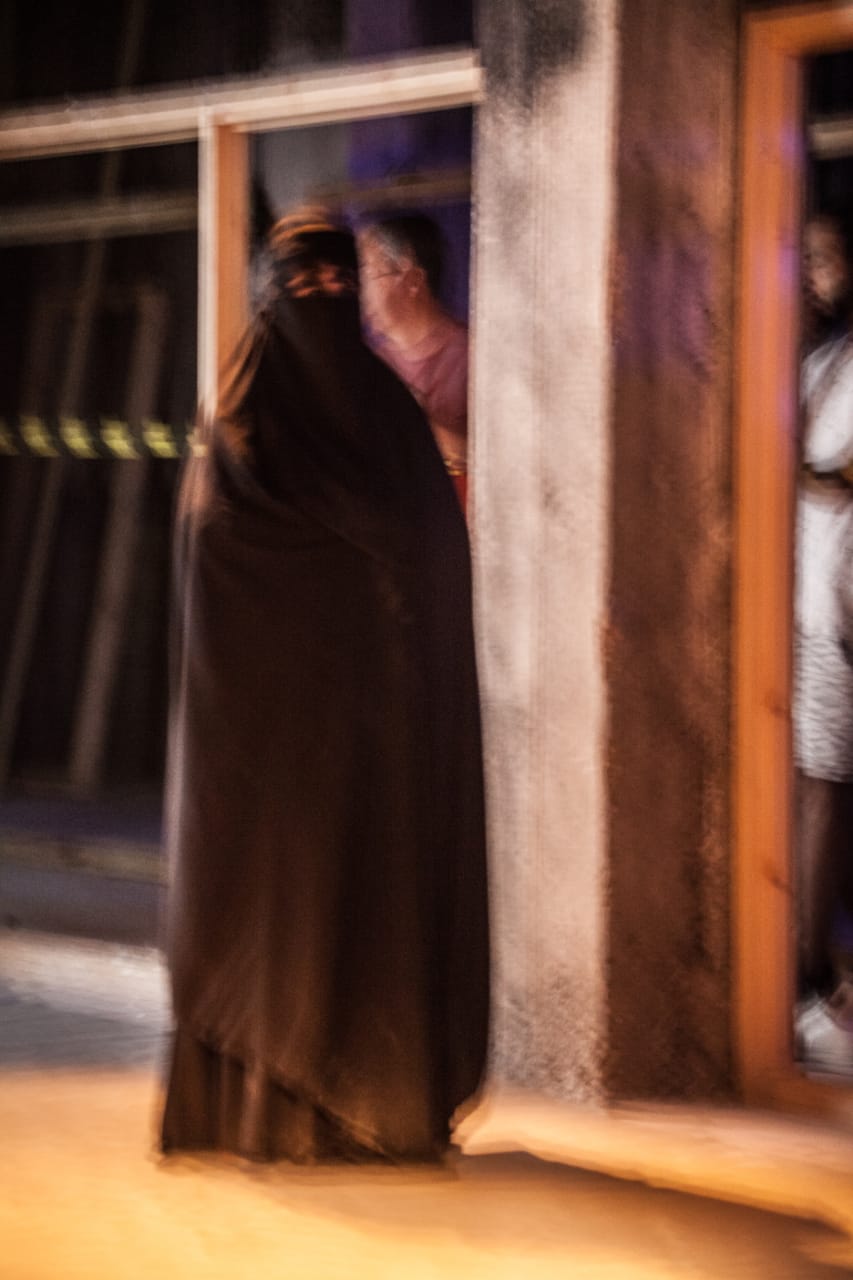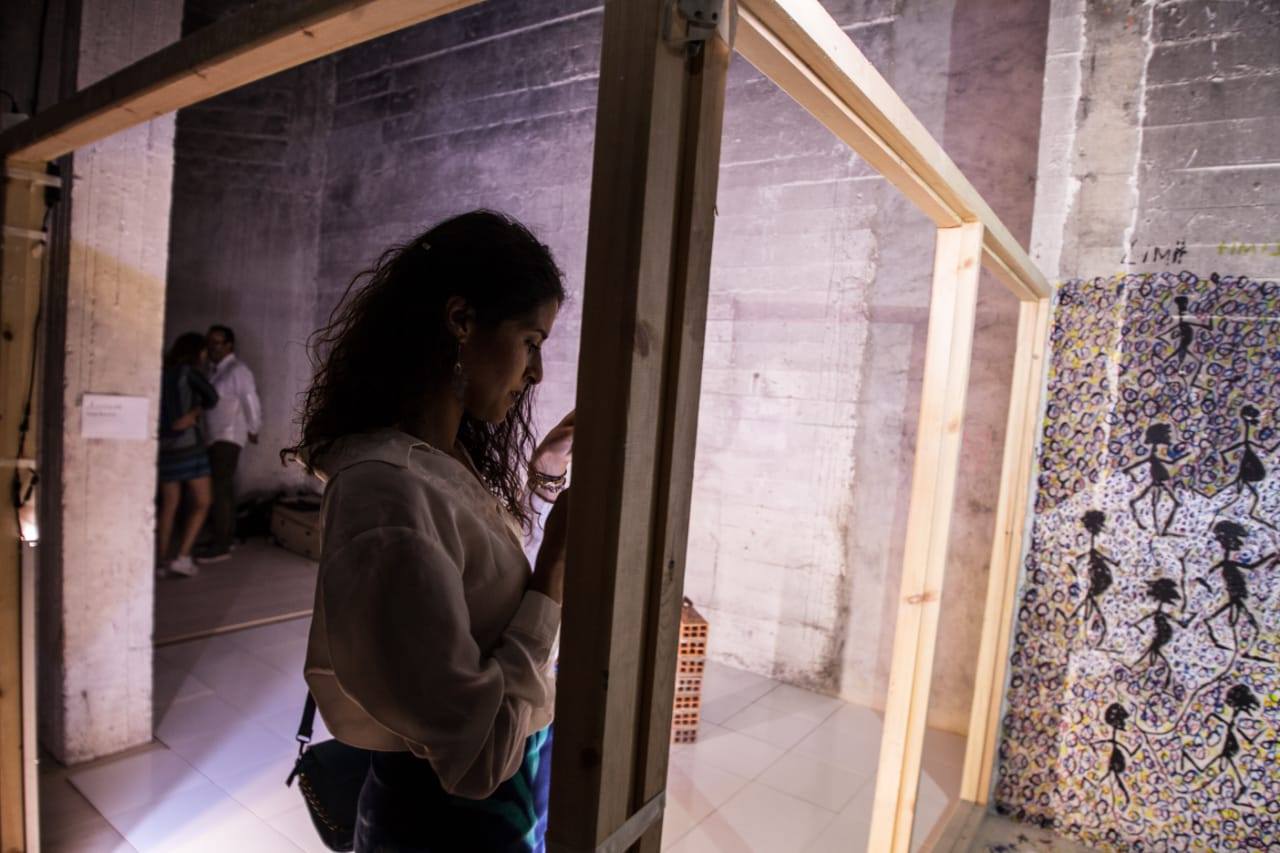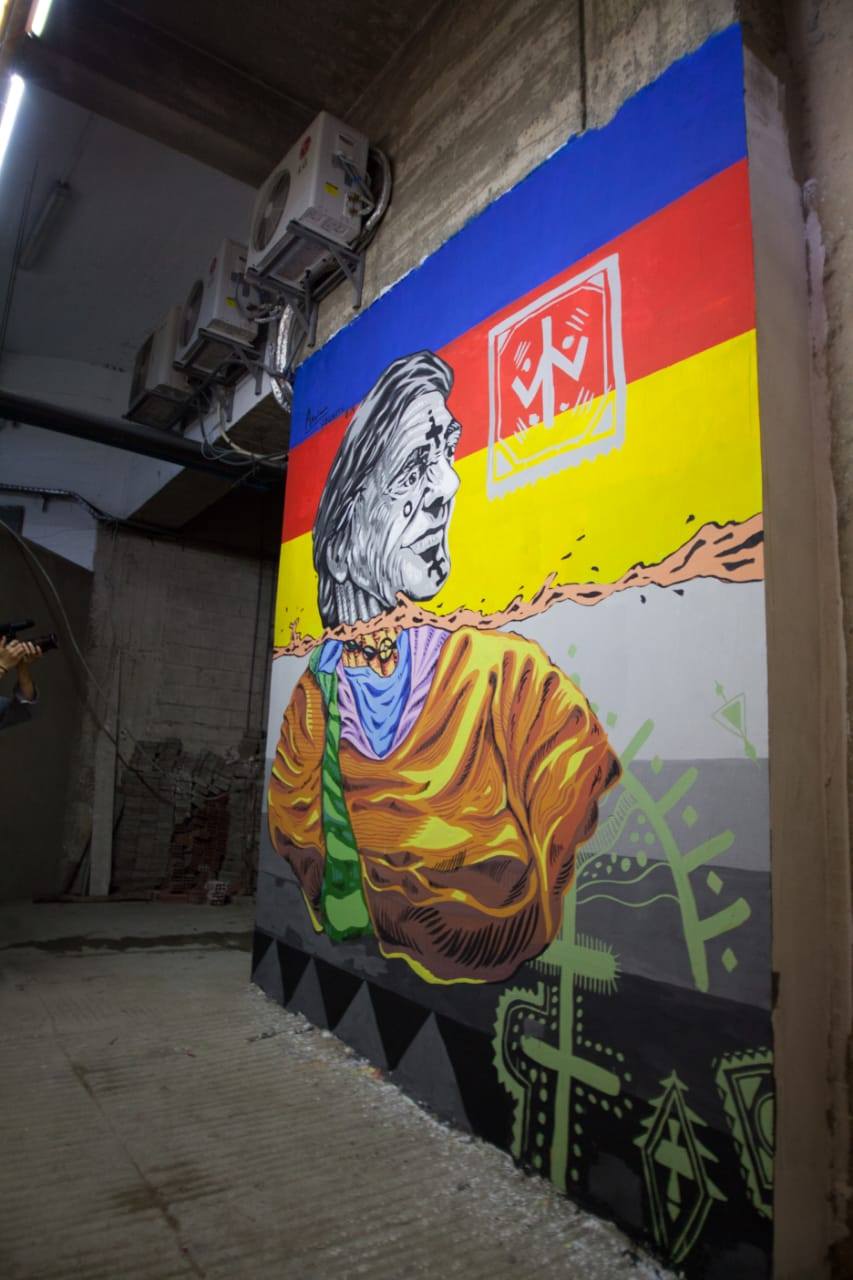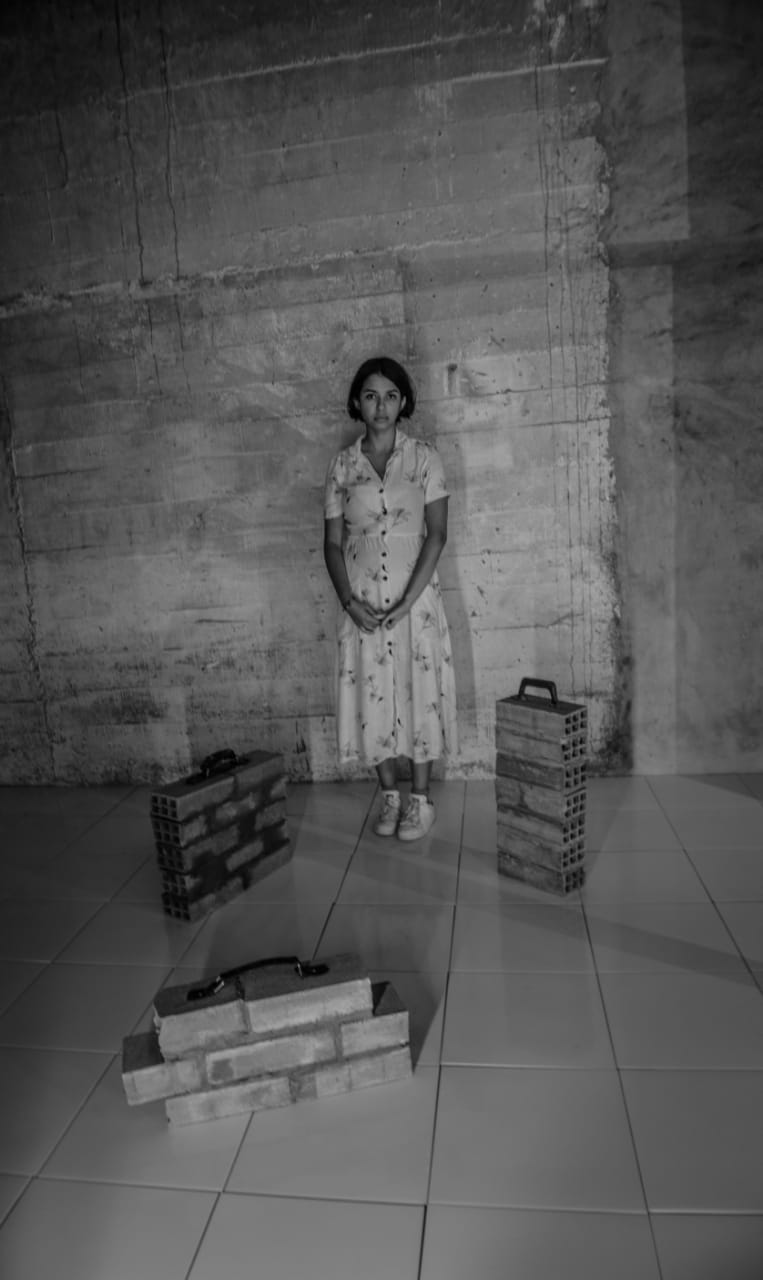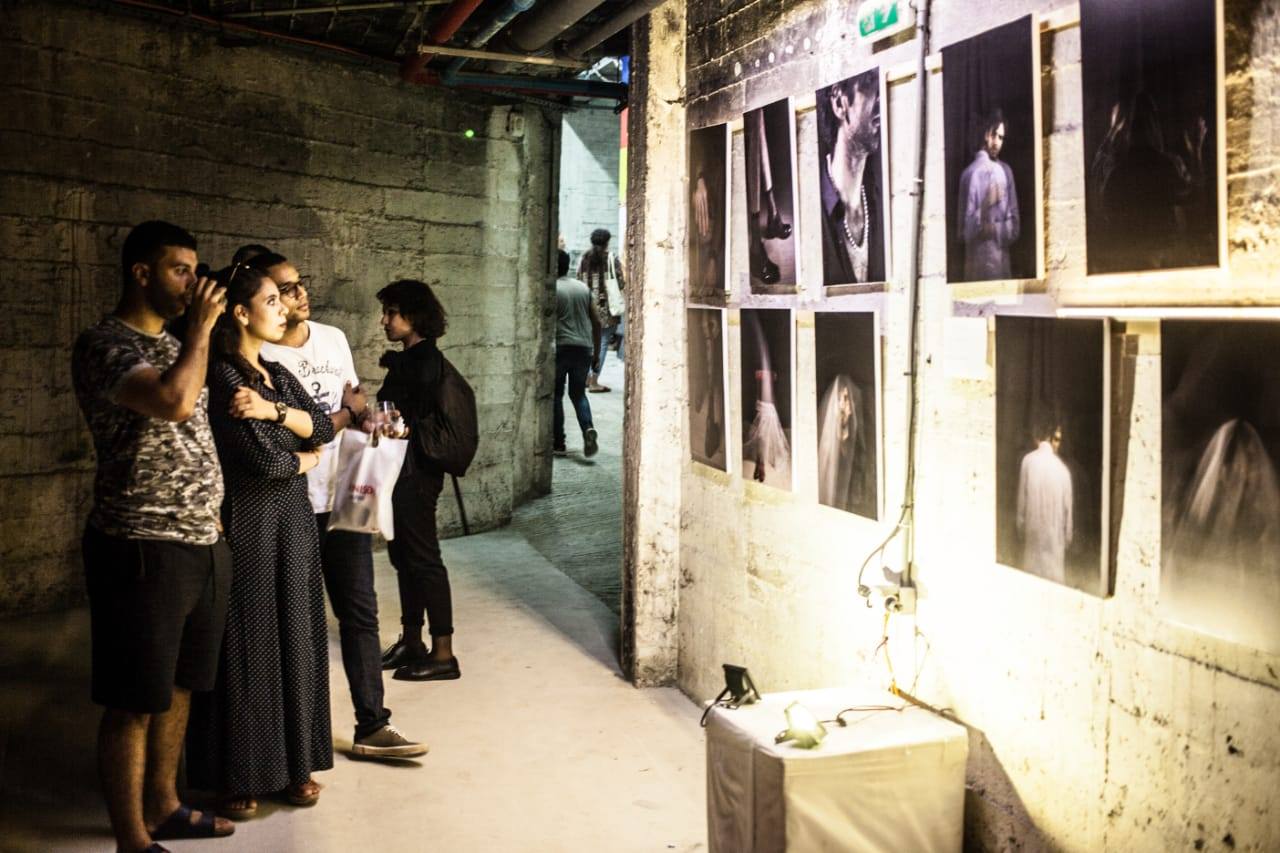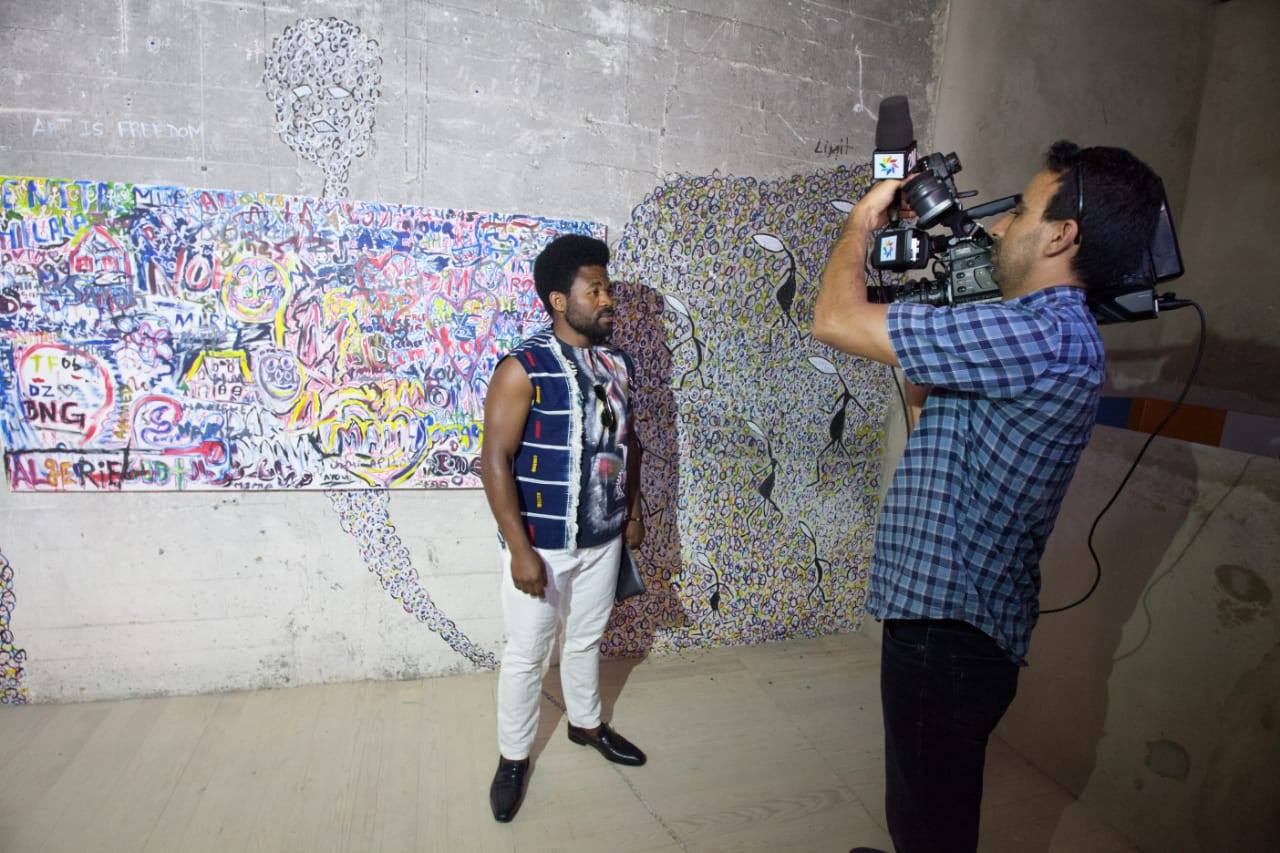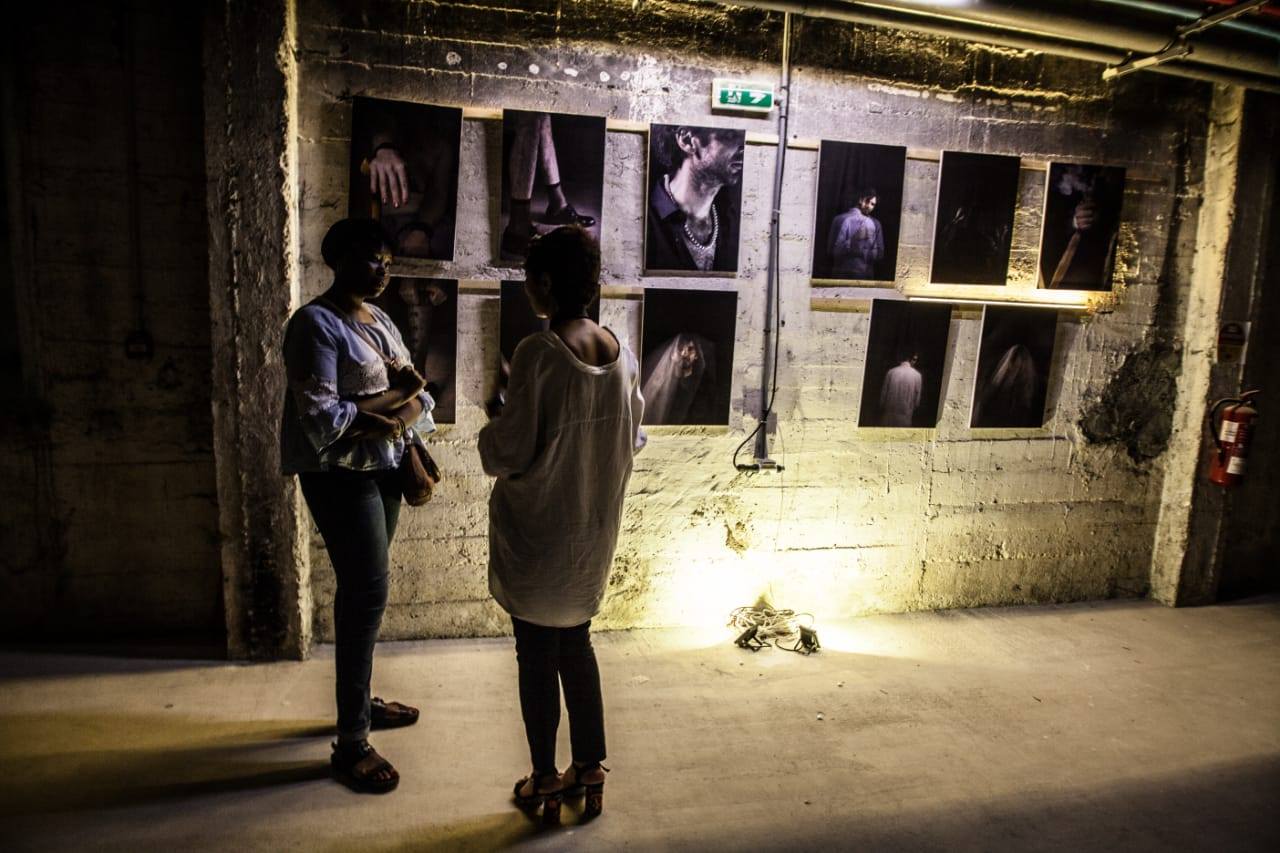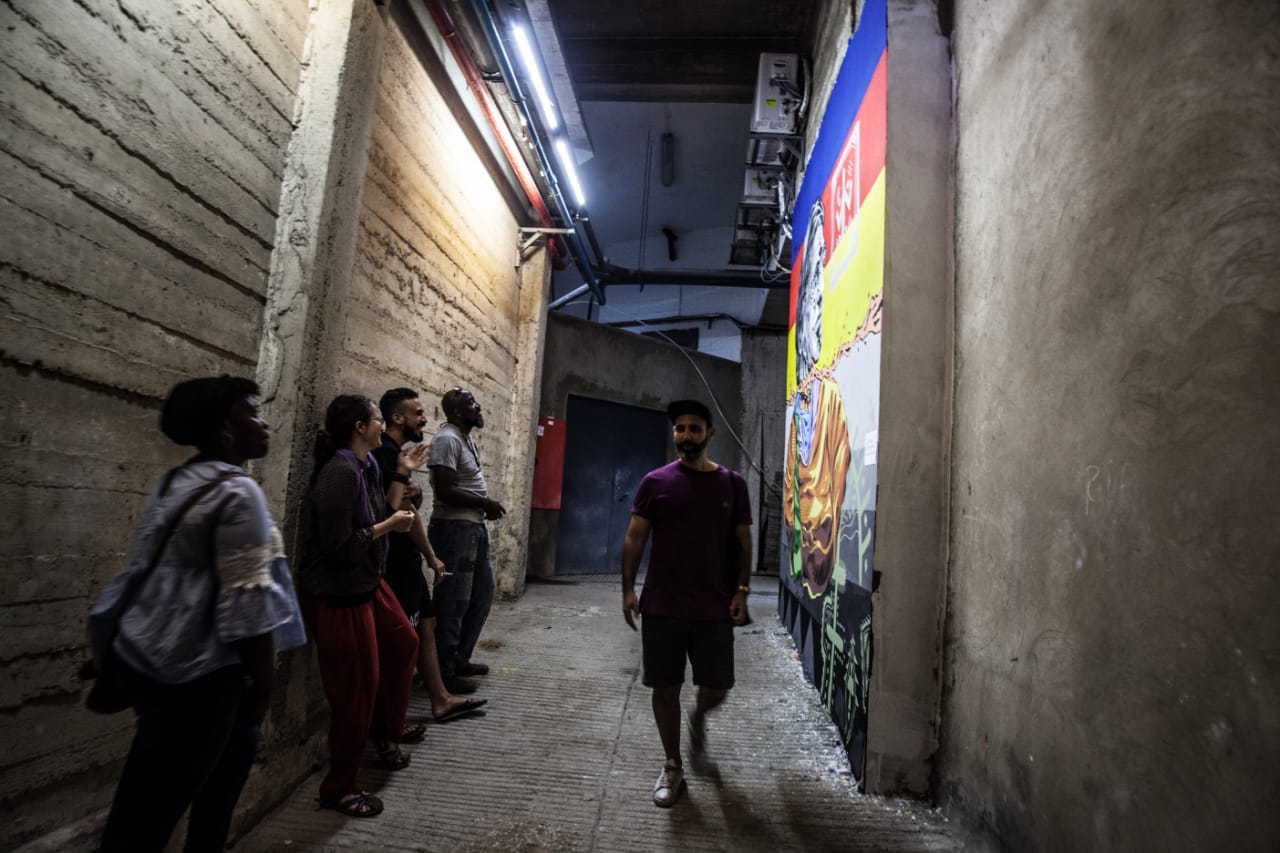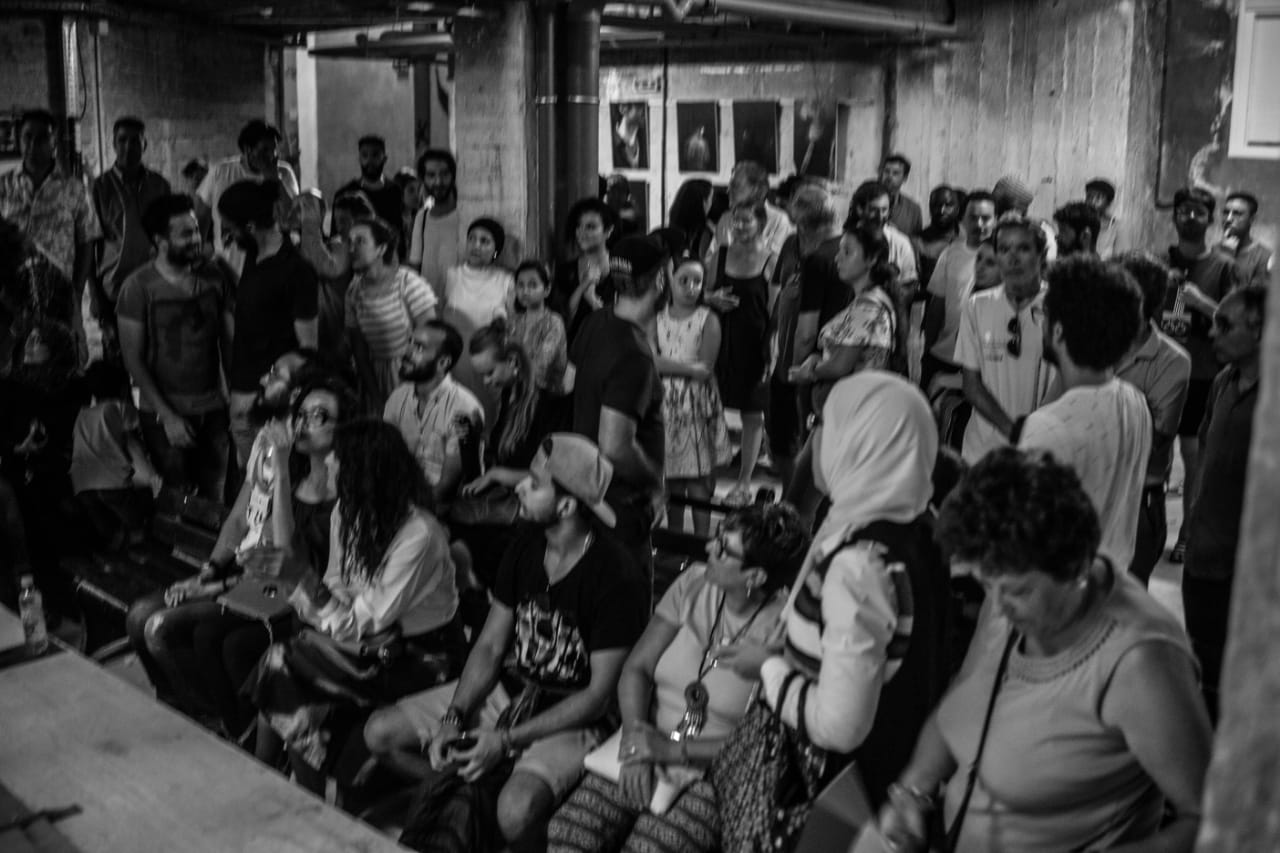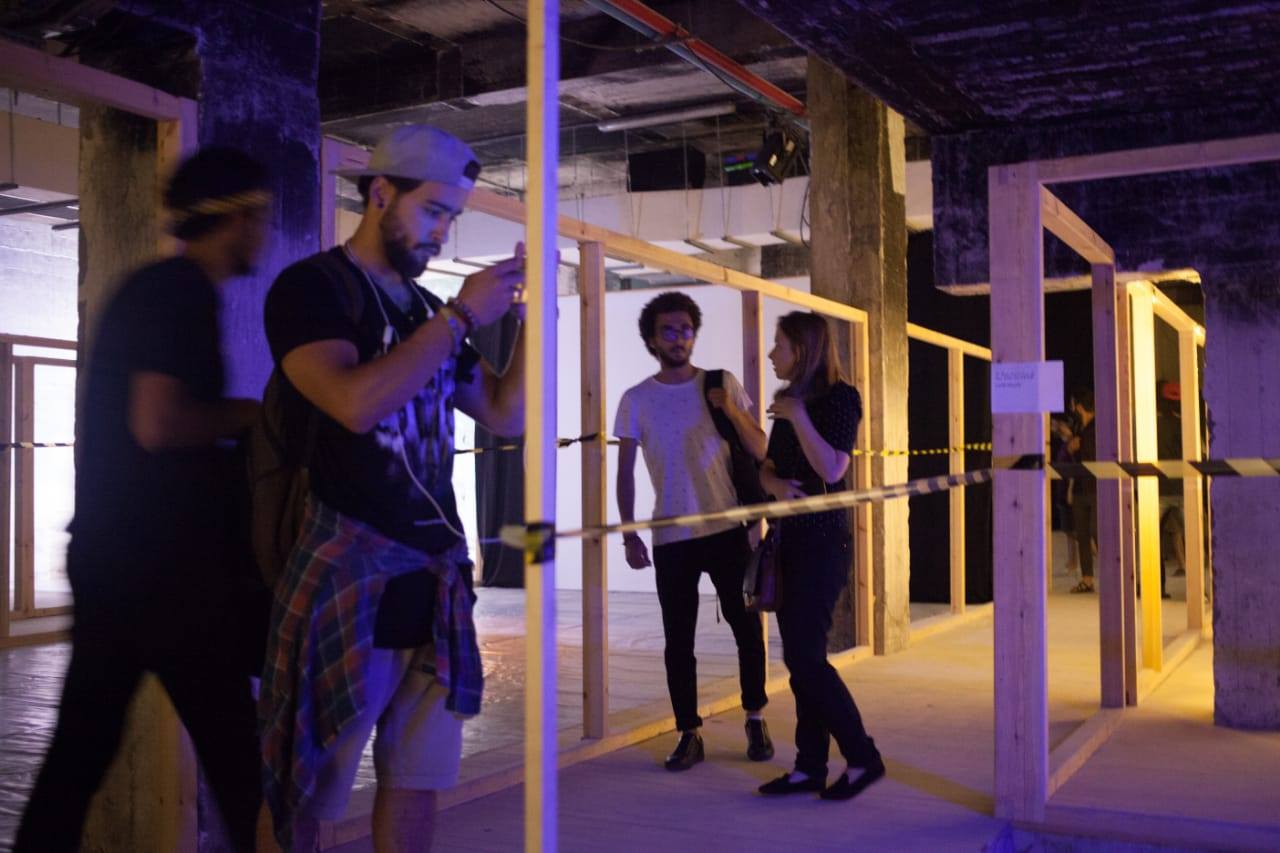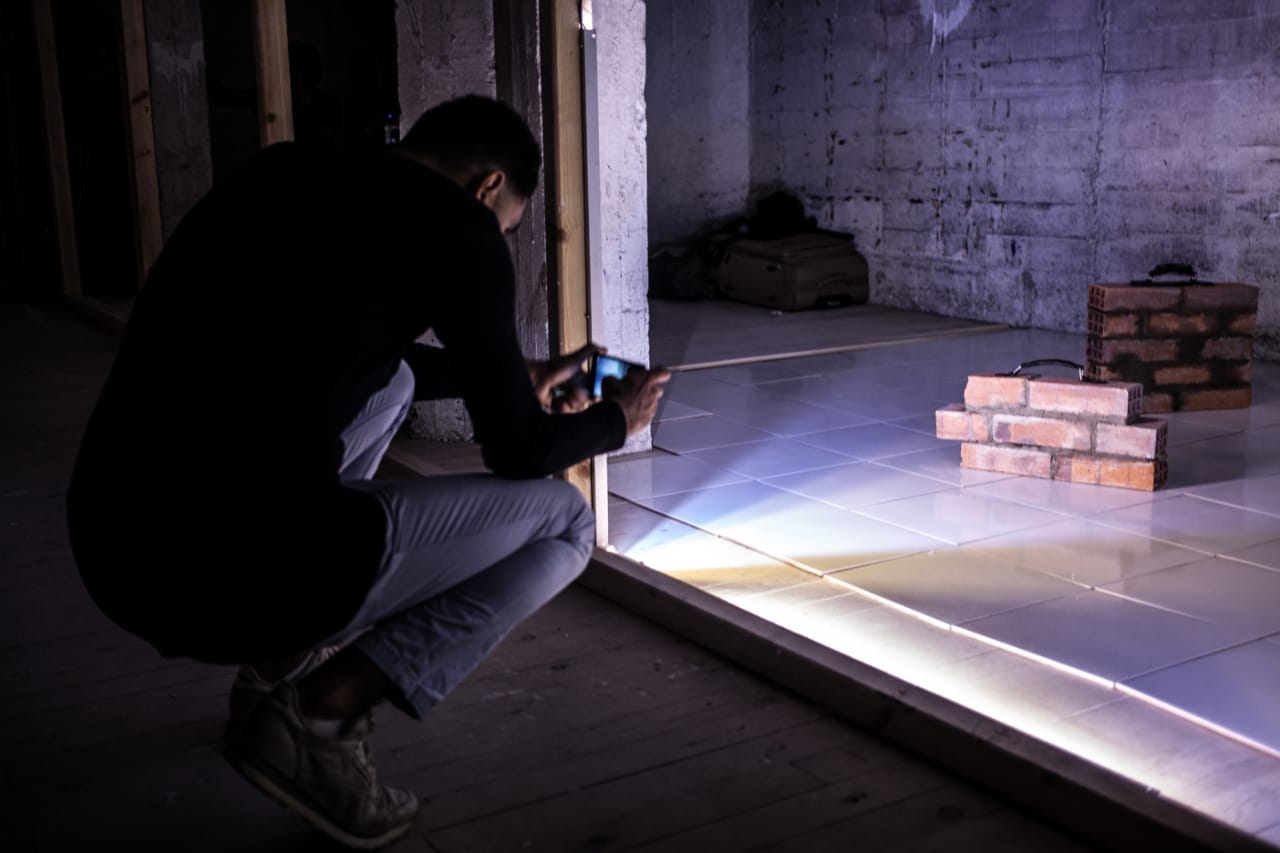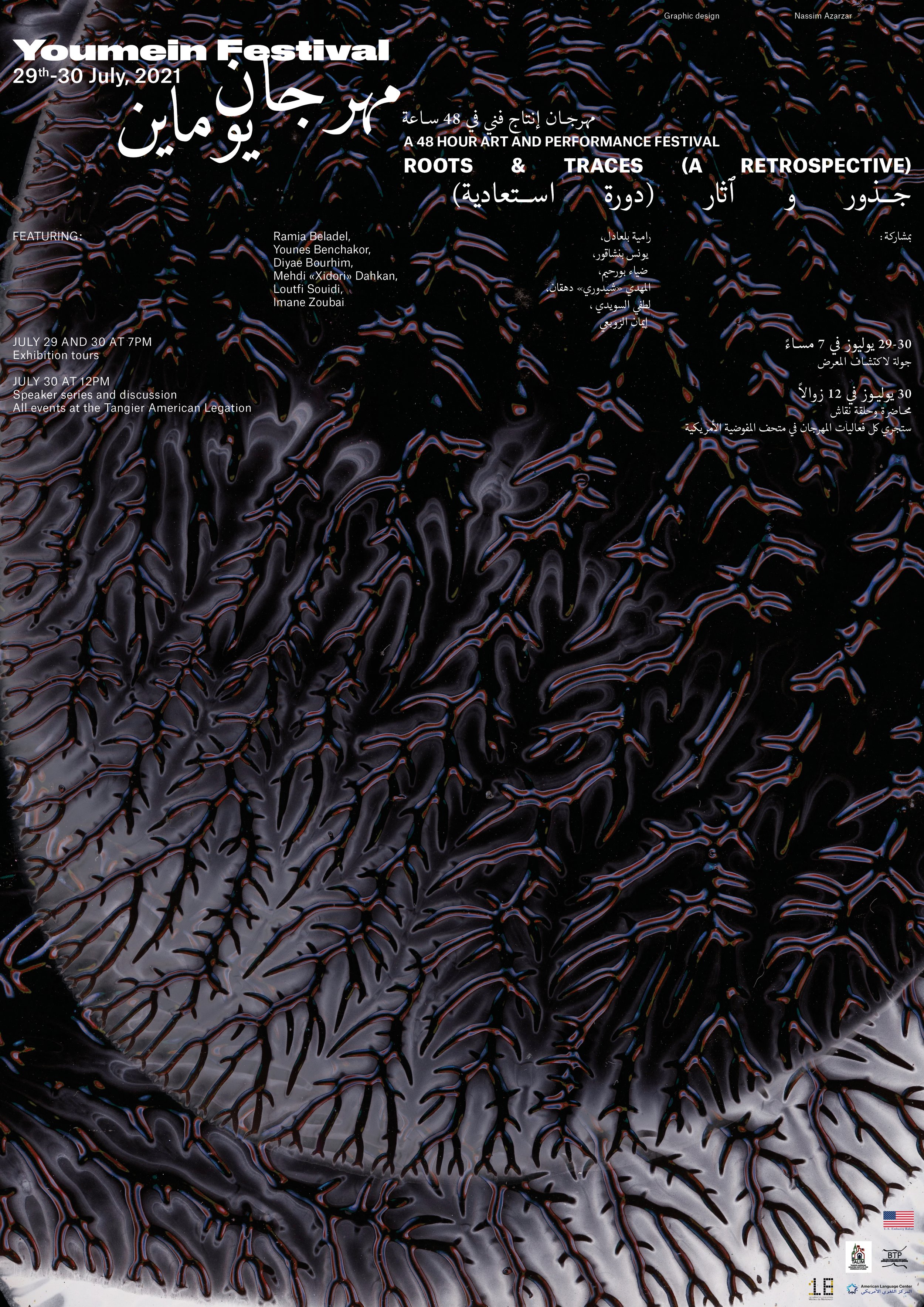the youmein festival
Youmein, which means two days in Arabic, is a festival that brings together a group of artists over the course of two days to develop diverse, new work centered on a common theme. Beginning with a series of workshops and panels and culminating with a presentation of wholly original pieces created over this 48-hour period, this event provides an outlet for contemporary artists new and old to develop and exhibit their craft. The proposed festival structure will gather a group of artists over the course of two days to develop new work in a variety of media centered on a common theme. Beginning with a series of public showings of “works in progress” with new Youmein artists and alumni of previous editions alongside panel discussions at locations around Tangier, and culminating with a presentation of wholly original pieces created over the course of a 48-hour period, this event proposes an alternative narrative of borderland culture of the Tangier public sphere.
The Youmein Festival is a project conceived by Zakaria Alilech, A. George Bajalia, and Tom Casserly. Since 2015, Youmein has teamed up with and been supported by:
The American Language Center - Tangier; The Tangier-American Legation Instituted for Moroccan Studies (TALIM); Darna Association; The Cinémathèque de Tanger; DabaTeatr; TechnoPark Tangier; Association Tanger Région Action Culturelle (ATRAC); The Embassy of the United States of America in Morocco; Think Tanger; Border Art Factory; LE 18; SHUBBAK FESTIVAL.
Since 2017, Technical Direction has been provided by Sergio Albert & Sonorama and Graphic Design by Nassim Azarzar.
You can follow the most up to date news about the Youmein Festival on Instagram (https://www.instagram.com/youmein_festival/)
poster by Ayoub al Jamal
August 25 - 27, 2015 edition 1: barzakh / limbo /برزخ
August 25 -27, 2015, Border Art Factory, Tangier, Morocco.
Limbo, is the state of “in between”—a realm of stasis and inaction, of waiting without the knowledge of what, if anything, the future will bring. It is inextricably tied to the creation of borders (geographic, political, cultural, metaphorical). In the Bible, Limbo is the state of waiting for the Judgment Day—one foot in Heaven, one foot in
Hell, and both feet not quite anywhere at all. Similarly, in Islamic eschatology, al-Barzakh is the separation between the physical and spiritual worlds, where a soul is freed from the body, but unable to utilize action—it is here where the soul waits, contemplates, and prepares for al-Qiyamah. But this state isn’t limited to the theoretical...the idea of al-Barzakh flows through life in North
Africa, from the simple act of staring across the Strait of Gibraltar to a nearby (but unreachable) Spain, to the more mundane (but all too real) bureaucracy in everyday life that threatens to
destroy citizens’ ability to take action, leaving them to await judgment that may or may not come.
Roundtable discussion at the Tangier-American Legation Institute for Moroccan Studies with A. George Bajalia and Dr. Emilio Spadola.
Participating Artists: Abdelmohcine Nakari
Abderrahim Benattabou
Bilal Touzani and Maï-Do Hamisultane Lahlou
Fatima Zohra Lahouitar and Othman Sellami
Hatim Essadek
Hicham Bouzid
Aurore Claverie and Youssoufa Mounchili (Voie des migrants)
Hosni Almoukhlis
Hugo Massa
Ramia Beladel
La Coja Dansa/ Raúl León
Zineb Benjelloun, Laila Hida
Ayoub El Jamal, Sonia Merazga, Mohammed Said Chair, Azad Farishtah
poster: Abdelmohcine Nakkari 2016
July 15 - 17, 2016 - Edition 2: Crisis / azma / الأزمة
Border Art Factory, Tangier, Morocco. The 21st century has been one of perpetual crisis. From food shortages and economic turmoil to failed states and governmental policies, crises have governed the frame through which the past 16 years have been narrated. In this iteration of the YOUMEIN CREATIVE MEDIA FESTIVAL, we invite artists to reflect on the origins of this term, and its uses across different languages and cultures. The Romance genealogy of “crisis” comes from the Greek krisis, or decision. A krisis could come at the end of a judicial trial, the consequence of juridical deliberation, or could come at a turning point in a disease, when the future is determined for better or for worse. In Arabic, ازمة) azma) denotes a similar meaning today, but comes out of the root for to aggravate or to make decisive or critical. In newspapers and in scholarship, these terms may be used interchangeably as translations for one another, but here we challenge our collaborators to think about the space that exists between these translations, as well as their overlap.
2016 Roundtable:
George Bajalia, Hicham Bouzid, Driss Ksikes on the theme of Azma / Crisis
Marie Gaidioz
Lena Krause
Wesal Yousef
Adil Kourkouni
Said Elhaddaji
Abderrahim Benattabou
Flore Grassiot, Ismaîl Assalih, Pierre Marchand
Mohammed Kannan
Moad Mzaoeg
Yussef Zaoui, Marwan Youssefi
Noussayba Lahlou
Omar Chennafi
photos: Omar Chennafi , 2016
graphic design: Nassim Azarzar
July 27 - 29, 2017 - Edition 3: Imitation / Taqlid / تقليد
DabaTek Space, Technopark Tangier, Morocco. How do cultures change? Is a society made up of endless imitations that become canonized as tradition? Or do traditions change through borrowing from other cultures and societies? From the reiteration of
simple zilij patterns which come together to form a more complex whole, to the inventive riffing on established forms in slam poetry and contemporary dance, imitation is often at the root of the most
creative acts. In North and West Africa, Sufi scholars have long emphasized the memorization and imitation as the techniques of body which lead to an enlightened mind. In the late 19th century, French
sociologist Gabriel Tarde proposed imitation, invention, and interference as the three principles which form the basis of cultural change. Rather than searching for an origin, or an authentic kernel from which these imitations draw, how do these processes of borrowing and imitating become new cultural forms?
Is imitation simply blind appropriation, or does it form the basis of new traditions? North Africa, as both border and bridge between Africa and Europe, is home to a multitude of cultures which draw from one
another, and from those across both continents. In this iteration of the YOUMEIN CREATIVE MEDIA FESTIVAL, we invite artists to reflect on “imitation” across languages, cultures, and borders in North and West Africa.
2017 Participating Artists:
Adam Raougui
Ahmed Benattia Melgarejo, Nadia el Kastawi, Carlos Alcántara
Mehdi Djelil
Maya Benchikh el Fergoun
Nina Cholet, Boris Carré
M'hammed Kilito
Lena Krause & Ramia Beladel *Alumni collaboration project
Lotfi Souidi
Nassim Azarzar
Oussama Tabti
2017 Roundtable:
George Bajalia, Nouha Ben Yebdri, Carlos Perez Marin on the theme of Imitation/Tradition // Taqlid/Taqalid :
AUDIO LINK: http://legation.ipower.com/blog/?p=1428
August 2 - 4, 2018 - Edition 4: Limits /Al-Hadd/الحدّ
DabaTek Space, Technopark Tangier, Morocco.
What does it mean to set a limit? To reach a limit? To be (un)limited? How do we set limits, and when is acceptable to push the limit? Approaching a threshold, whether spatial (city limits/territorial boundaries), mathematical (asymptotic limits), or cultural (taboos/censorship), can fundamentally change the nature of previously limited subjects. And in liminal spaces, a seemingly unbridgeable boundary separating two places can suddenly take on a more flexible form. How do limits, either self-imposed or enforced by others, restrict progress? How do they encourage it? How are limits expressed in art, and how do limits define the boundaries of an artistic community or
public? Is art defined by the thresholds between types of media, disciplines, or practices? Do those
limits inhibit creative production and collaboration? Or does art benefit from restriction?
In this iteration of the Youmein Creative Media Festival, with its own built-in limits (time, space, theme), We invite artists to reflect on this theme in order to interrogate these limits and the limits of their own artistic practices. As always, the Youmein Festival encourages submissions for multi-disciplinary collaboration, as well as solo projects and proposals for new collaborations with other festival artists.
Participating Artists:
Youmein Kids Workshop (first edition): Nassim Azarzar, Abderrahim Benattabou (with Zanka 90), Romaine Prunières, Lena Krause, Sara Mediouni
2018 Roundtable: Laila Hida, Myriam Amroun, A. George Bajalia on the subject of limits socially, geographically, culturally, and between the art world and its publics.
Audio Link for podcast with Myriam Amroun, Laila Hida, and George Bajalia: http://legation.ipower.com/blog/?p=1859
Special podcast with Firas Hamdan and George Bajalia: https://player.fm/series/1575461/218144051
poster: Nassim Azarzar (shortlisted for Best Arabic Poster, 2018)
photos: Youssef Mounchili (www.facebook.com/voiedesmigrants)
2019 - Desire / لرغبة
Recap Video from Youmein 2019.
2019 artists
Fayçal Balattar
Khalid El Bastrioui
Sofiane Byari
Nina Cholet & Clothilde Matta
Haneen Dajani & Noura al Khasawneh
Soukaina Habiballah
Nasrine Kheltent & Vanesa Moreno
Hugo Massa
Hanne Van Dyck & Abdellah M Hassak
Yazan El Zubi
Imane Zoubai
DOCUMENTATION: Loutfi Souidi
Technical Direction: Sergio Albert & Sonorama
Graphic Design Nassim Azarzar
Youmein 2021: Roots and Traces (a retrospective)
Youmein 2021: Roots and Traces began with a preview at Marrakech's multidisciplinary cultural space LE 18, Derb el Ferrane on July 14th, as part of FADAA's "When the World Closed" program at the Shubbak Festival. With artist talks, visual and installation art in progress, and performances, this preview offers an inside look at the plurality of work and processes that will be showcased later in July in Tangier, Morocco. Building on the relationships developed between artists during Youmein Festival editions and the community surrounding LE 18, this program embraces the chance to stop and reflect on the work and role of contemporary art and performance in Morocco yesterday, today, and tomorrow.
2 weeks later, at the Tangier-American Legation Institute for Moroccan Studies, the 6th edition of the Youmein Festival made space for us to look back on our first five years, while moving toward the future. Artists who have participated in previous editions of Youmein will join us this year to take another look at the work they developed during past festivals and ask: What has changed? What has stayed the same? What does it mean to revisit this project in 2021? These artists will excavate the traces of previous festival themes and rework them to share anew in the context of this retrospective-in-development, in critical dialogue with the Bicentennial collection of the Tangier-American Legation and selected works by previous Youmein Creative Media Festival participants.
From questions of diversity and difference to the roots of present debates around representation, responsibility, and justice, Youmein 2021: Roots and Traces is an open-ended artistic inquiry into how the structures of our past have shaped our current moment. The traces of this past appear in unexpected places, both institutionally and in the social milieu from which we develop artistic reflections. Uncomfortable inequities and realities sit adjacent to the rise of powerful populist and progressive movements worldwide. Since Youmein began in 2014, xenophobia, isolationism, and neo-imperialism have grown simultaneously with new forms of solidarities and ways of being in-common. How will these movements leave their traces in our shifting social orders, and how will they transform, sediment, and root themselves differently? So far, each edition of the Youmein Festival has taken on themes speaking to Tangier as a space of both border and bridge: al-barzakh, crisis, imitation, limit(s), and desire. This year, those themes become the fertile ground on which we will reconvene and dig deep into what has come before and make choices about where we want to go next. After a year of isolated reflections, and alongside the Bicentennial of the Tangier-American Legation, Youmein will invite the artists, speakers, and the public to critically reflect on the view from Tangier, and the cultures, peoples, and conditions which compose it.
Featuring: Newly revisited works by Said El Haddaji, Imane Zoubai, Diyae Bourhim, Lotfi Souidi, Ramia Beladel, CHADDORI, Younes Benchakour and selected presented works by other previous participants in the Youmein Festival.
Speakers: Aida Alami: Journalist; Documentary Maker // A. George Bajalia: Co-founder, Youmein Festival; Assistant Professor of Anthropology, Wesleyan University
Graphic Design Nassim Azarzar
Youmein 2022: Rumor / شائعة
A rumor, much like a seed, grows shoots and roots far beyond its initial point of conception. What is said and done in private can very quickly become grounds for far-reaching public movements and the seeds that a rumor plants can foment suspicion, desire, outrage, fear and envy equally. Seemingly banal, the game of “Telephone,” where one message changes in formand content as it is passed along a chain of receivers, has also been known with pejorativenames in English such as “Chinese Whispers,” “Russian Scandal,” and “téléphone arabe” in French. What is contained in these names, and why does the assumption of faulty information associate itself with foreignness?
In an era of accusation, disinformation, conspiracy, and secrecy, rumors sit at the center of many of present day social and political affairs. Across social media, digital news, and television hours are spent daily debating the veracity of rumors even as more rumors rapidly circulate through the same social media feeds, news headlines, and talking heads that elevated the rumor to begin with. If a matter or event is trending, it automatically becomes grounds for public discussion regardless of how truthful it is or from whence it emerged. At the border between fact and fiction, Rumors beget rumors, which in turn beget social facts. Words whispered into existence become rallying cries and propaganda becomes news. From the mythology and literary and cinematic canon of Tangier as a city of (often Euro-American) vagrants and spies to the present-day culture of gossip that fills coffee shops and salons, rumors are central to the social and cultural life of this city at the intersection of flows of people and information from all sides. Tangier, in the iconic genre of Euro-Americancinema posters featuring the city, came to stand in as a place where, so they say, anythingcould happen. Closer to the present-day, the rumors of borders opening, or not, restaurantsopening, or not, and curfews coming down, or not, have also appeared persistently throughout the past 2 years of life in the Covid-19 pandemic. But do these rumors orient our perception of Tangier toward a field of possibilities, of what may be possible? Or, does the ambiguous and anonymous nature of rumors inevitably lead to accusation, demonization, and misinformation?
Rumors can feed into mobs as much as they can mobilize revolutionary zeal against institutional cultures of secrecy. Today, it seems very difficult to sort out fact from fiction and rumors sit right in the middle of that blurry line. Perhaps they have always done so.
In the 7th edition of the Youmein Creative Media Festival, artists were invited to reflect on rumors,the modes and codes of their transmission, and these slippery signifiers that take on meaning and import far beyond their initial conception.
Technical Direction Sergio Albert & Sonorama
Graphic Design Nassim Azarzar

